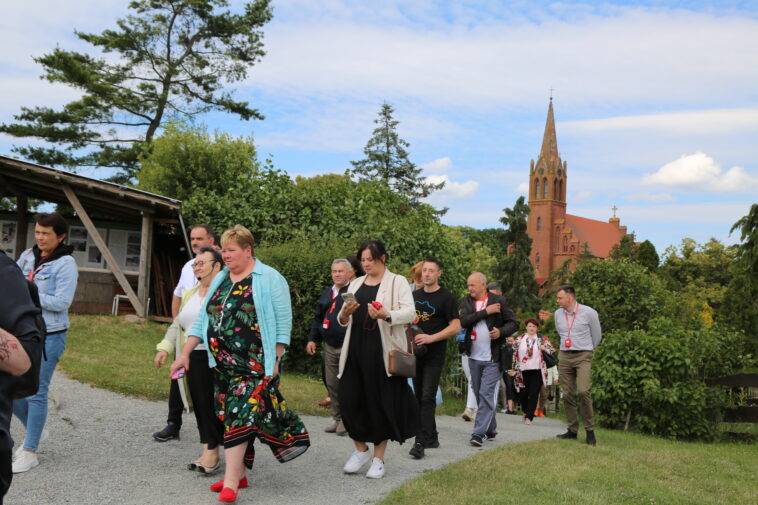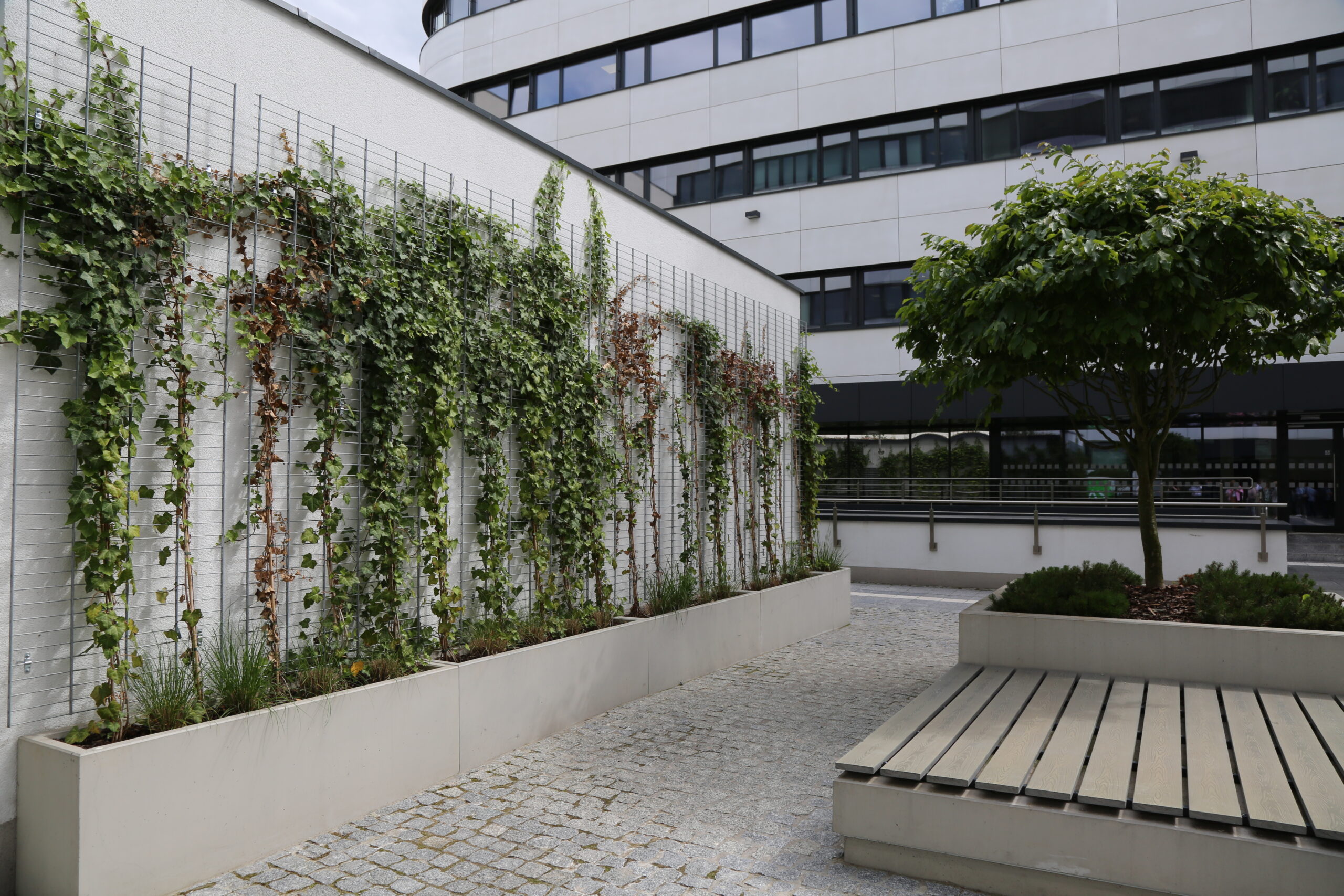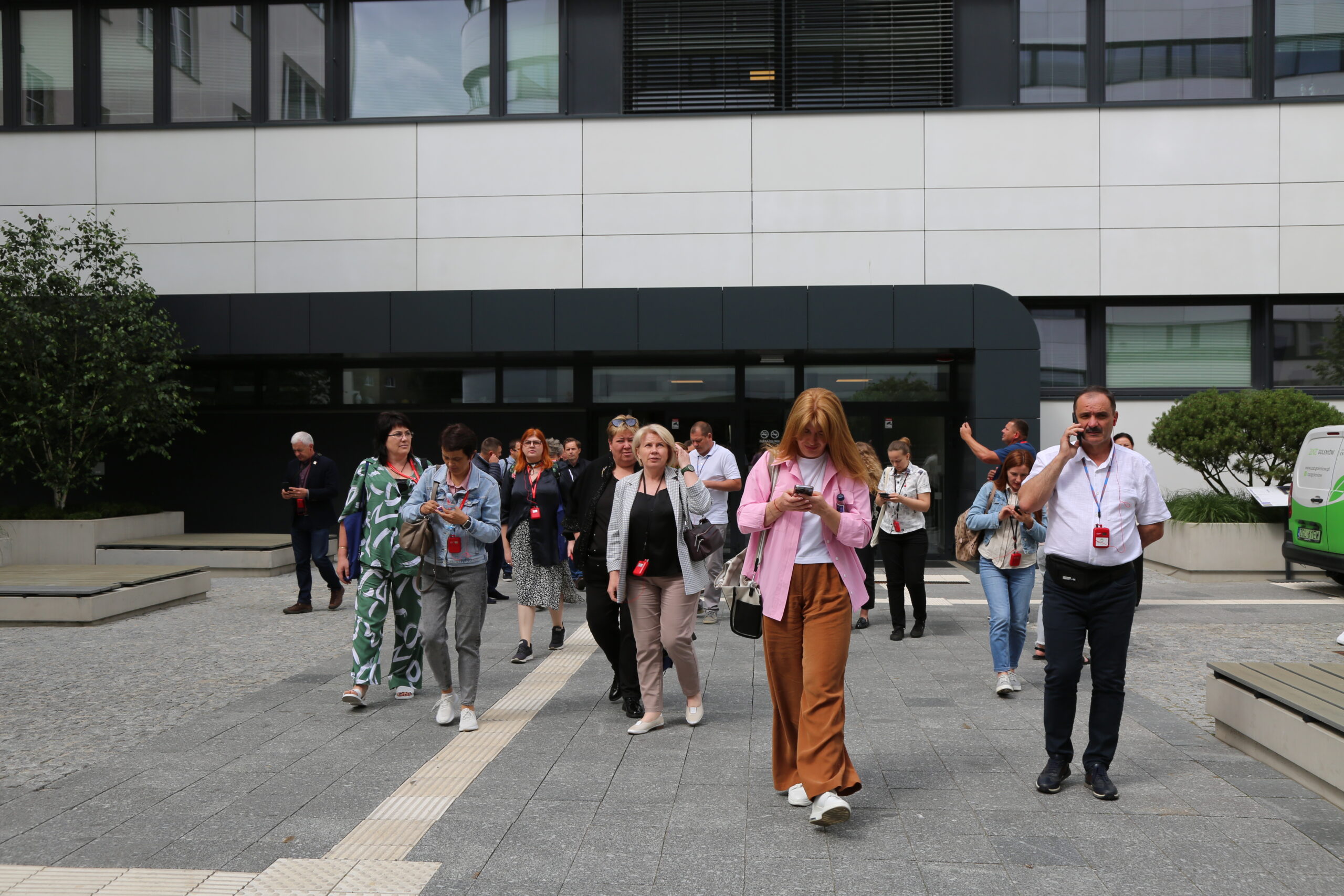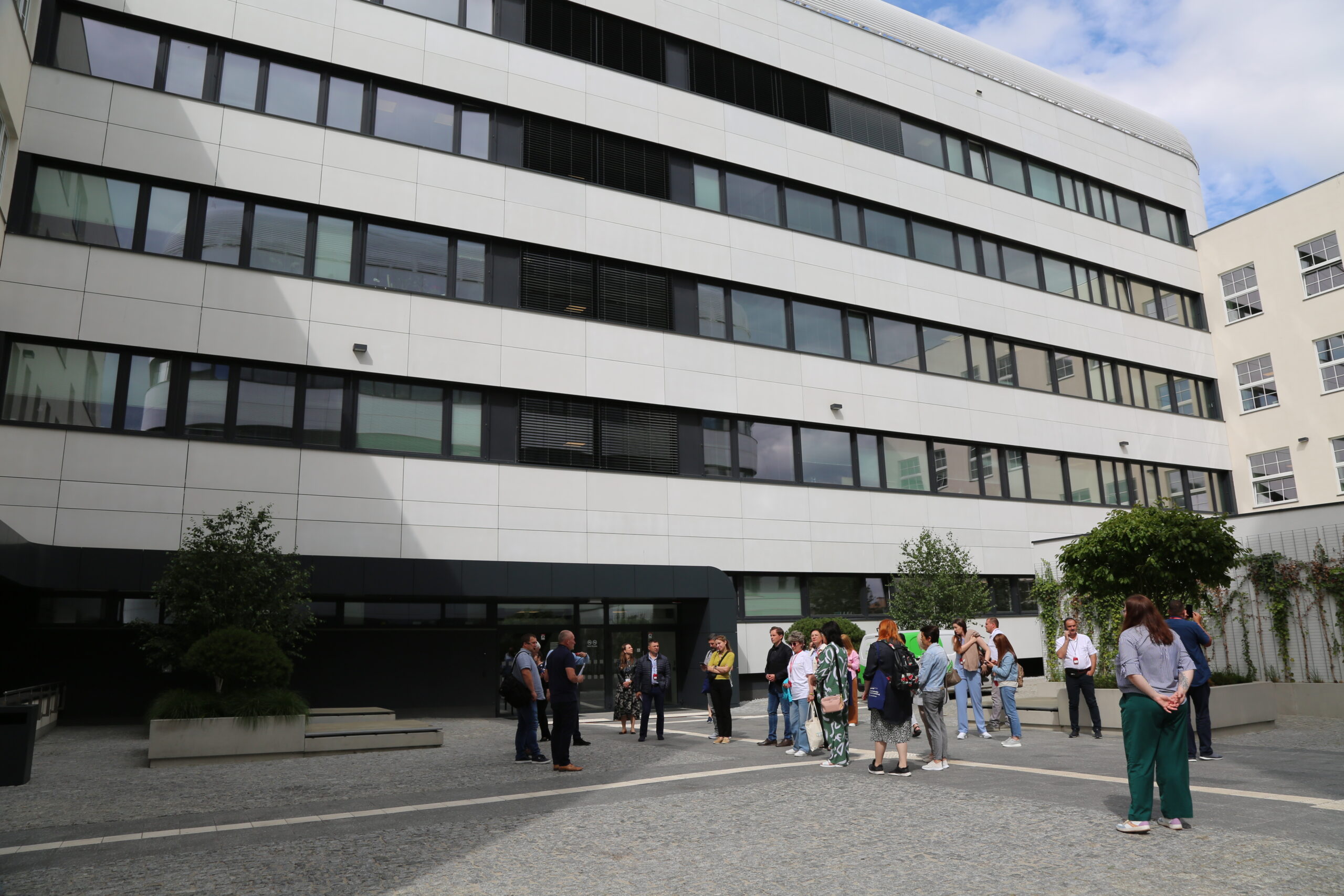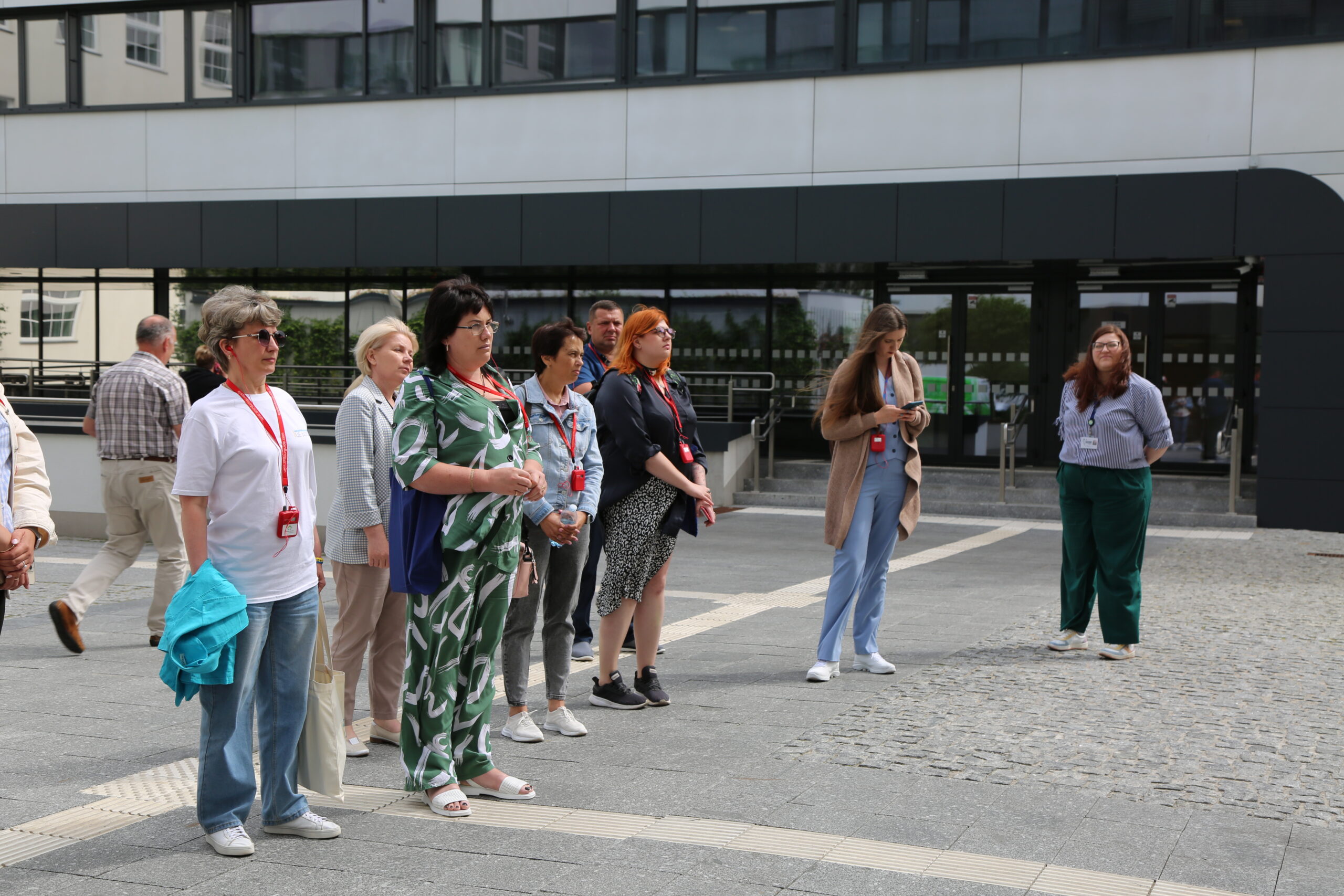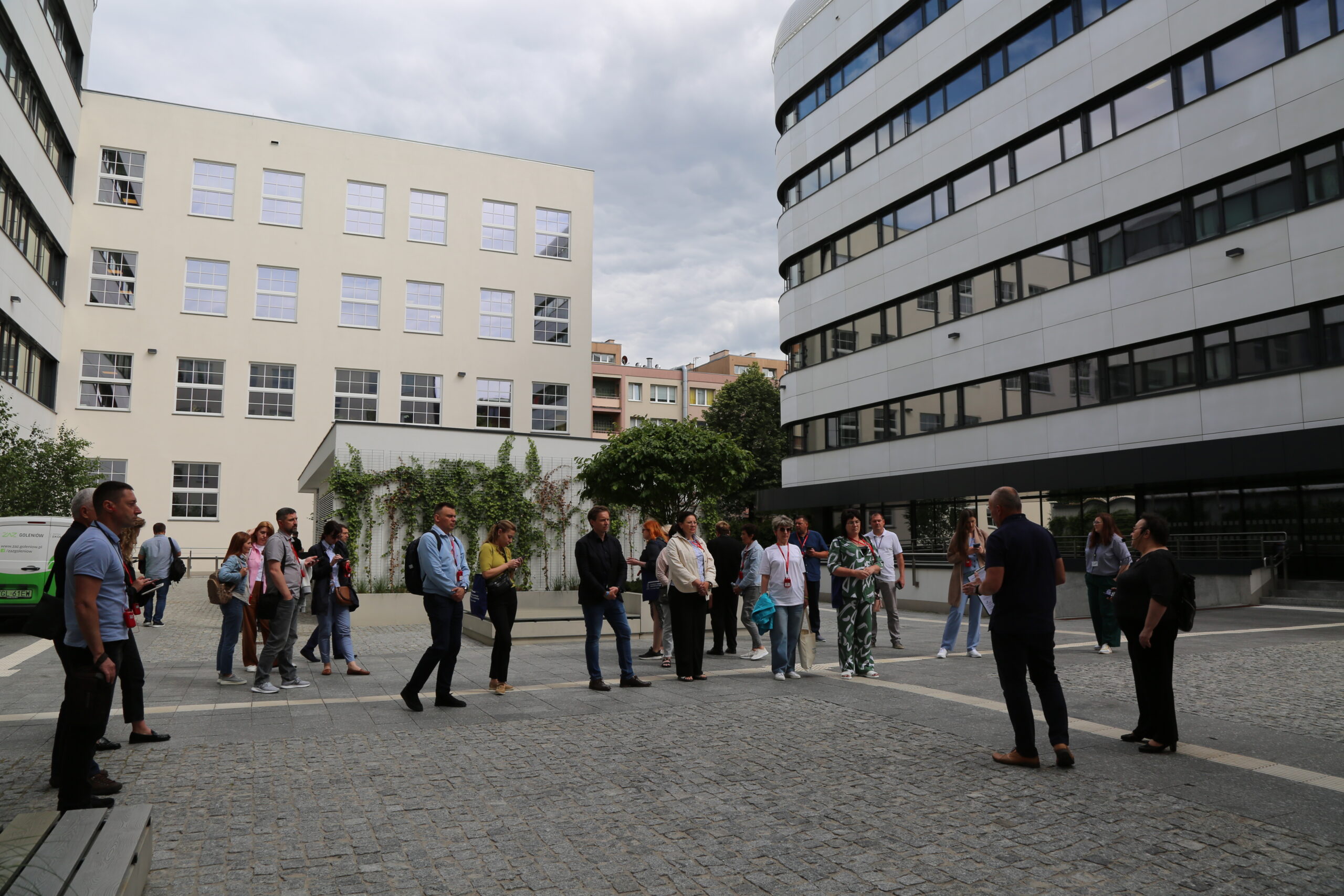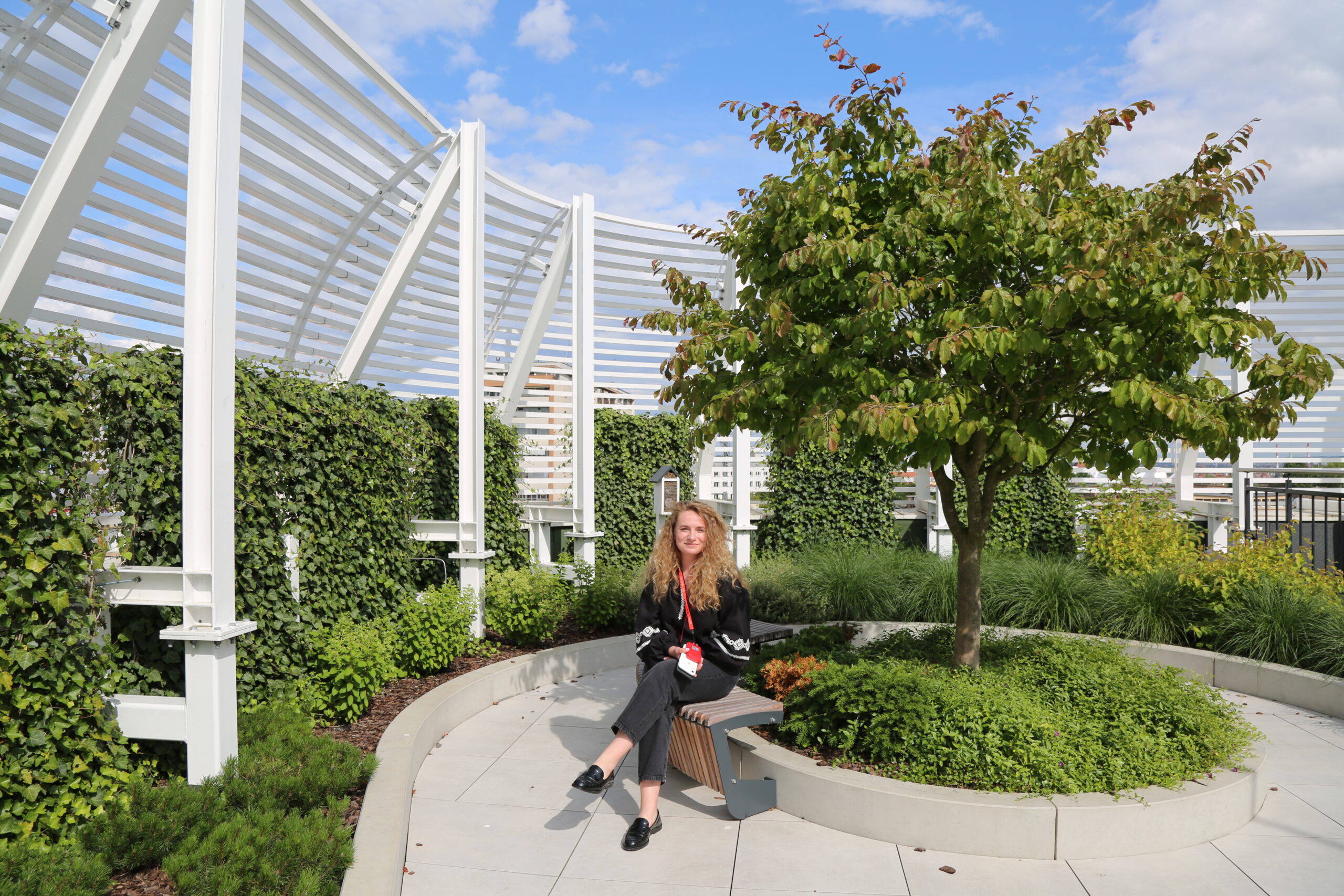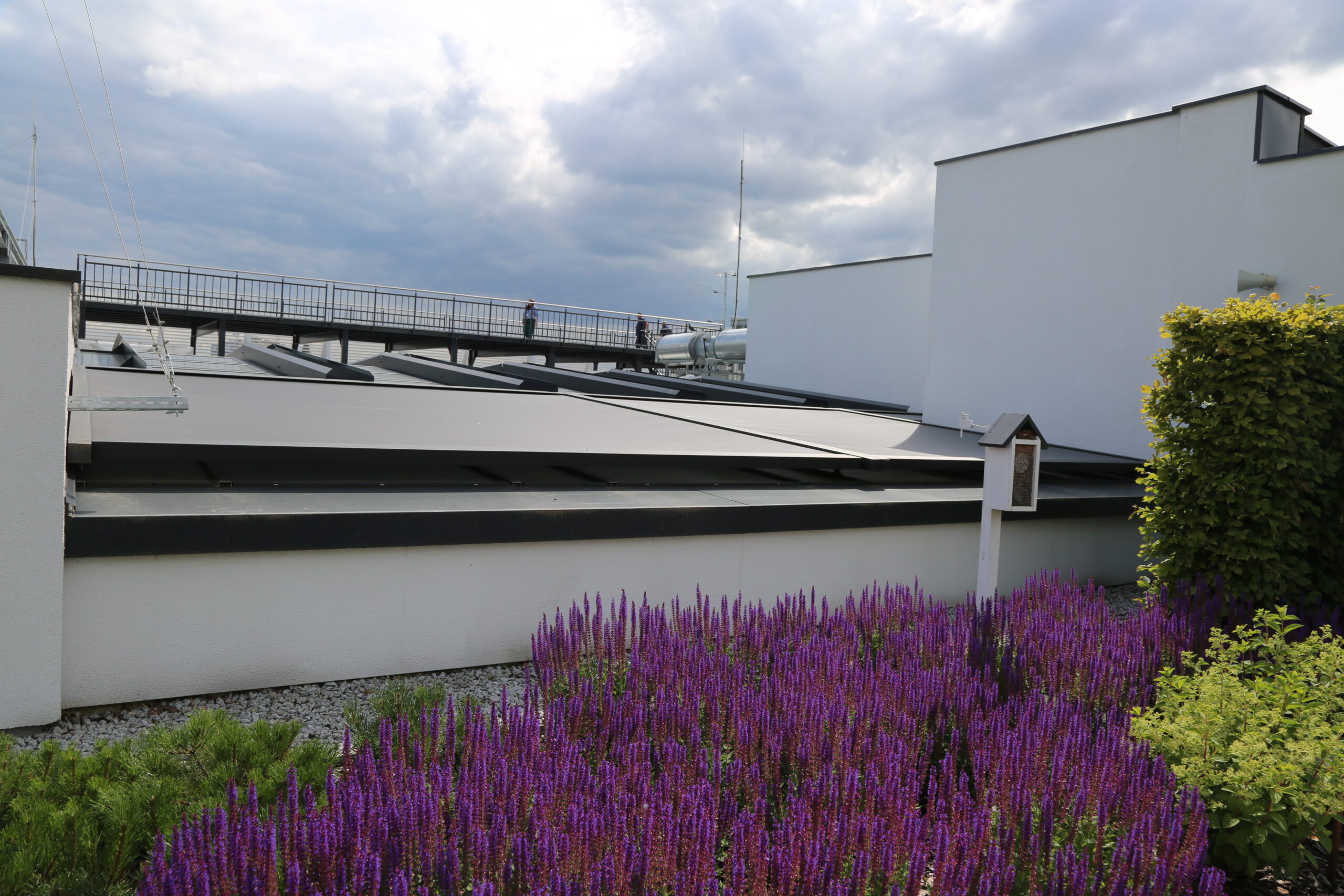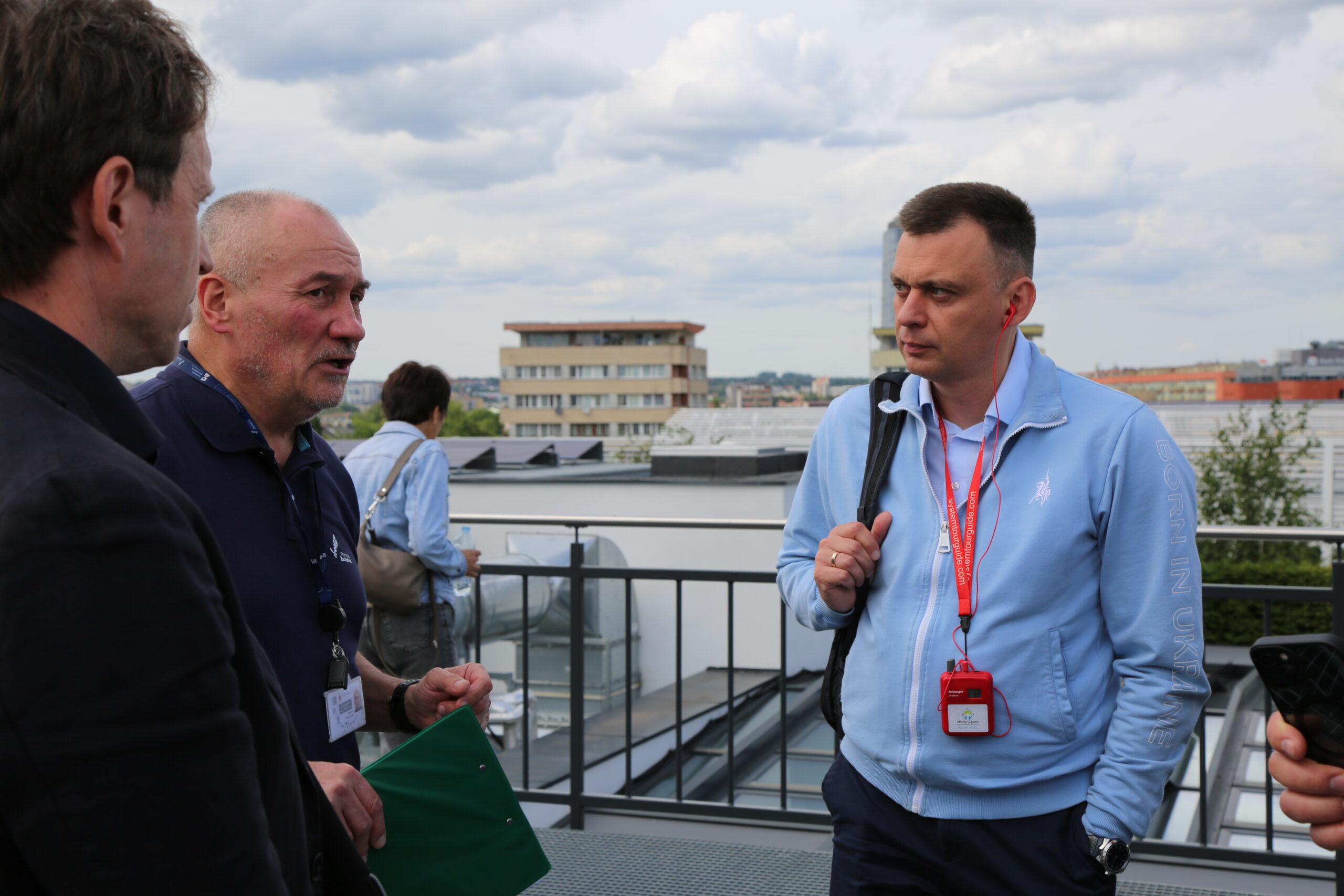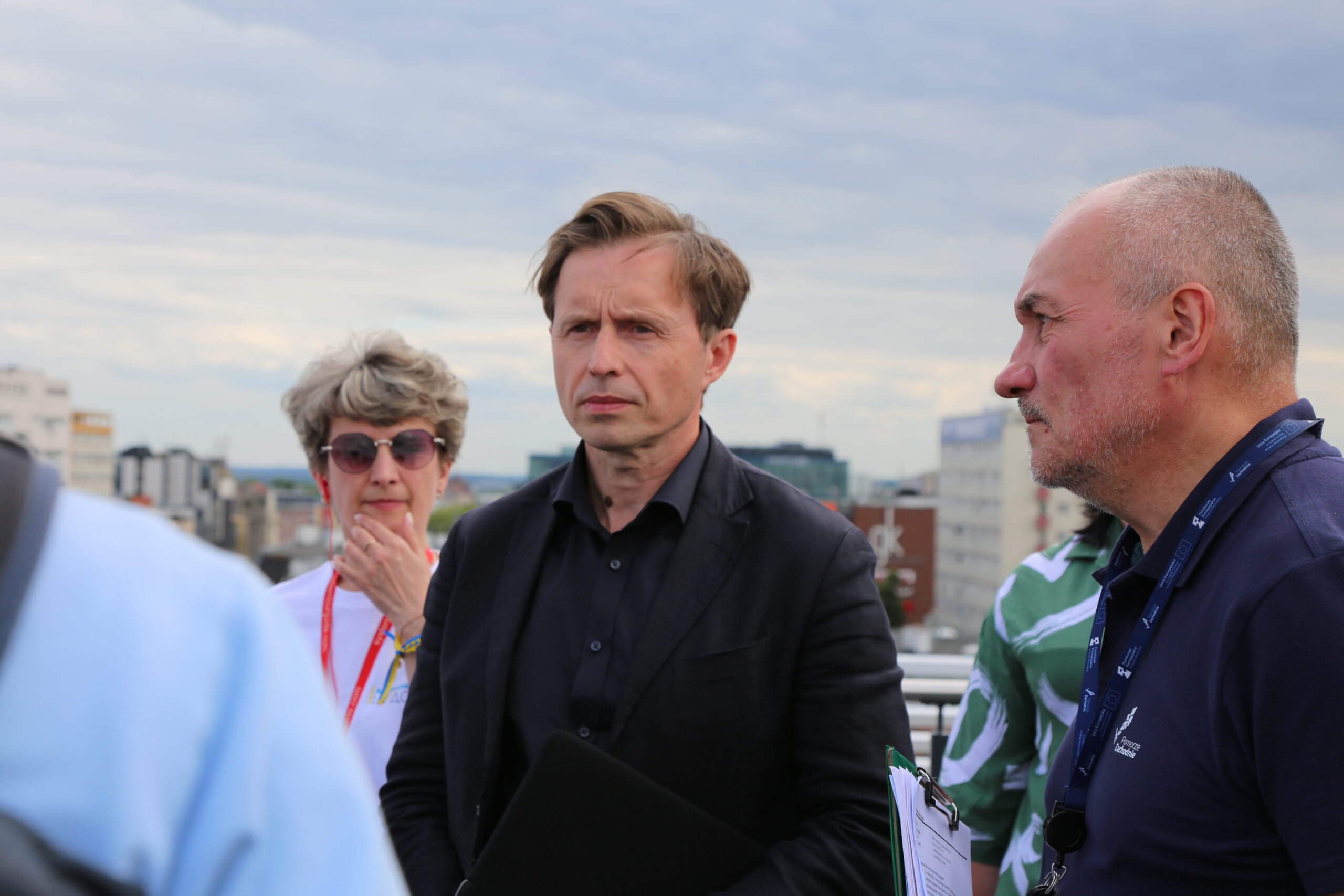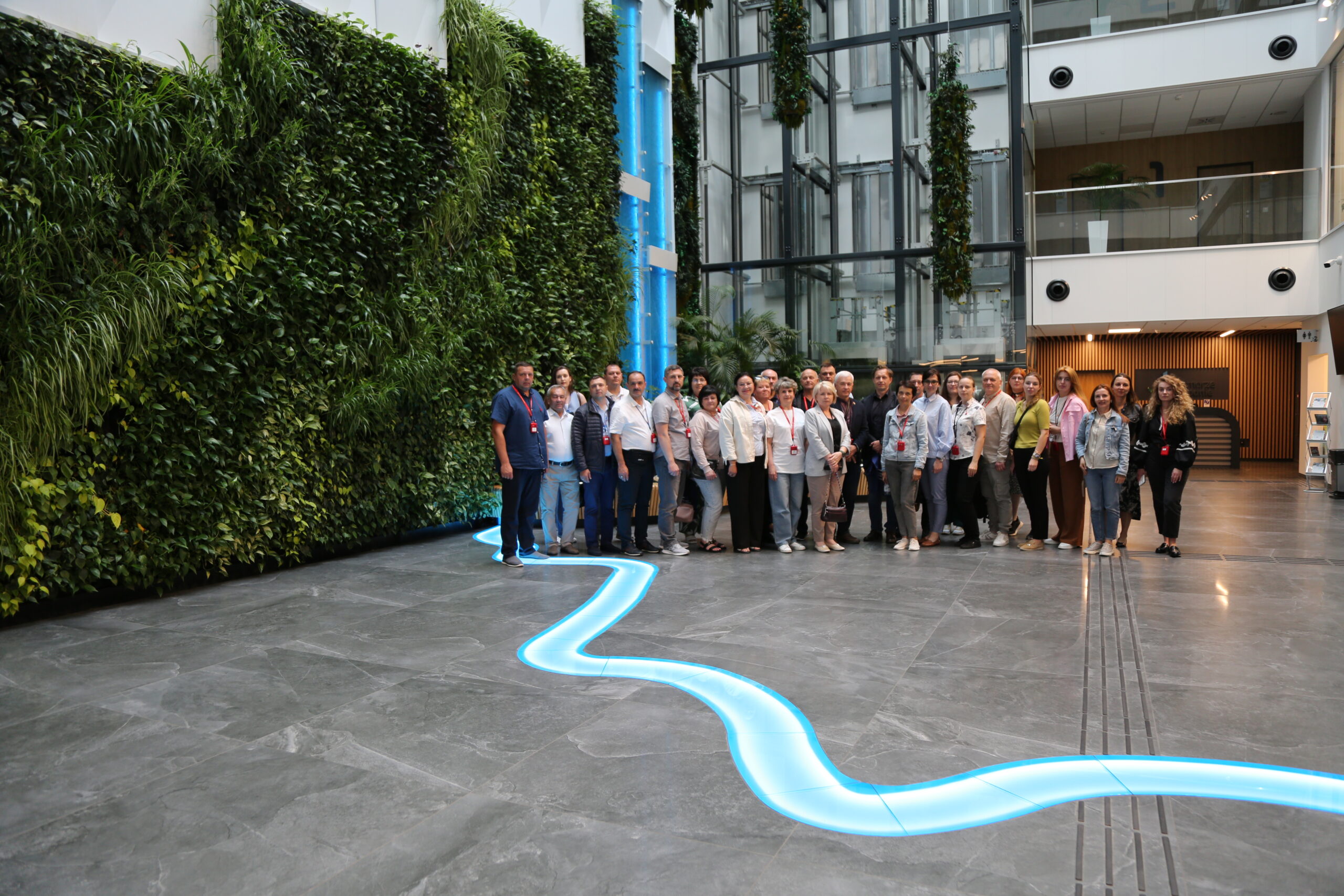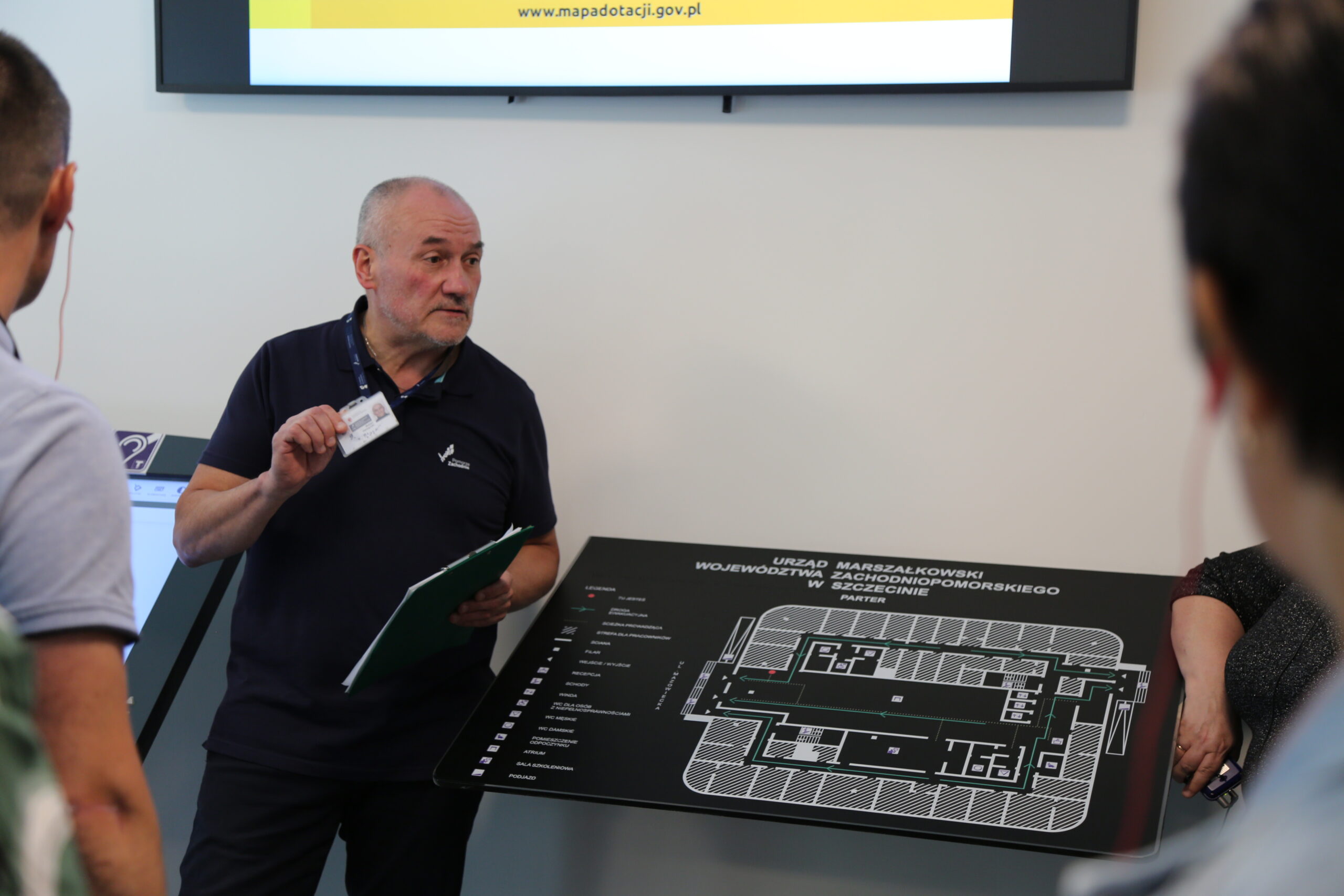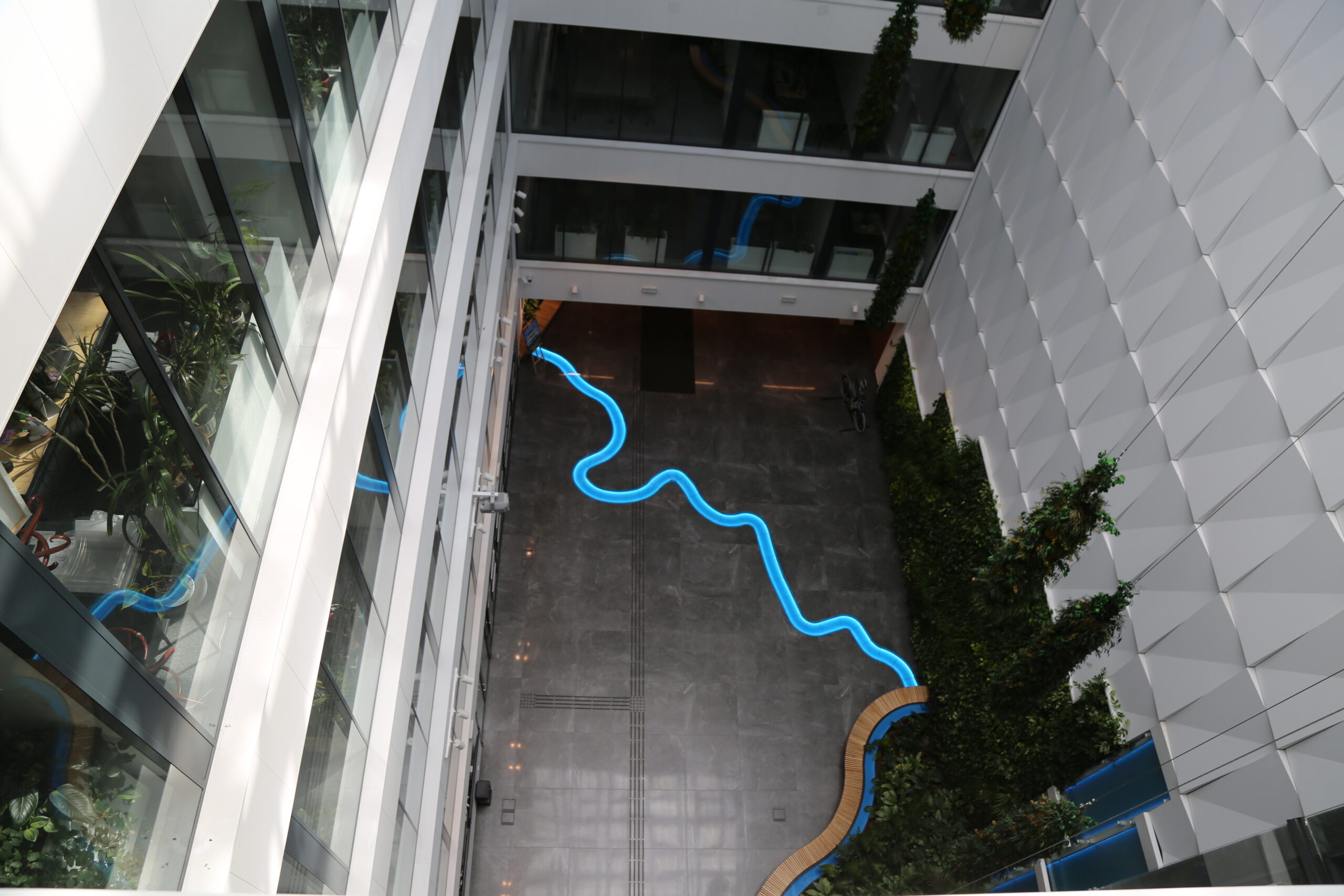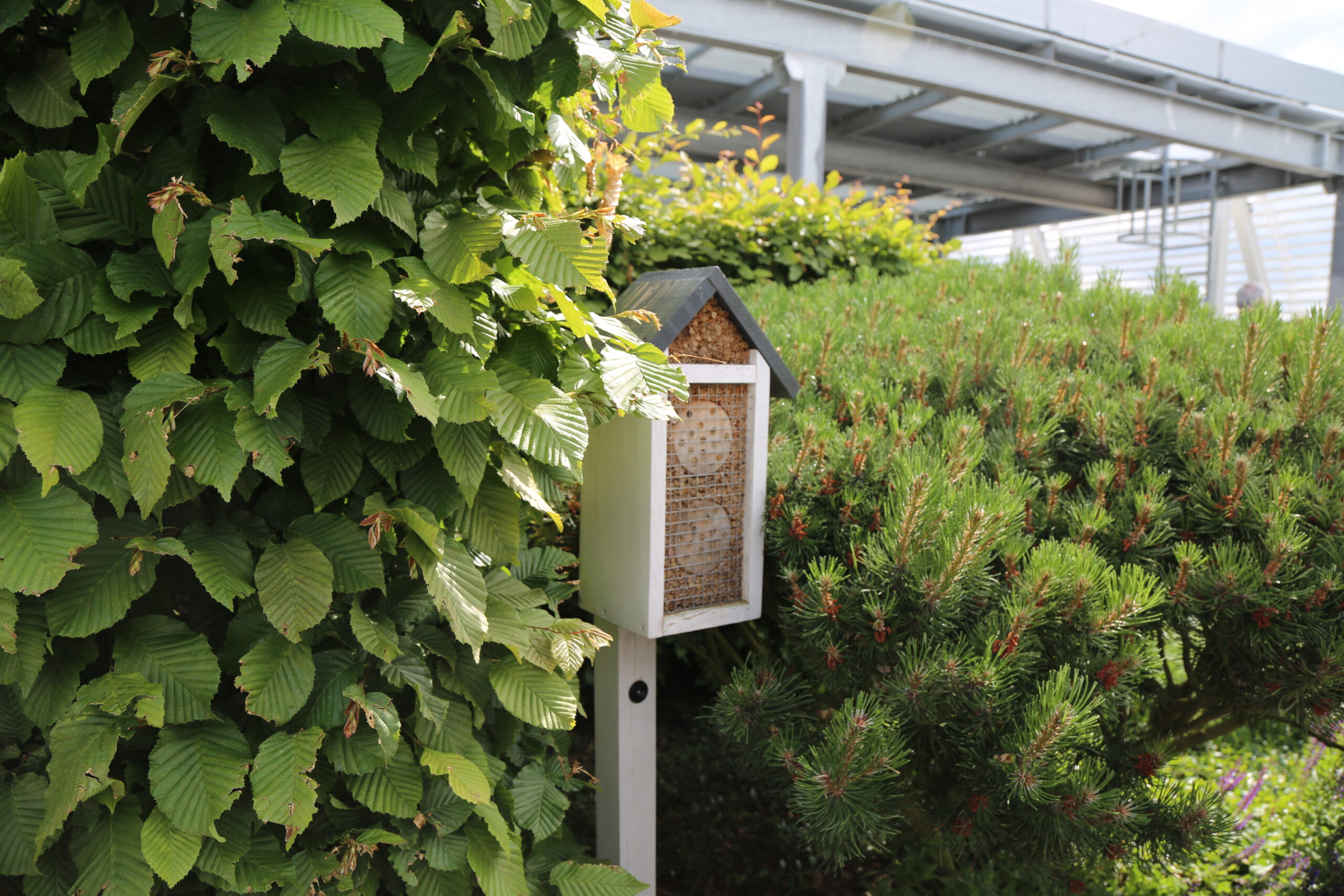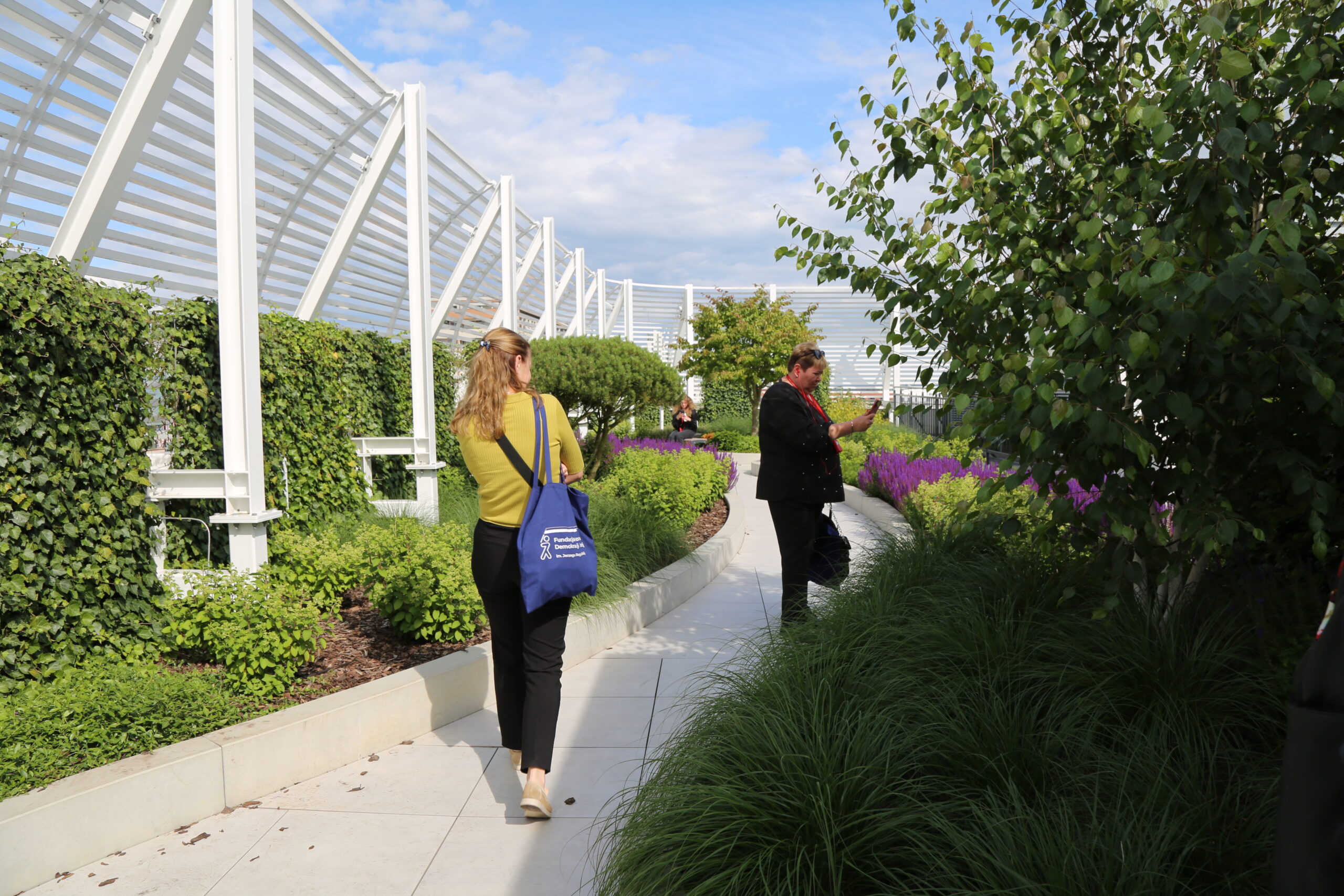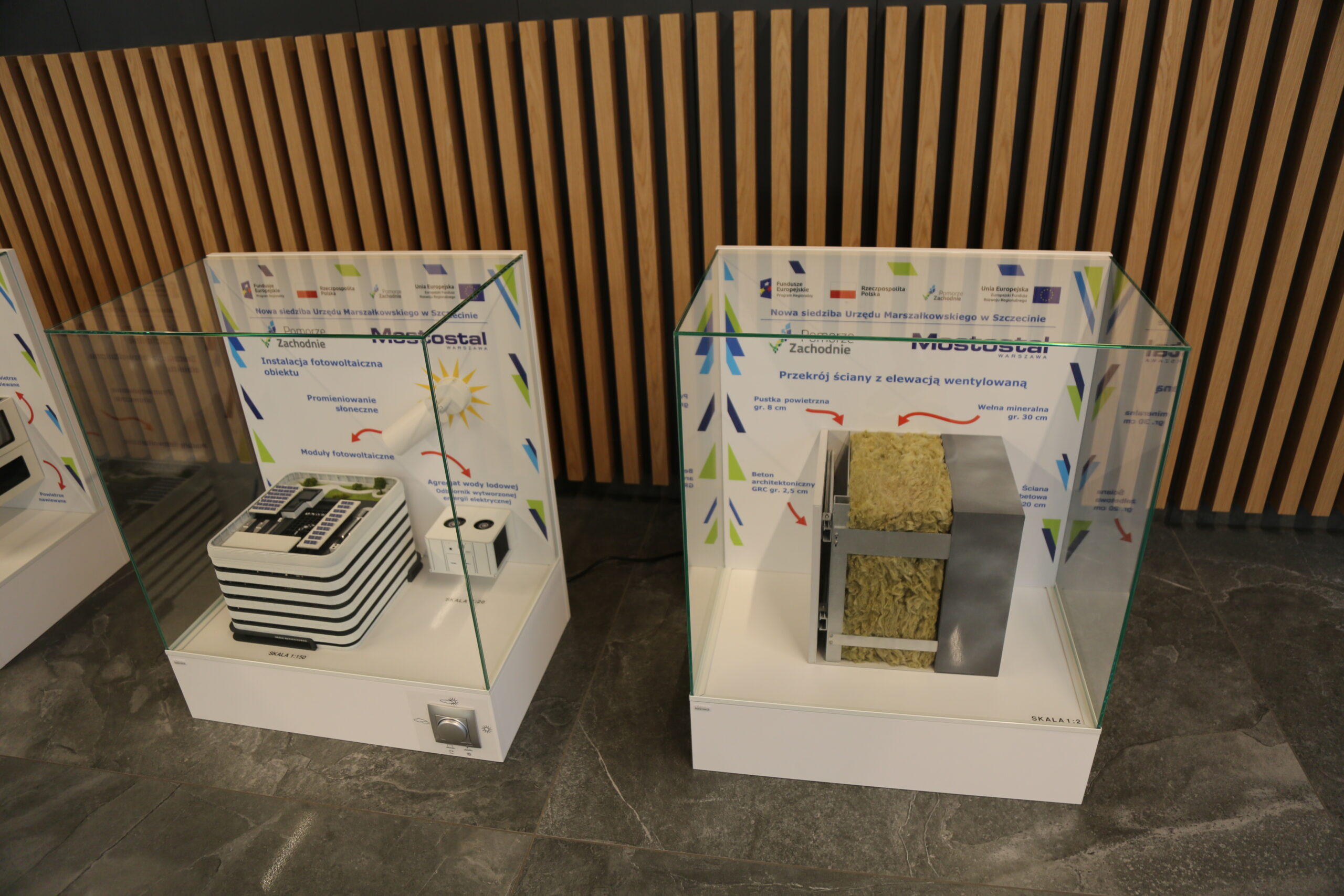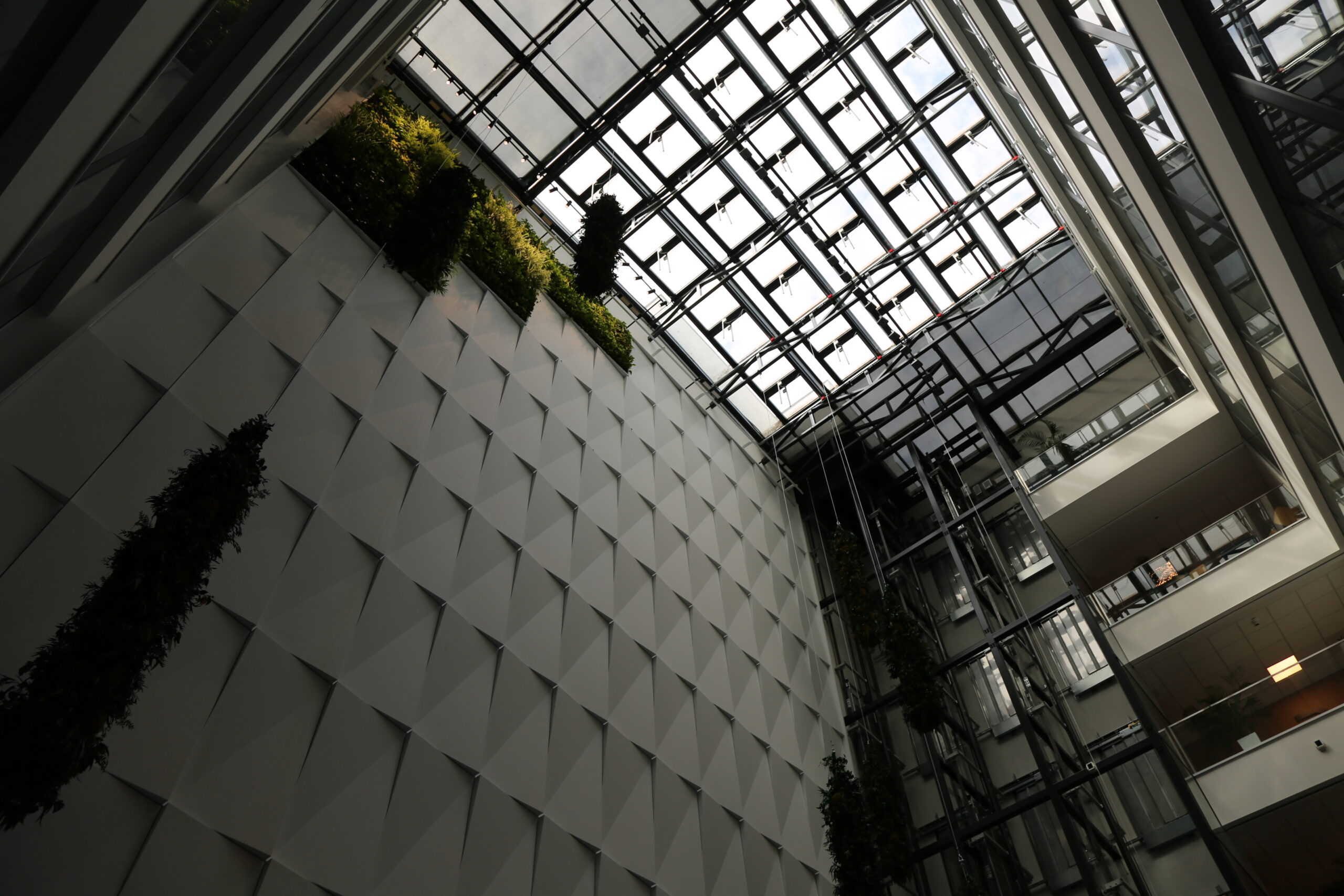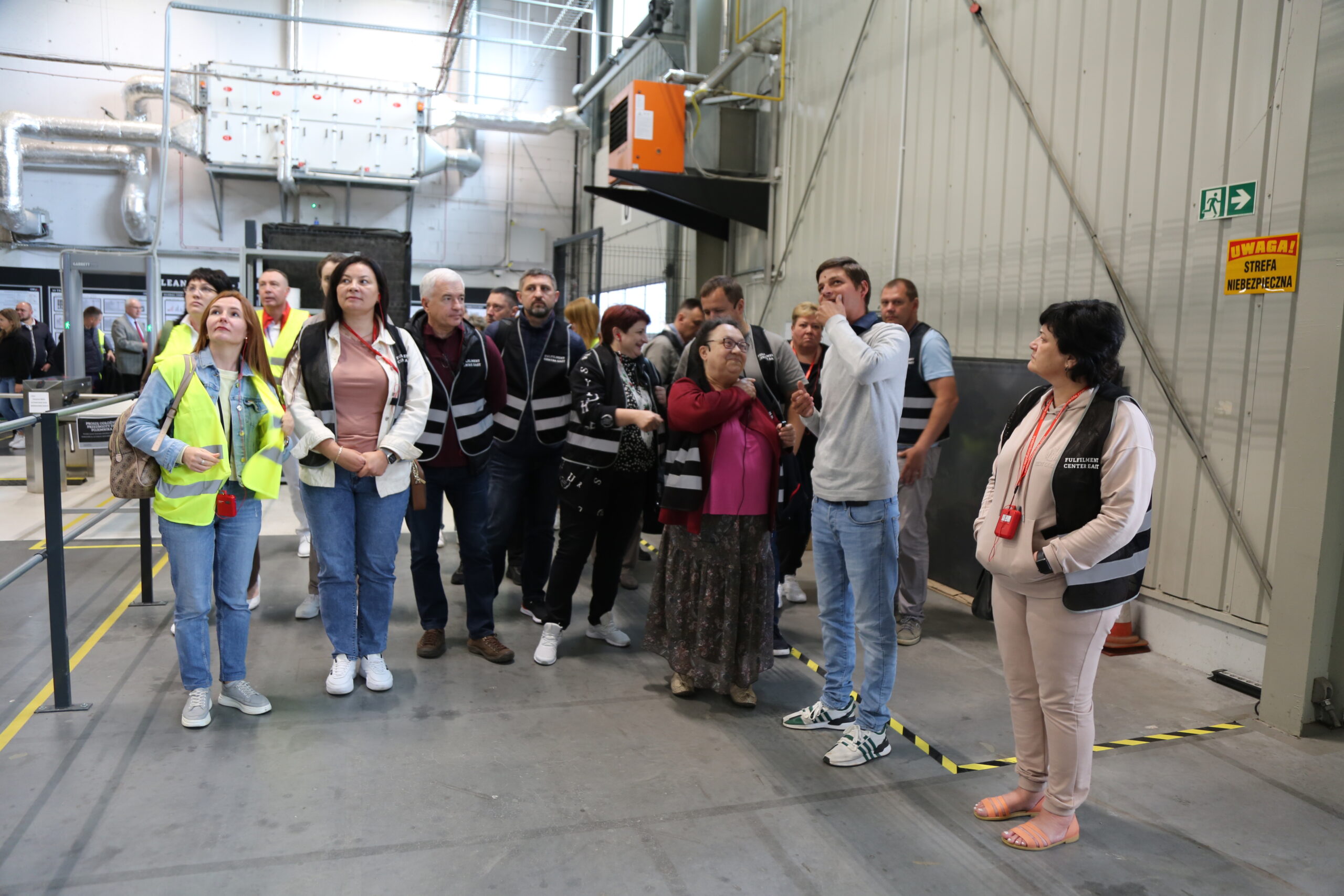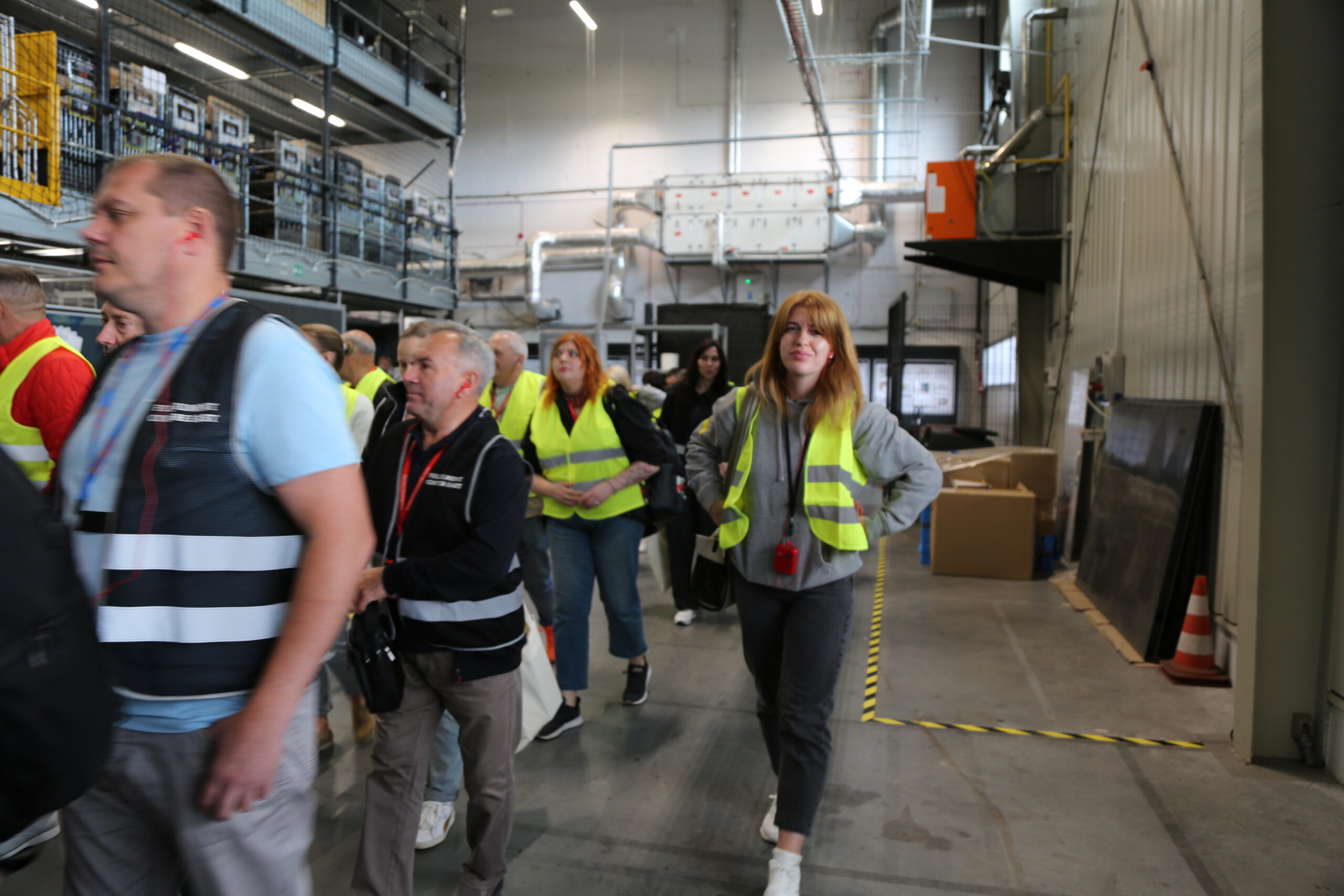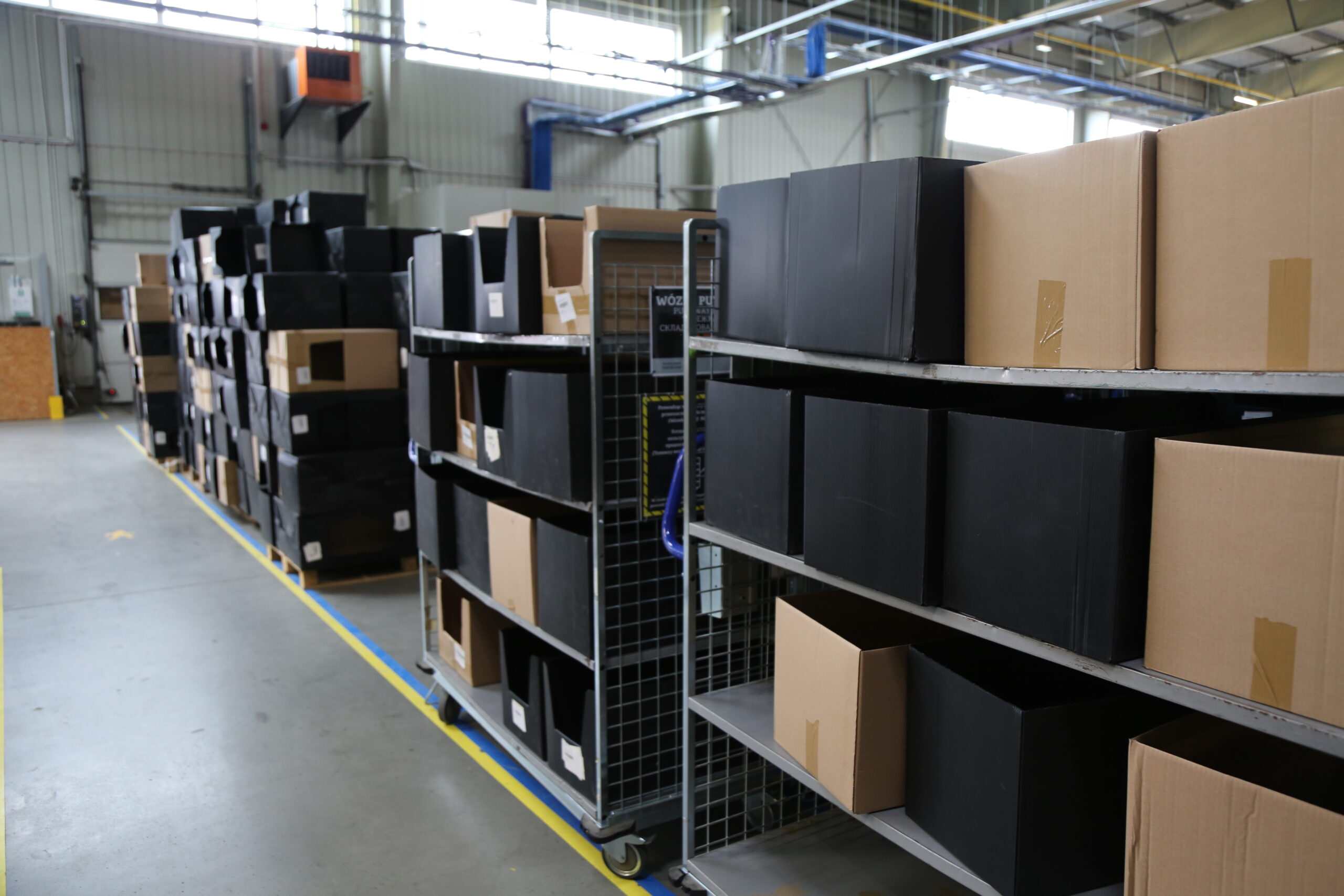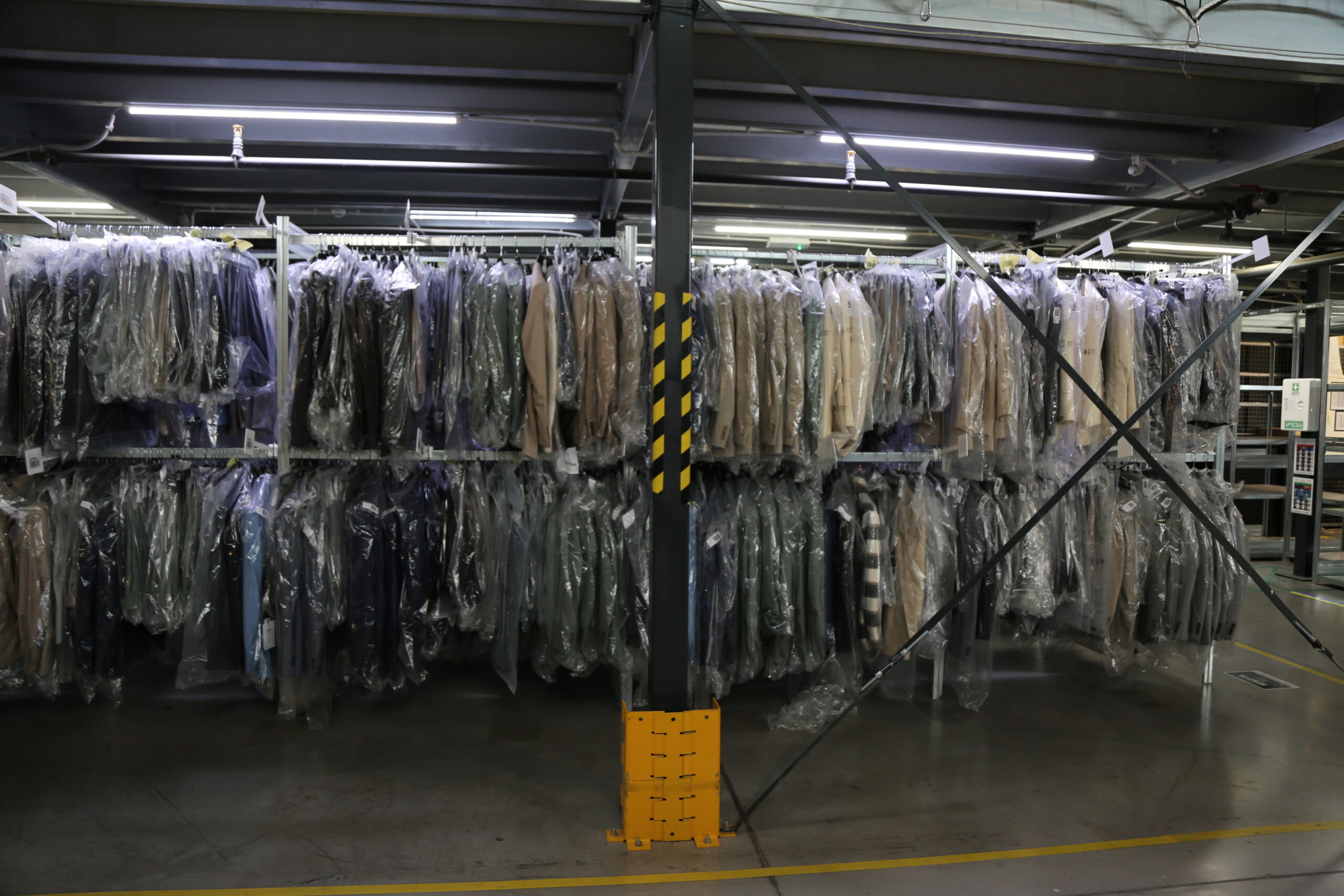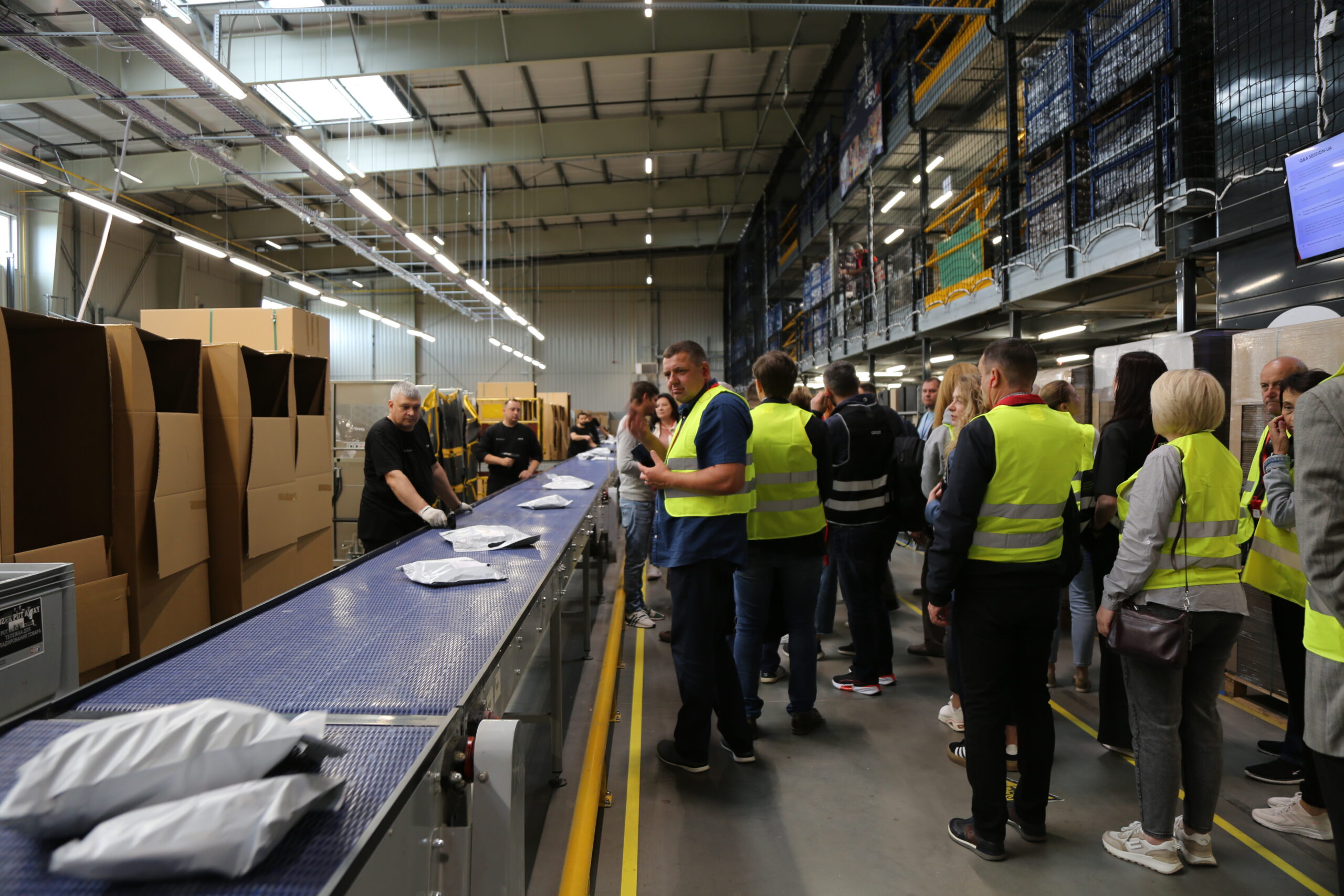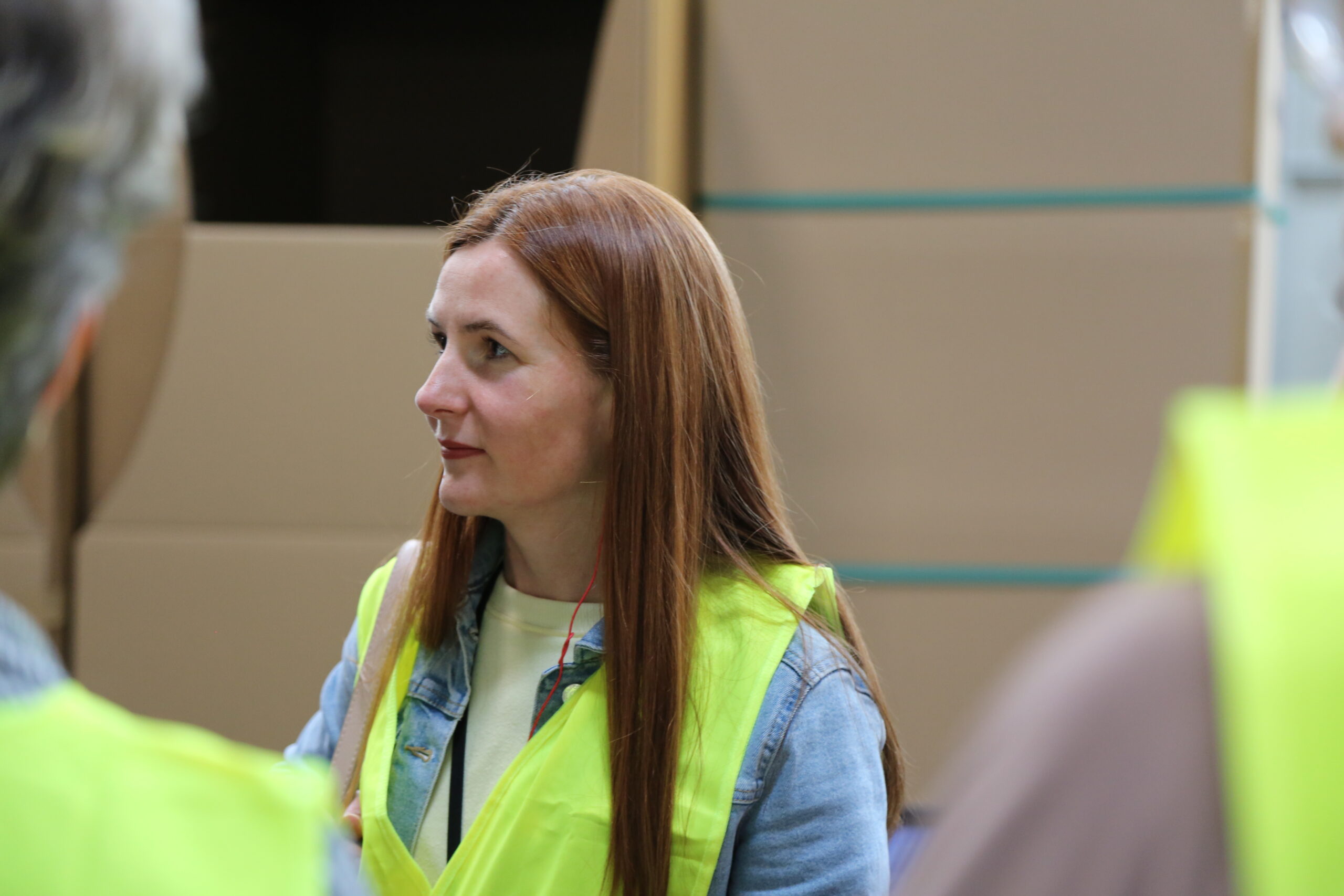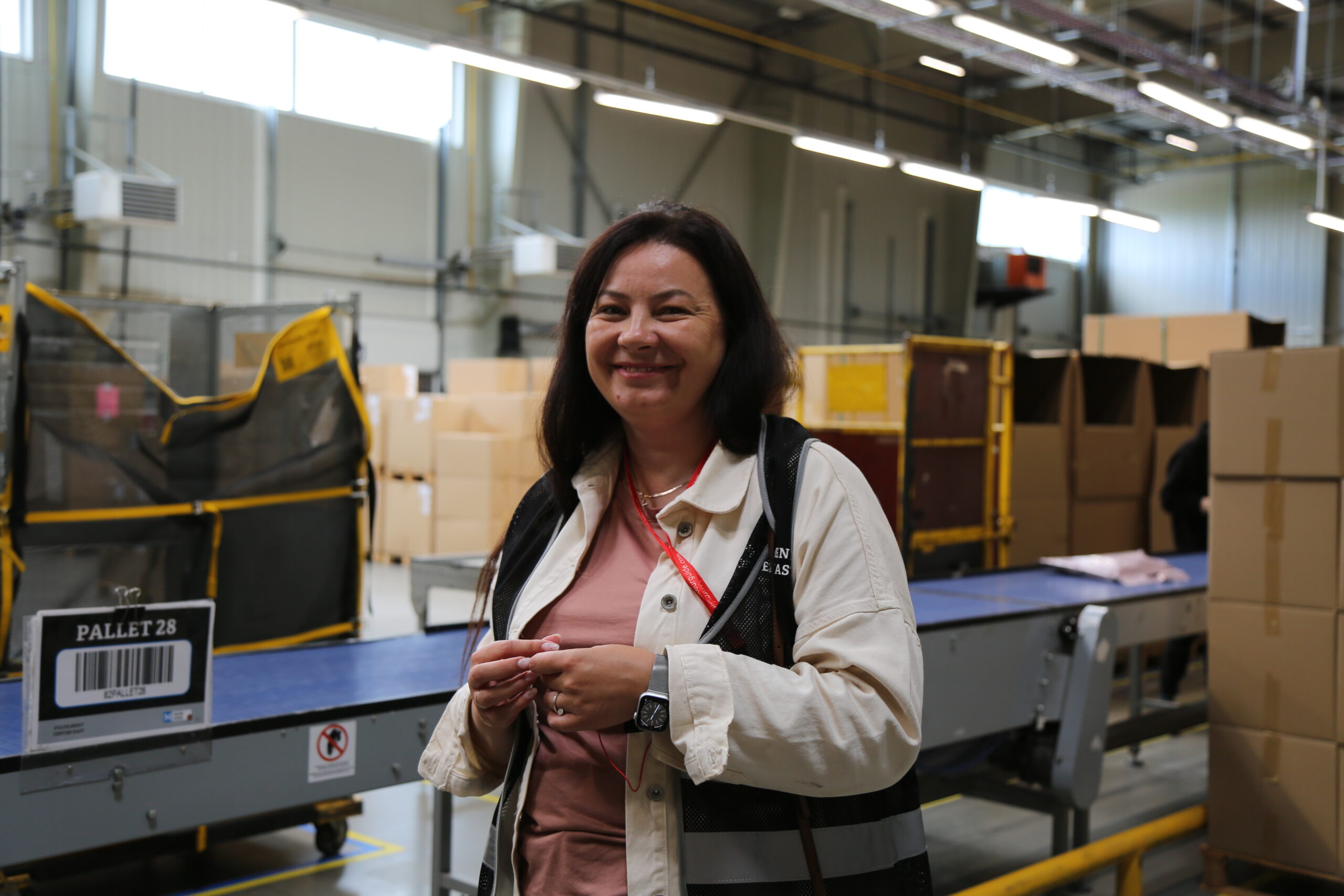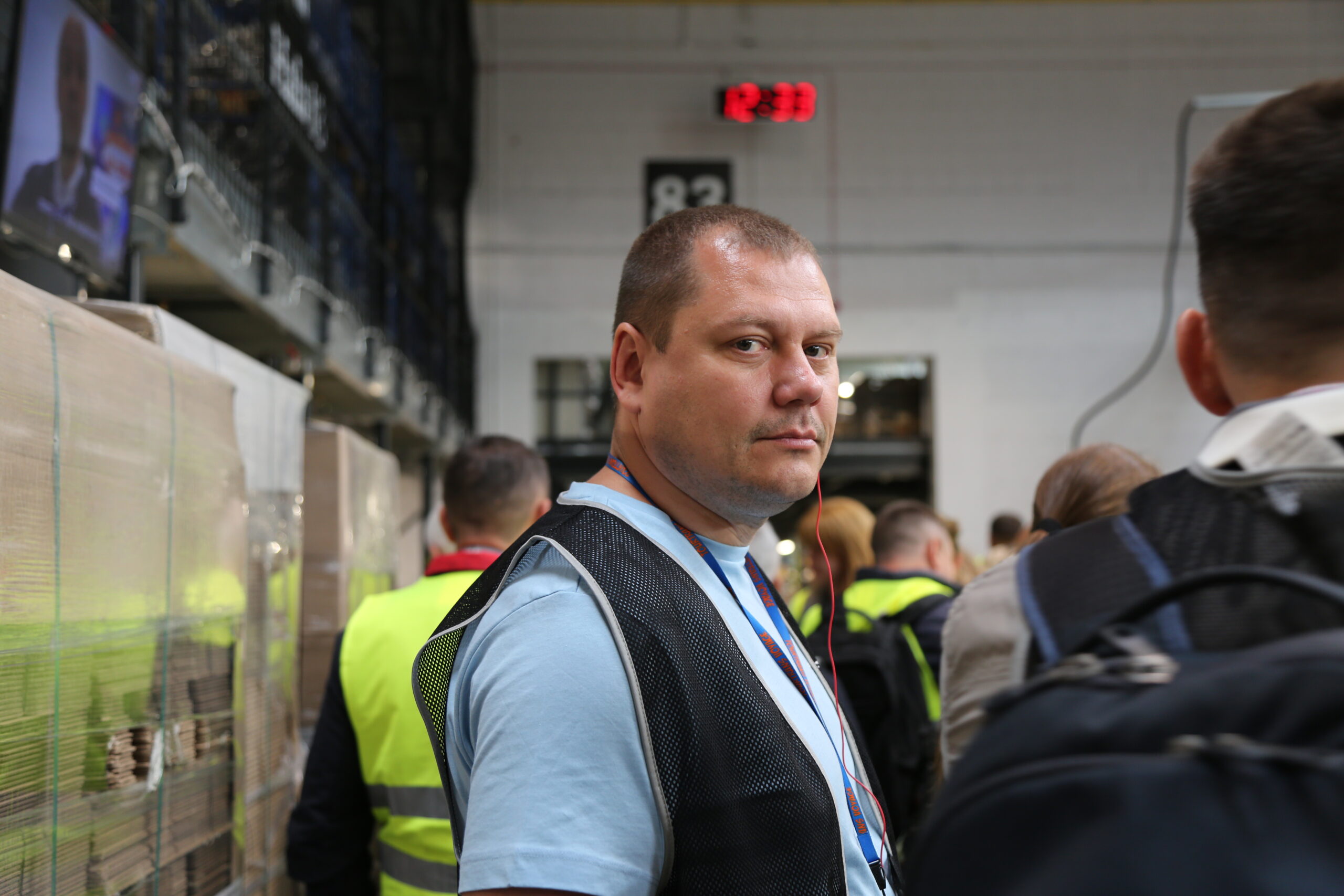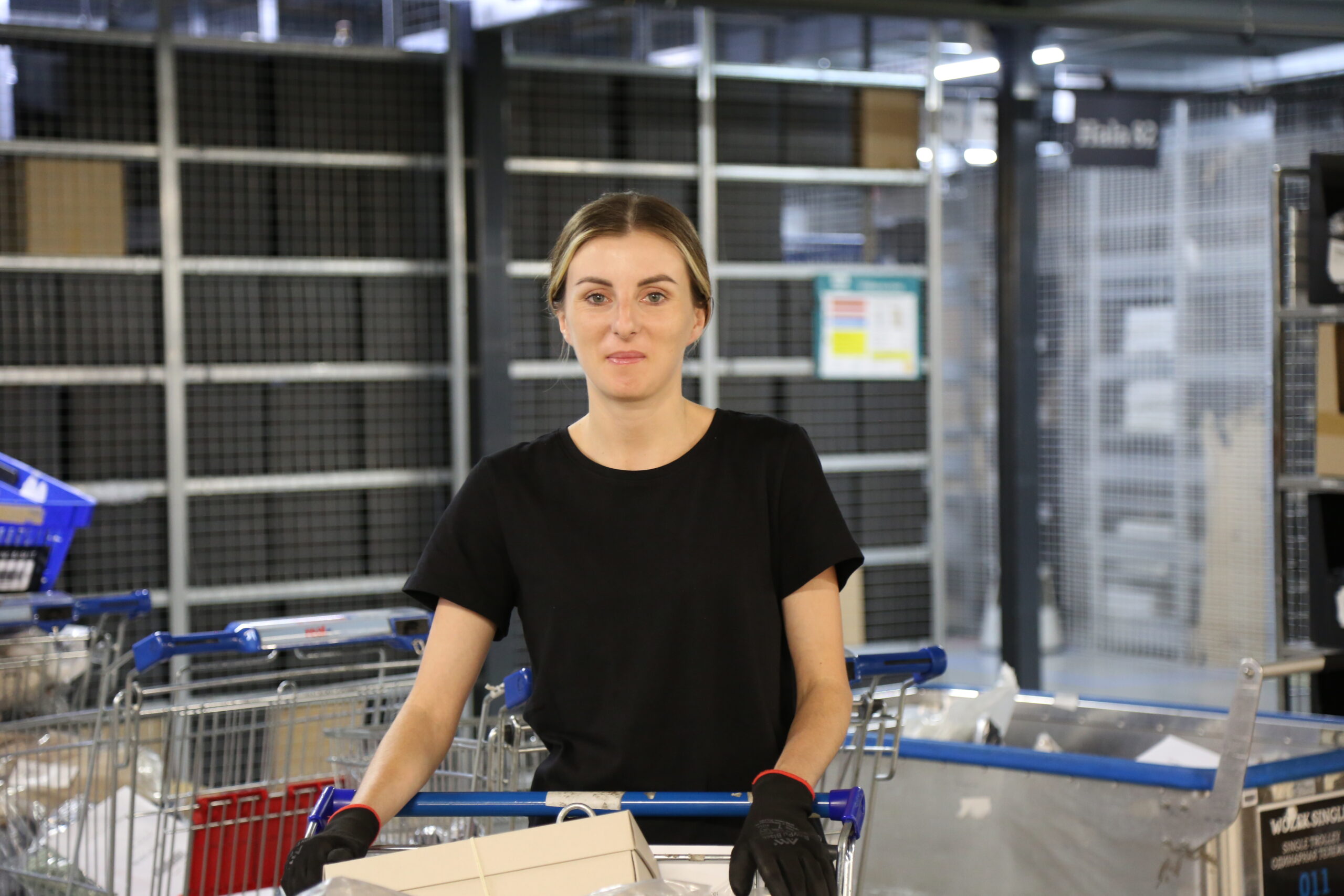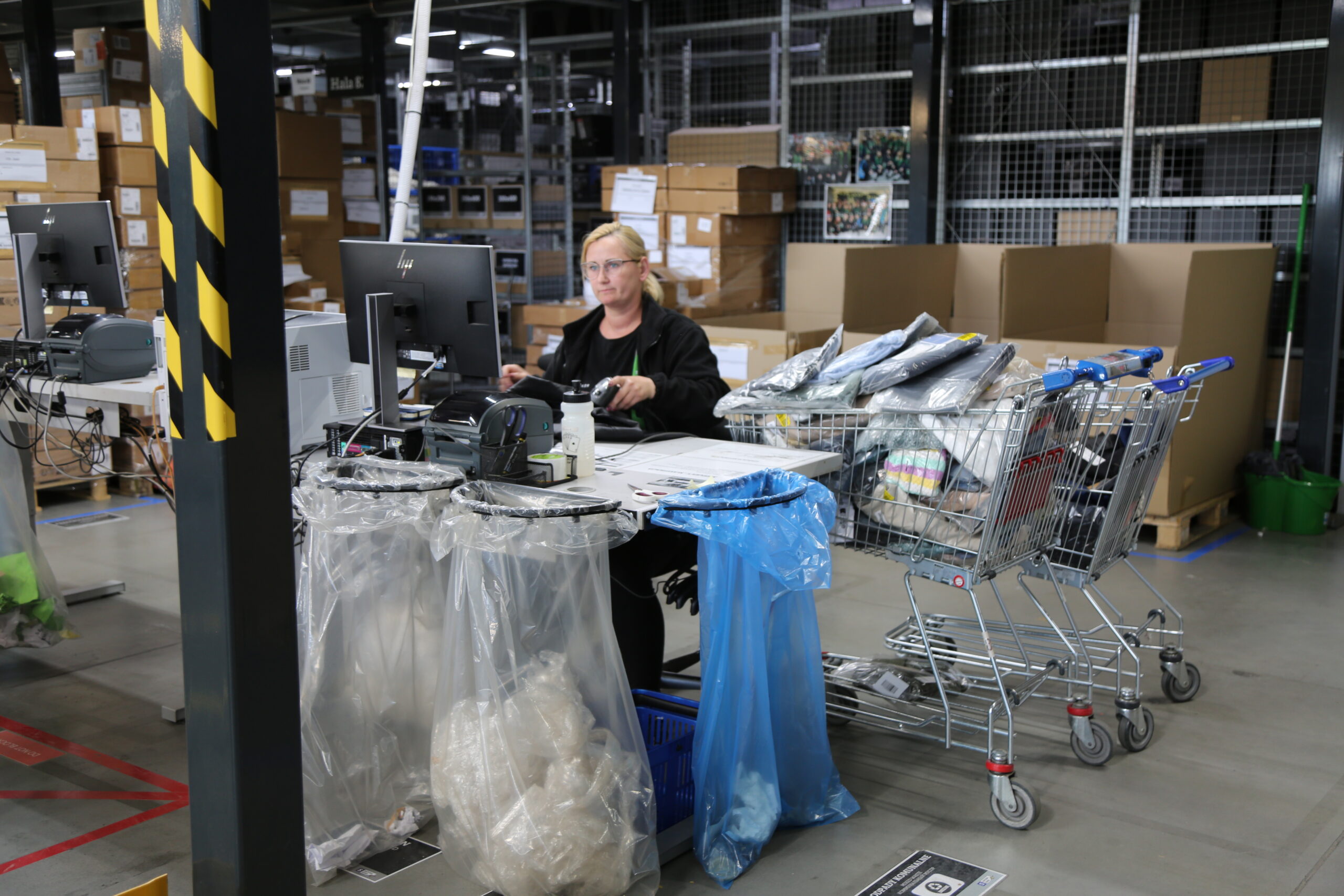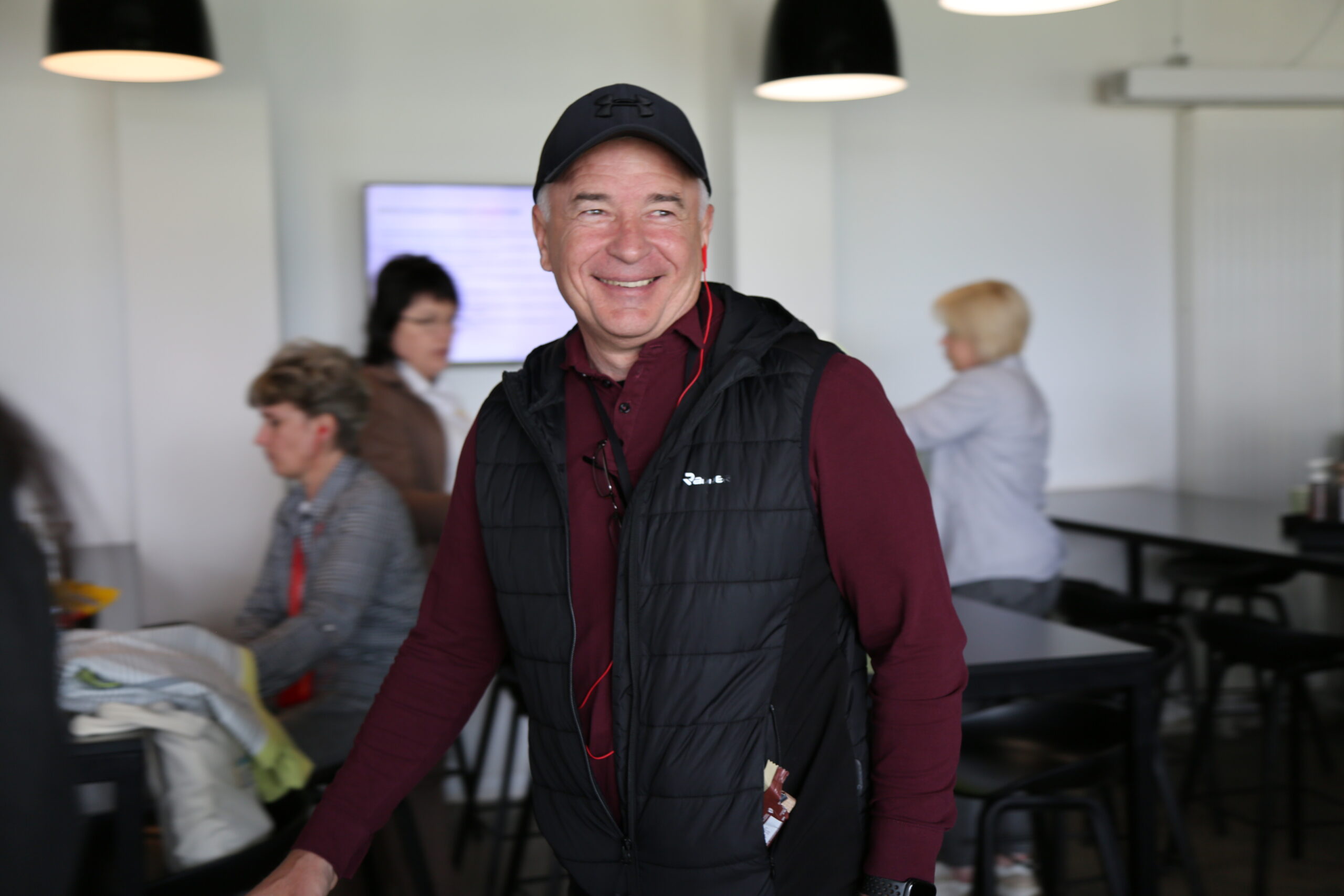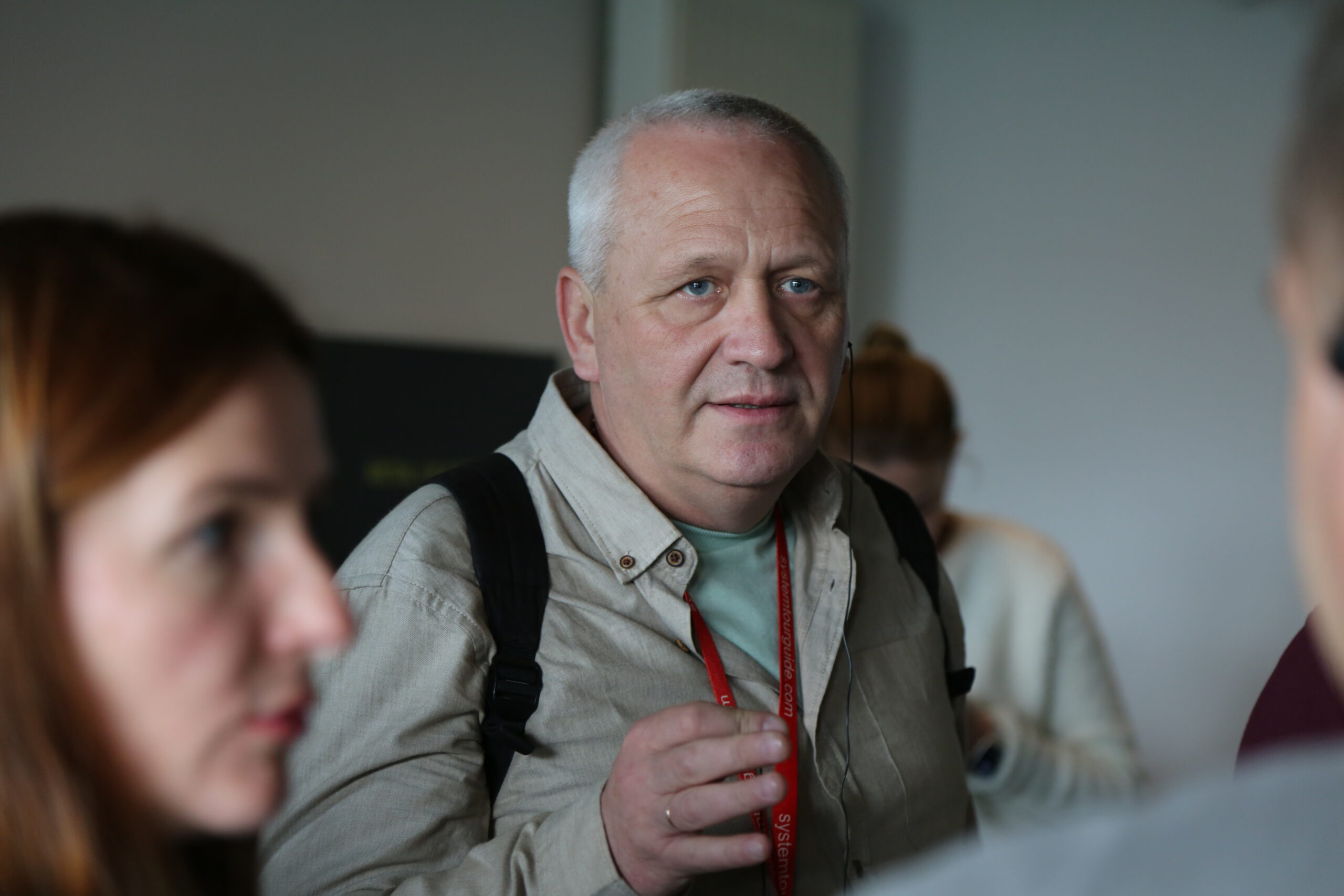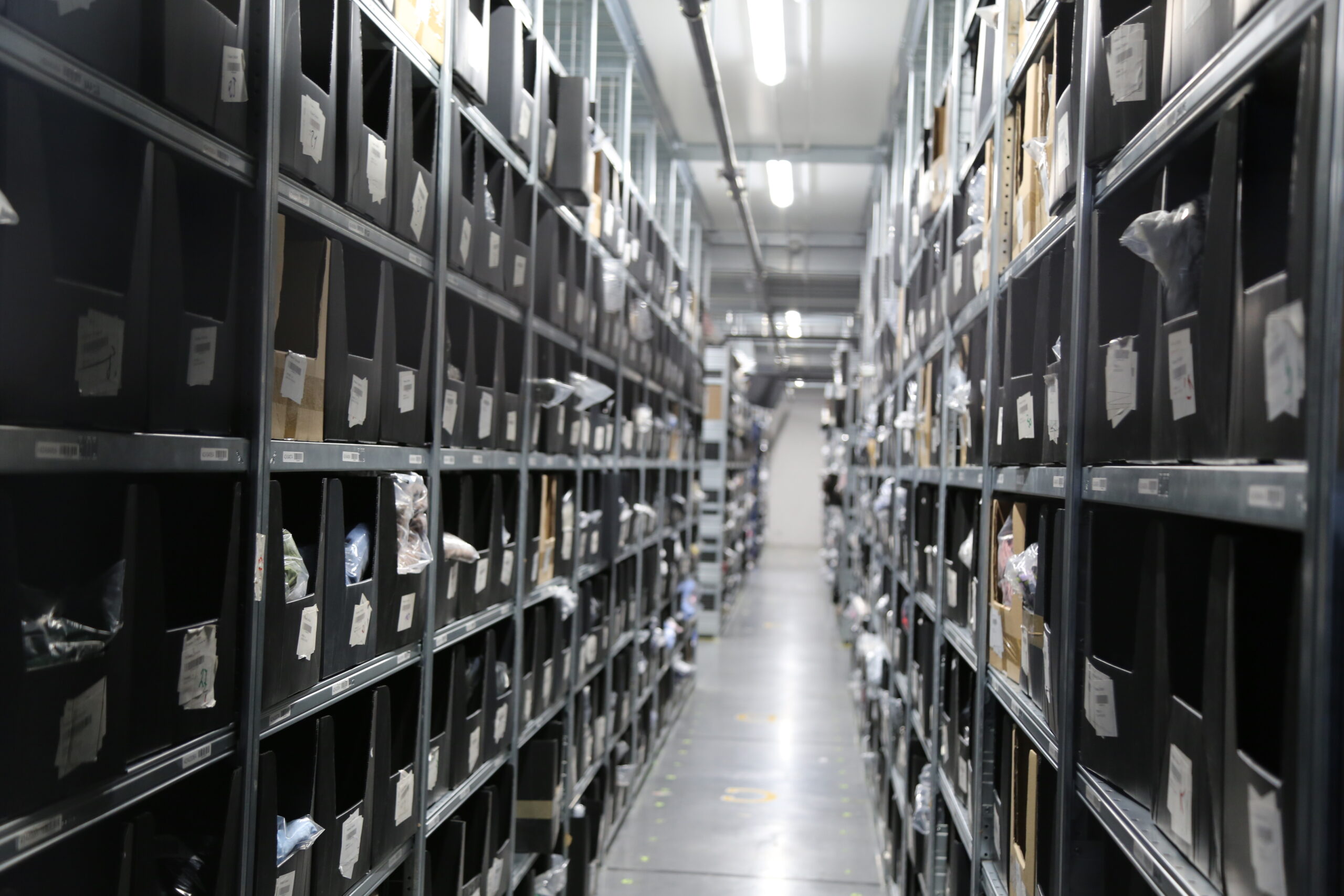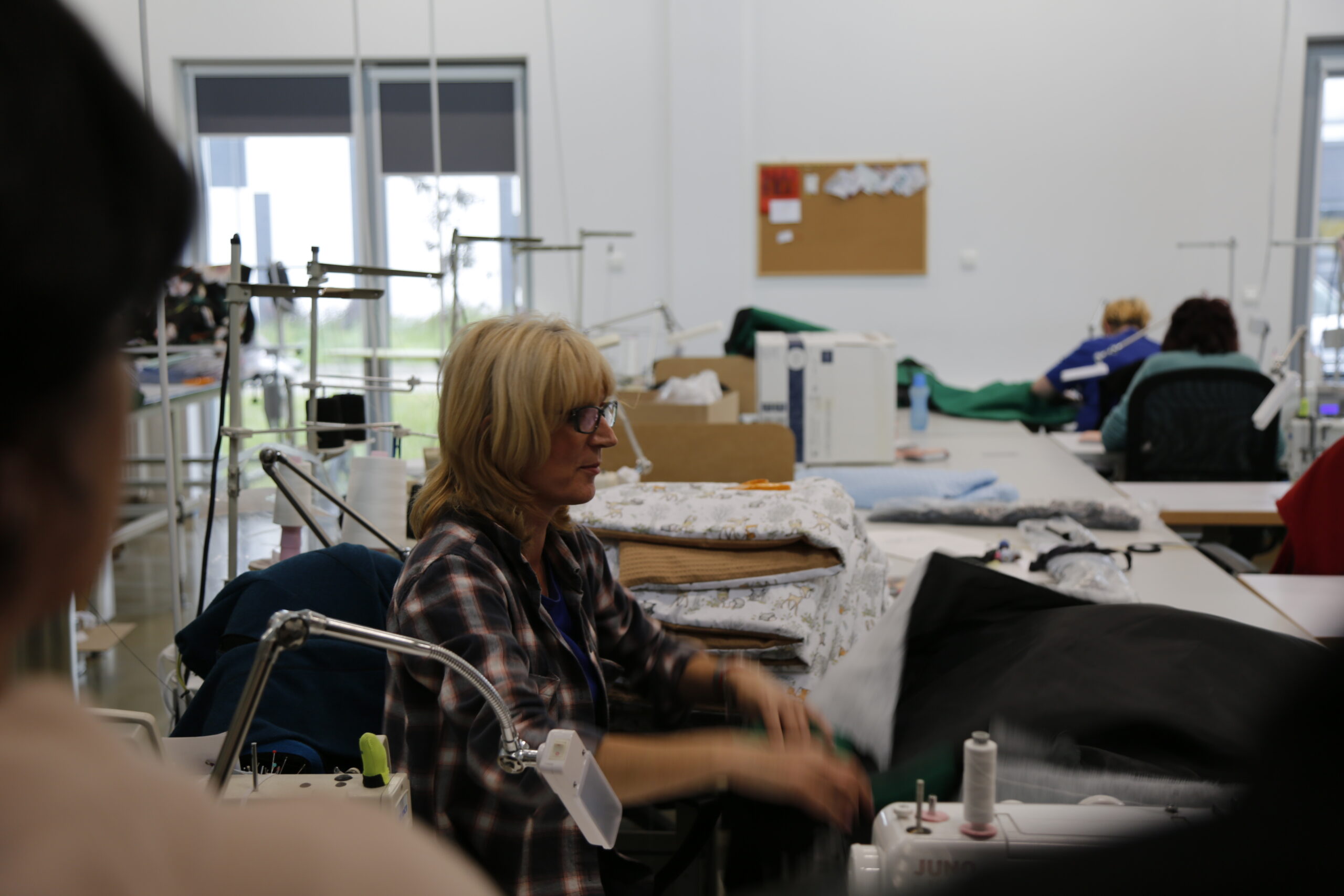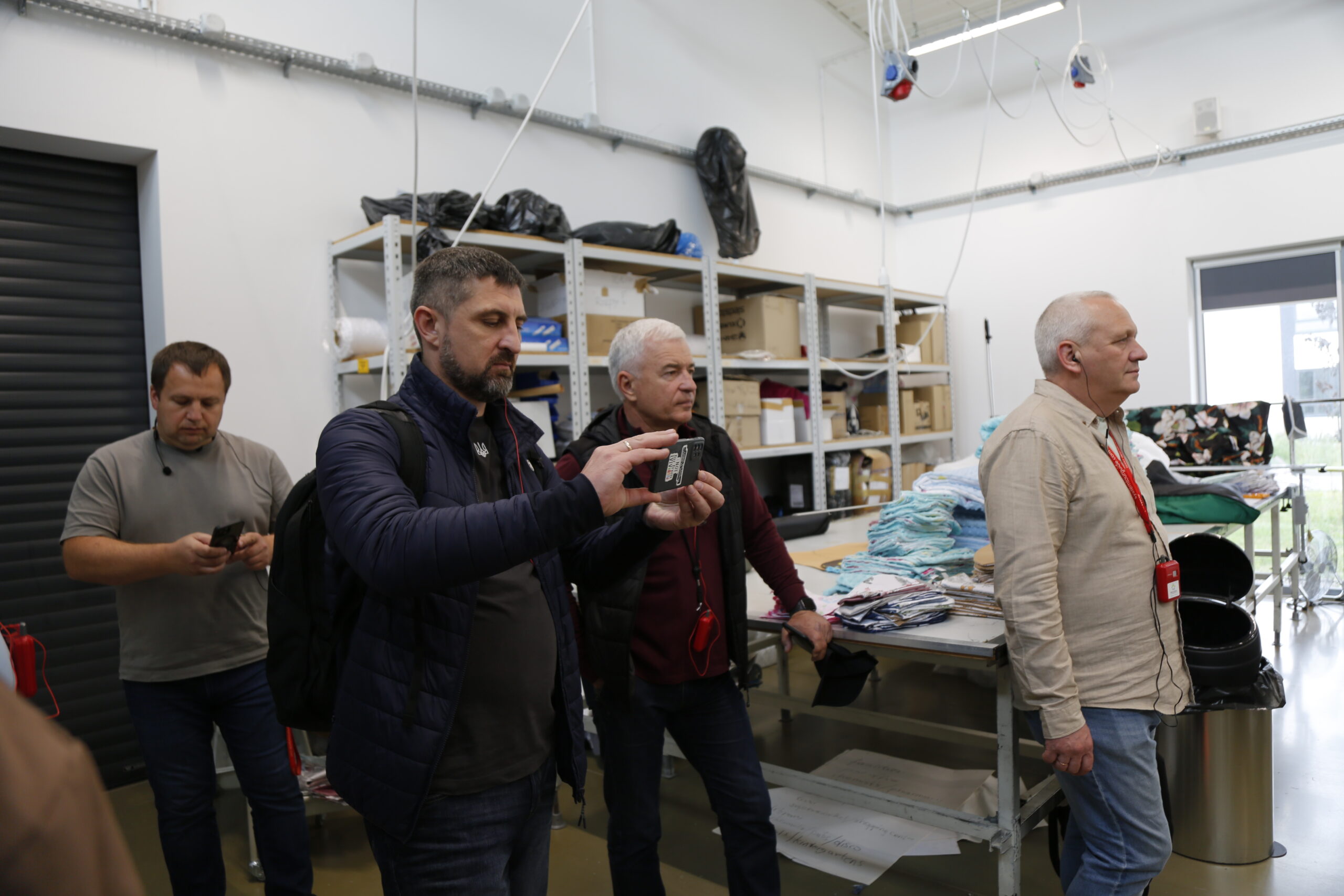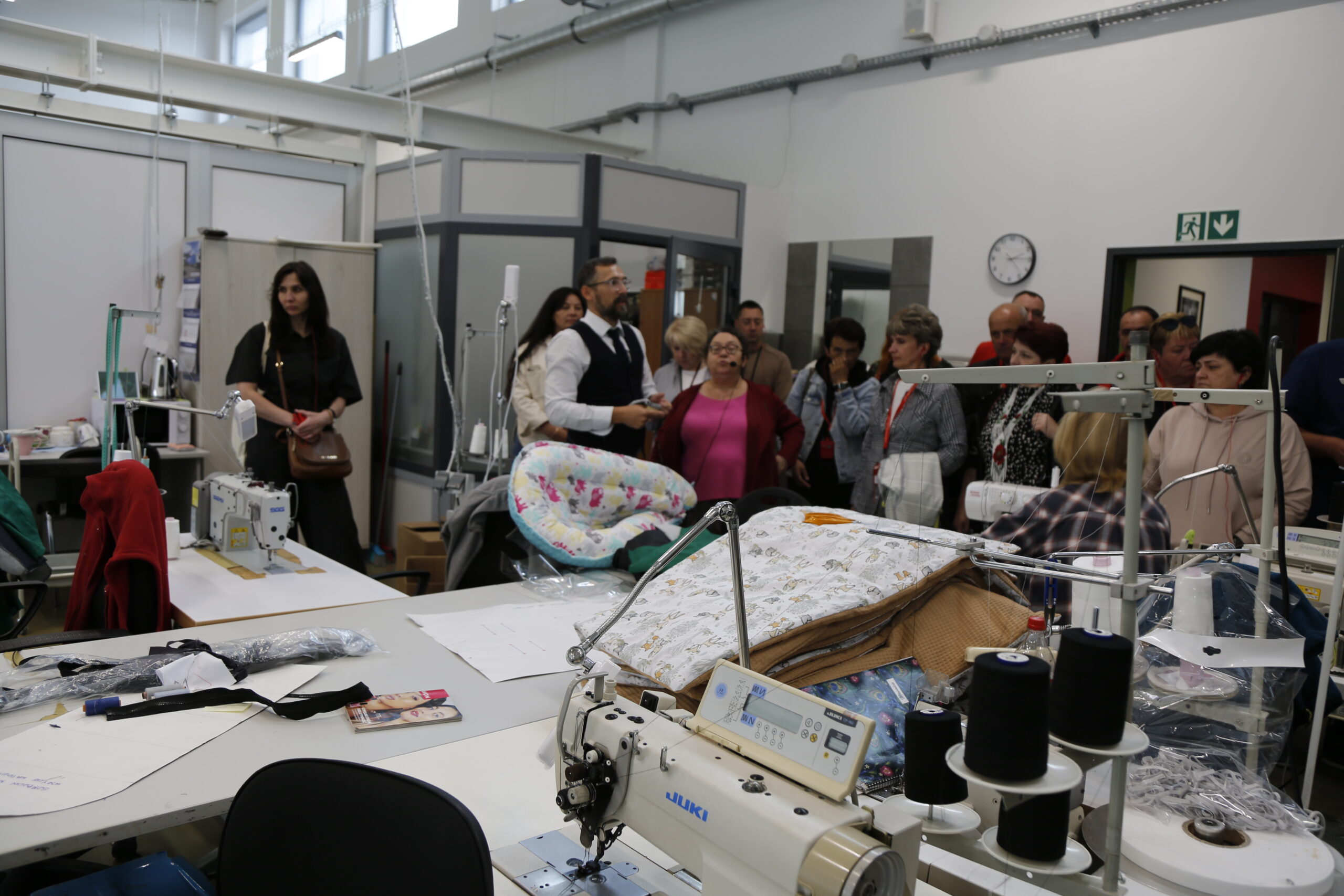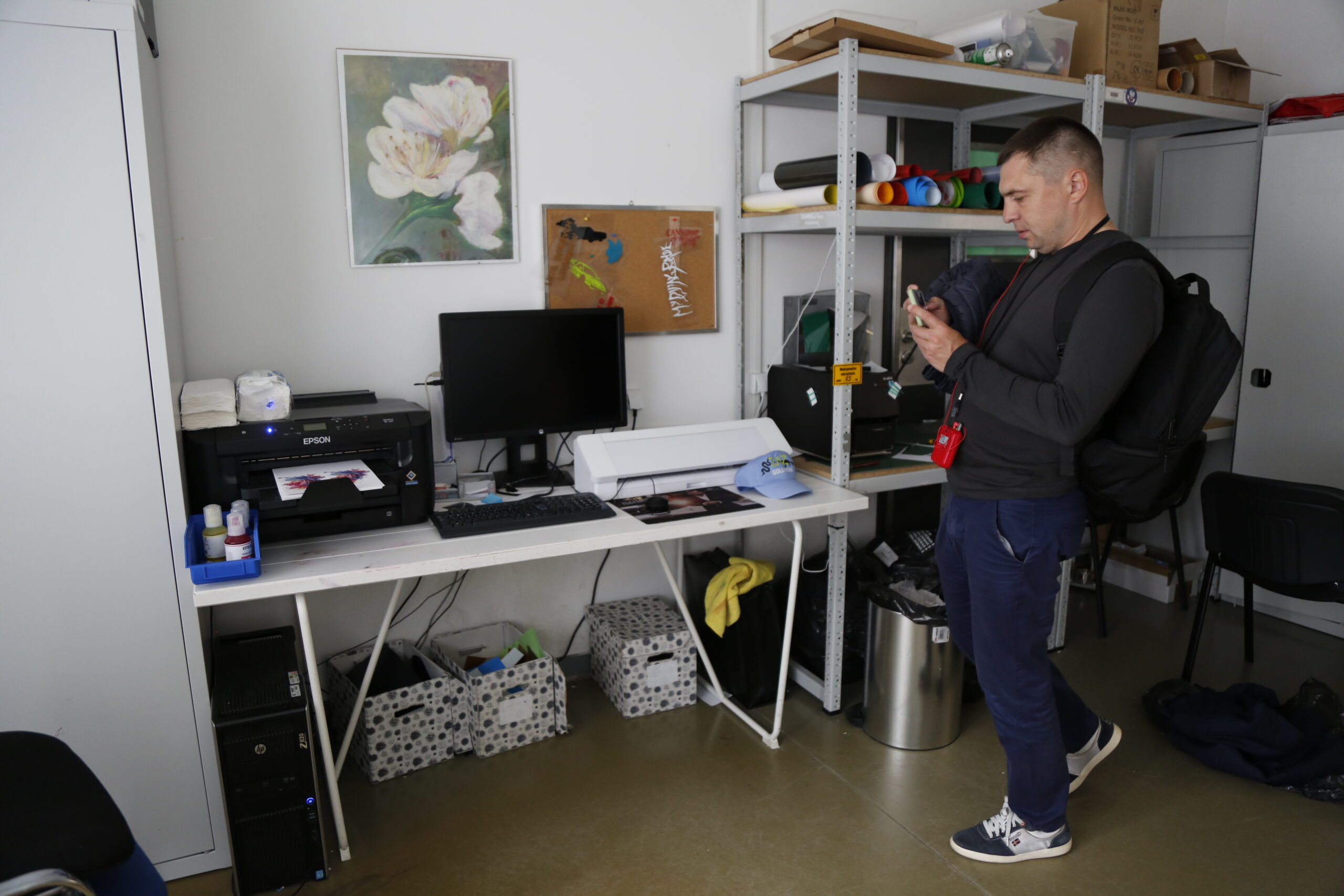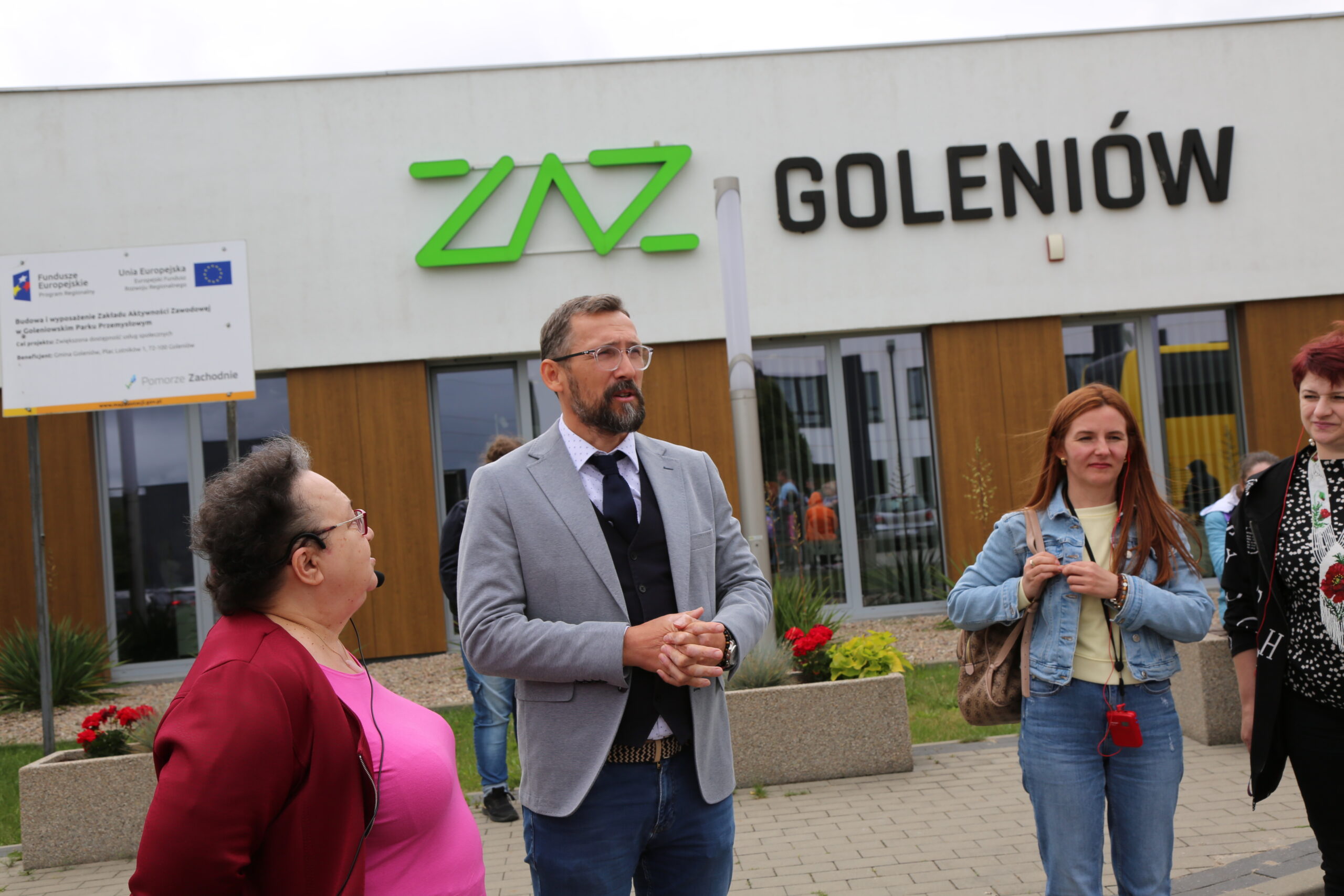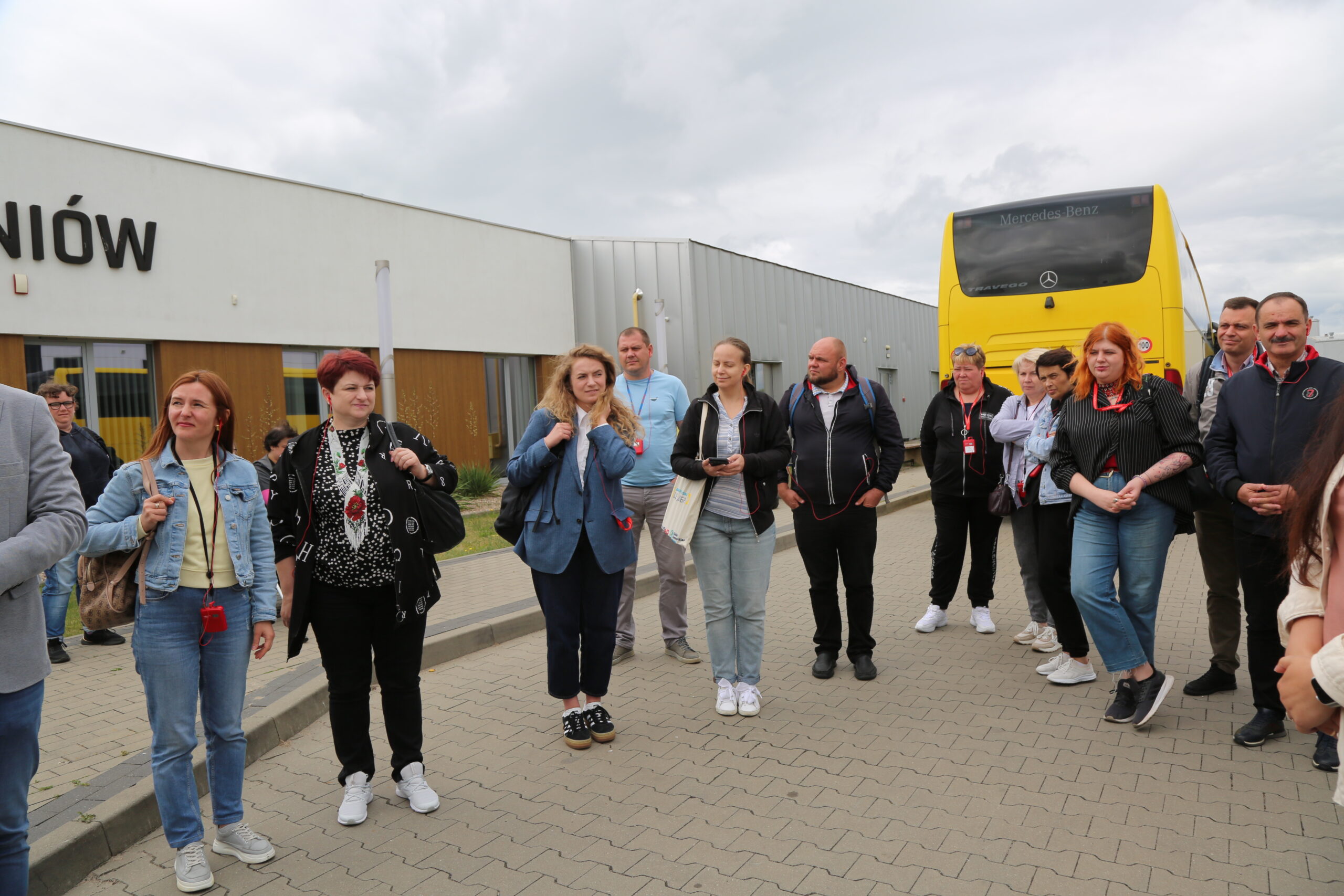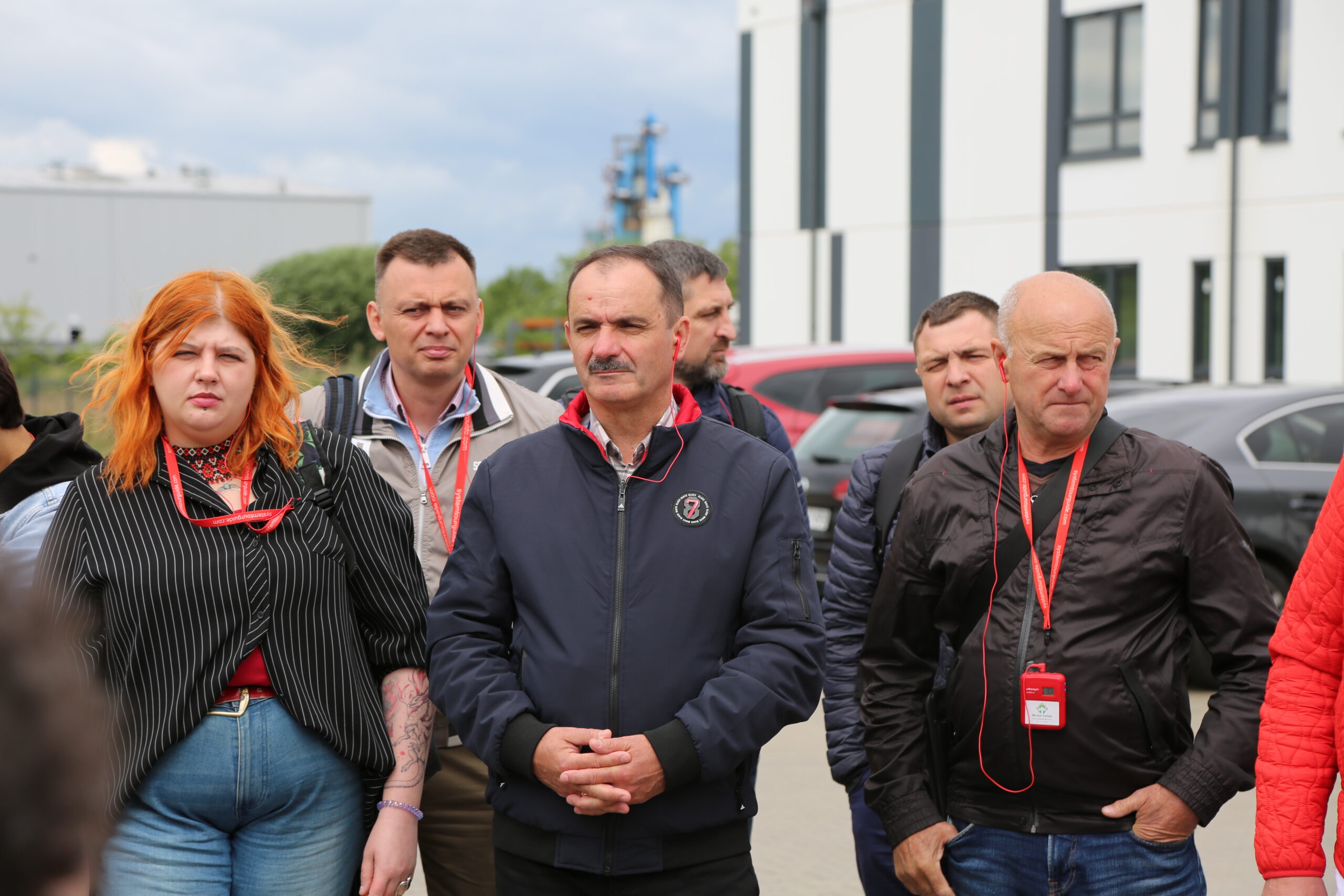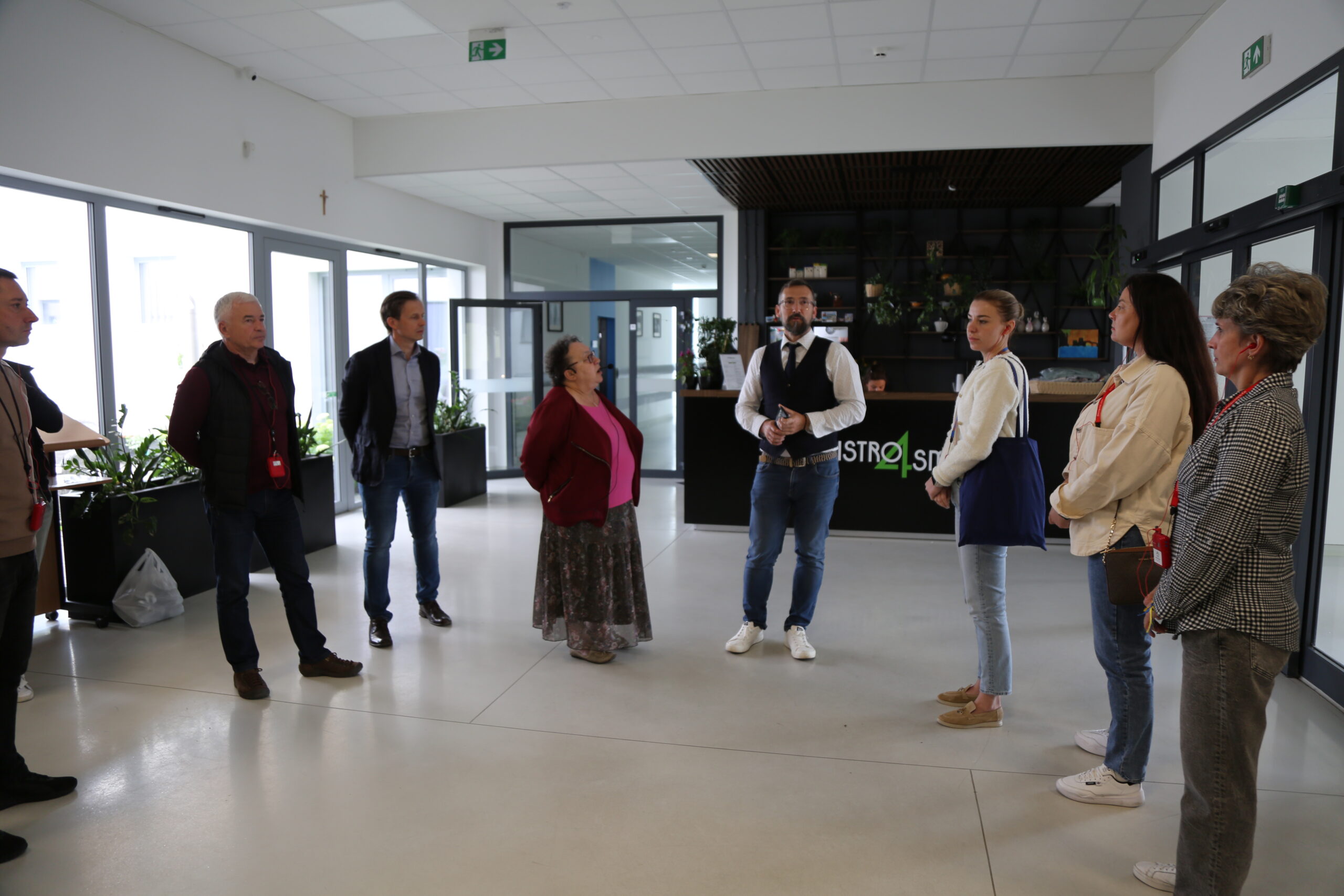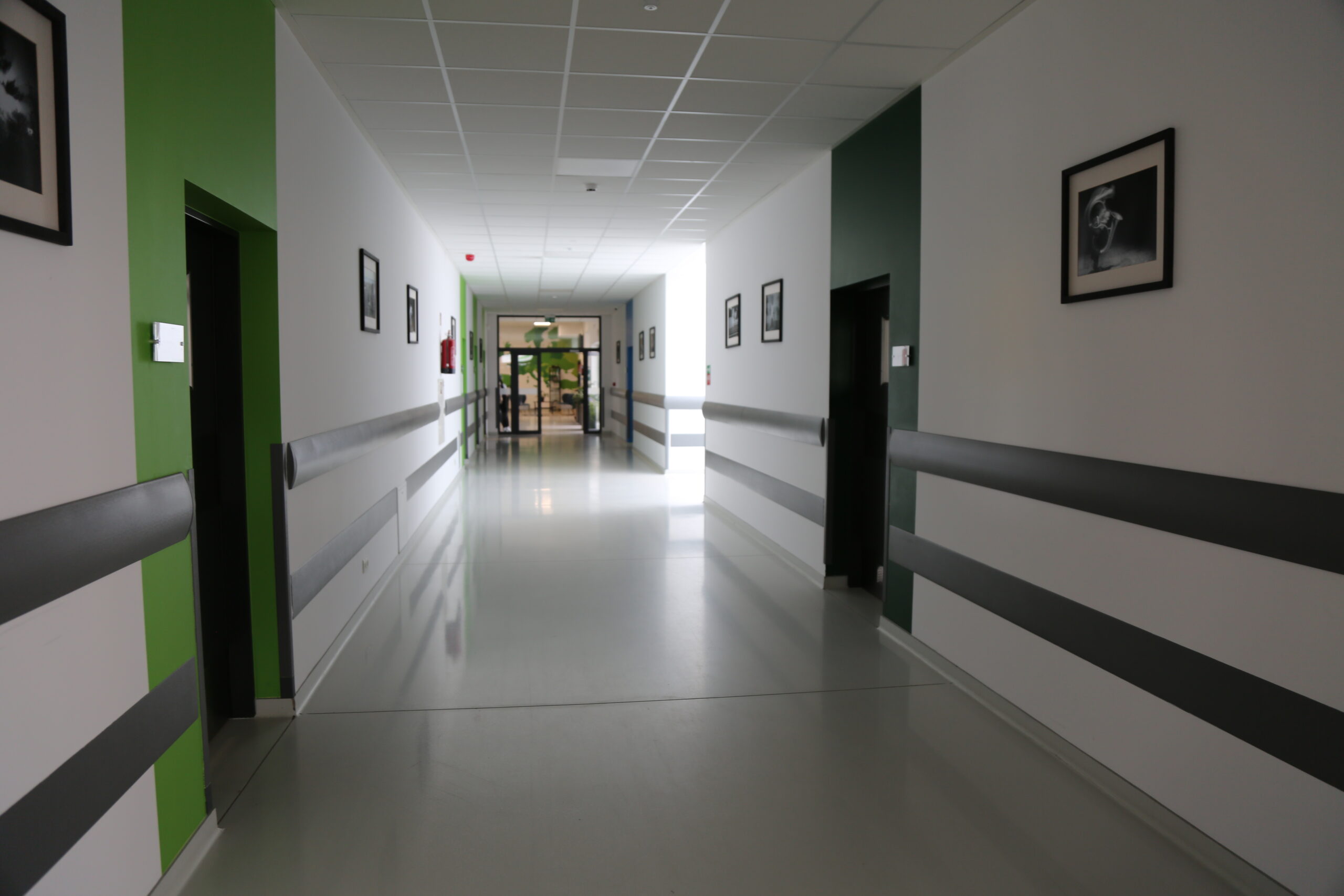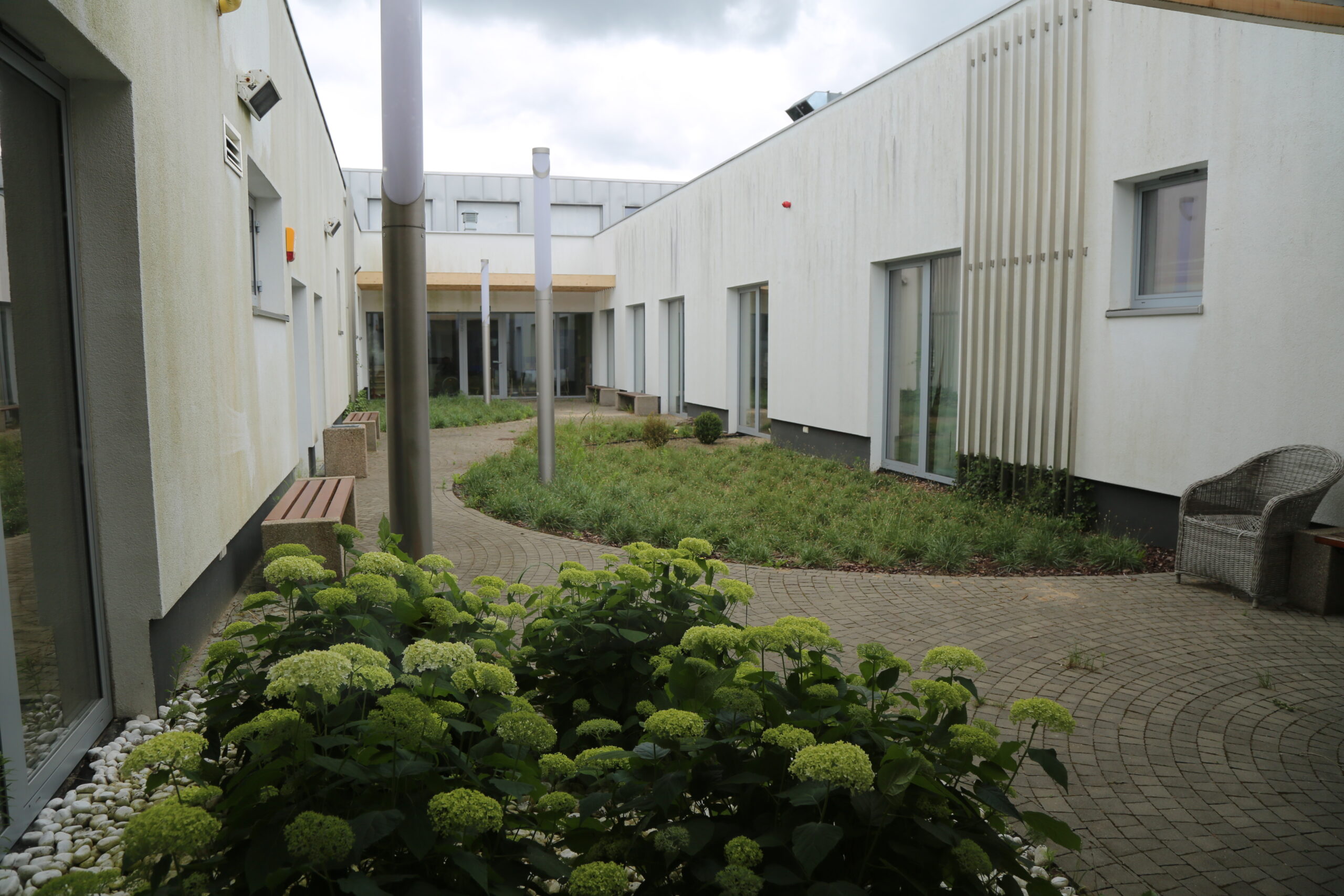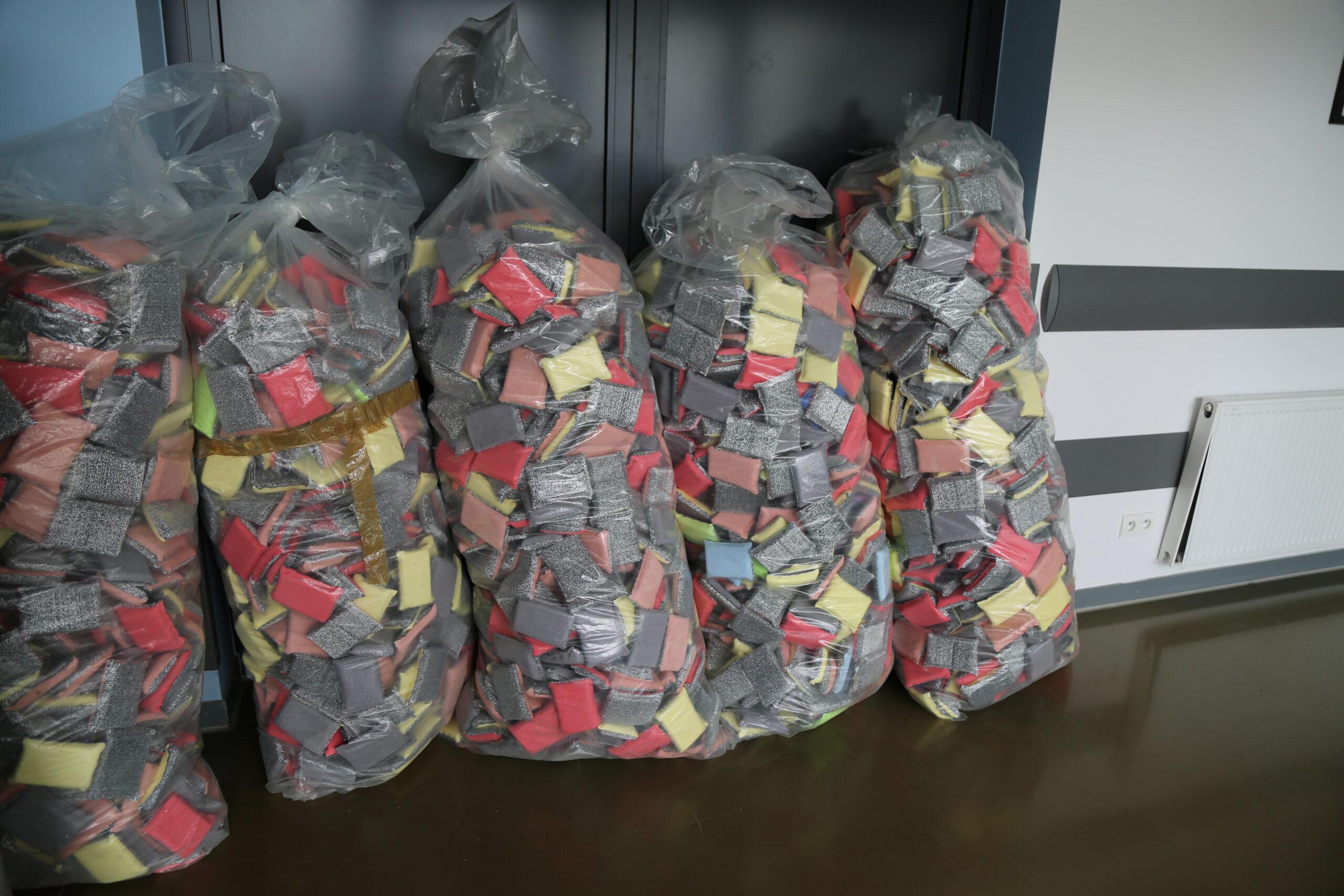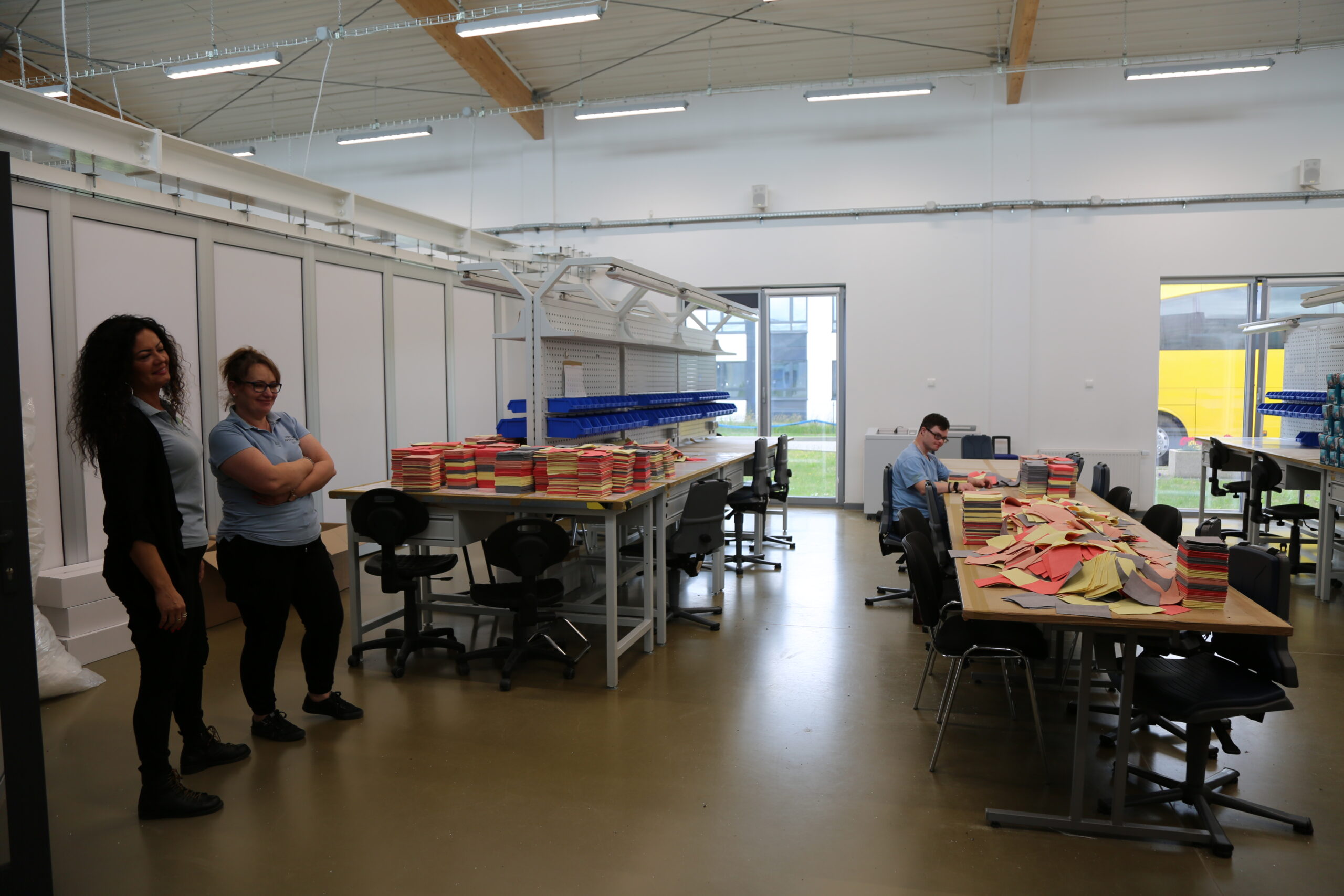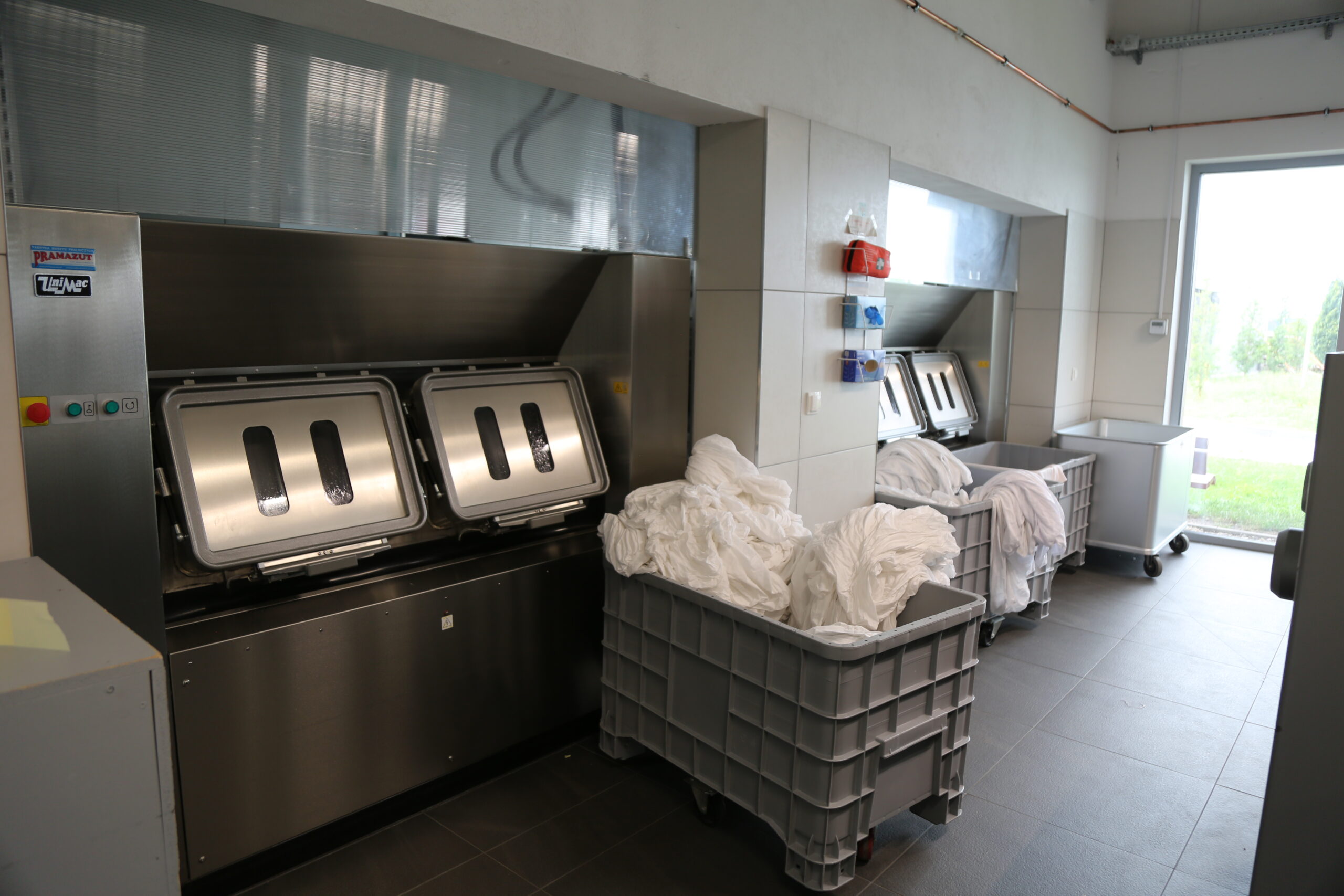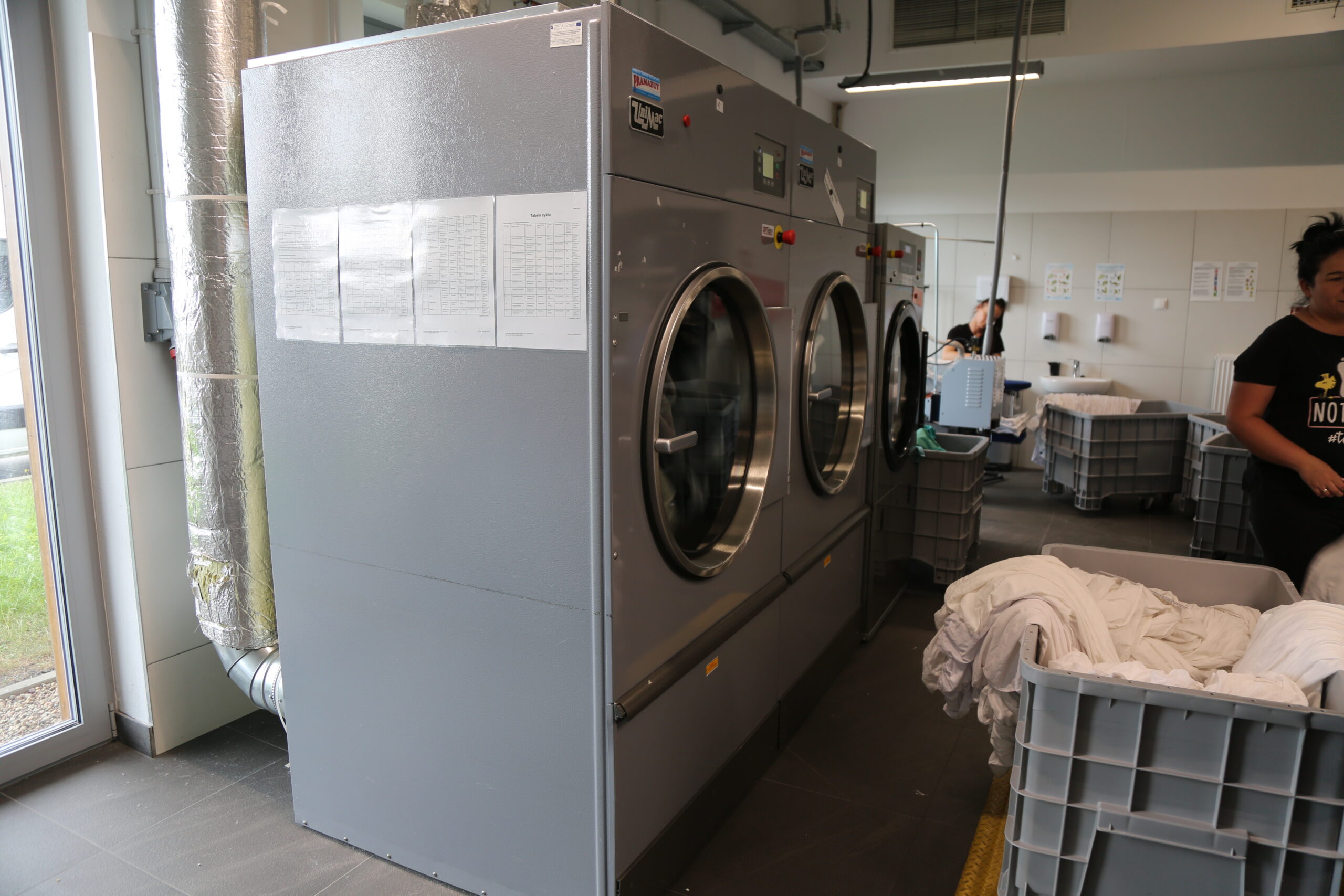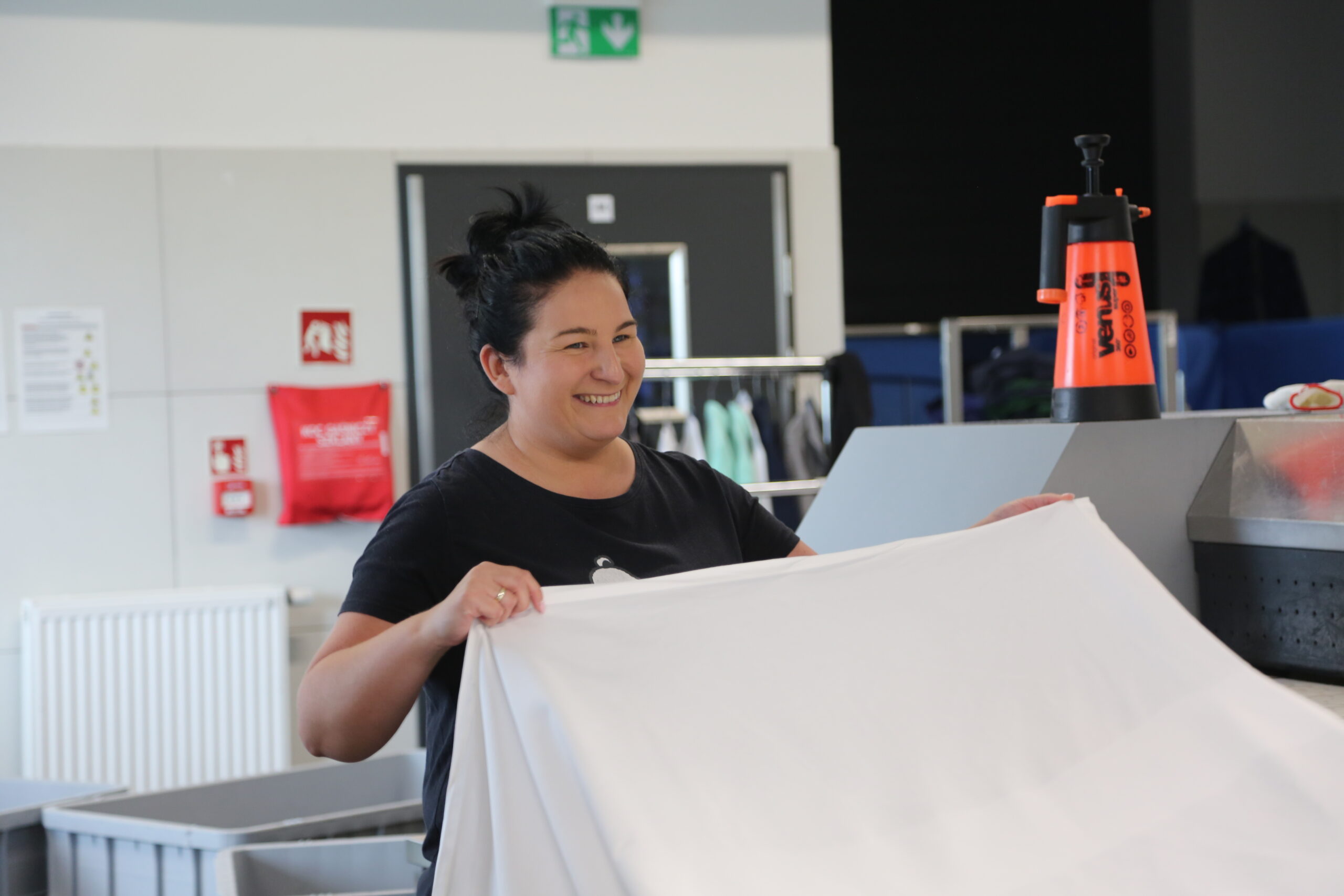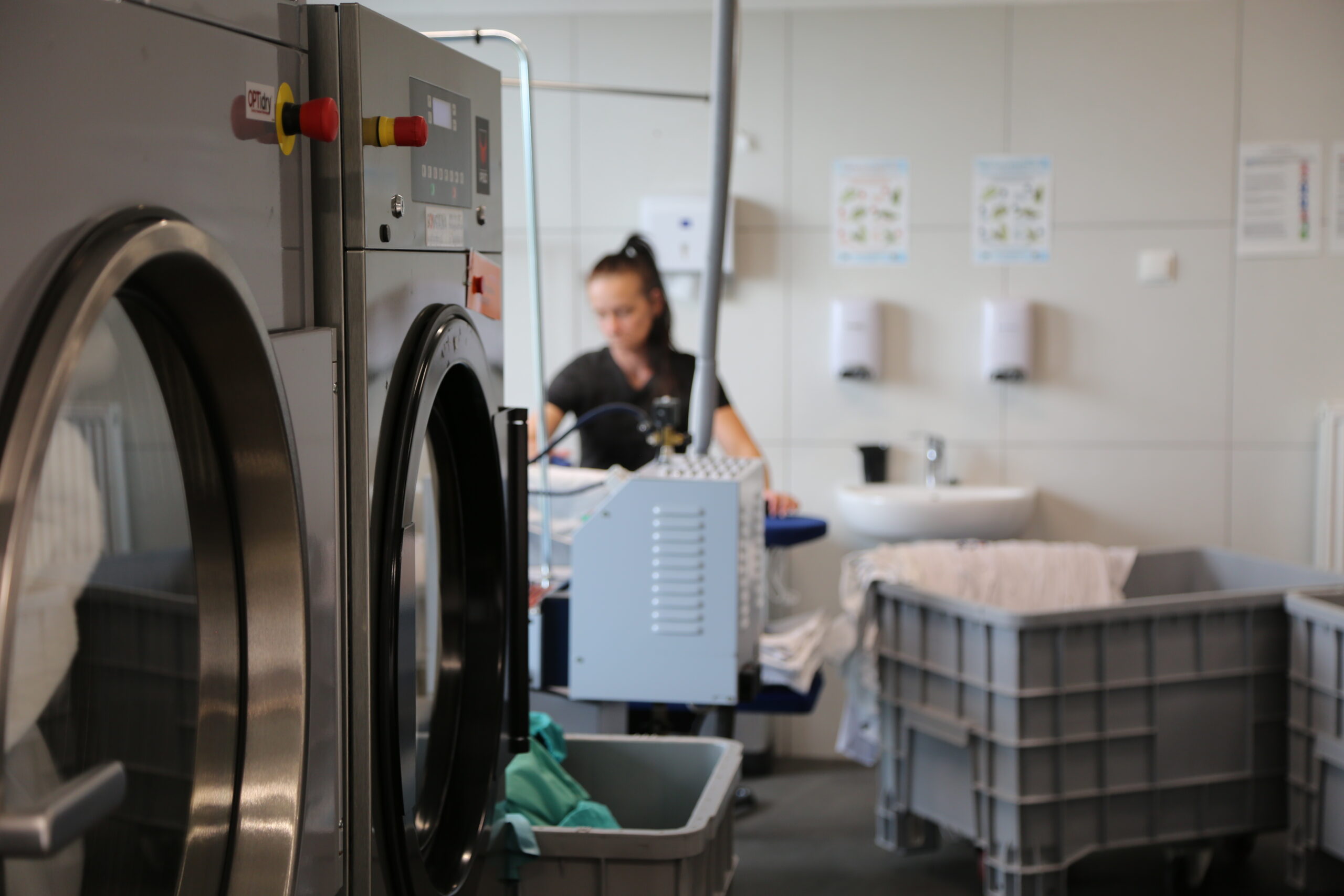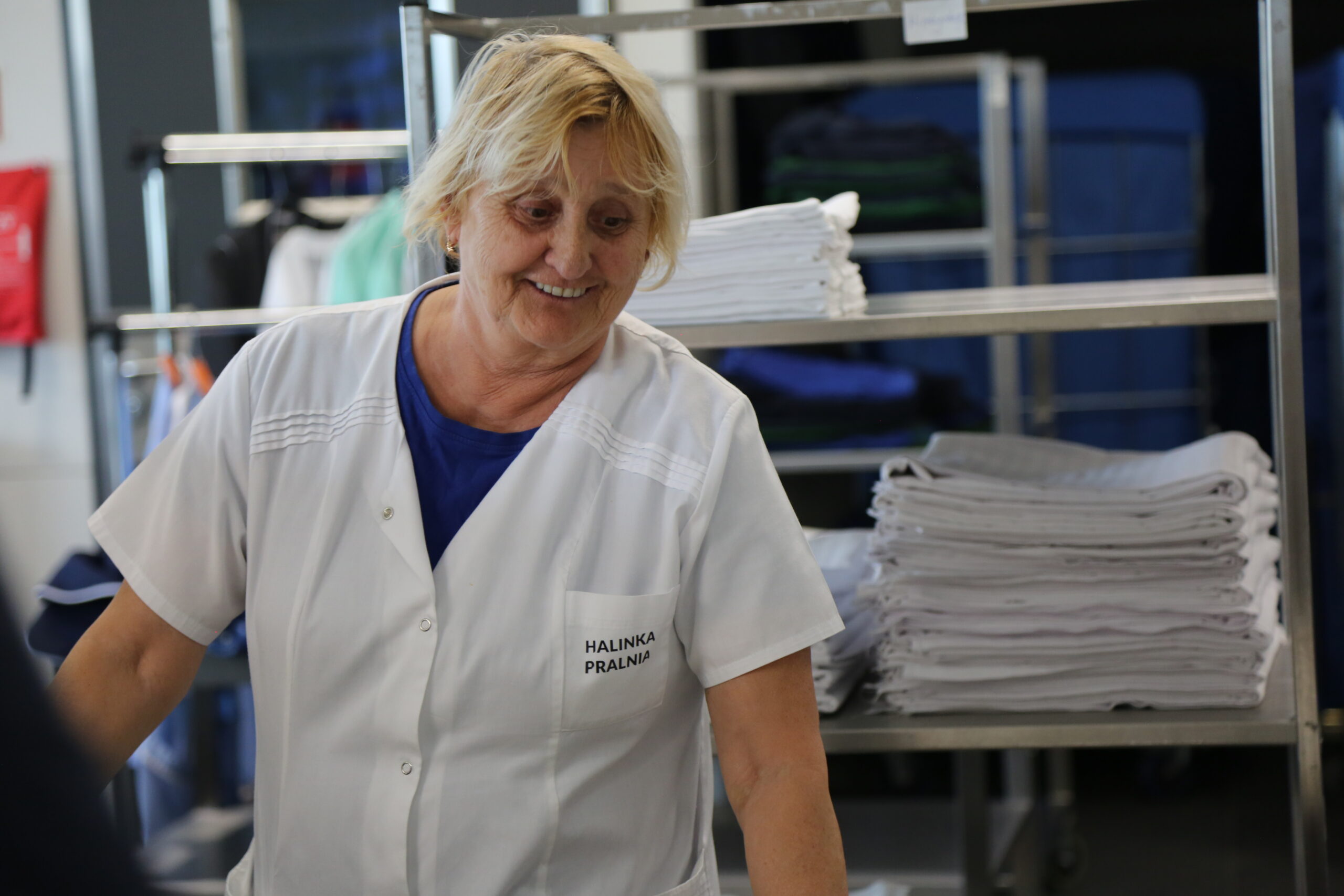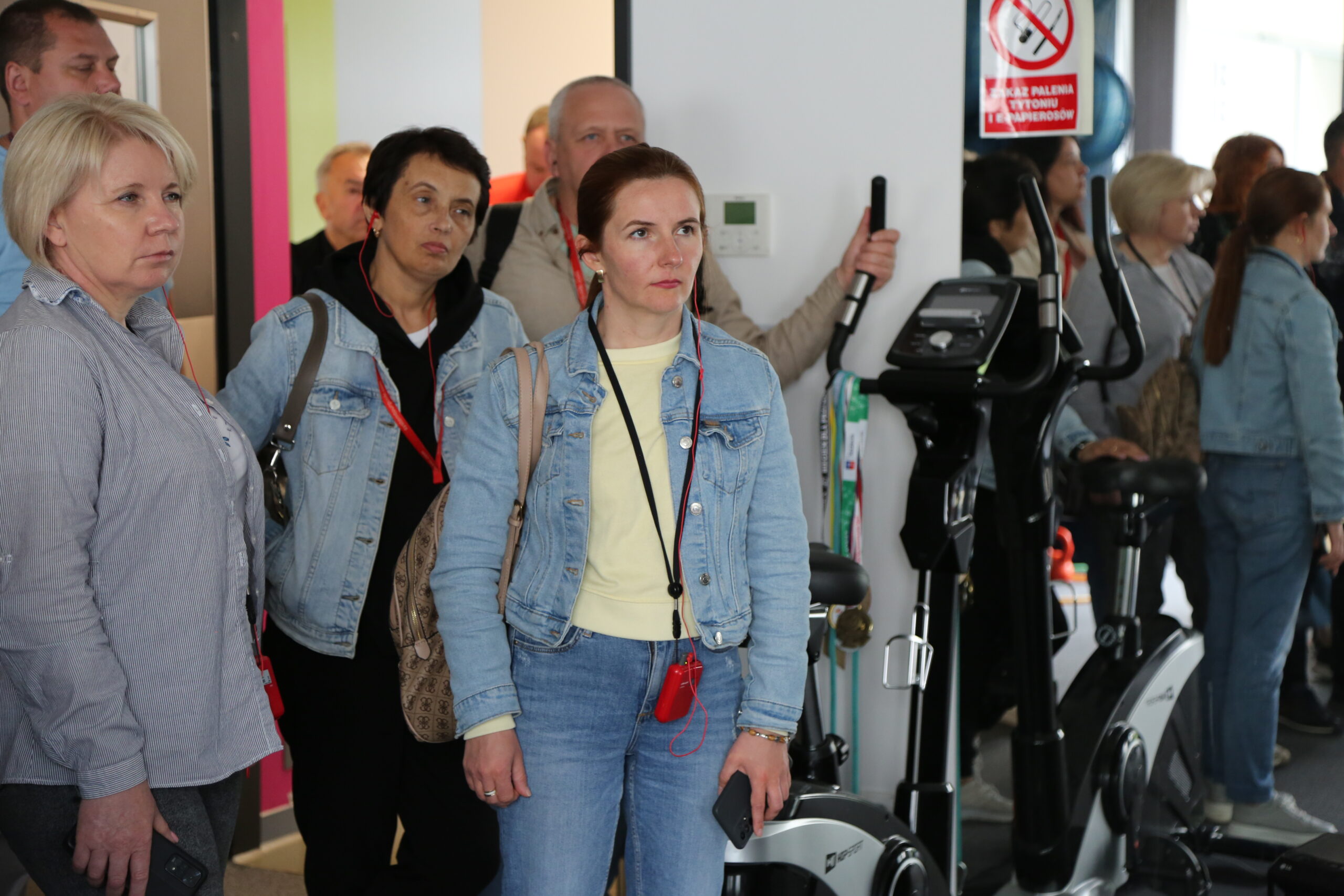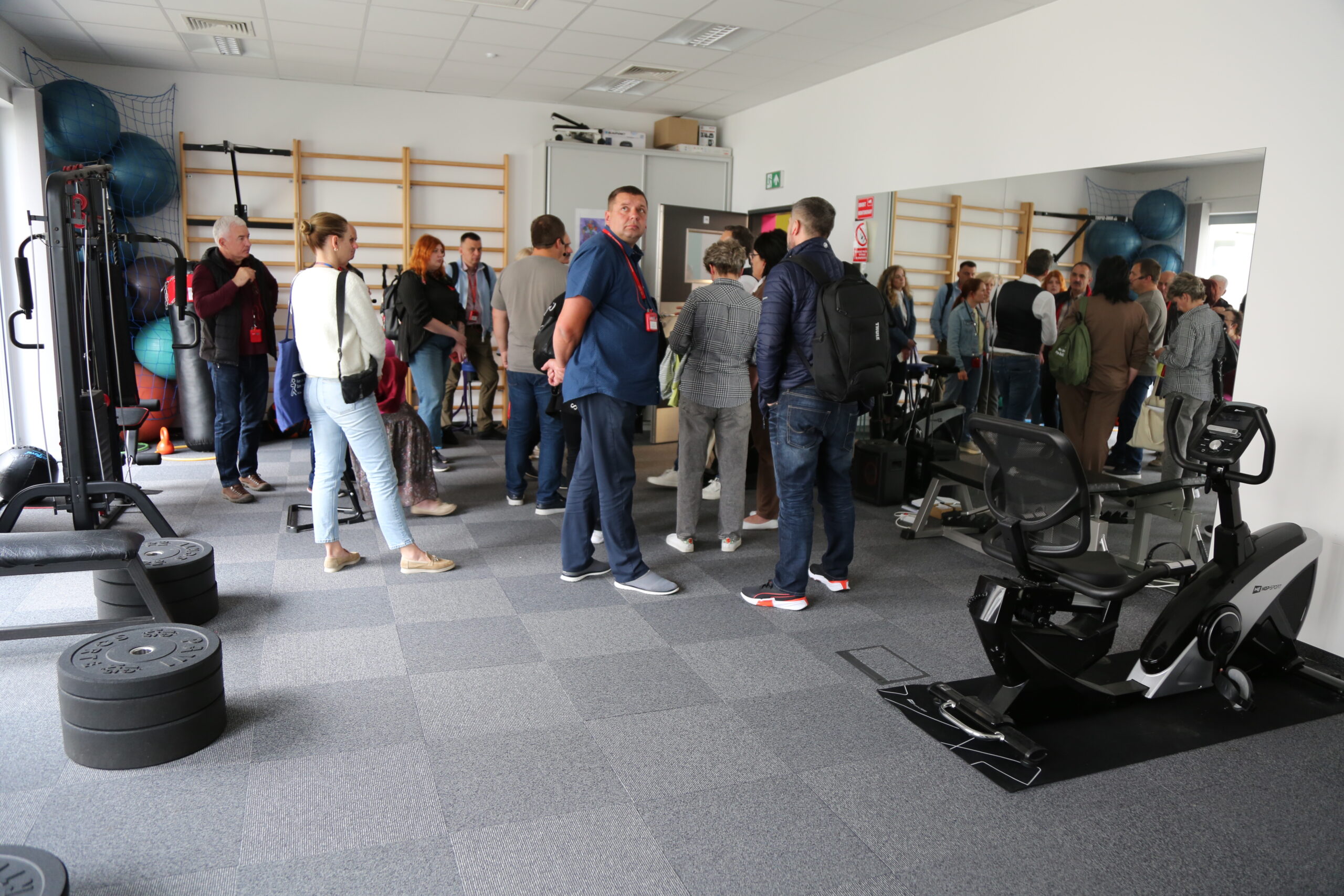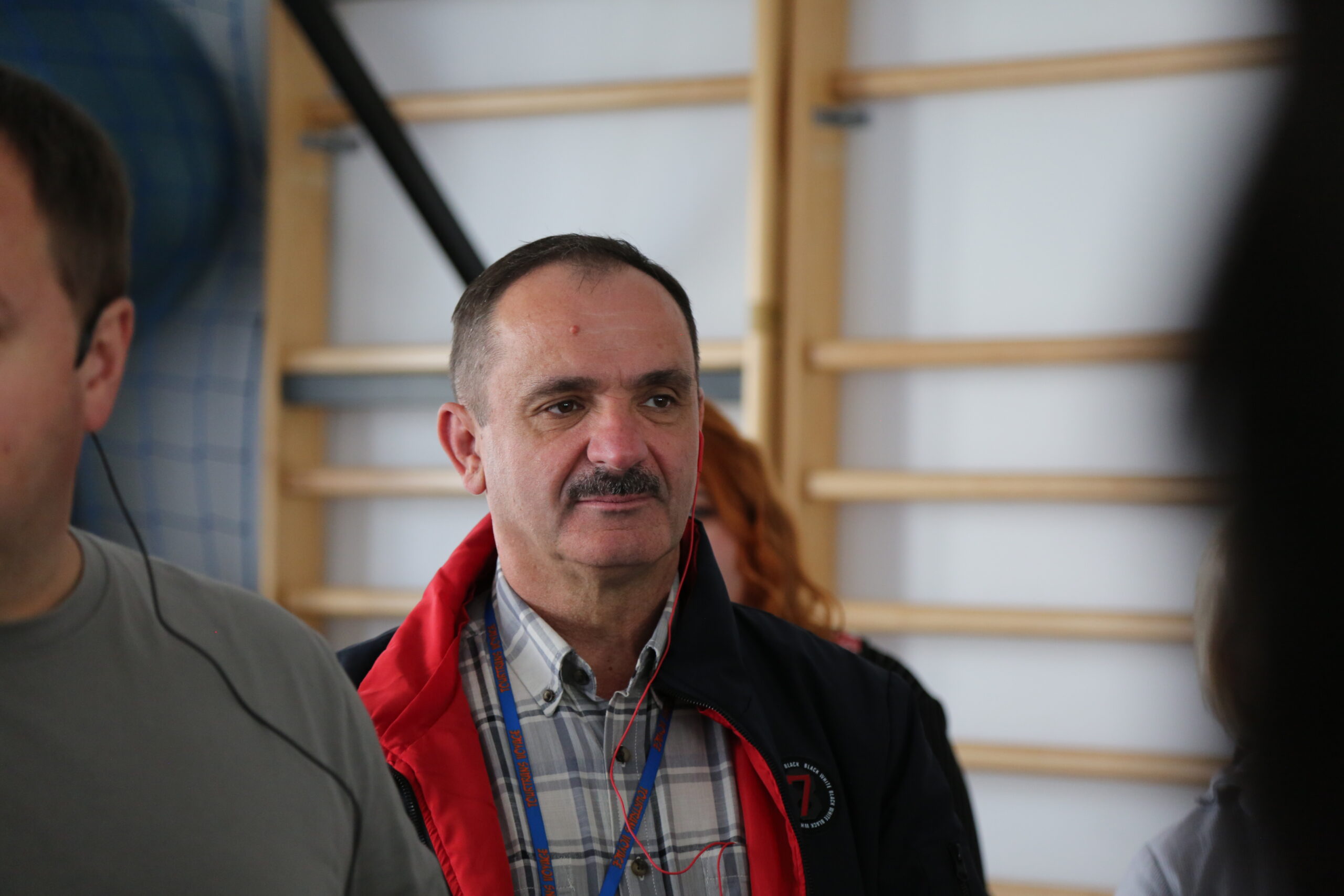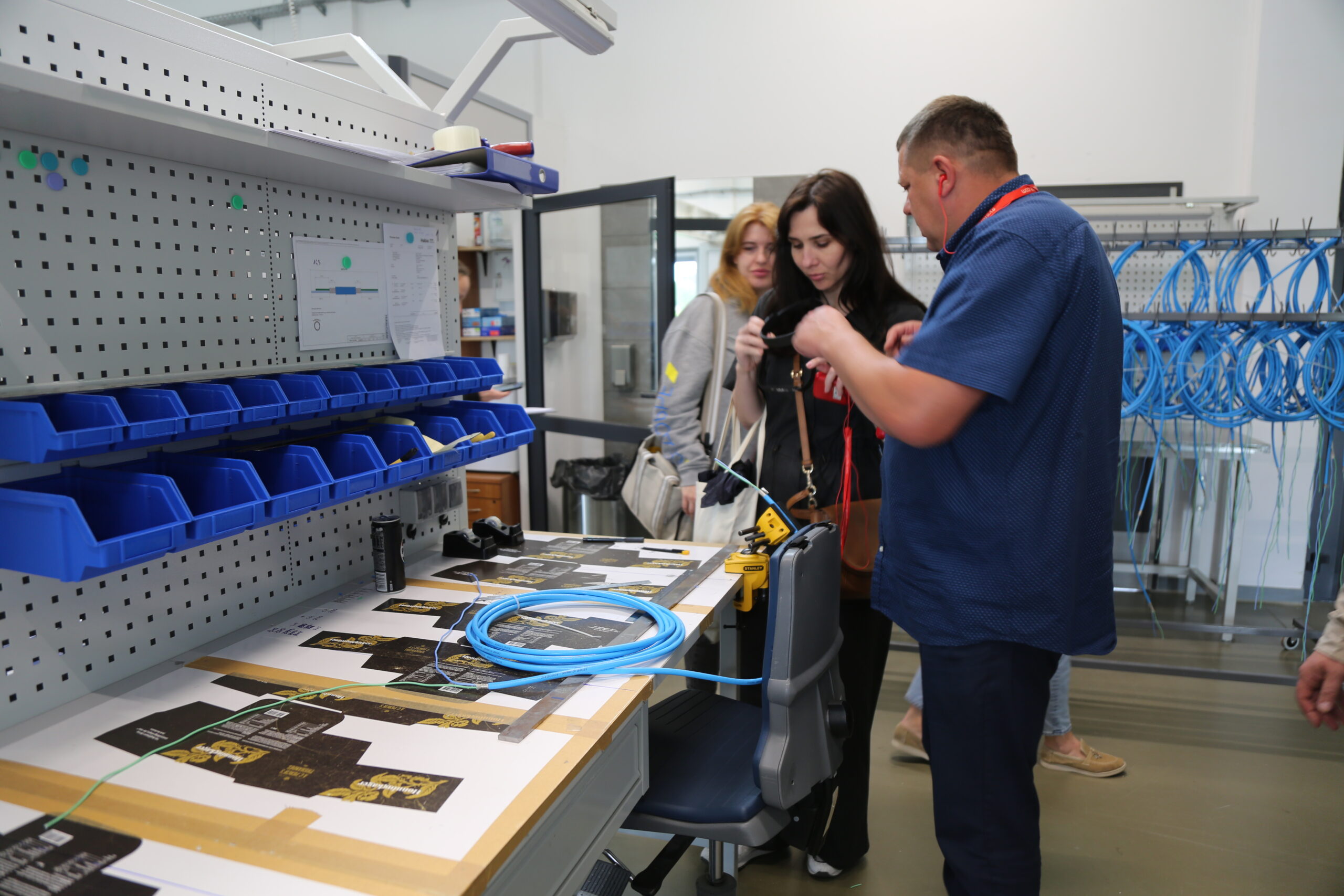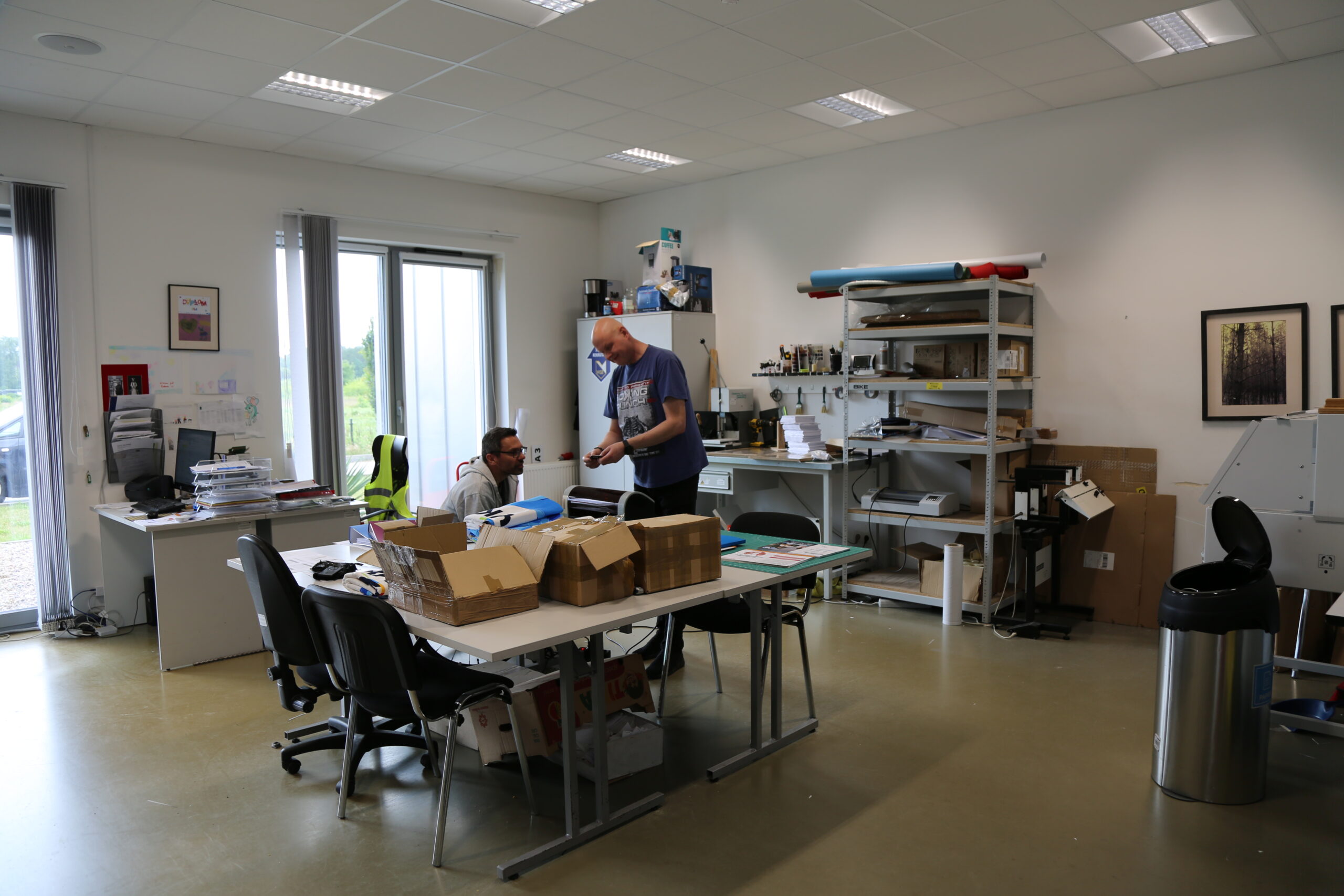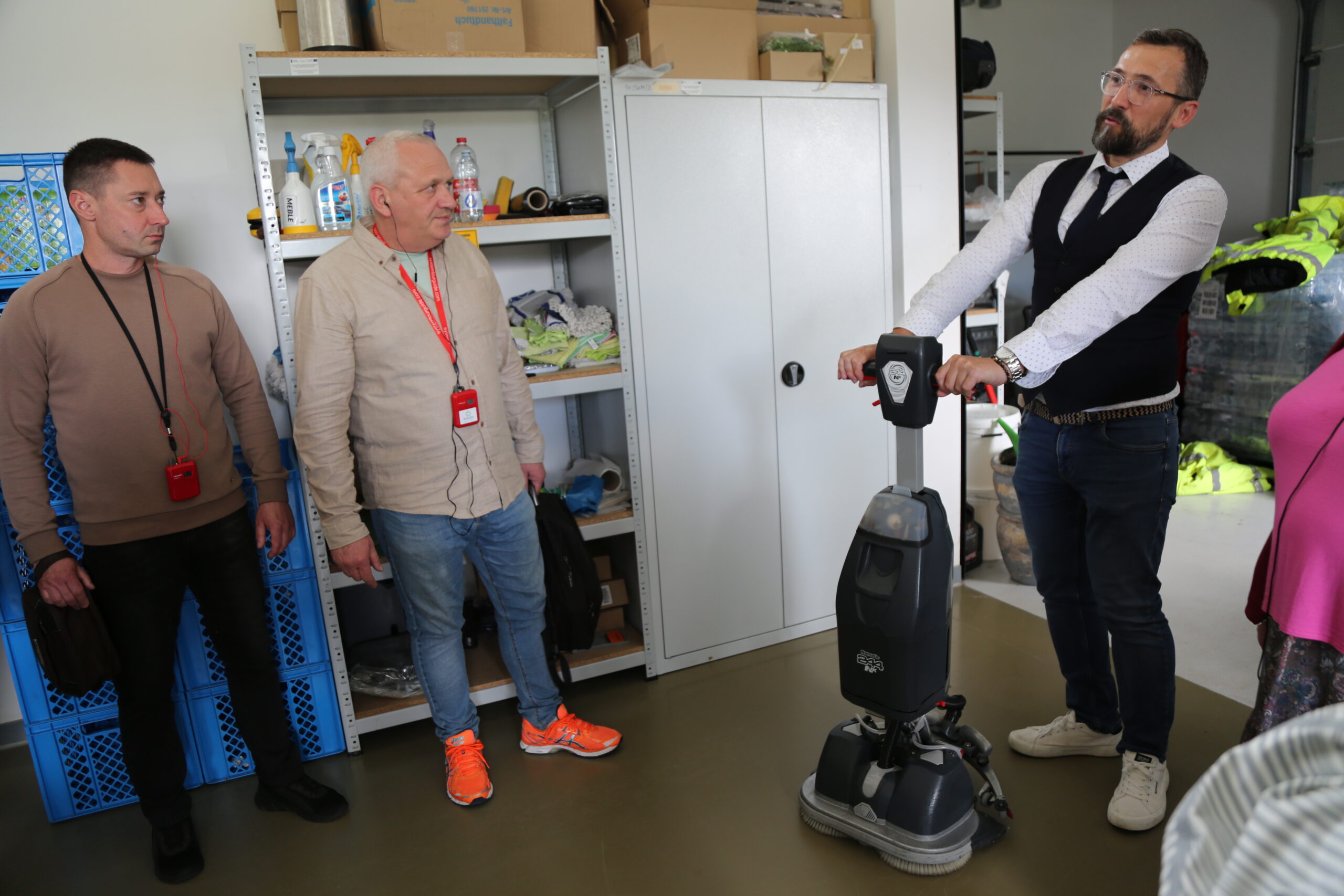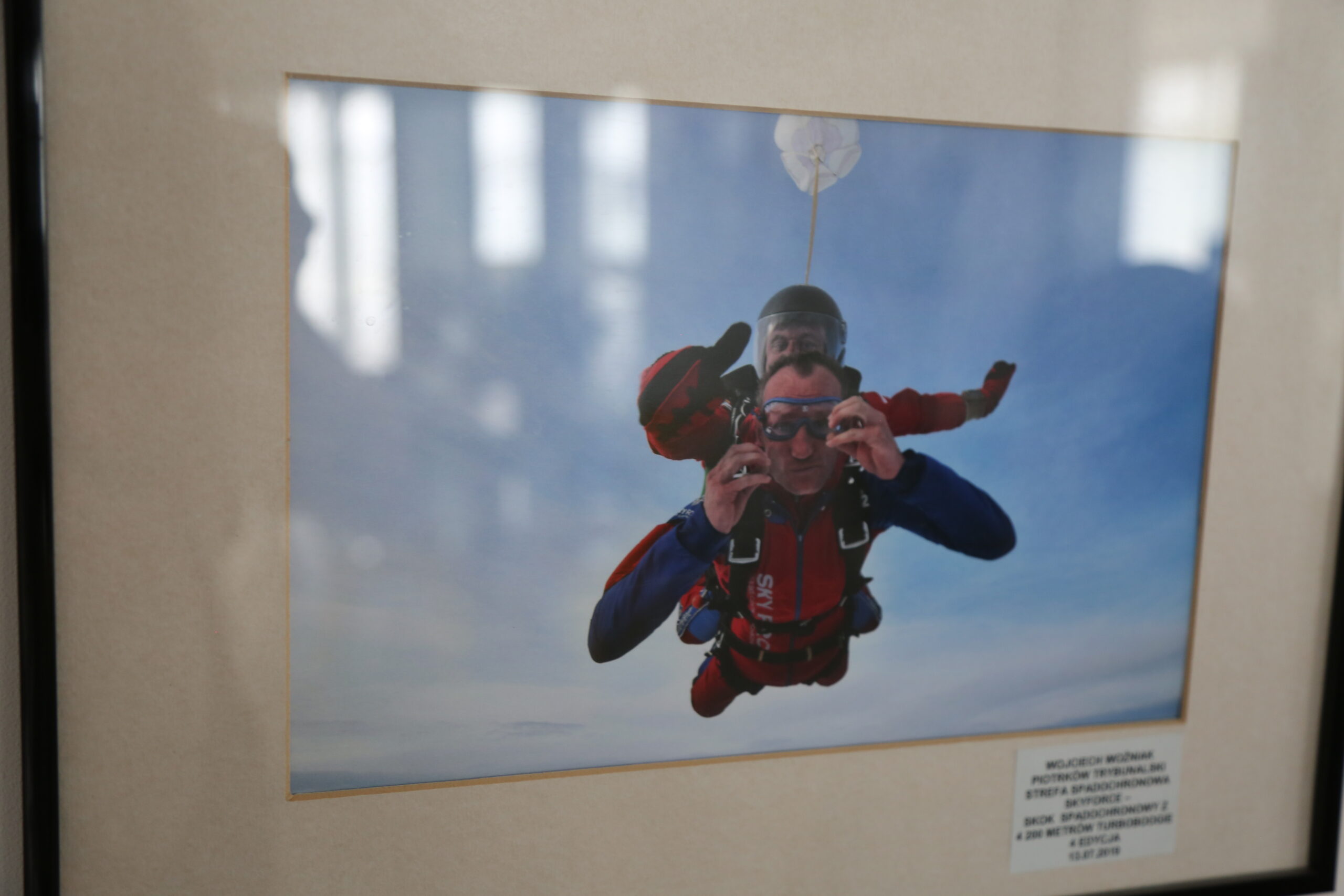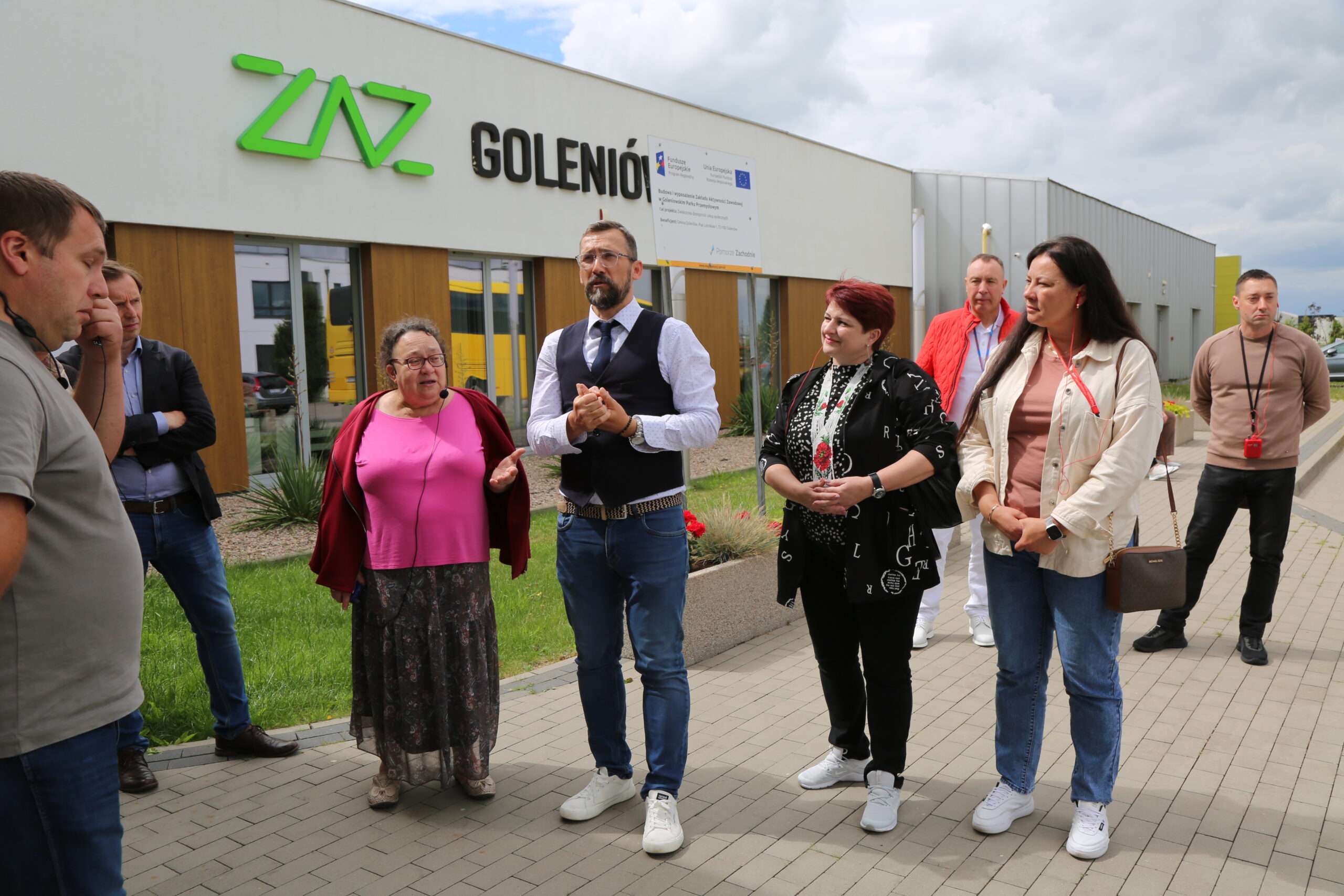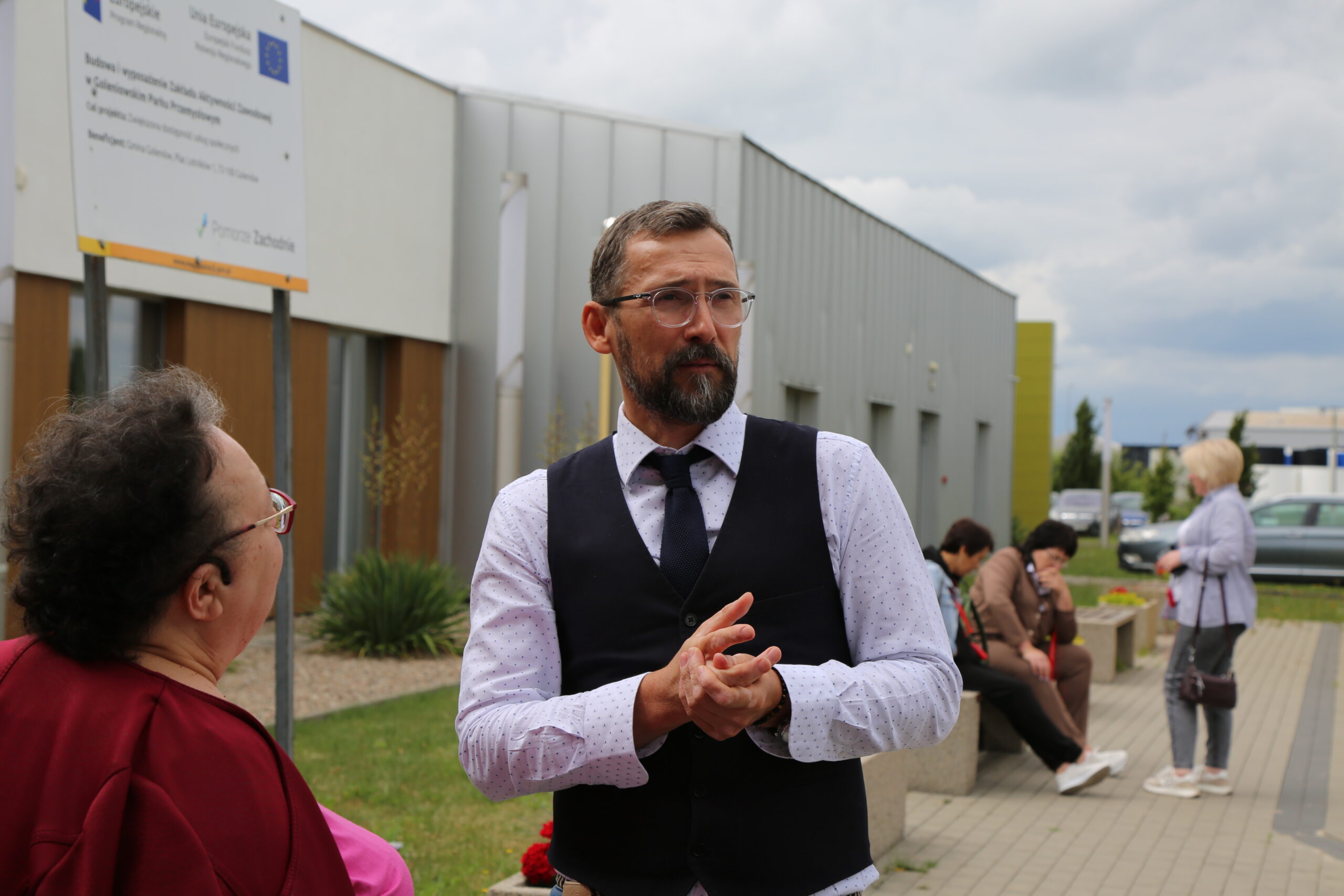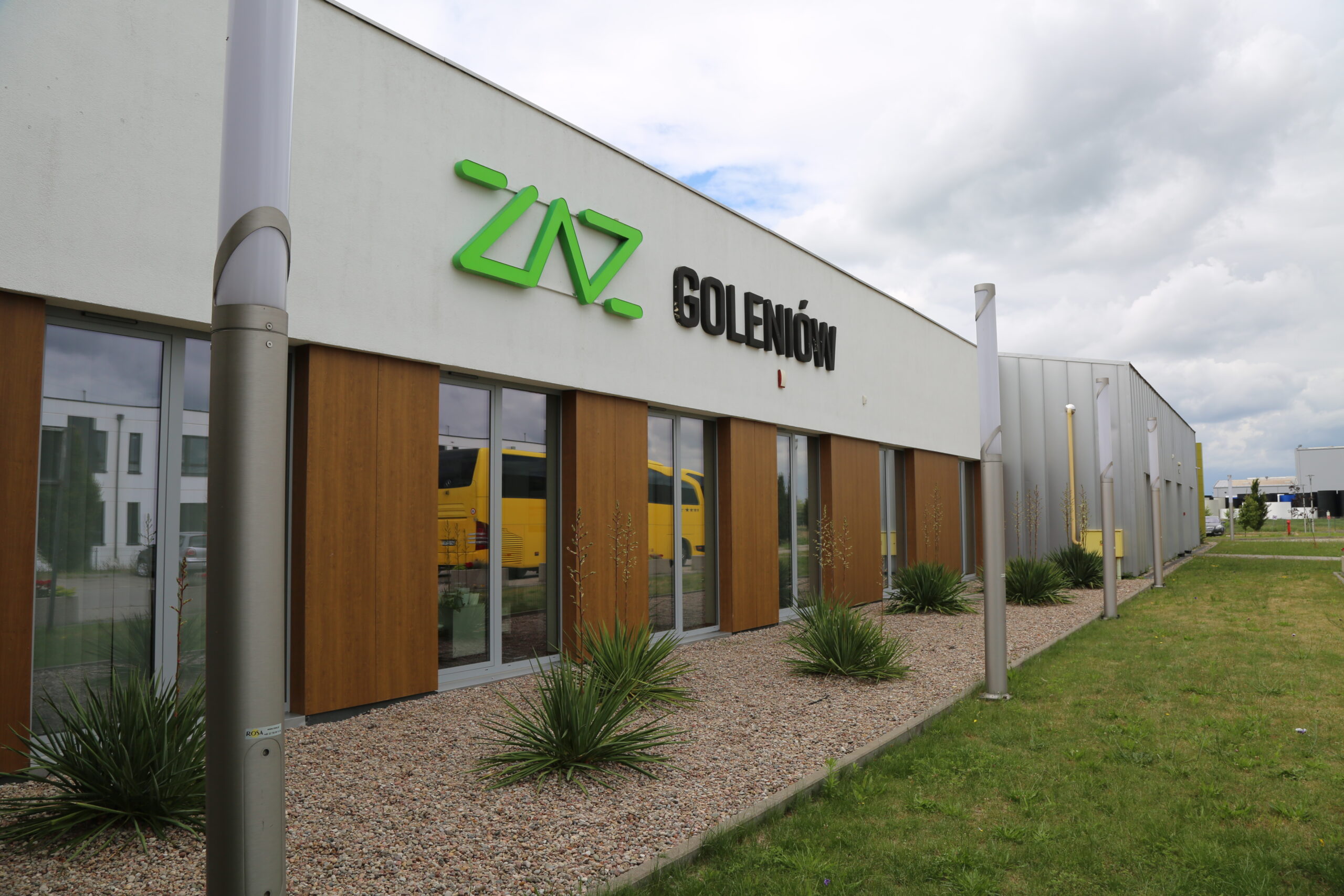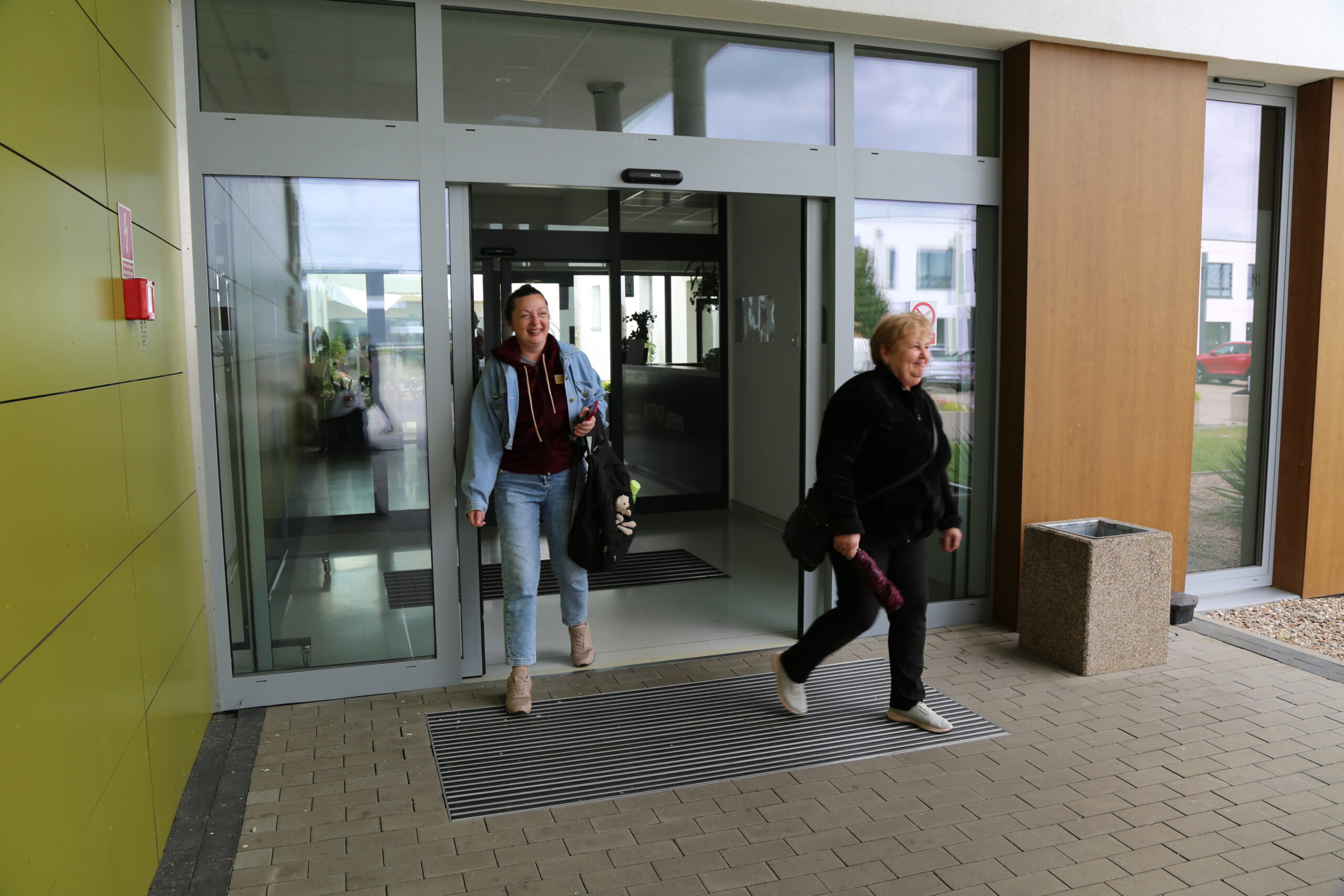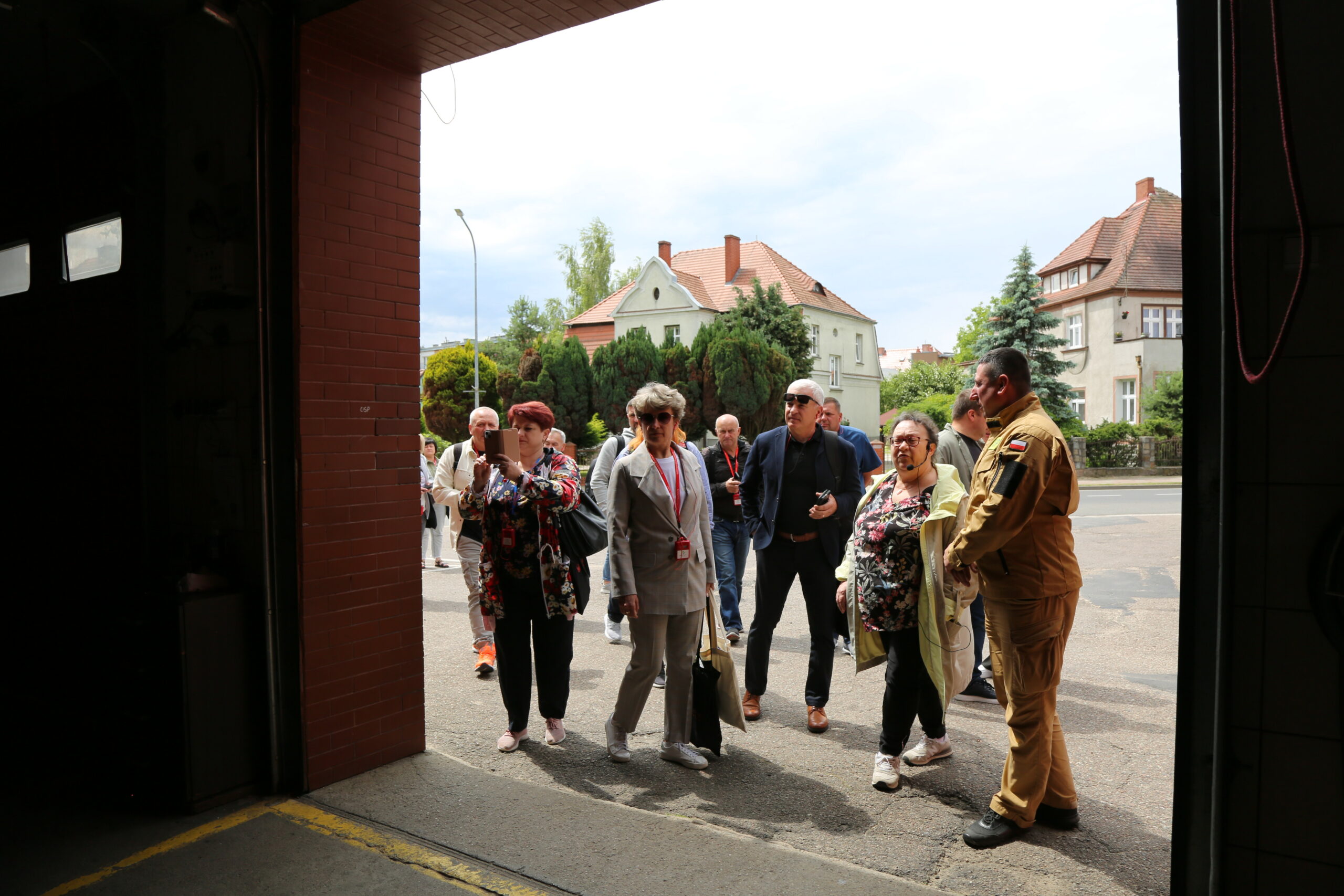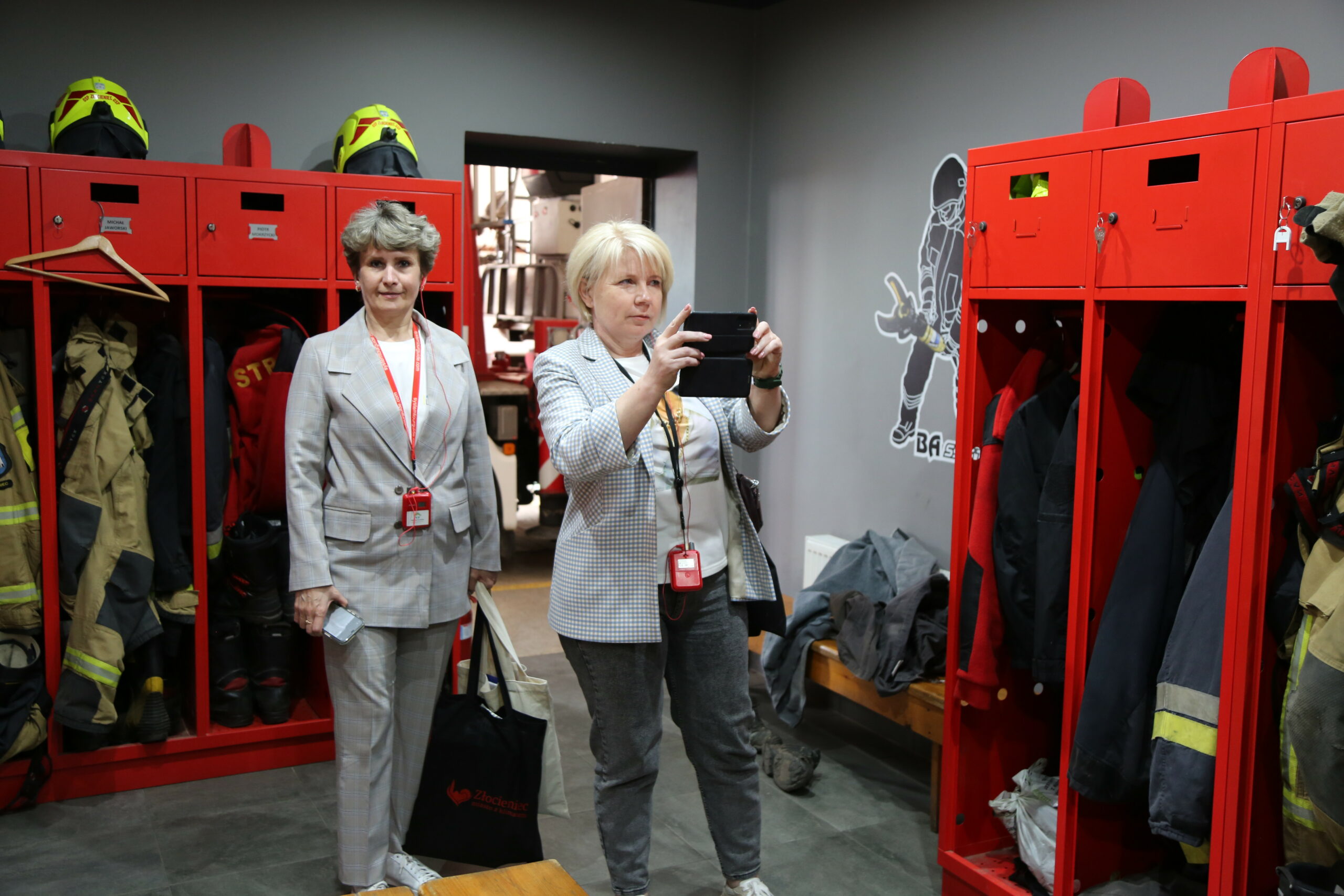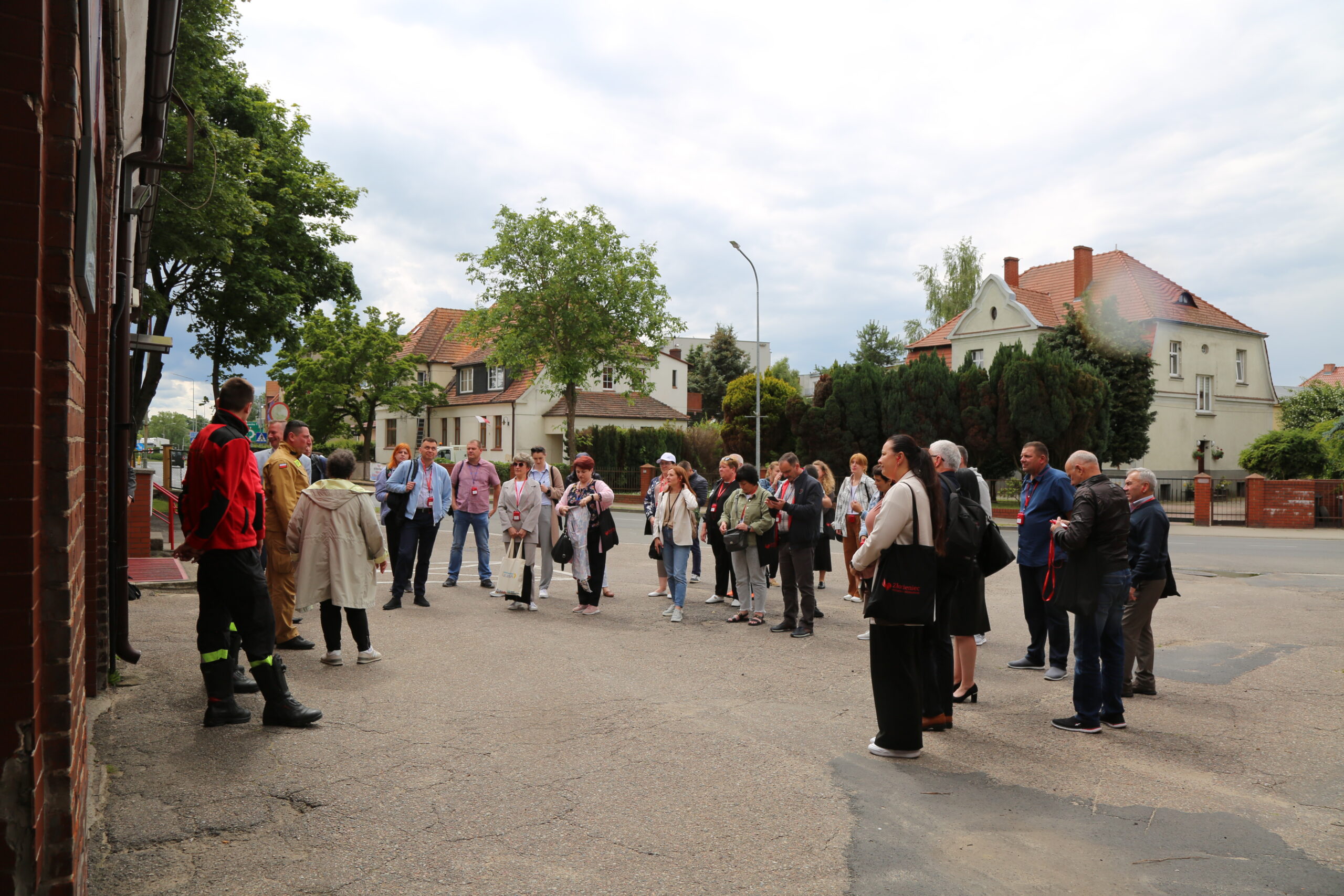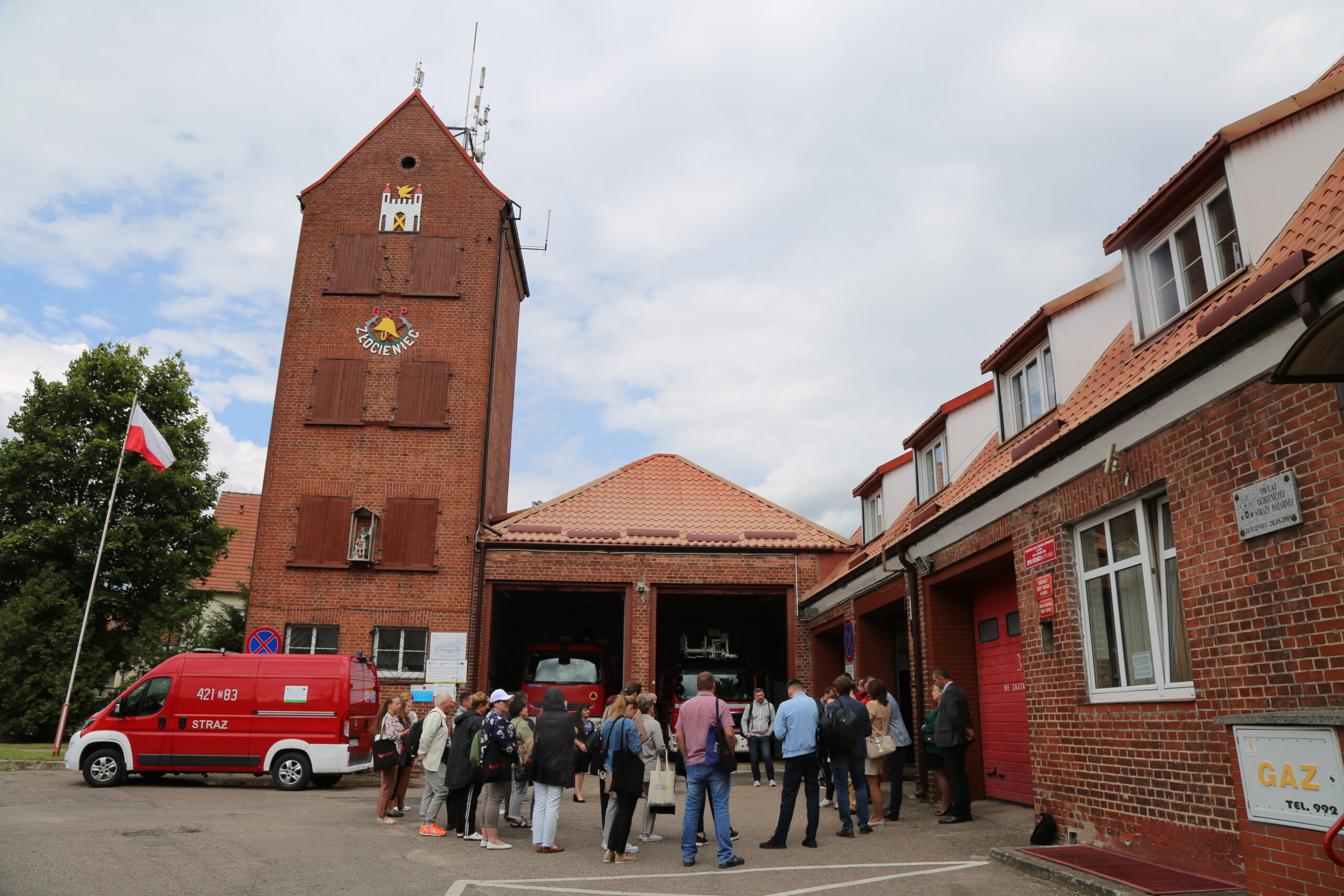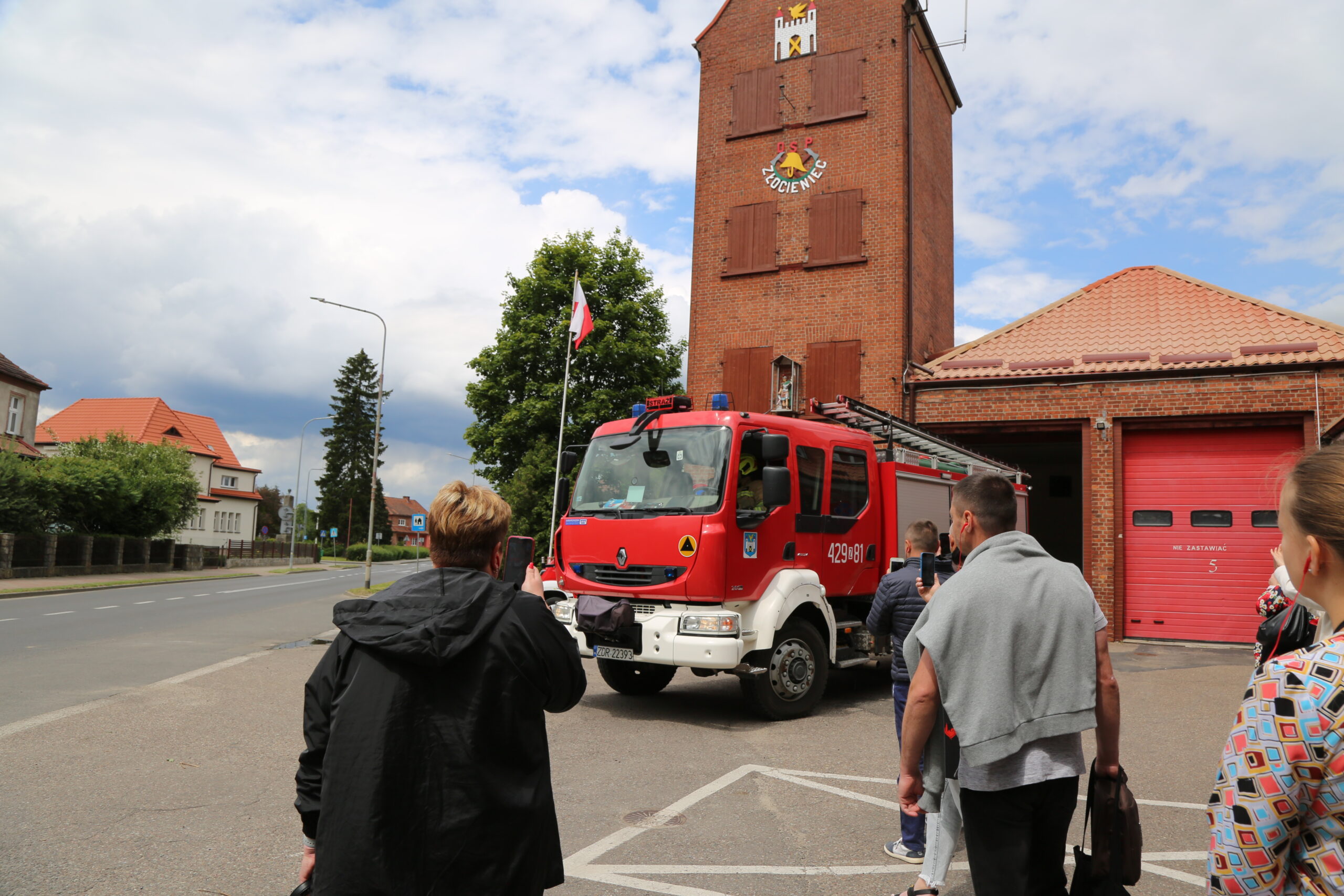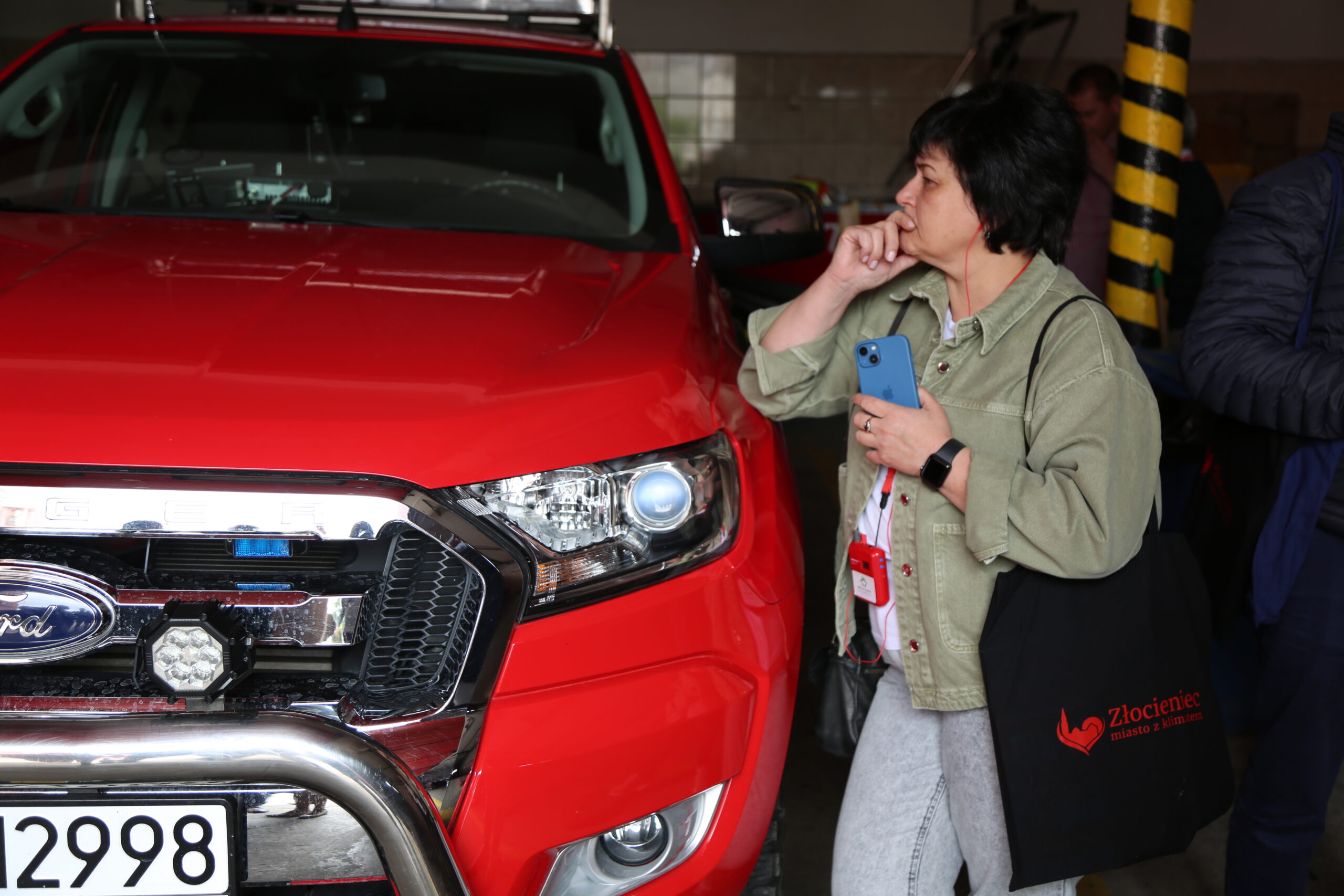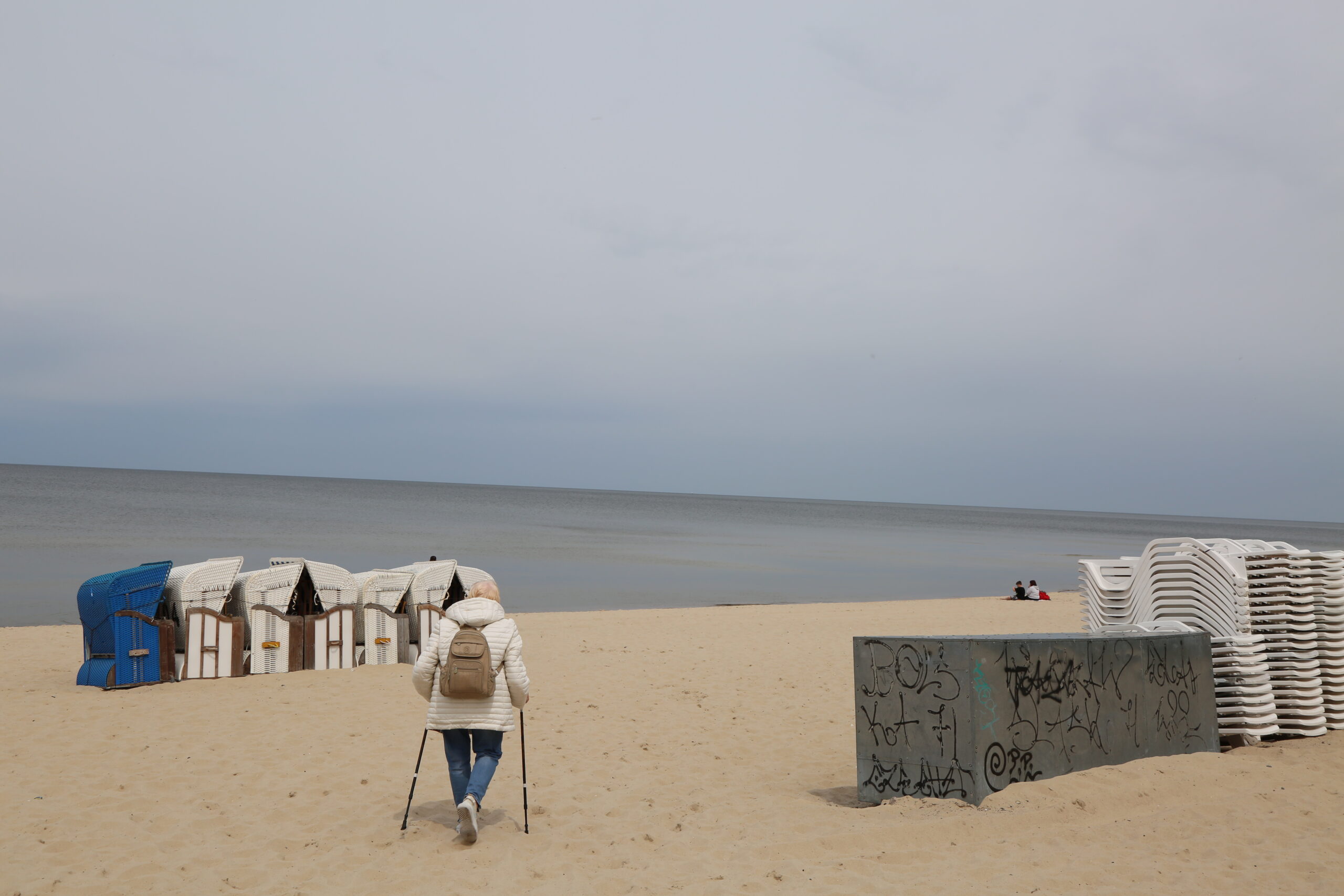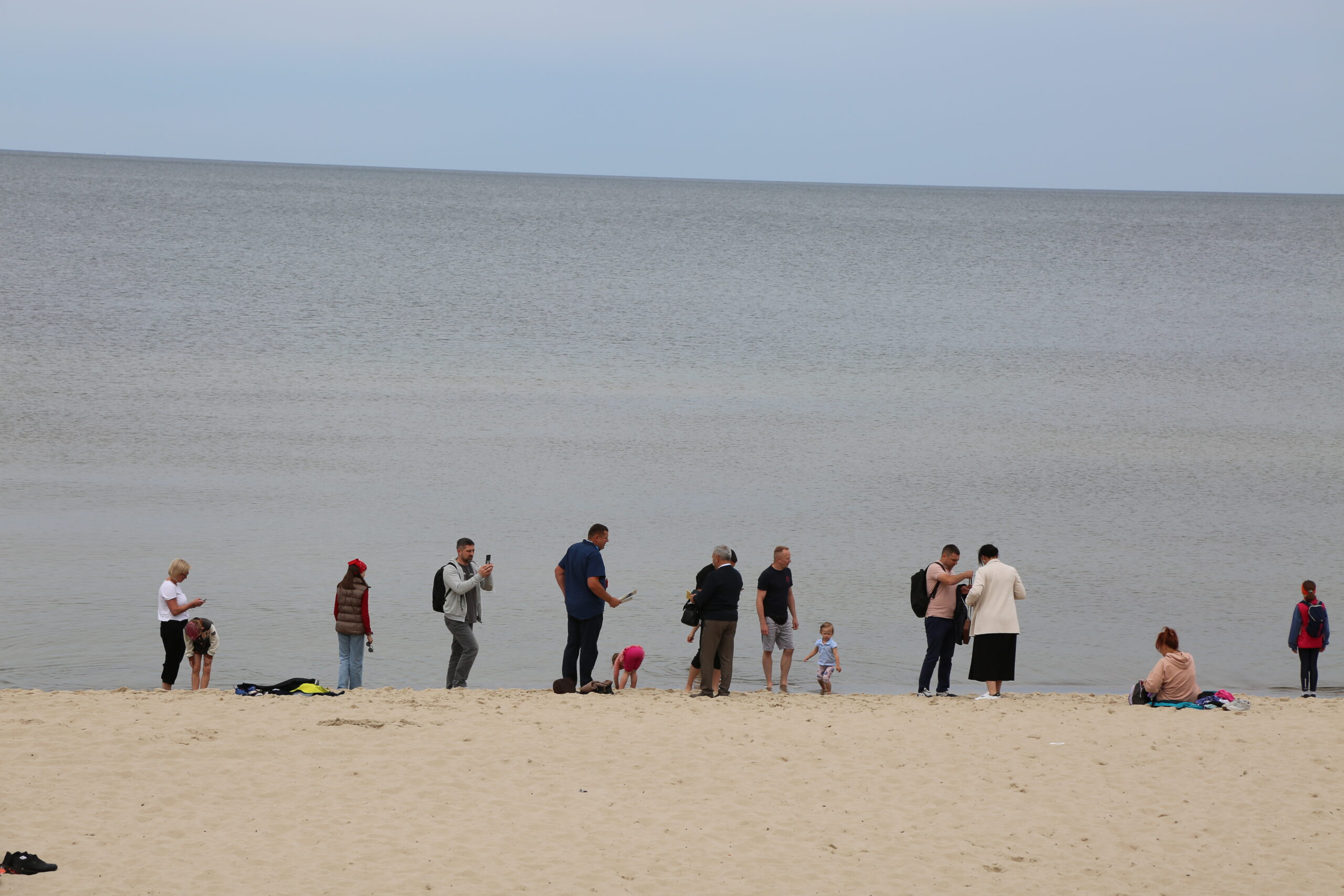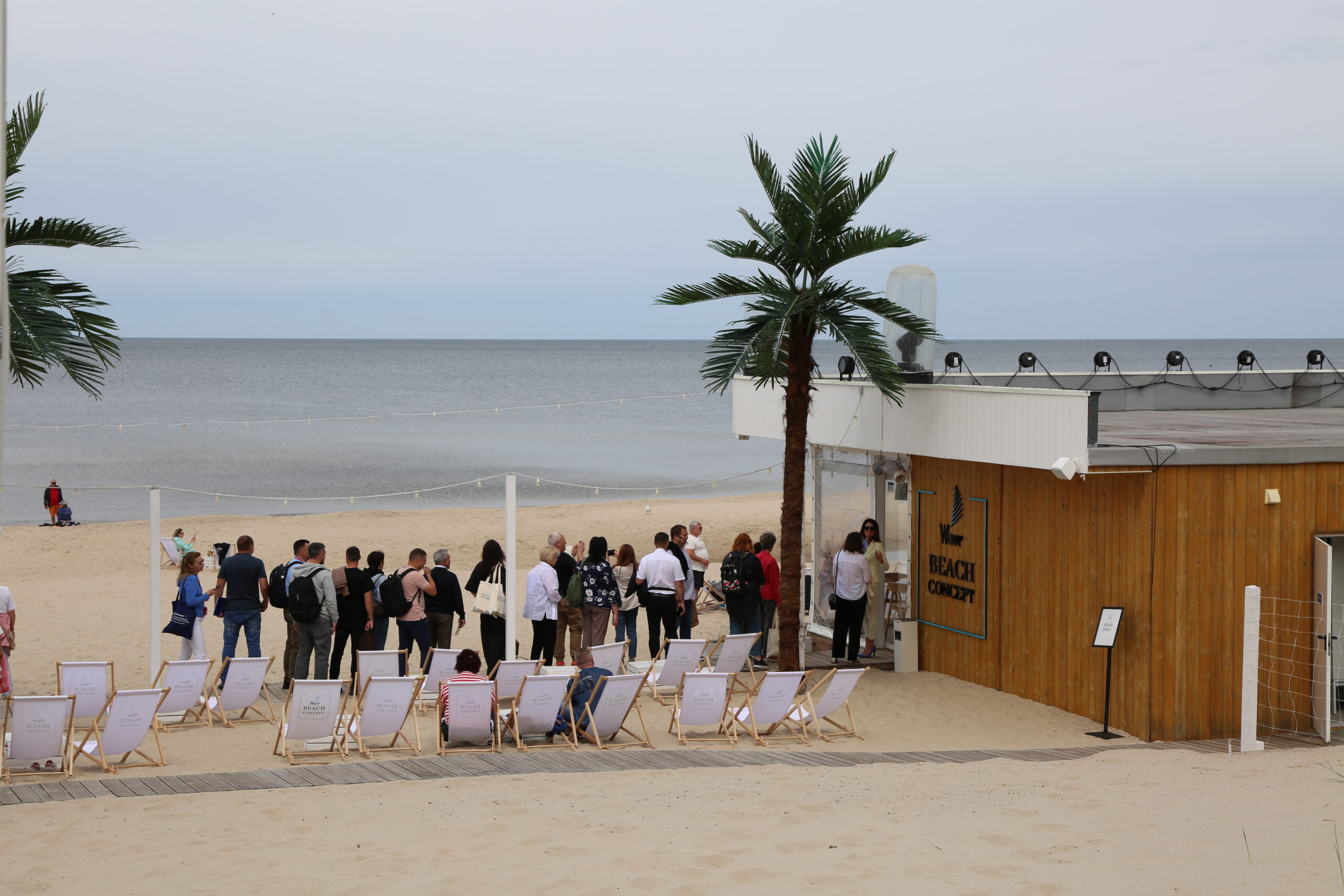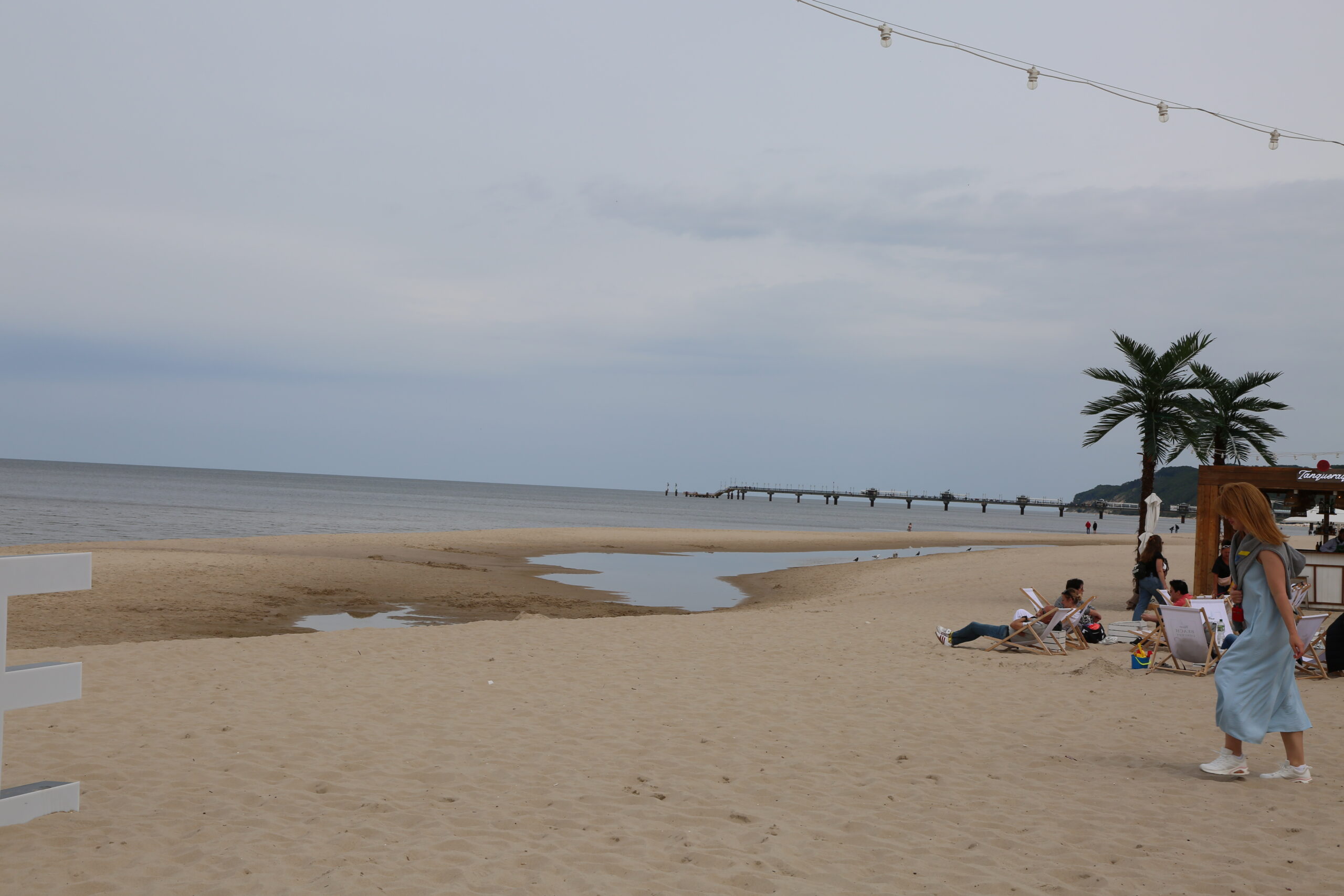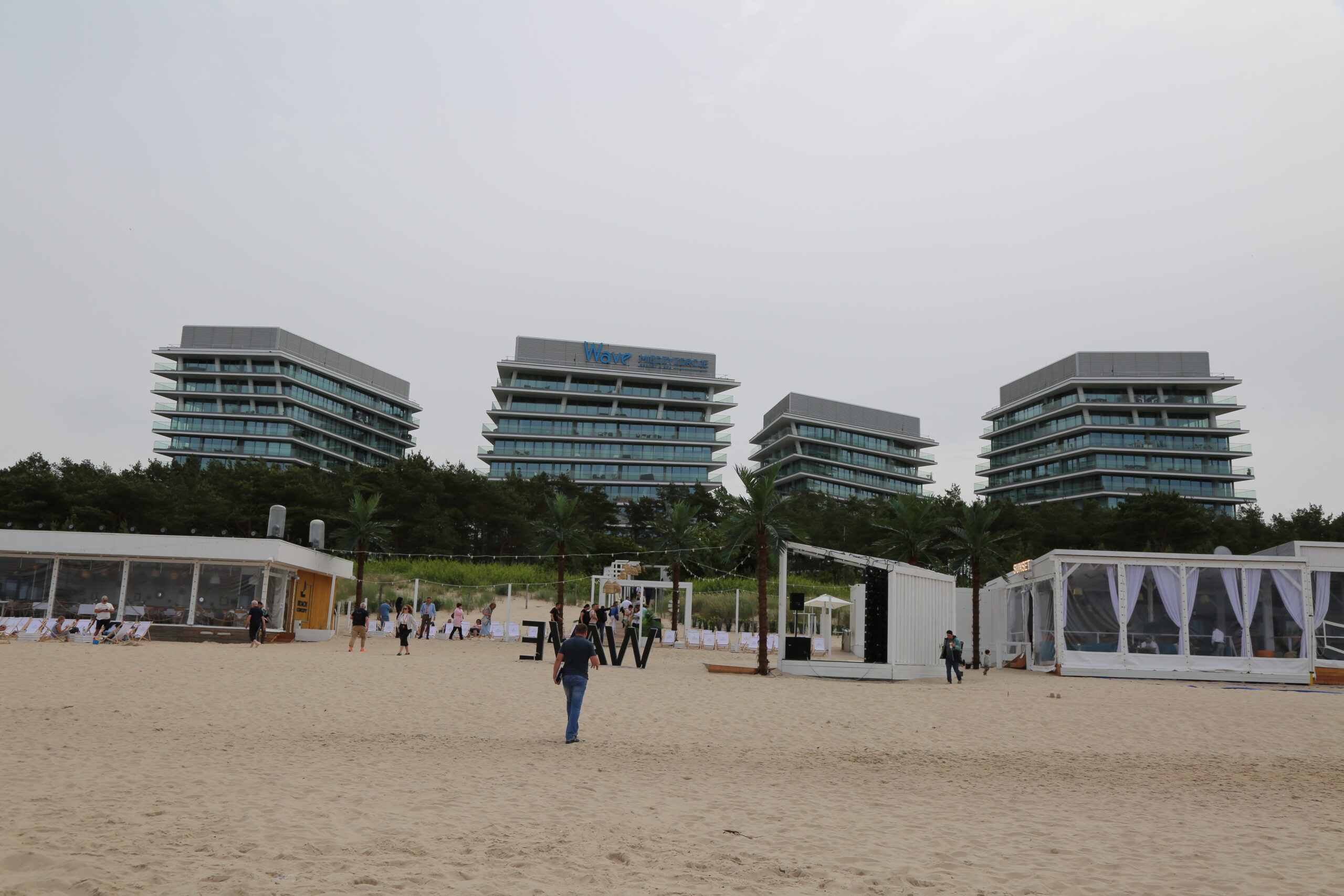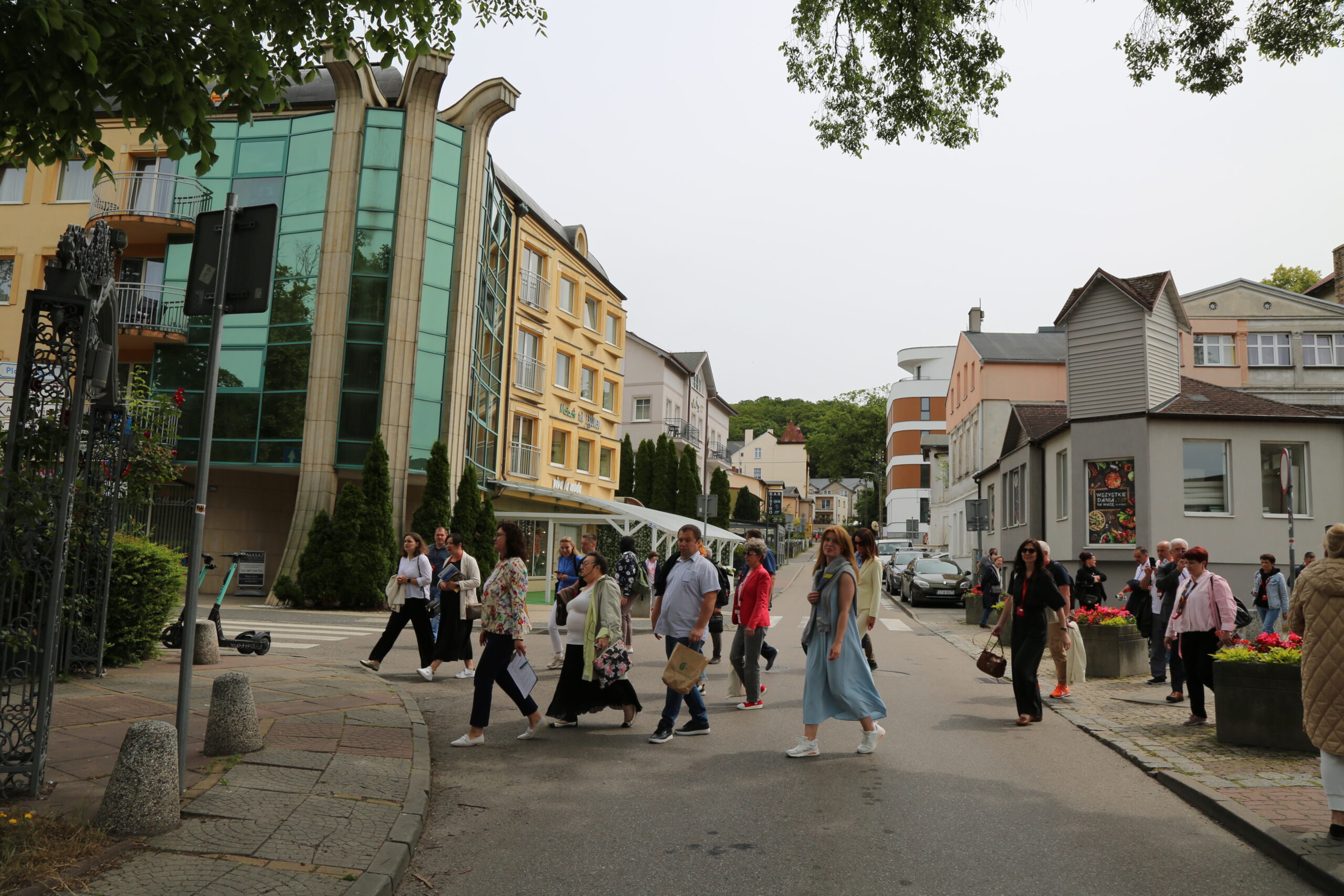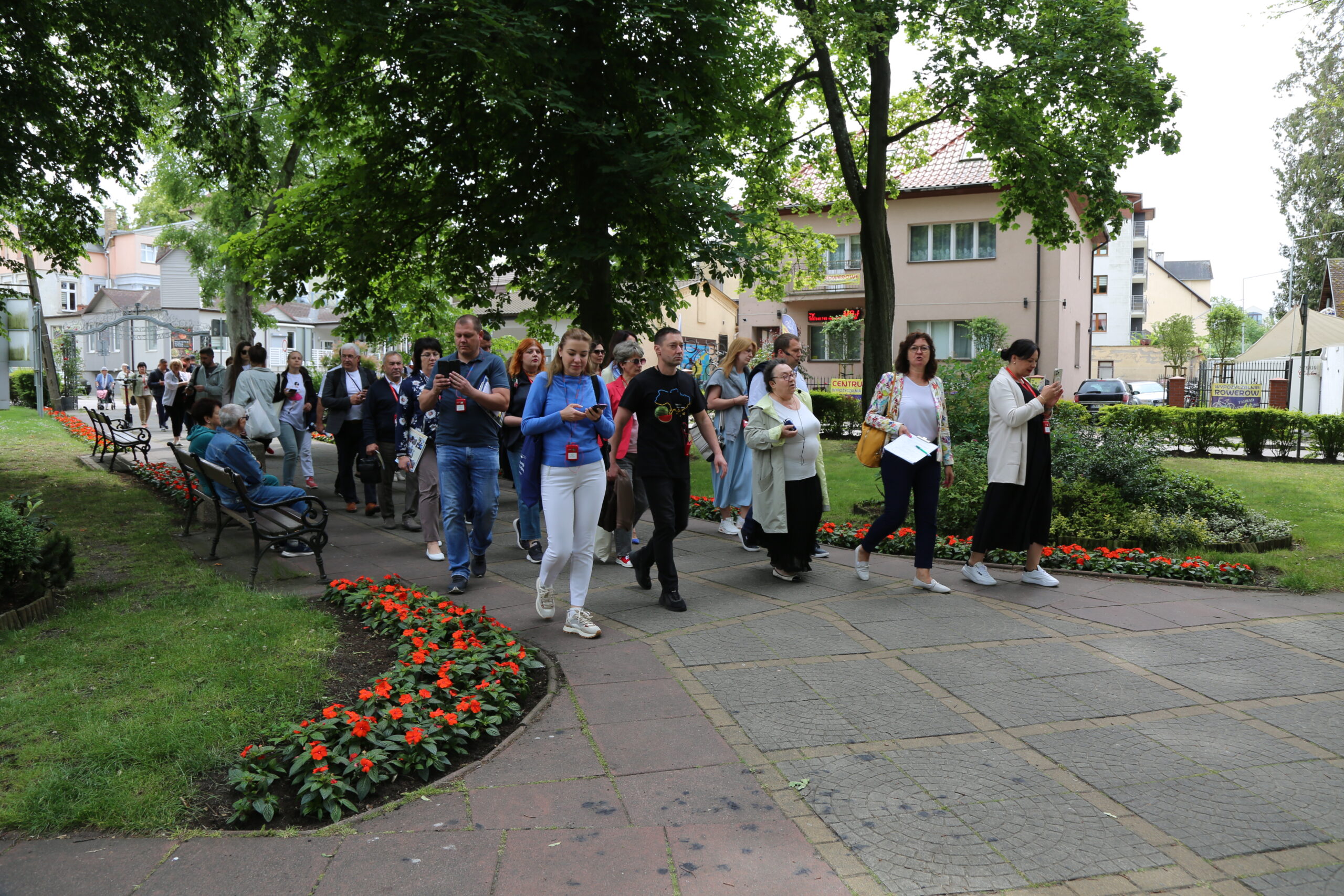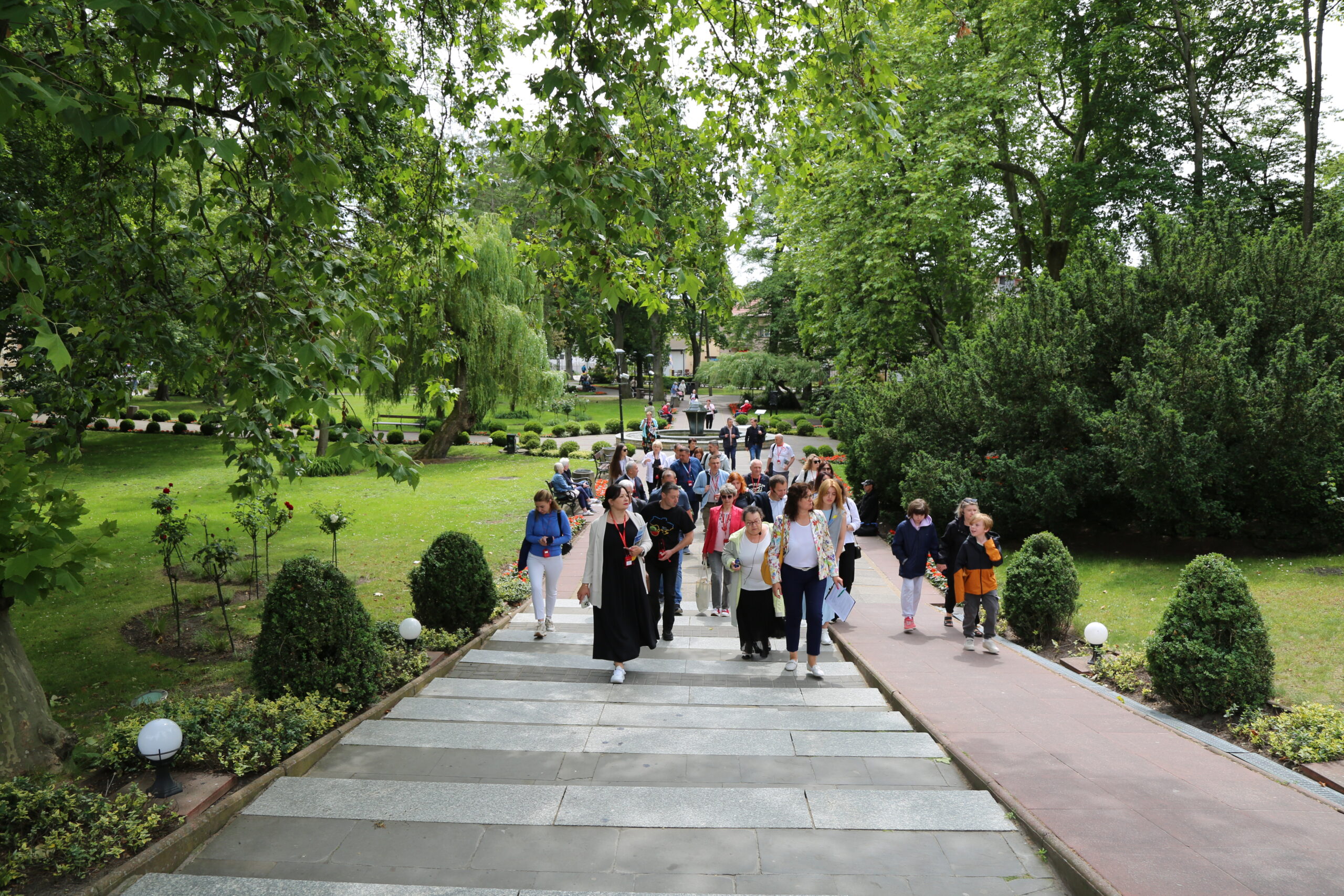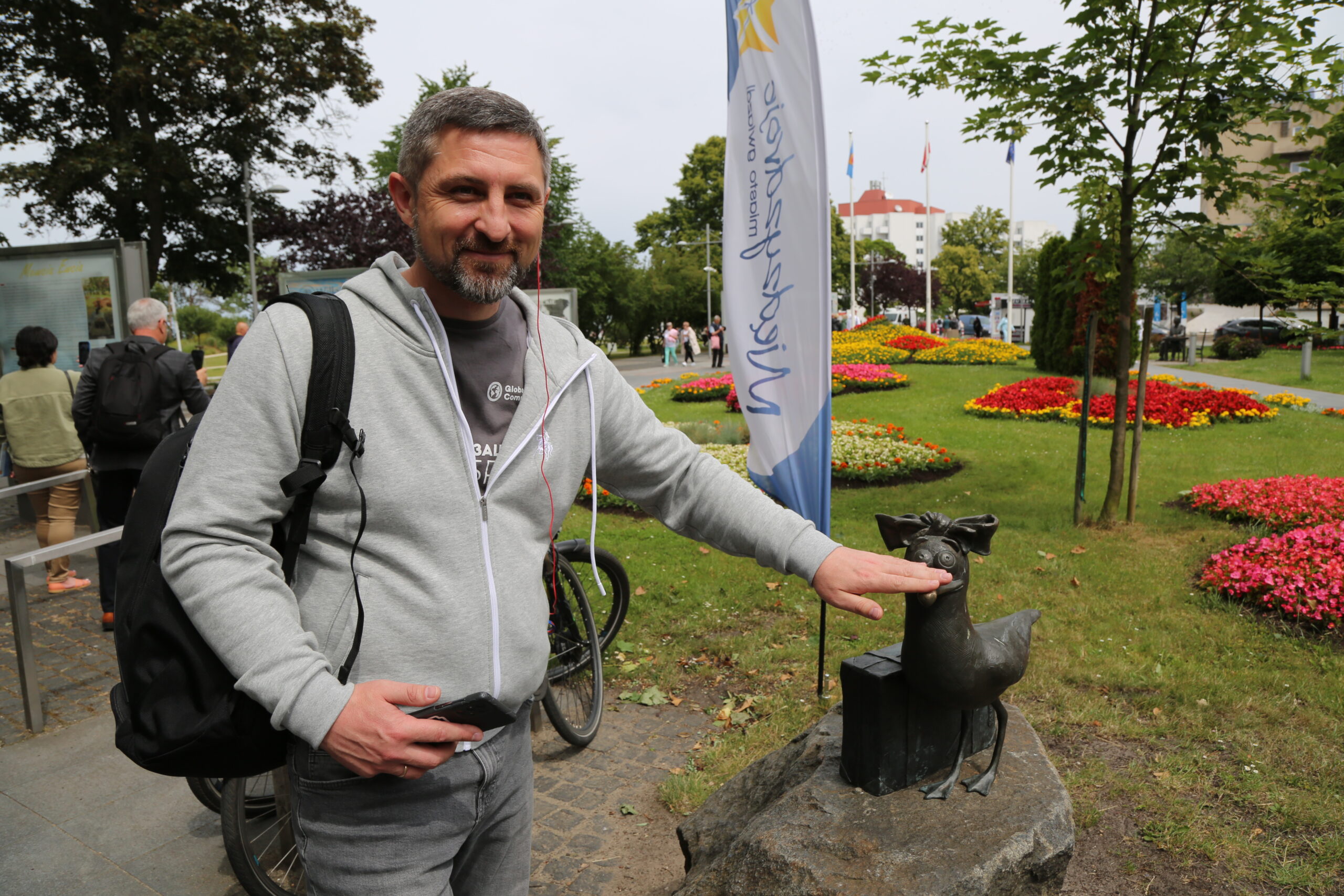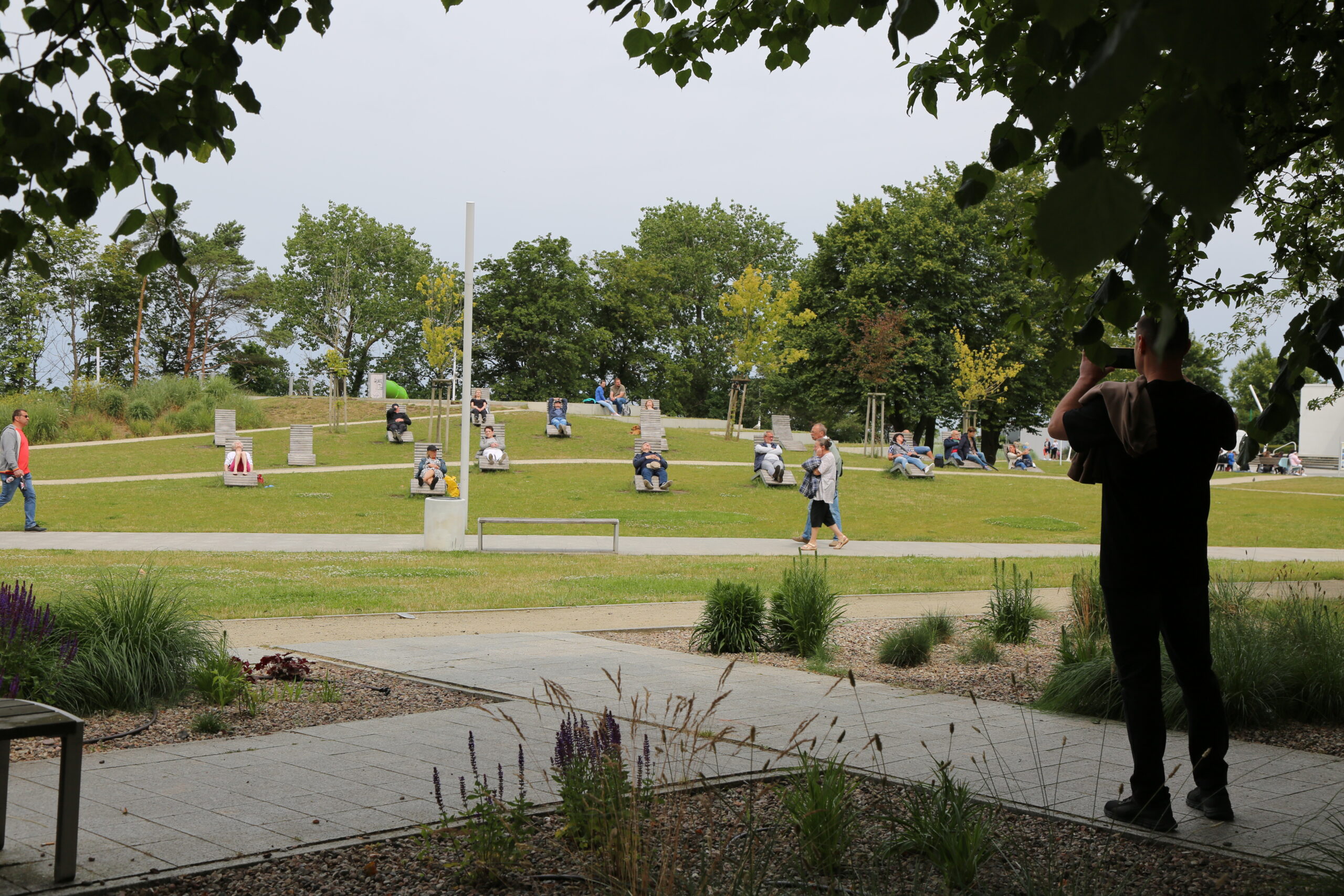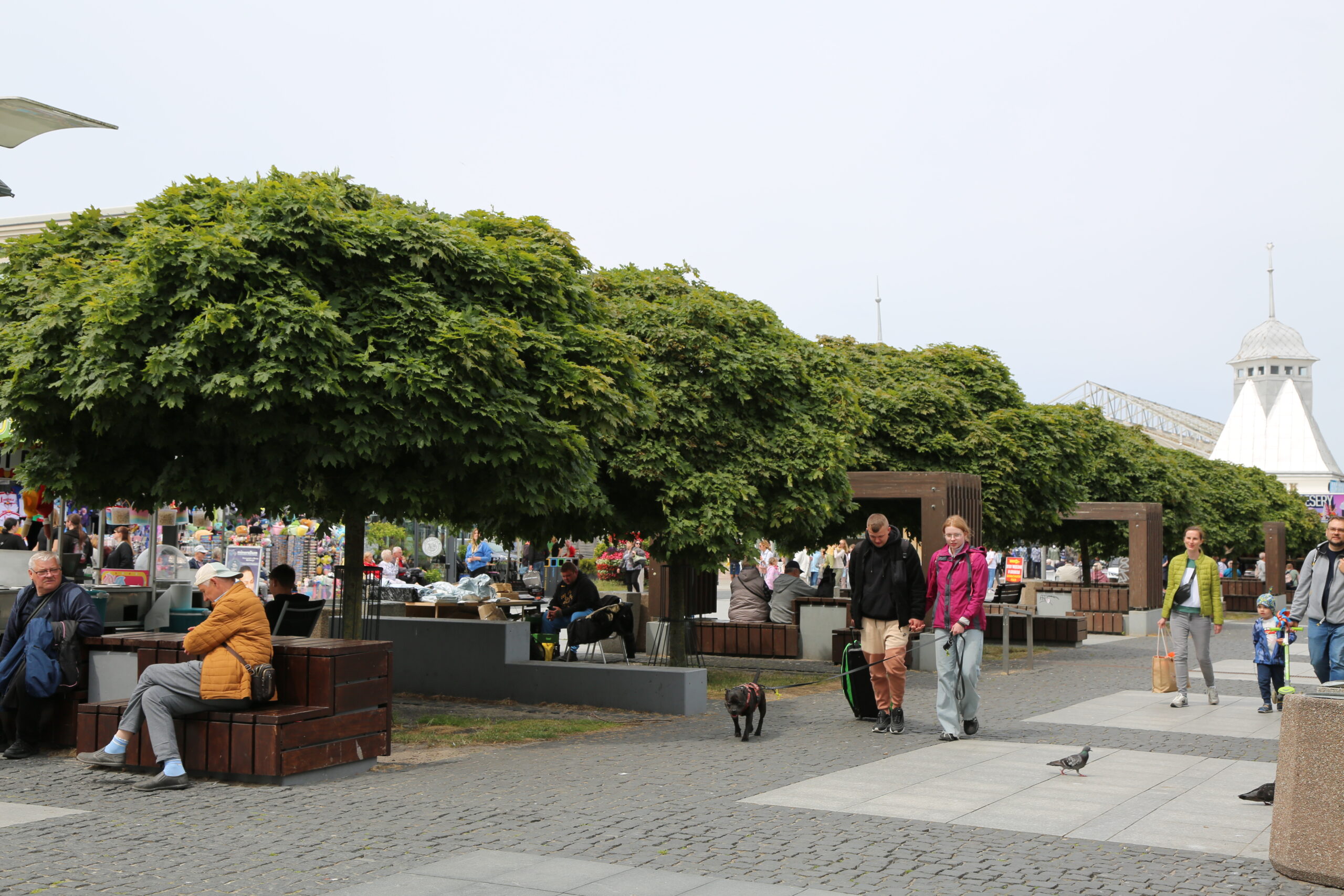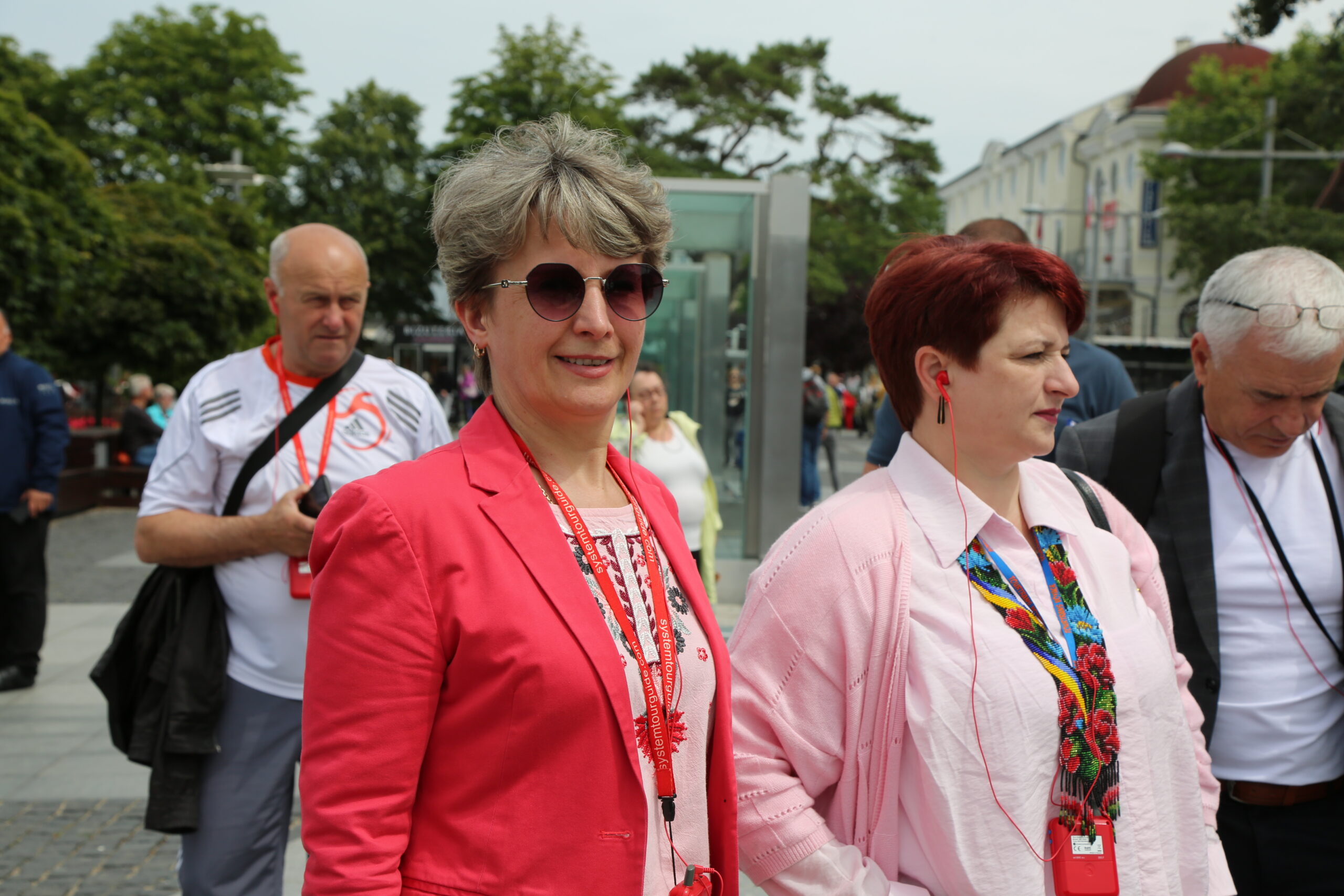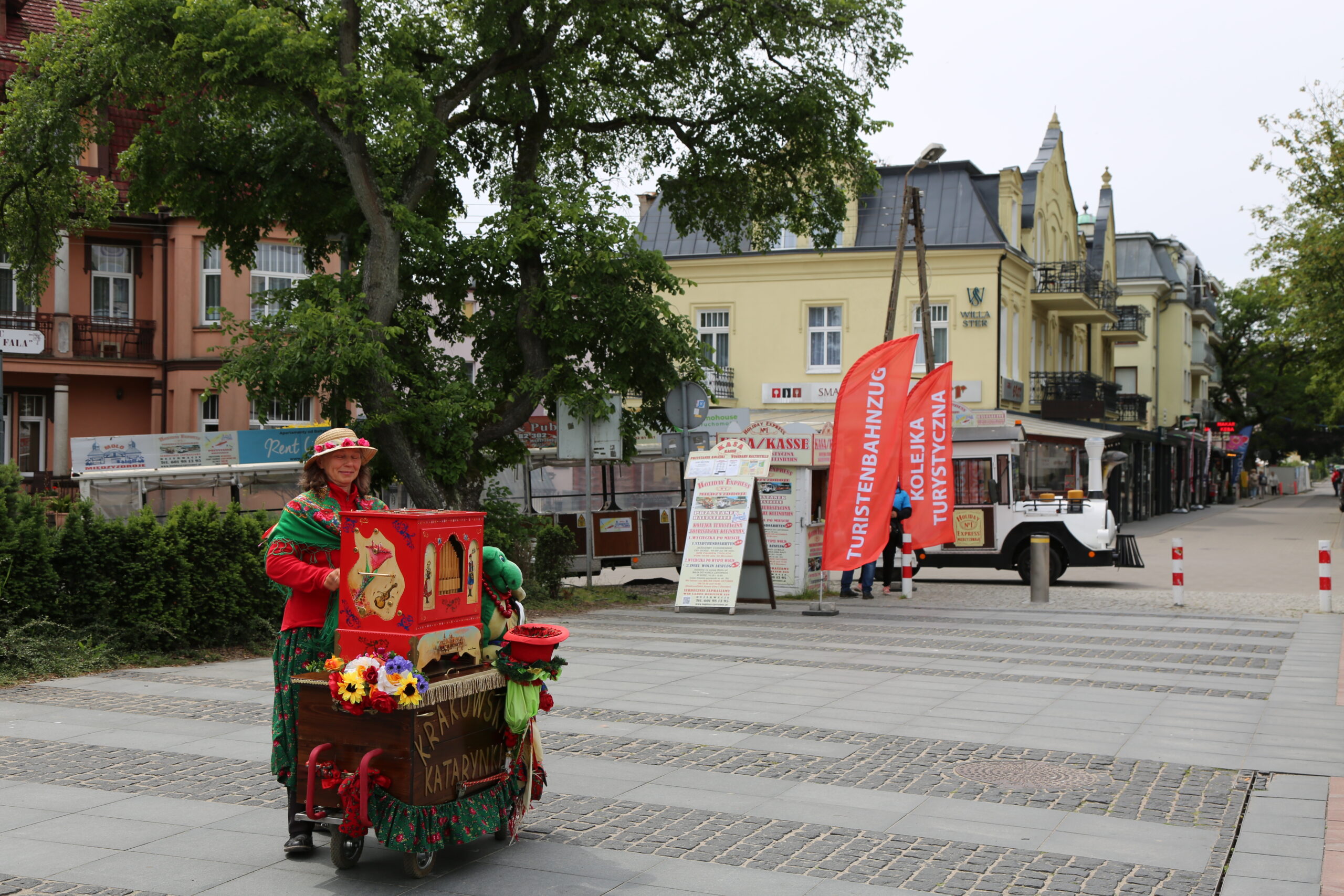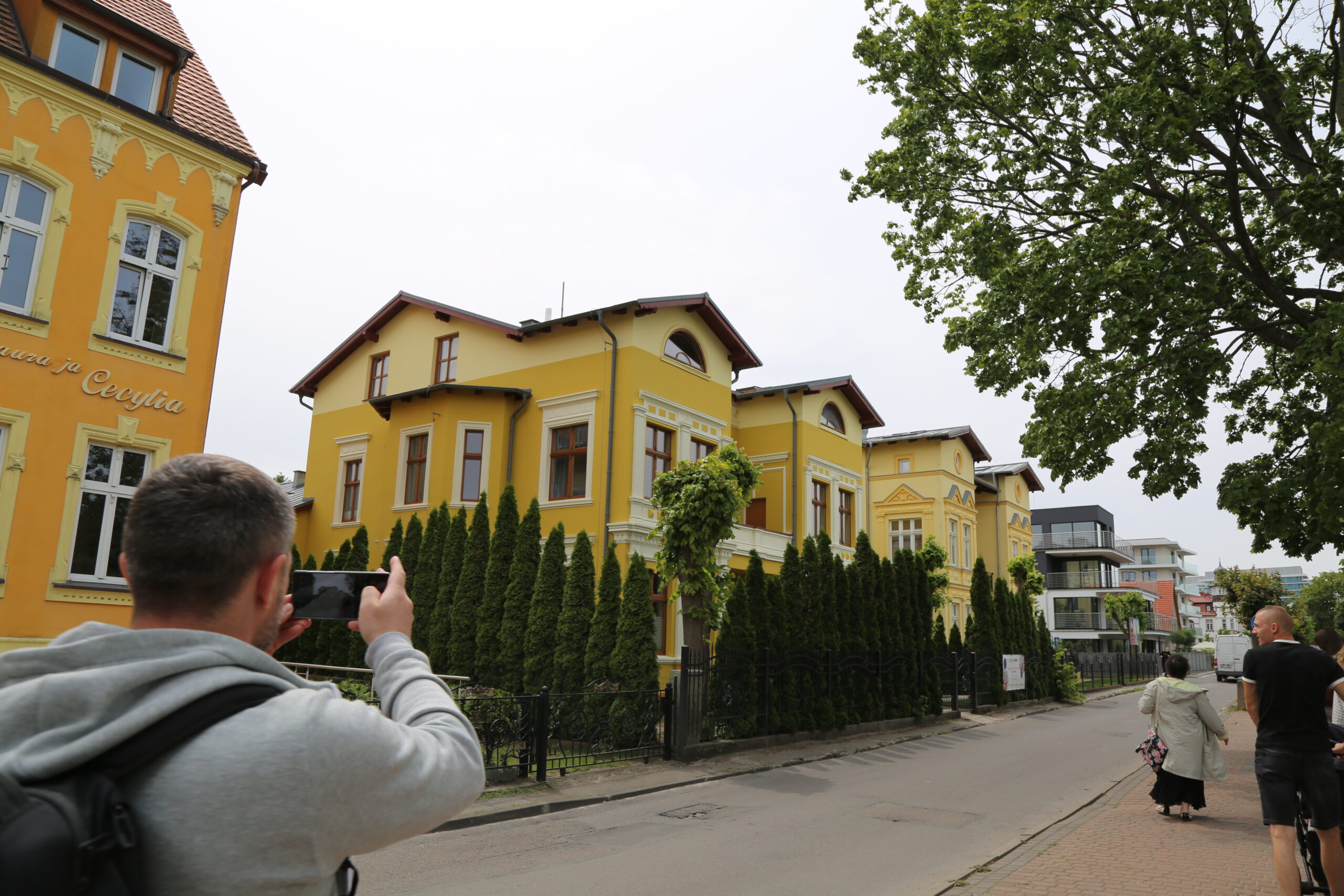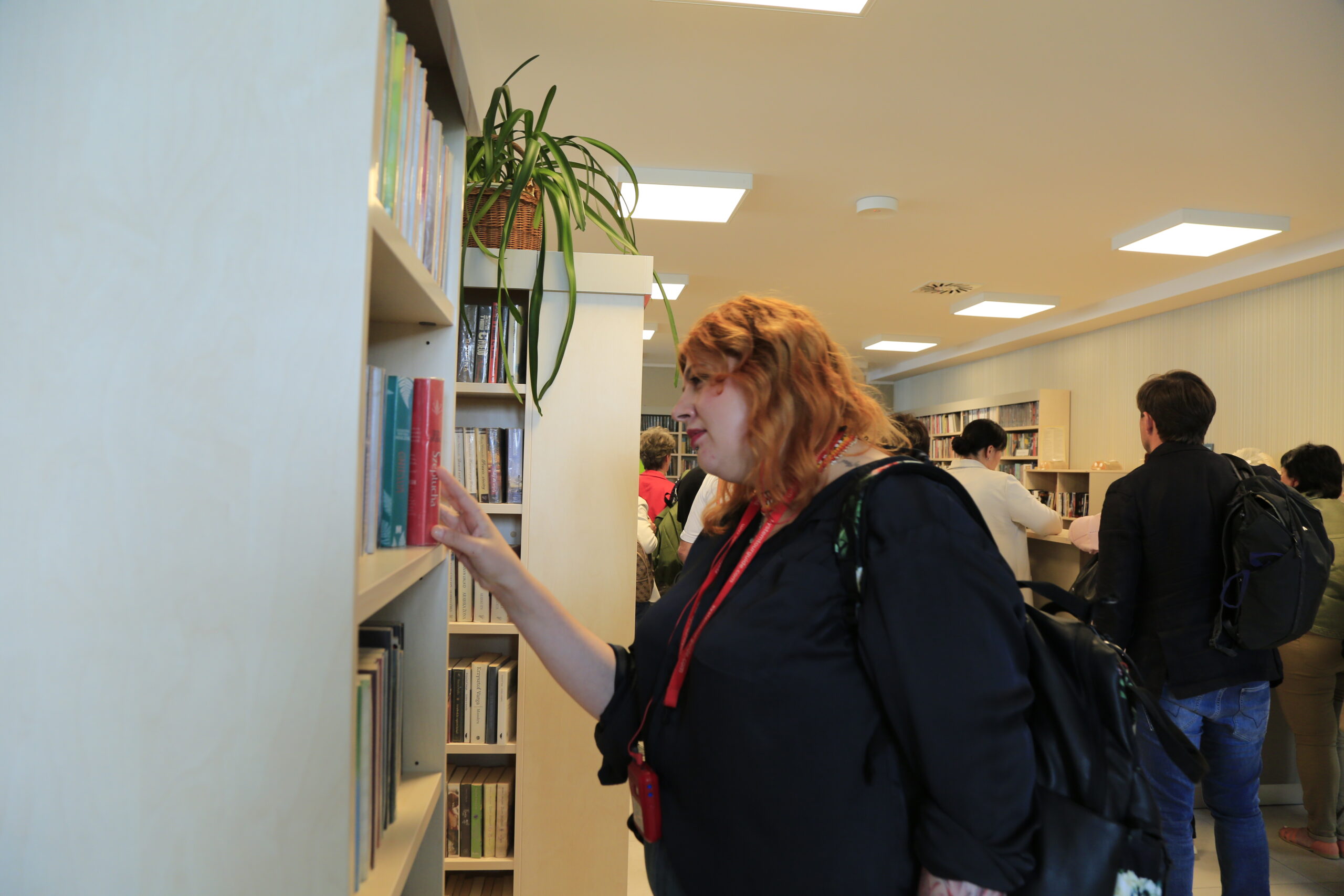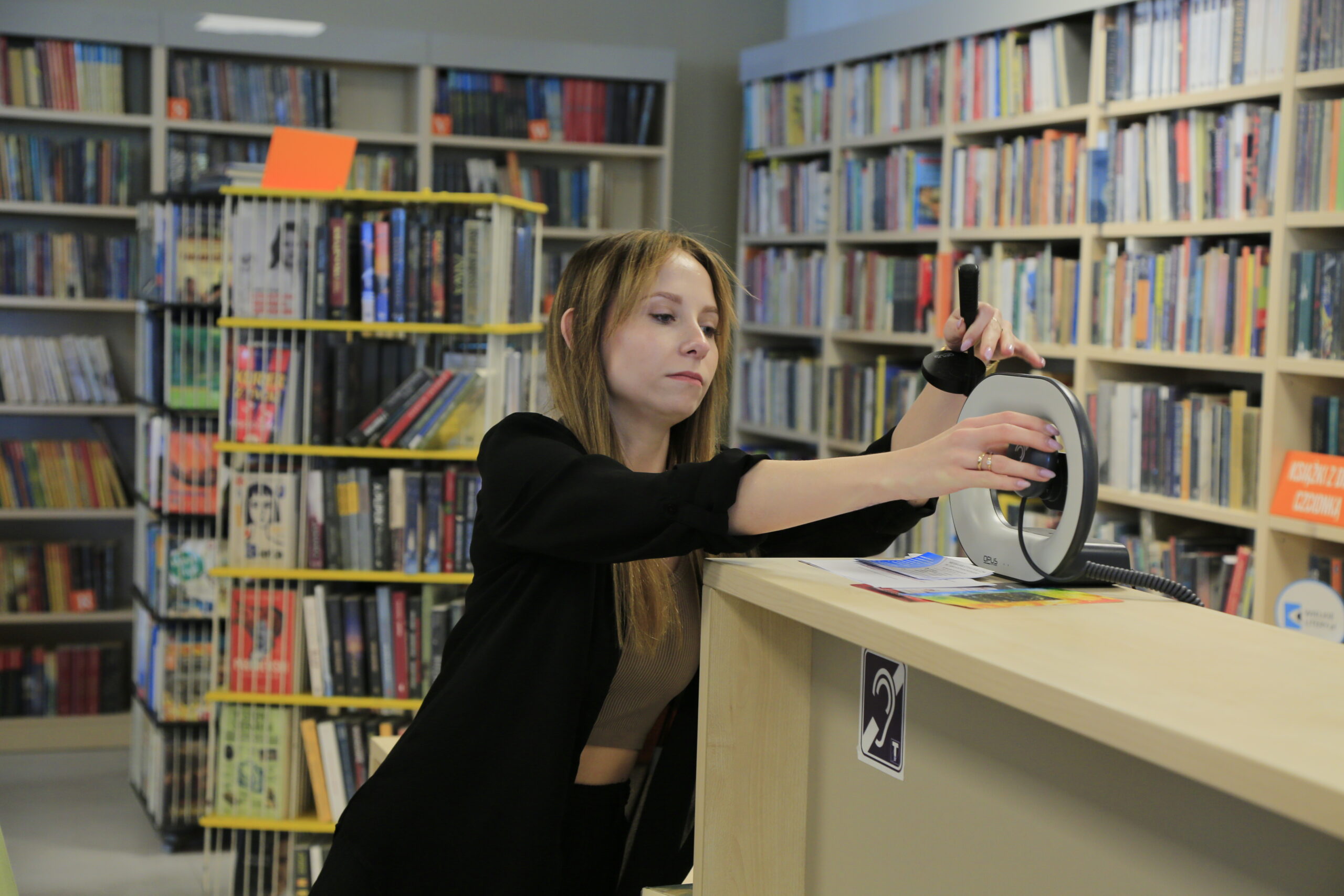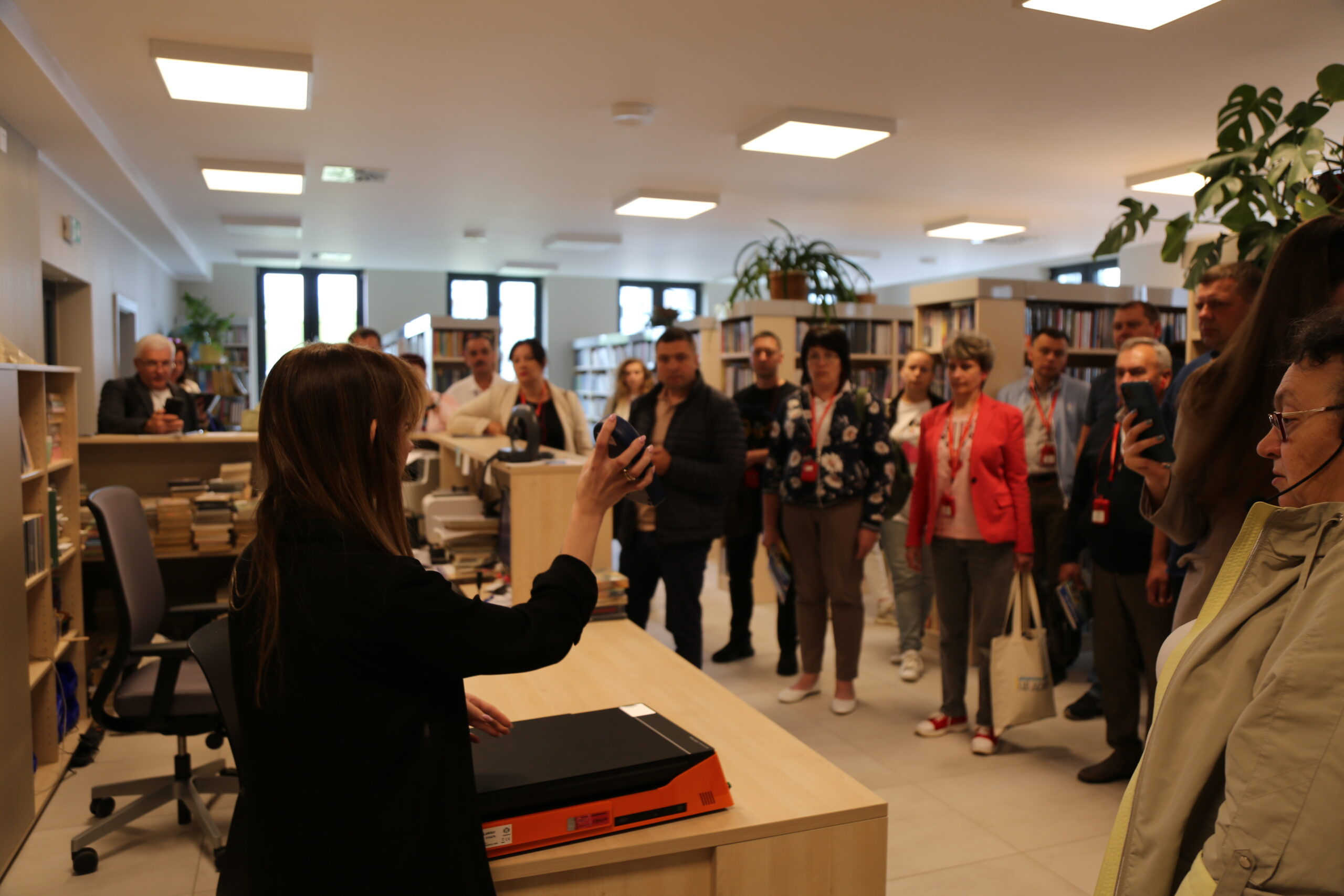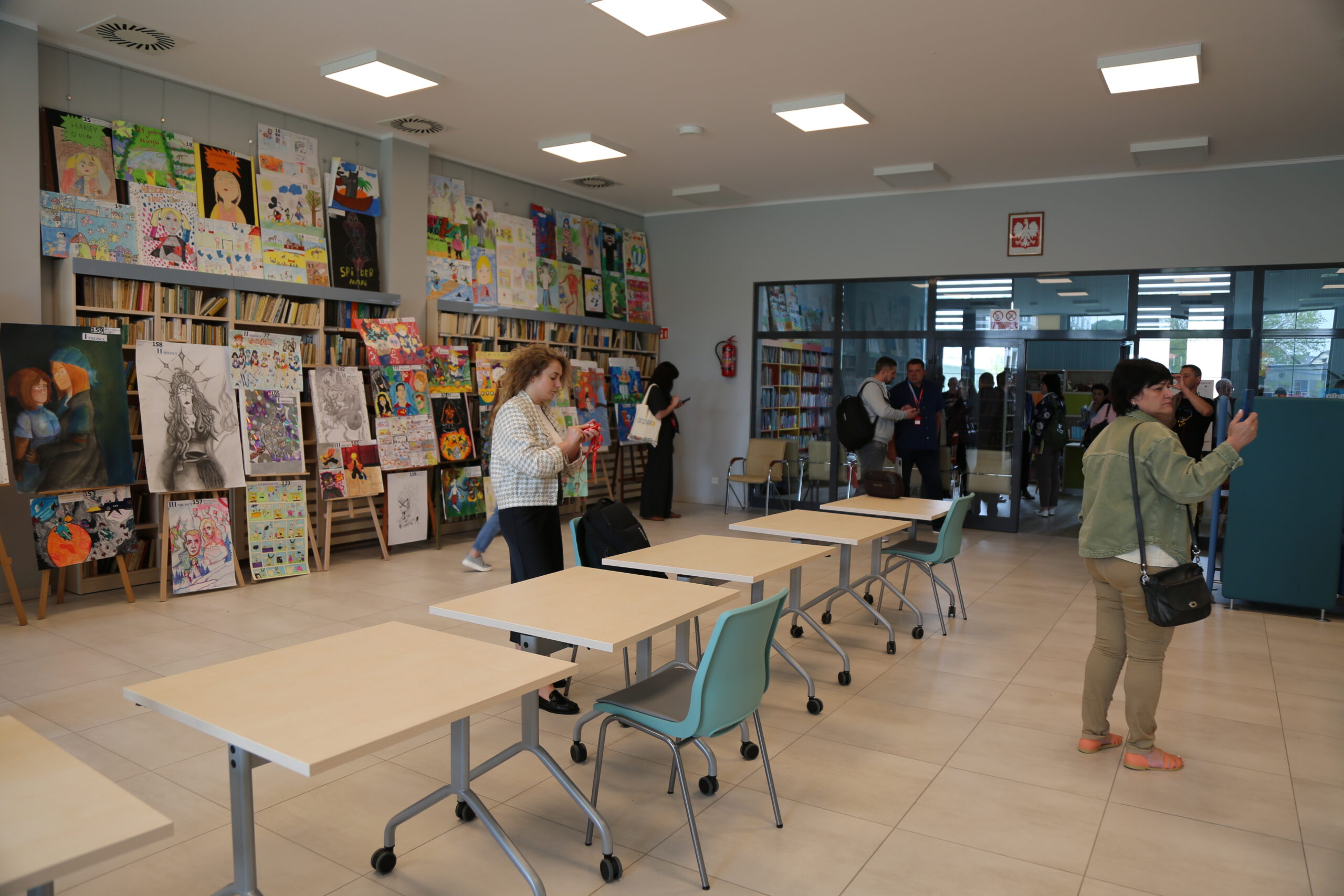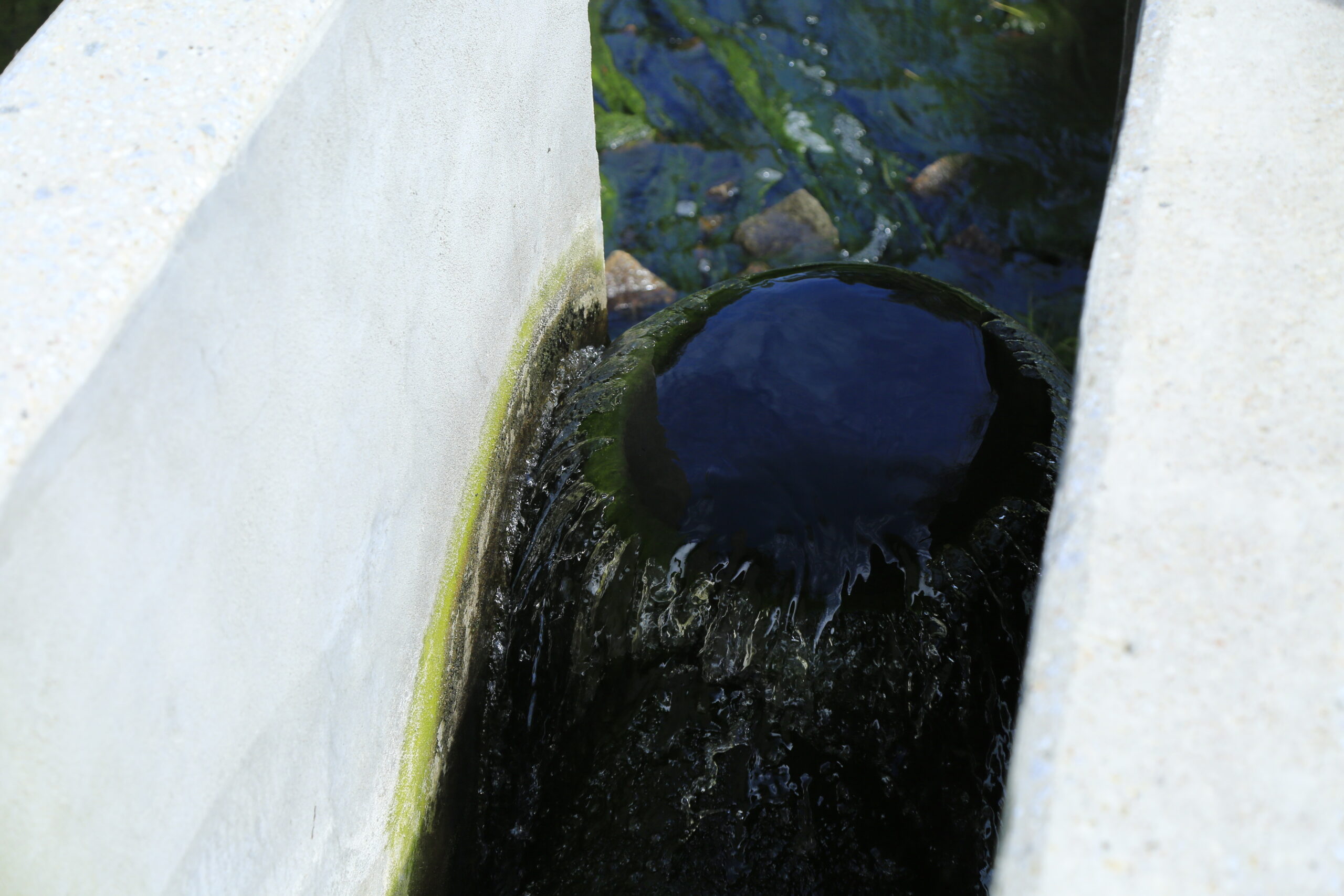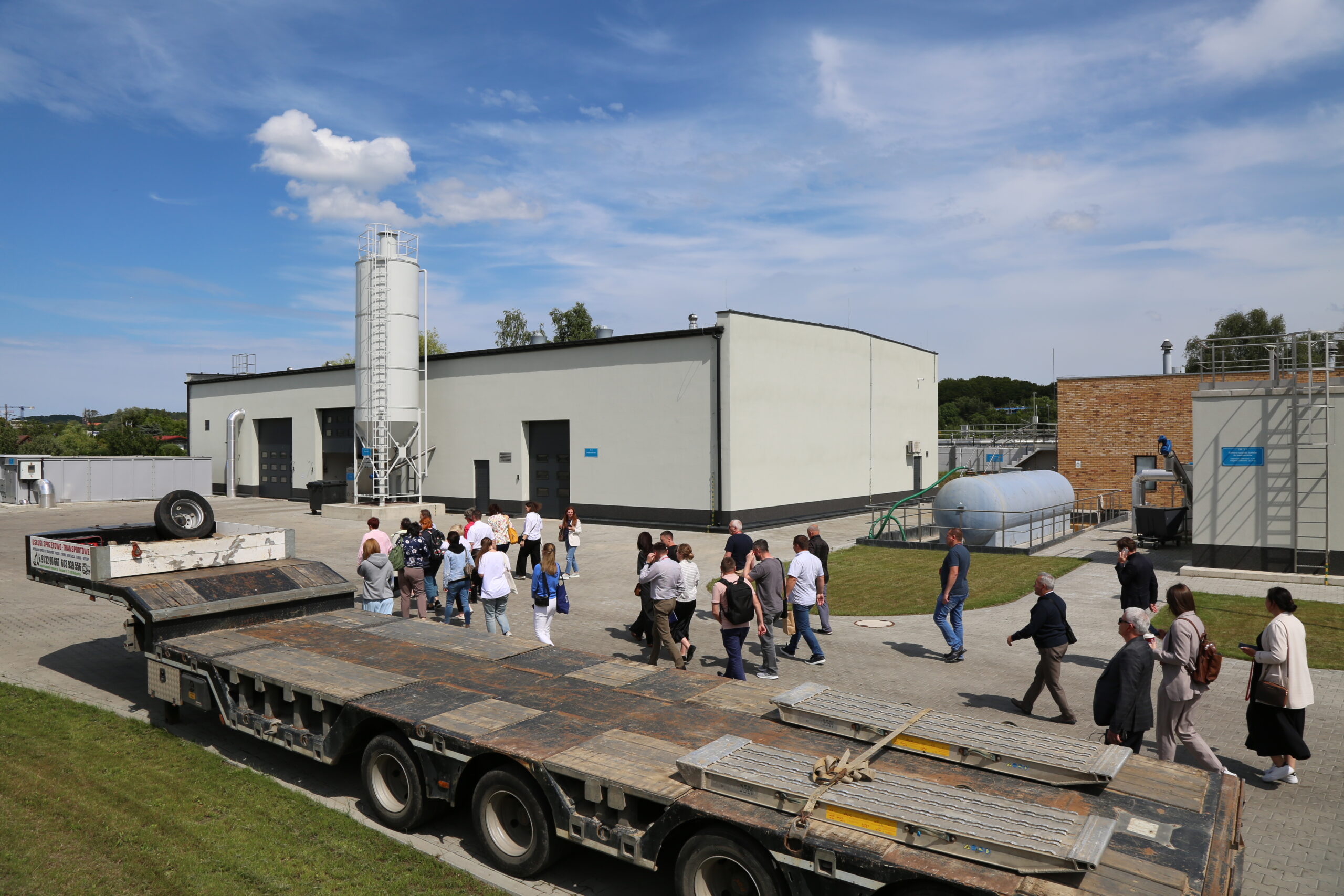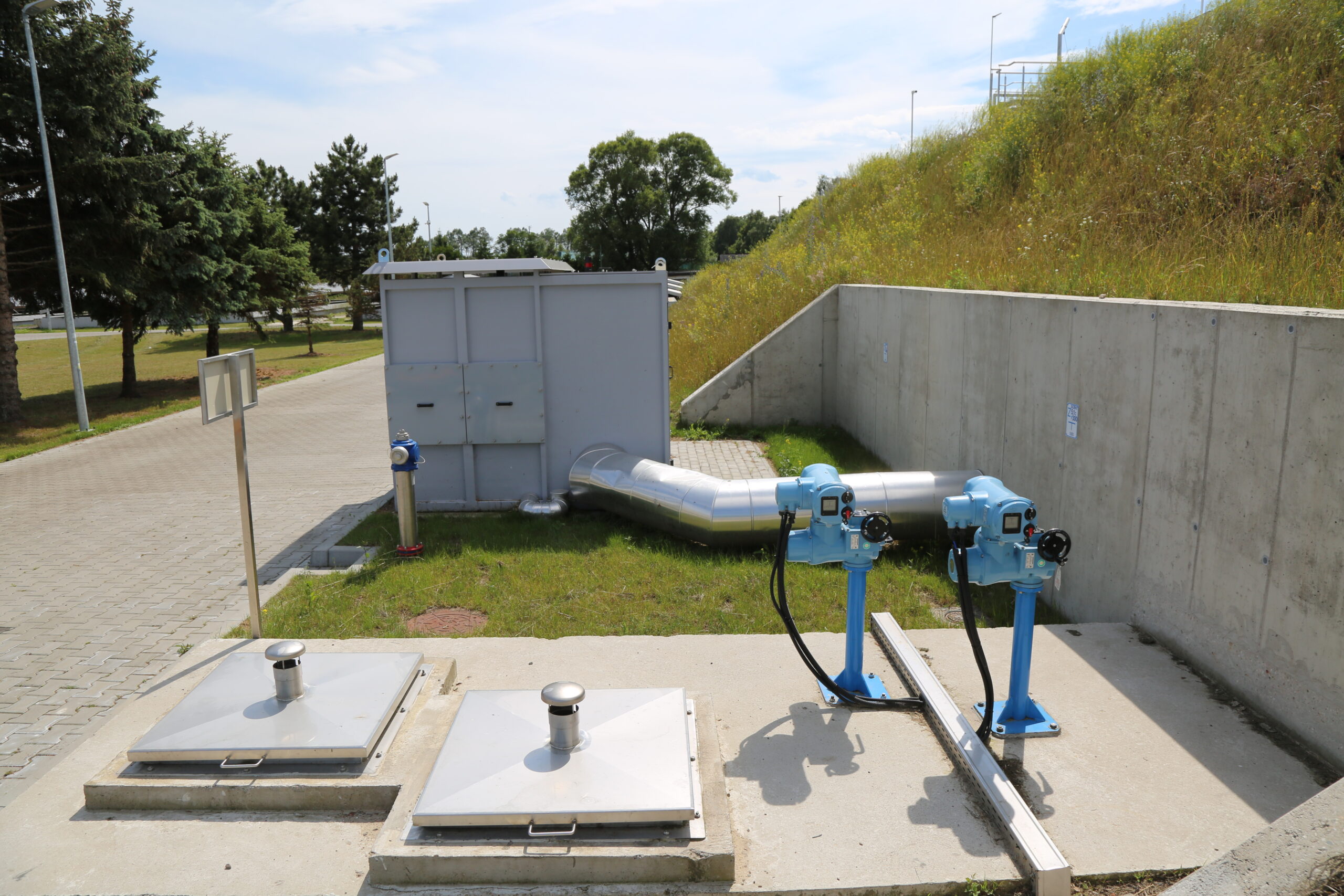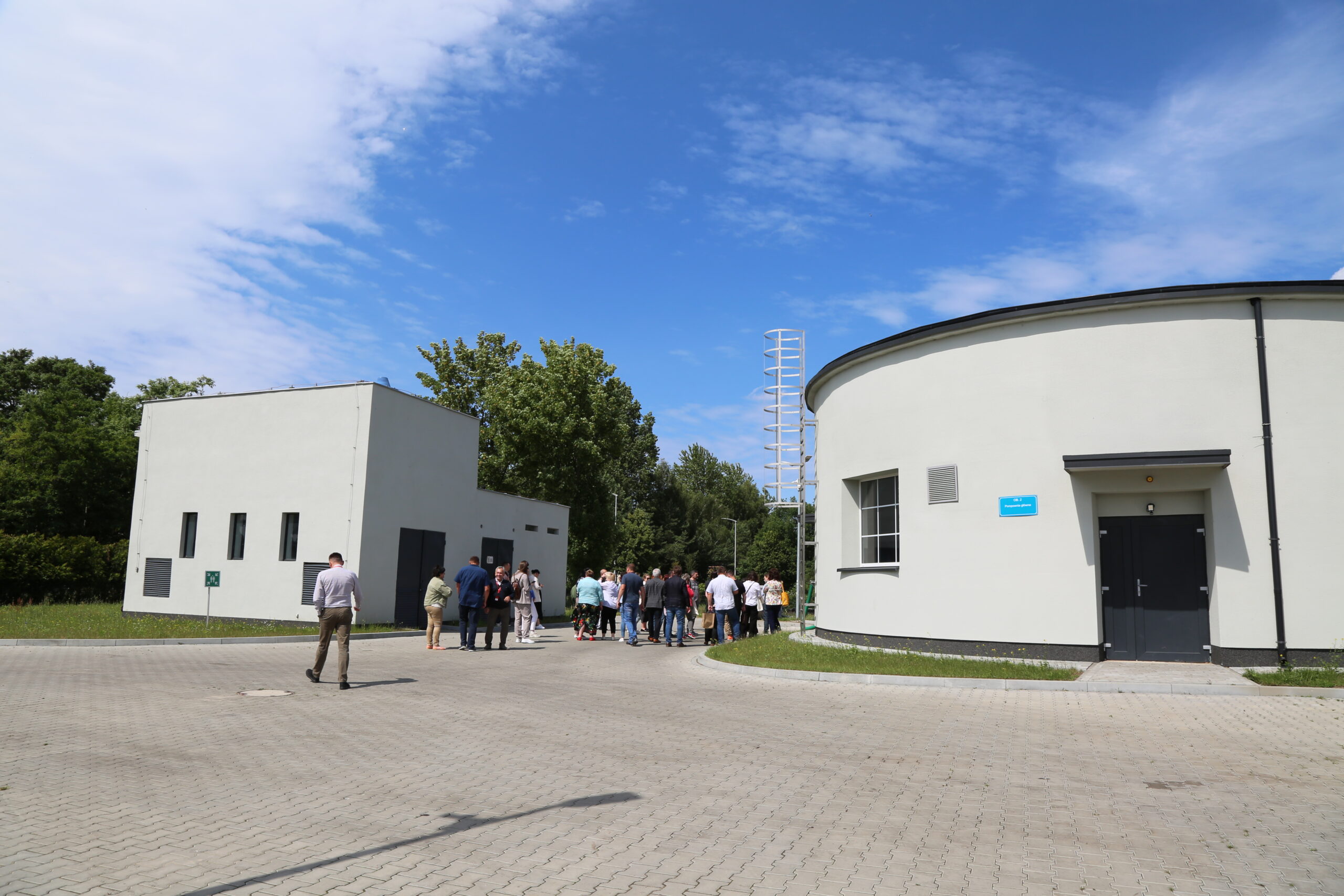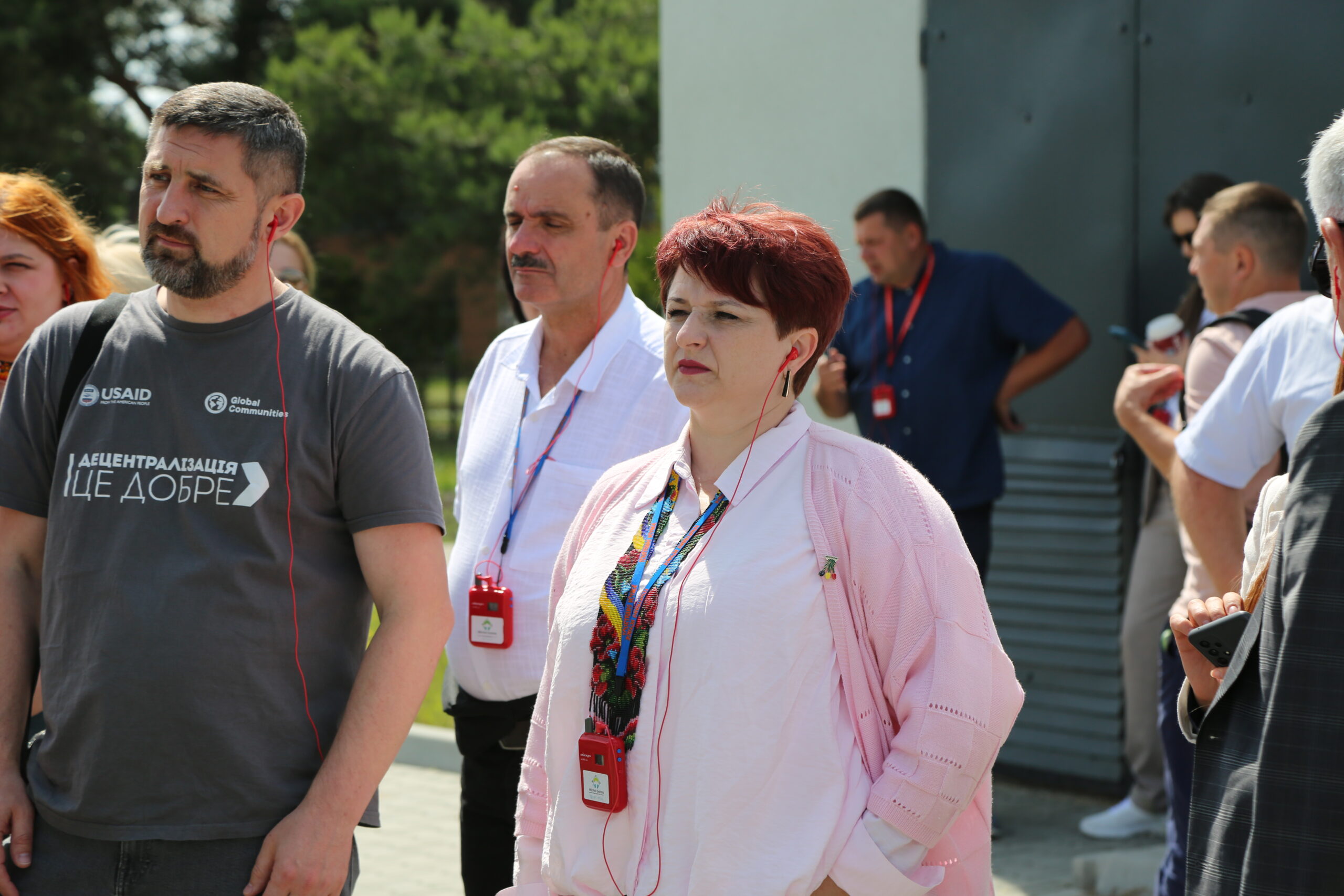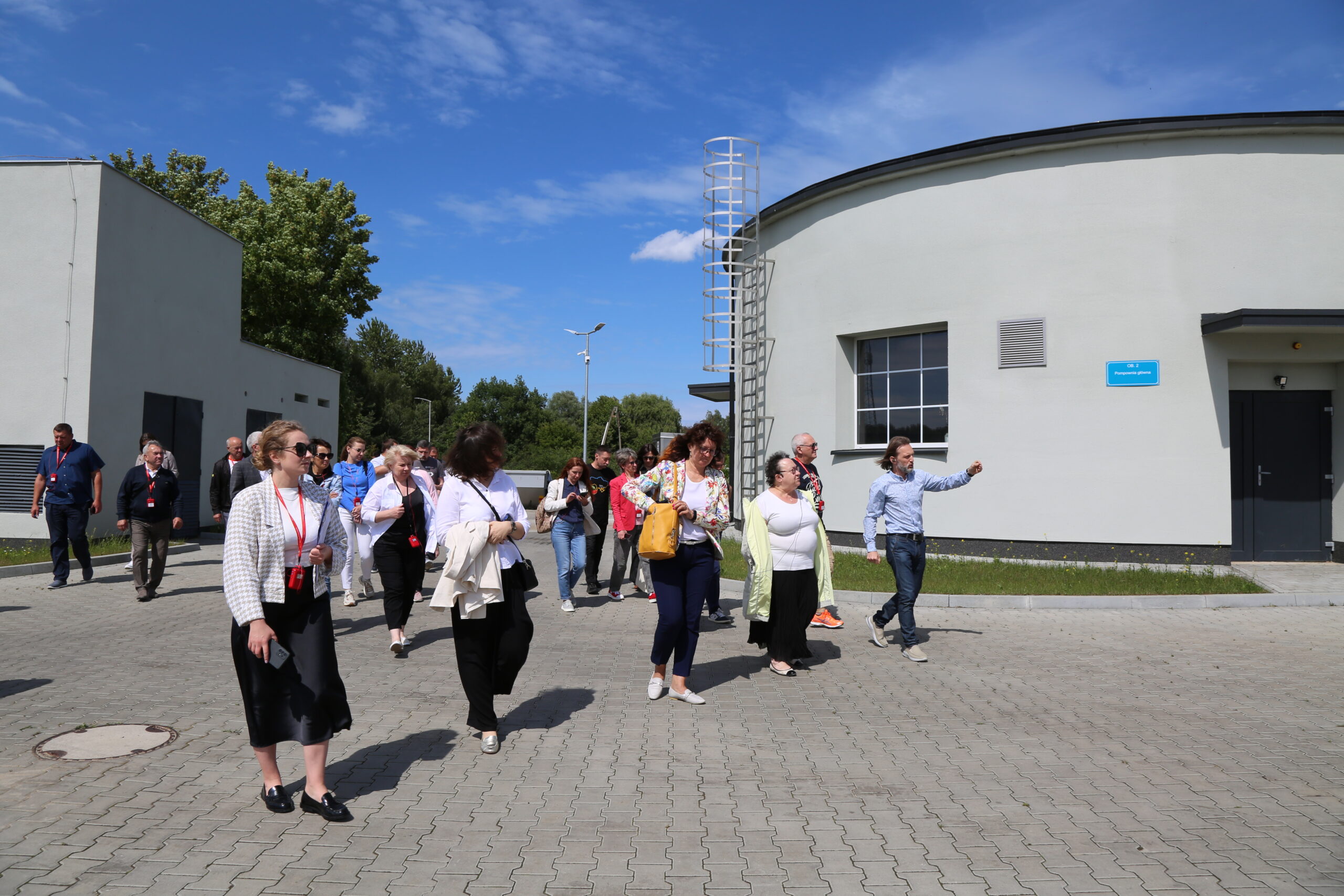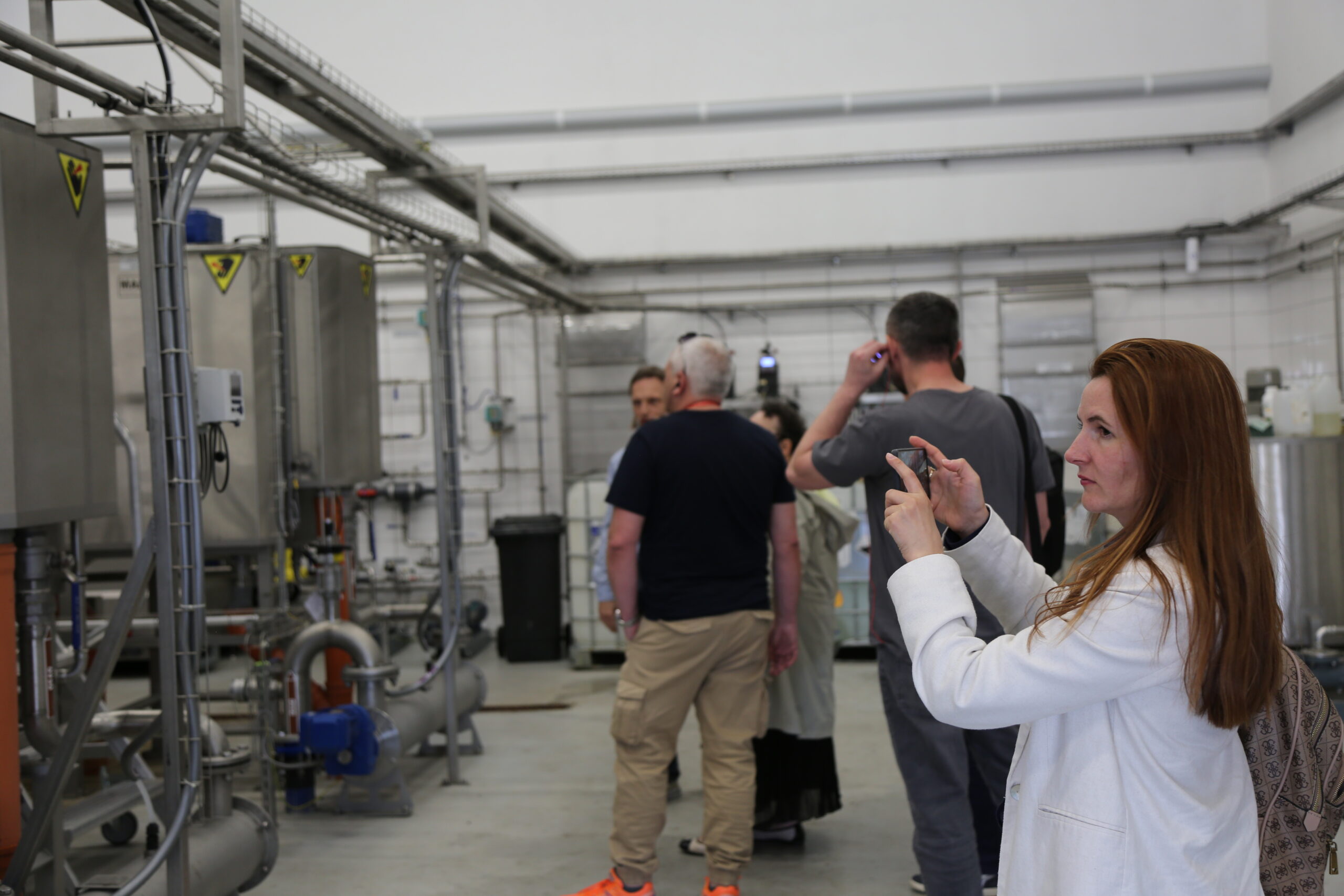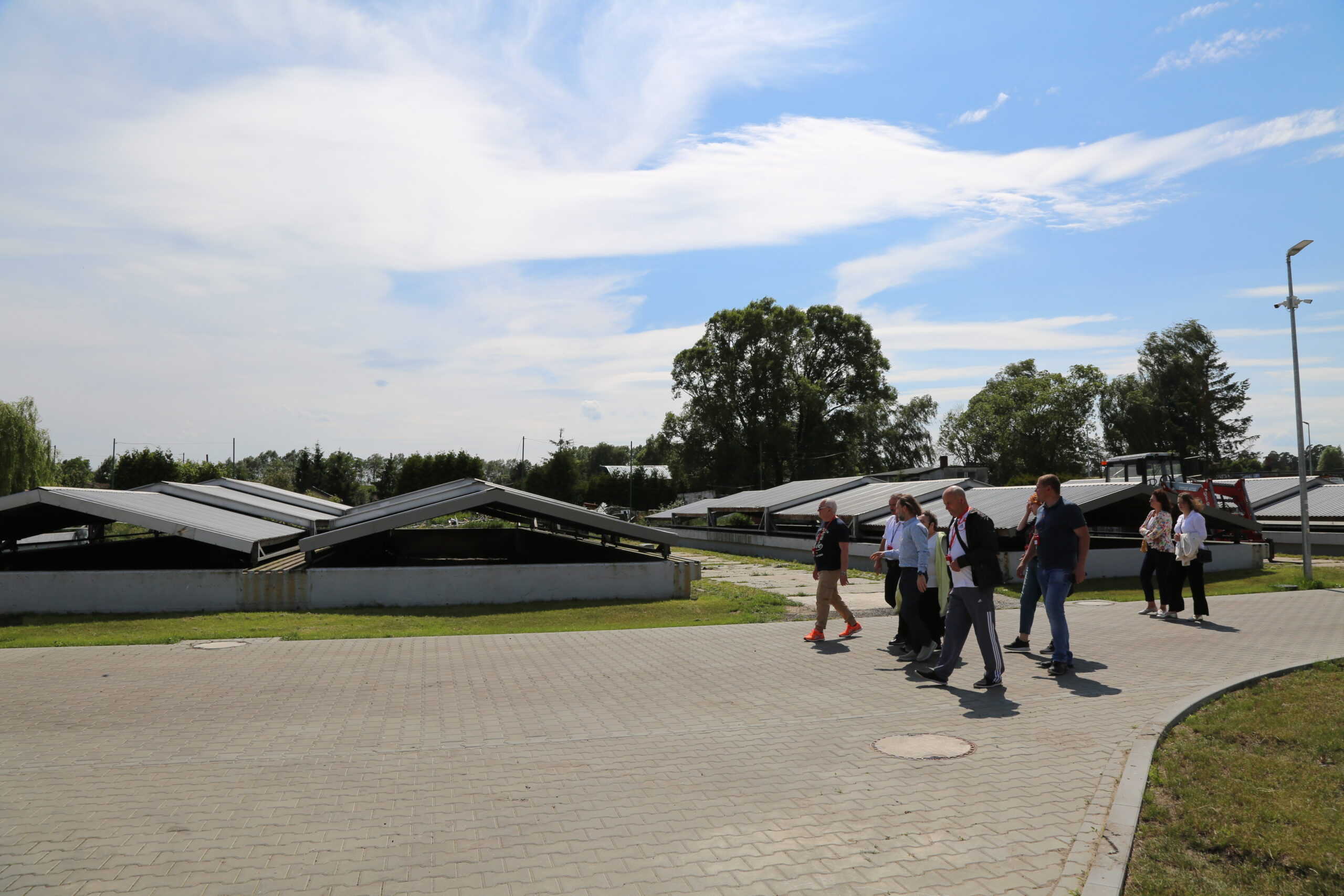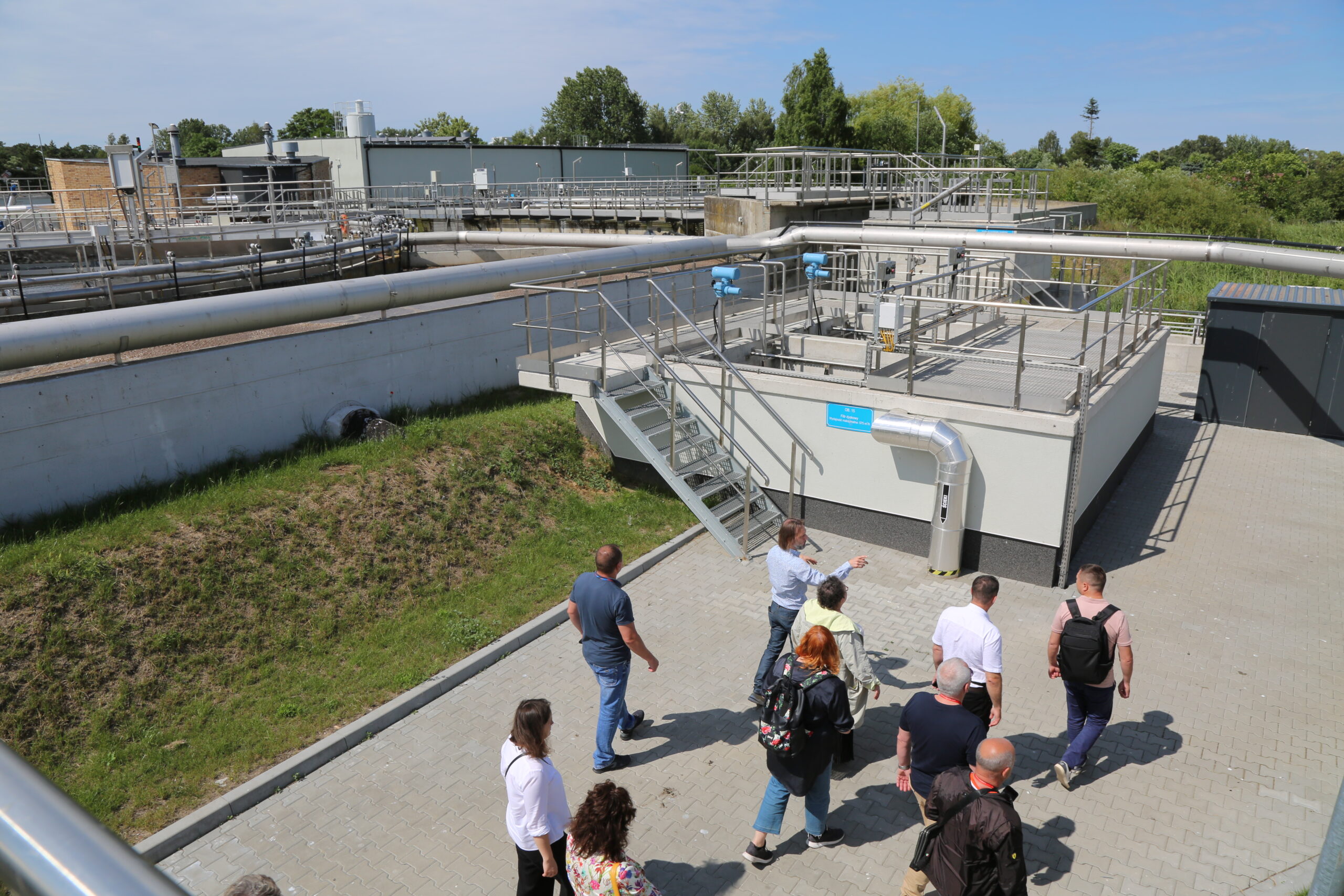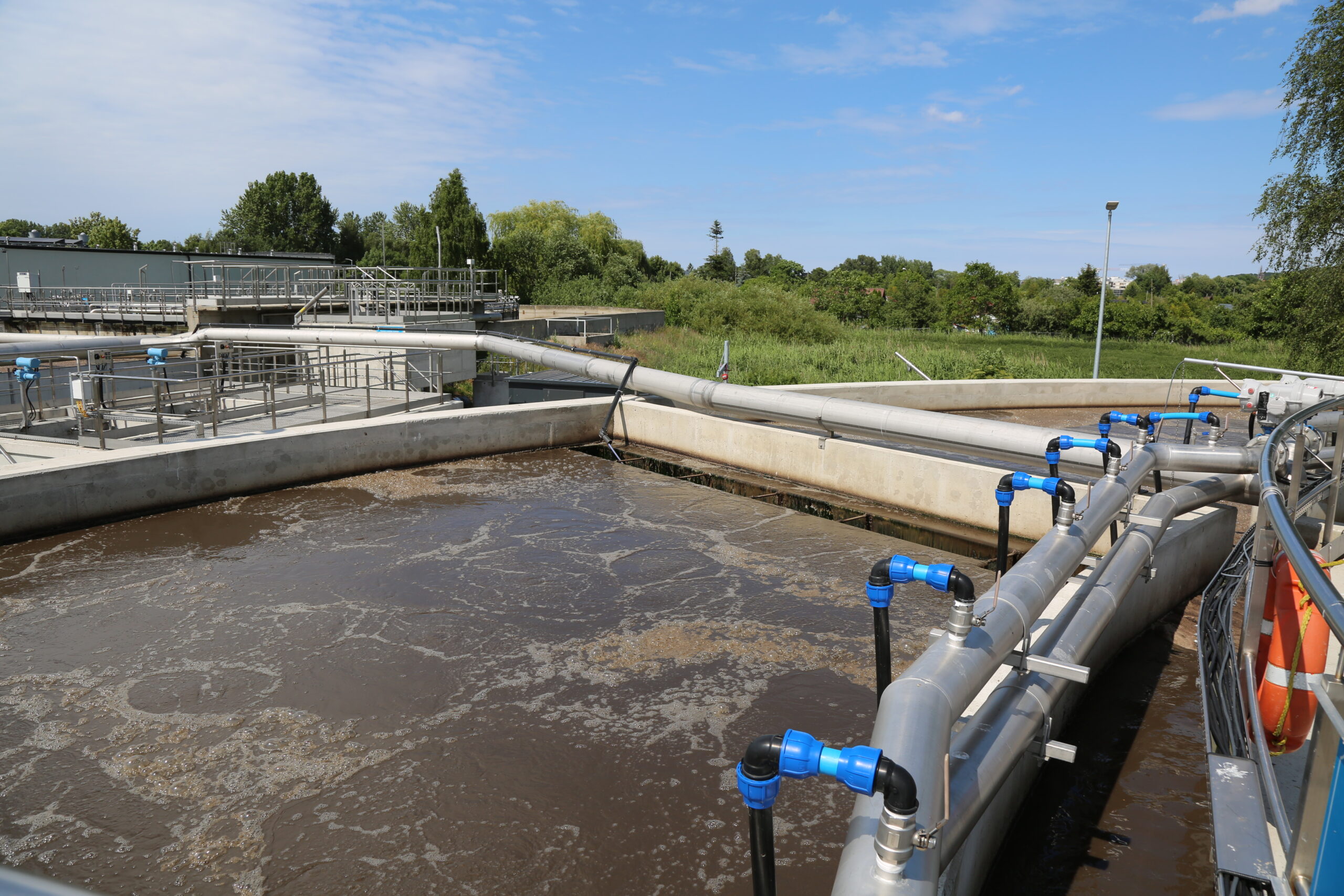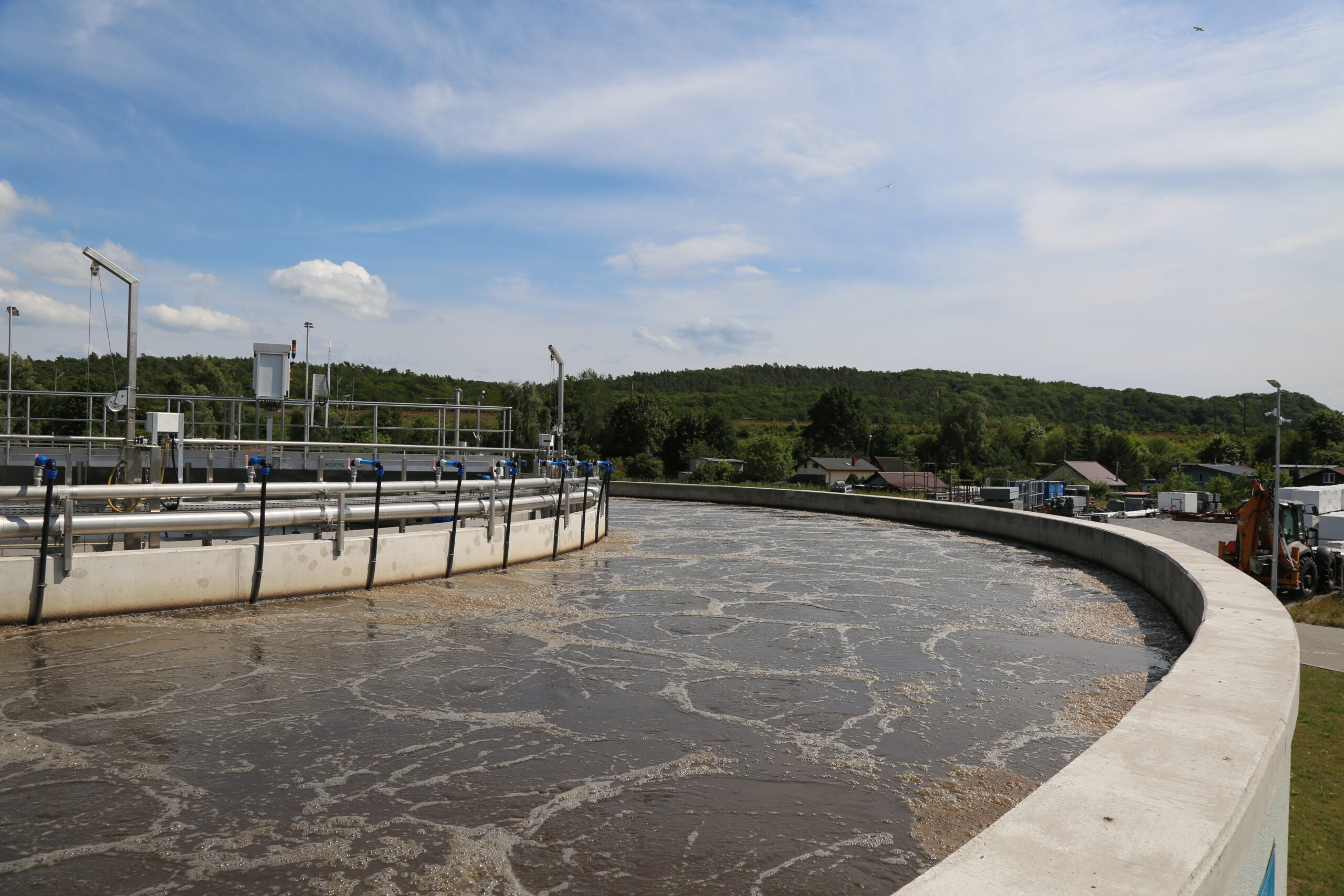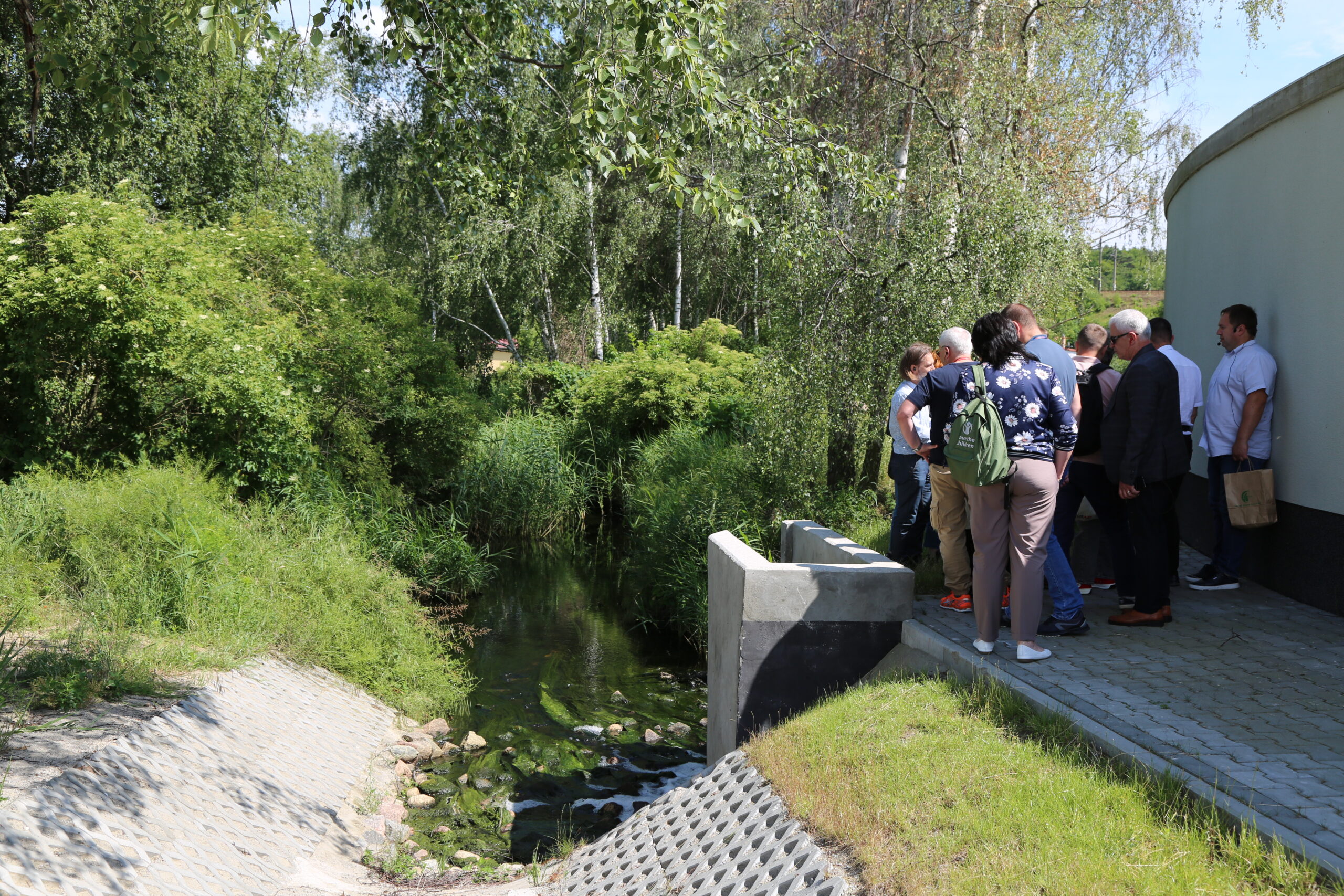You can achieve the best results by correctly calculating your potential and using your uniqueness. And if you also enlist the support of neighbors and attract additional funds from the EU, ideas turn into success stories. A seaside gmina becomes a powerful center of tourism. A cozy small gmina strengthens local identity through culture. And an ordinary gmina at the intersection of transport routes turns into an industrial hub; now, it is not the gmina that thinks about competition with others, but the businesses that are looking for opportunities to get a foothold here. Each territory, whether it is a Polish gmina or a Ukrainian community, has its own potential. The Polish self-government shared how to use it most effectively with Ukrainian communities during a study visit organized by the USAID DOBRE Program in cooperation with the Jerzy Regulski Foundation in Support for Local Democracy.
This year’s second visit involves nineteen communities from Kherson, Kharkiv, Ivano-Frankivsk, and Ternopil oblasts. Three of these communities are still occupied; eleven have survived the occupation and are now planning their recovery, and the rear communities have their own challenges, as the full-scale war has hit all regions. Despite the daily risks and dangers of war, Ukrainian representatives captured every useful case that will help communities become even stronger and also shared stories of their struggles.
“The communities we visit are not chosen randomly for each trip. Not all of our participating communities know each other personally. But Ternopil and Ivano-Frankivsk oblasts’ communities greatly helped when Kharkiv and Kherson regions needed it. And we wanted them to meet in person, hear each other’s stories, get to know each other better for further cooperation between communities in Ukraine,” said Ms. Yulia Yunenko, visit coordinator and local government services improvement specialist at USAID DOBRE. ”We also took into account the specifics of the region we were visiting so that our communities had similar resources and opportunities. For example, Kherson Oblast also has access to the sea, and the experience of Polish gminas can be useful. We are currently at war, but development does not stop, and we need to work even harder on it, to show the best practices to communities. Such trips and experiences are inspiring, and the knowledge exchange helps to establish partnerships between Ukrainian communities and Polish gminas.“
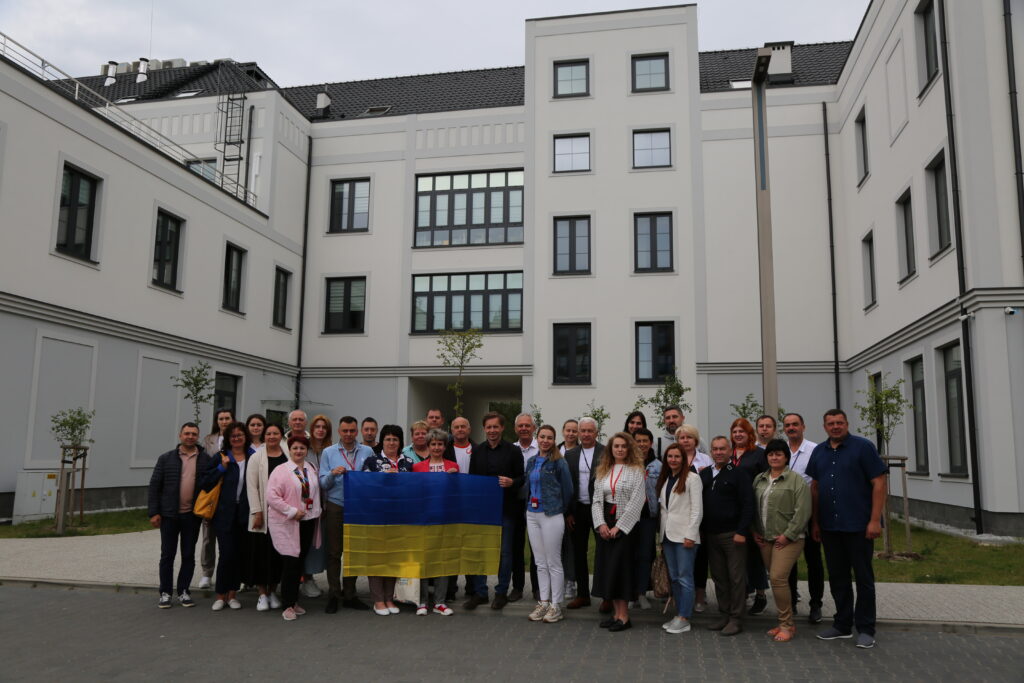
The visit took place in the Western Pomeranian Voivodeship, a region with a lot of forest, access to the sea, and borders with Germany.
“We all understand what is happening in Ukraine. I feel very honored to meet the Ukrainian self-government in Poland. I myself have repeatedly visited partner communities in Ukraine. When bad times happen, you cannot turn your back. You can always rely on us. And we will do everything we can to help you win and drive out evil from your land. We are now in a unique place – the border is always very interesting. Many things can be seen and applied in Ukraine,” said Mr. Robert Żarkowski, director of the Jerzy Regulski Foundation in Support for Local Democracy in Szczecin.
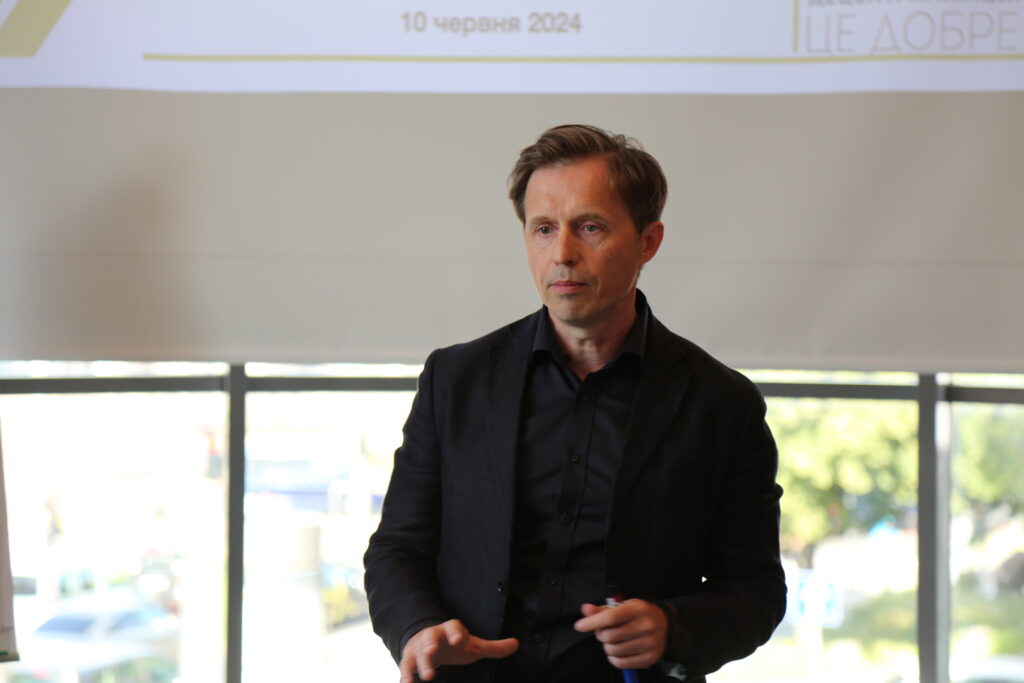
In total, Ukrainian representatives visited four gminas and the city of Szczecin, where different local government levels are located. Each gmina talked about the areas in which it has been most successful. We will tell you about some of the cases in our longread.
Here is a brief summary of what you will learn:
- Szczecin and the Association of the Szczecin Metropolitan Area. Many essential changes in Poland have been achieved through cooperation and partnership. To achieve this, it is necessary to negotiate and break down the unilateral approach, such as: “This is my budget; elections are coming soon; I have to do it for myself.” How this was done is described below. In addition, in Szczecin, representatives of Ukrainian communities visited a “passive house” – a completely autonomous building that does not require resources and provides for itself.
- Goleniów gmina and the industrial park. The gmina has a convenient logistical location, railroad connections, a river port, highways to the four corners of Poland, and proximity to the border. The local authorities realized that this made the area attractive for business, and created an industrial park at their own risk. While earlier it was the gmina that was competing for investors, now the investor is looking for an opportunity to get into the gmina. Representatives of Ukrainian communities talked to local authorities and visited several enterprises to discover the secret of investment attractiveness.
- Złocieniec gmina, its culture, and volunteer firefighters. “We do not work for people, but with people” is how they describe the culture of the gmina. They consider it their task to make culture one that would strengthen local identity and help people unite. One initiative even helped reconcile warring neighbors.
- The island tourist gmina of Międzyzdroje (Misdroy) and its communal services. Międzyzdroje’s key tourist points make up a large hiking route that can be followed from the city center to the seashore or vice versa. To develop the tourist space, the local authorities have come up with an effective strategy for raising funds. Today, the gmina’s tourism has reached such a level that the population increases more than six times during the holiday season. And the municipal services cope with this. Read on to find out how they do it.
Szczecin and the Association of the Szczecin Metropolitan Area
Szczecin is the capital of the West Pomeranian Voivodeship and the seventh largest city in Poland. It is only 5 kilometers from the city limits to the border with Germany. Its proximity to the sea provides a platform for the development of the maritime sphere. Shipbuilding is the main industry here. However, tourists traveling to the sea in Szczecin will be disappointed, as there is no sea coast or beach.
Szczecin is a city with county rights, as well as the capital of the West Pomeranian Voivodeship.
Regional policy to reduce development contrasts
Poland consists of 16 voivodeships, which are the highest administrative-territorial unit of the state, corresponding to a province in many other countries. A voivodeship is the largest administrative unit in the country and is responsible for regional policy. State power in the region is represented by a voivode, a representative of the Council of Ministers of Poland at the voivodeship level appointed by the Prime Minister. The executive power of the region is headed by the voivodeship marshal. He or she is appointed by the sejmik, the legislative branch of the regional government, which is the only elected body at the regional level. A similar ranking system is in place in Ukraine: the head of the state administration is appointed by the president, and the head of the oblast council is elected by vote. The marshal may not be a deputy, but another person. The voivodeship self-government (marshal’s office) determines regional policy, and its main task is to strategically and effectively use the region’s potential.
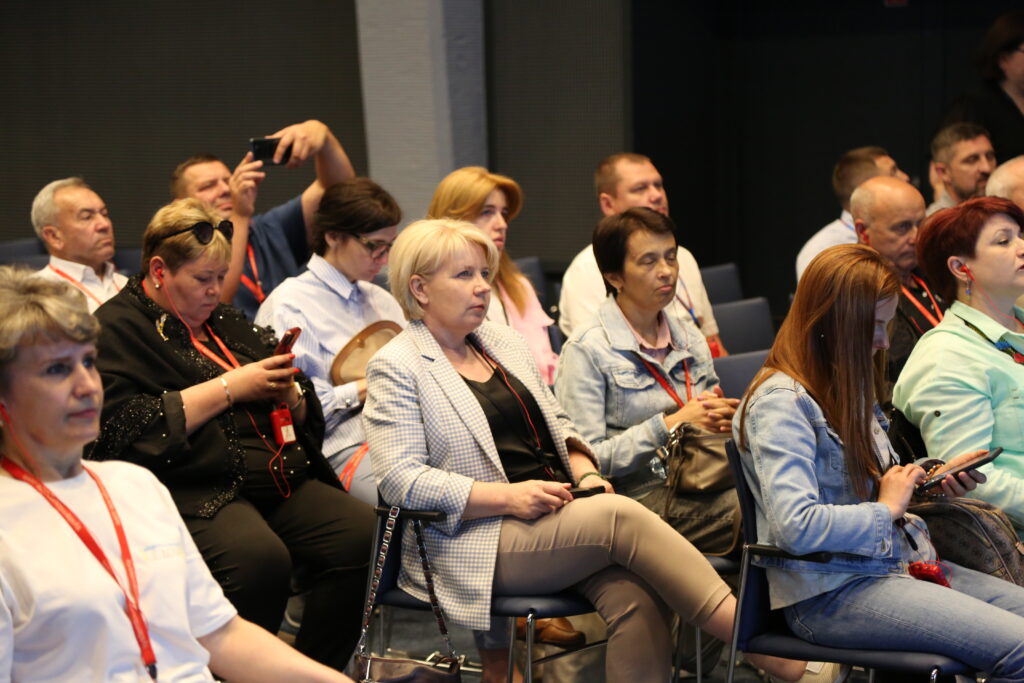
Previously, Poland had a system of vertical government intervention, but it proved ineffective. So now, cooperation takes place when it is needed at a particular point because each level has its own tasks.
Voivodeships create strategic documents to manage regional development. A regional strategy is a complex system that must be consistent with national policy and consider people’s needs and demands. If people’s needs change, the strategy will also change, regardless of how much time is left before its expiration. Each region takes into account its own peculiarities and prospects to the maximum extent possible. For example, the West Pomeranian Voivodeship relies on the maritime economy.
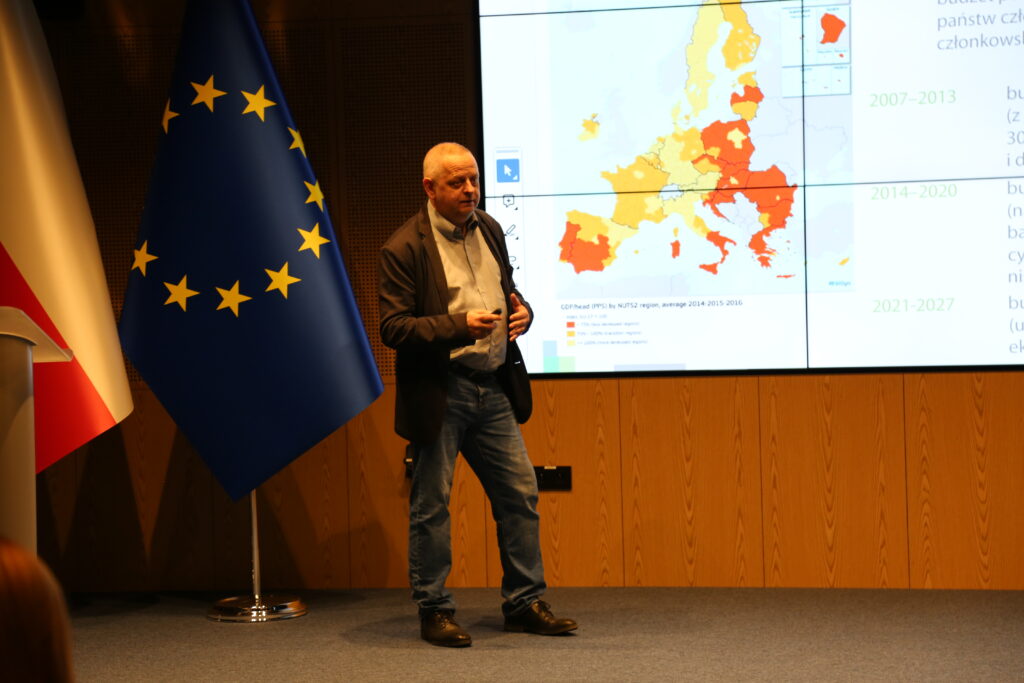
Poland’s regional policy aims to ensure that less developed regions catch up with more developed ones. During the communist regime, the borderland was in decline, and Poland still faces the consequences of this. To reduce such contrasts, a fair regional policy is needed. For this purpose, cooperatives are being created, and funds are being attracted from the European Union. The share of funds raised from the EU is about 20% of the money spent on regional policy.
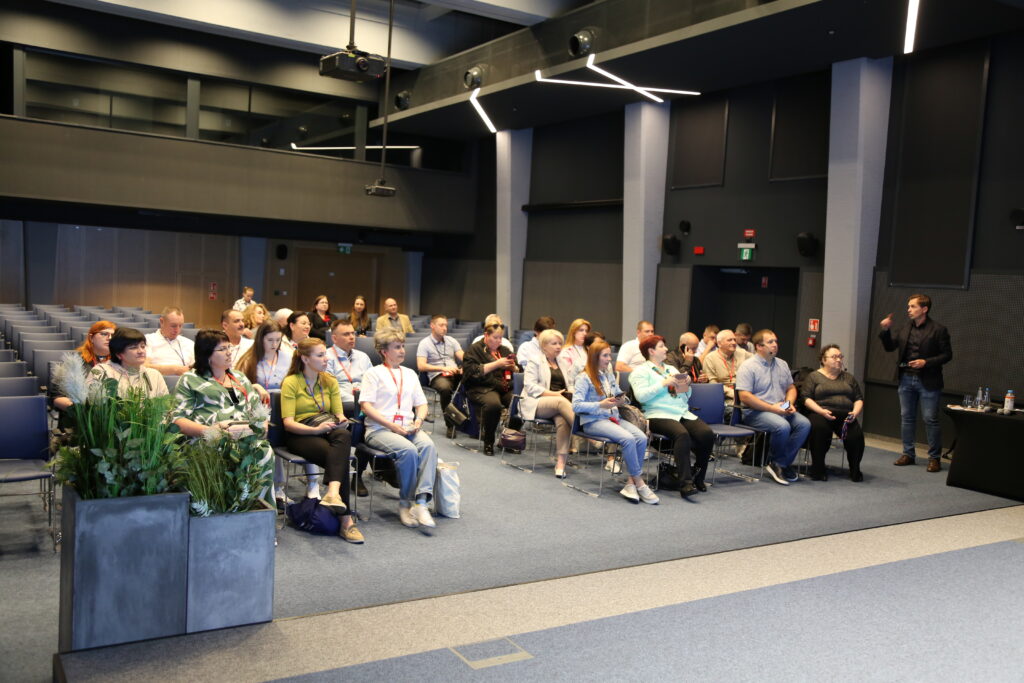
“Passive” house. An example of an energy-efficient project in Szczecin
The city of Szczecin operates as a county, so there are several local government levels. The administration is located in the city center: in a restored building, as well as a new “passive” building created with the support of the EU.
Part of the old building used to be a movie theater. Appreciating this fond memory, the renovation team decided to keep some mementos, such as posters, photographs, and decorations. The hall itself was equipped with a modern space for public events.
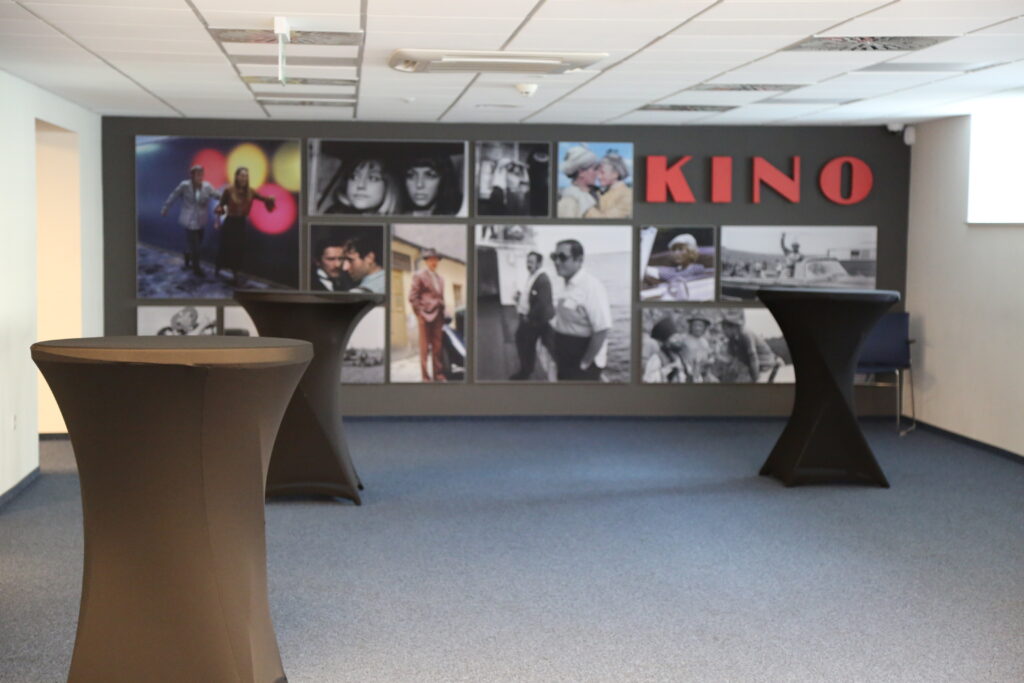
A “passive house” was created nearby. Such is the name given to a fully autonomous building that does not require any maintenance resources. The courtyard and facades were also given a modern aesthetic look to make the place function as an open public space.
The building was constructed as part of an energy efficiency project supported by the European Union, which financed three-quarters of the costs, with the rest coming from the gmina’s own accounts and loans. The investment was launched in 2019, but the coronavirus pandemic has triggered skyrocketing inflation. And European funds have time limits. Therefore, the plan had to be implemented quickly, along with a lot of reporting required by the EU for transparency. Despite the difficulties, everything was successful, and now the “passive house” is operating in Szczecin.
Two floors of the building are located underground, and six more rise upwards, connected by an elevator that works on the principle of self-recharging. It consumes energy when going up and stores it when going down. Electric cars work on a similar principle.
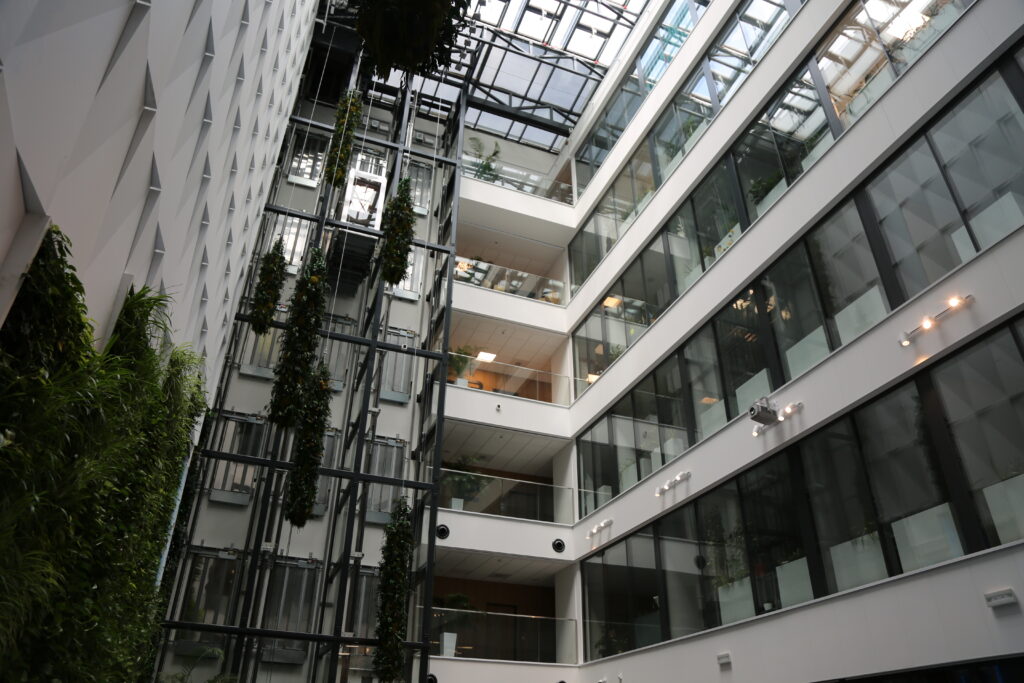
The building’s thickened walls made of special materials allow it to maintain the proper temperature regardless of the weather. The building does not require cooling, as the glass does not allow the sun’s heat to enter. The building is heated by a heat pump powered by a mini power plant.
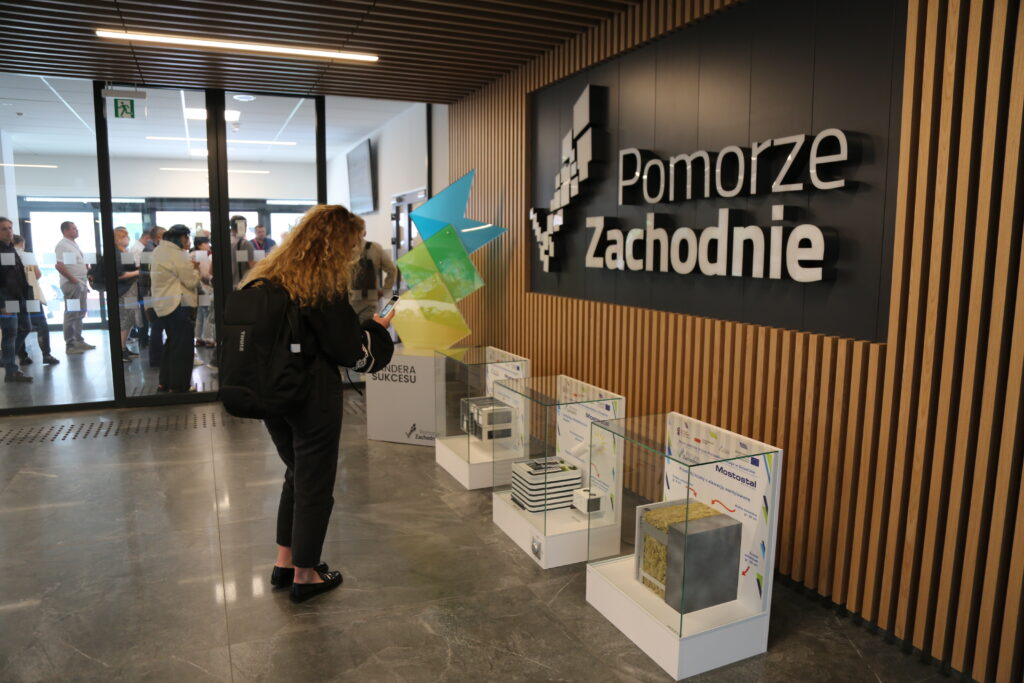
The complex has a system for collecting rainwater. It is purified and used for technical needs. So, there is no need for a centralized water supply. Of course, water consumption is treated with care – the entire system is programmed to reduce water consumption.
A recreation area was set up on the roof of the building. There are benches and plants growing there. The goal was to create a place for employees to relax and add a few cubic meters of clean air to the city. Even such a small contribution to the environment is valuable to Poles.
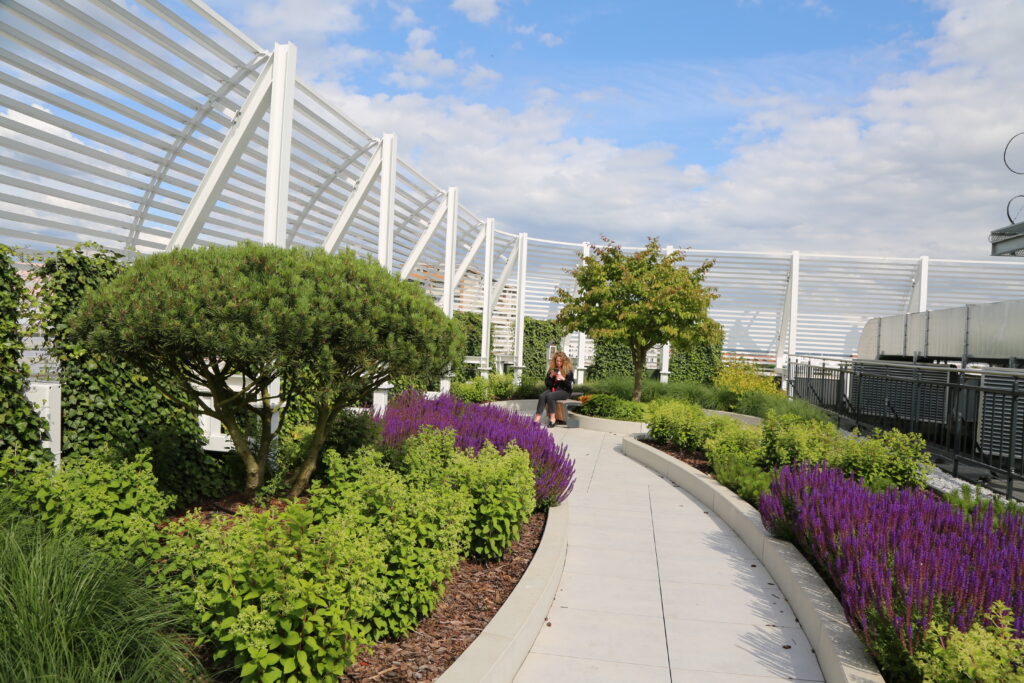
There is also an oasis inside the building – there are several “ponds” in the lobby. The glass river is a small copy of an actual river that flows in a local nature reserve. Water flows into it from a waterfall fountain. The water installation is complemented by vine-like and other living plants that rise up to the glass ceiling at a distance of four floors. To take care of the plants and keep the glass clean, metal structures were erected in the building that also serve as climbing routes.
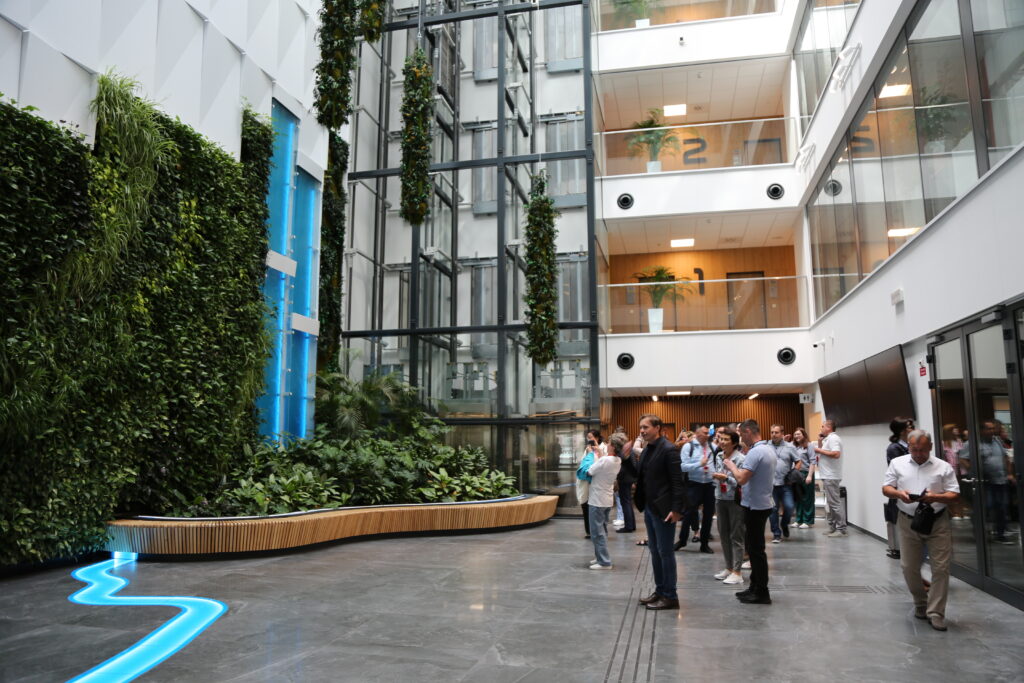
Of course, the building is fully inclusive and equipped for people with disabilities. There are no thresholds, and there are special markings from the entrance so that a blind person can get to the reception without assistance, where they will be met by specialists and provided with the necessary assistance.
The voivodeship administration, the marshal, the voivodeship boardroom, and other offices are located here. To get to the right floor or open a door, you need keycards of different access levels, which are a pass and access to the use of equipment. All security activities are tracked by chips in the key cards.
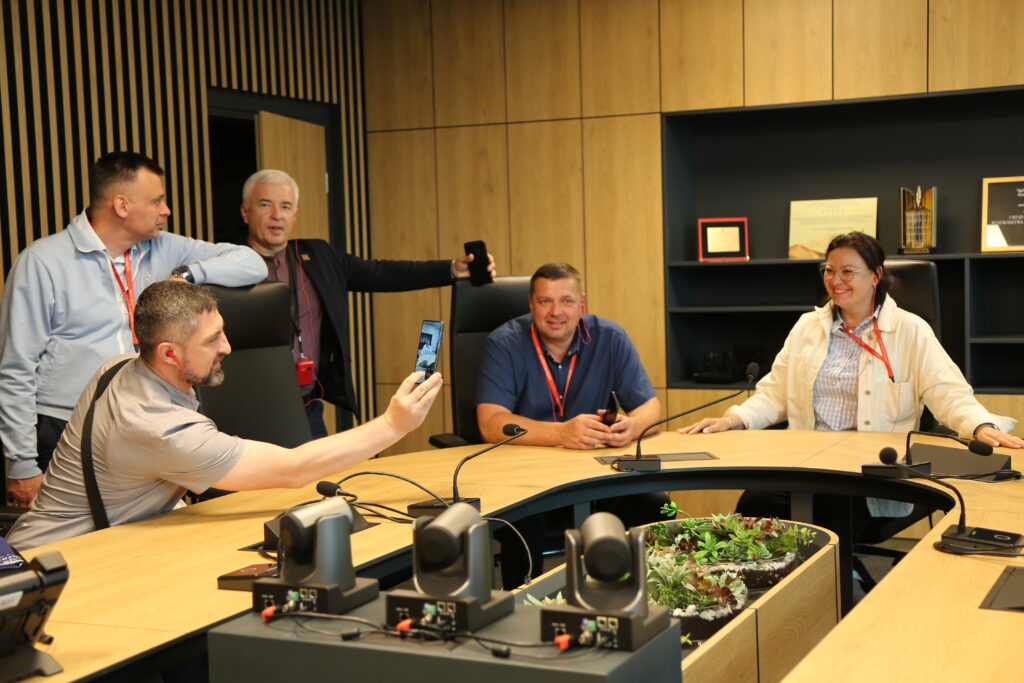
The case of this building shows how you can raise funds effectively and take care of the environment and energy efficiency simultaneously. These two priorities are cross-cutting in the activities of the European Union funds, and Ukrainian communities should consider this when preparing for accession. In addition, the issue of energy efficiency and autonomy is relevant for Ukraine during the war and blackouts.
The principle of joint action for better results
Szczecin is also the center of the Association of the Szczecin Metropolitan Area, which was created to help gminas and cities develop. In Poland, gminas often unite in associations and create joint projects that would be irrational and inefficient to implement independently. Thanks to the association, local governments focus on sustainable development of the region instead of solving isolated problems. According to the association’s vision, this approach strengthens the region’s economic development, improves the quality of life, and, as a result, prevents the migration of young people to larger cities.
The Association of the Szczecin Metropolitan Area was one of the first in Poland, so it had to be a pioneer in many processes. Mr. Roman Walaszkowski, the director of the association’s office, recalls that since 2014, the European Union has been actively promoting the integrated territorial investment approach. At that time, there was a need to create a specific type of cooperation to attract funds. Some partnerships operated on the basis of ordinary agreements. Later, the state expanded the concept of partnerships at the legislative level, and now the principle of joint action is very popular in Poland. This applies to both partnerships within associations and cooperation between them.
“The most difficult thing for us in implementing partnerships and widespread cooperation was to change the mentality and perception. The most common approach was: “It’s mine, my budget, elections are coming soon, I need to do it for myself.” But we had to work together and think beyond our own borders, to see our neighbors. The head should care not only about his community, but also look at his neighbors’ problems and consider how it will affect him and his gmina. Then the result will be better,” says Mr. Roman Walaszkowski.
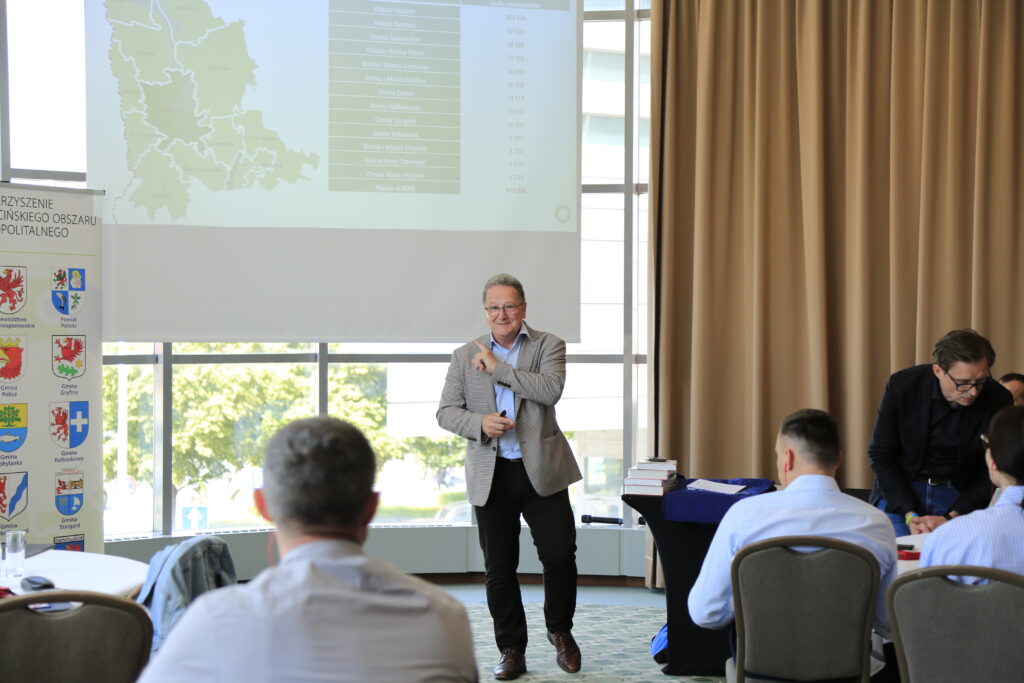
The Association consists of local governments, but it is a voluntary association that does not have the status of a local government, so it cannot participate in the Sejm (note: legislative session). The country has the Union of Polish Metropolises, which has more influence on decisions; however, the association lobbies for the right issues and raises funds for joint projects.
“The money is basically next to us; we just need to find and be able to use them,” says Mr. Roman Walaszkowski, director of the association’s office.
One vote each from the largest city and a small gmina
To raise funds effectively, the association has developed several strategies and plans. According to Mr. Roman Walaszkowski, these are expensive documents, for which the association invited specialists to create. Without them it is impossible to raise funds effectively. The Association defines its own tasks, but operates exclusively within the agreed priorities, including the formation of a unified policy of local governments, representation of the interests of the Association members and promotion of their achievements, support for the economic and cultural development of local governments, and the establishment of interregional external cooperation, especially cross-border cooperation between gminas and counties.
The association is headed by the president of the core city. However, this does not give the city any privileges, as all association members (from the smallest gmina to the largest city) have the same voting rights. Therefore, to make a decision, the association members have to look for a common denominator and come to an agreement.
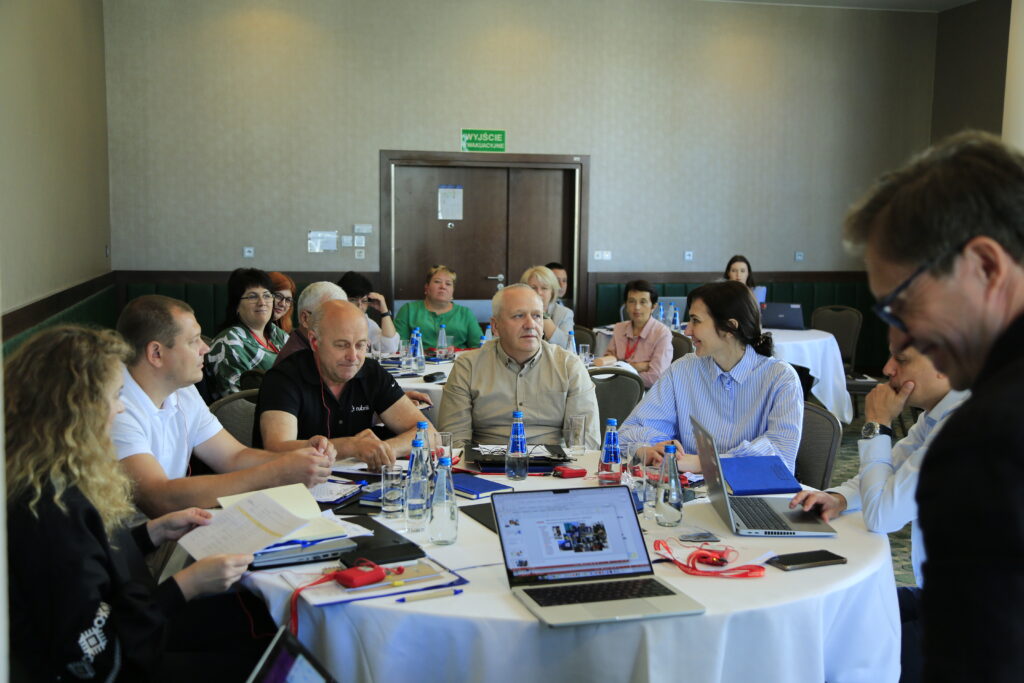
“Small gminas are waiting for help the most. Because big cities have their own facilities. In small ones, one person often deals with several areas at once. However, assistance is provided mainly based on the scale of benefit: where the project will reach more people for whom it is designed. But to agree on why this gmina will receive funding and not another, you have to negotiate. Hard power does not work here because it endangers to leave you with nothing. Politics remains outside the walls of the association – only joint decisions in favor of more people,” says the director of the association’s office.
The only difference between cities’ size is the membership fee amount. It is calculated depending on the number of residents – 1 złoty per person. Thus, a large city with a population of 400 thousand inhabitants will pay 400 000 zł to the common treasury. In return, a gmina with 2000 residents will pay 2000 zł. The funds are used to pay for the office and the salaries of people who work to raise funds for joint projects and coordinate their implementation.
Each gmina has its own coordinator from the association, usually a specialist from the strategic development or investment department. These people are the link between the local government and the association and coordinate all the work. For example, they find the right contact in the gmina or organize work with the specialist responsible for a particular project. This way, the association office does not have to spend time searching for such information on its own, but receives reliable information from a competent coordinator. The employee receives an additional payment for the extra work. The association has a budget line item to transfer funds to the gmina, which transfers them to the designated person. According to Mr. Roman Walaszkowski, the awards are intended to encourage responsible cooperation, and they motivate the coordinator to pay appropriate attention to tasks that could be lost in the whirlwind of current activities.
Partnering to accomplish larger goals
One of the association’s large-scale joint projects is the construction of a public transportation network that will allow for convenient and inexpensive travel in the region. According to the initiators, developing such a connection should reduce the need to use private cars for frequent travel. And, given that many people travel these roads every day, the road load and the negative impact on the environment will be reduced significantly.
“Local governments are responsible for providing public transportation in the gmina. We dream of creating a single organization in all territories that would be jointly funded and coordinate the entire newly created network. However, at the moment, everything is being solved in the easiest way possible – by reaching an agreement among ourselves,” says the director of the association’s office.
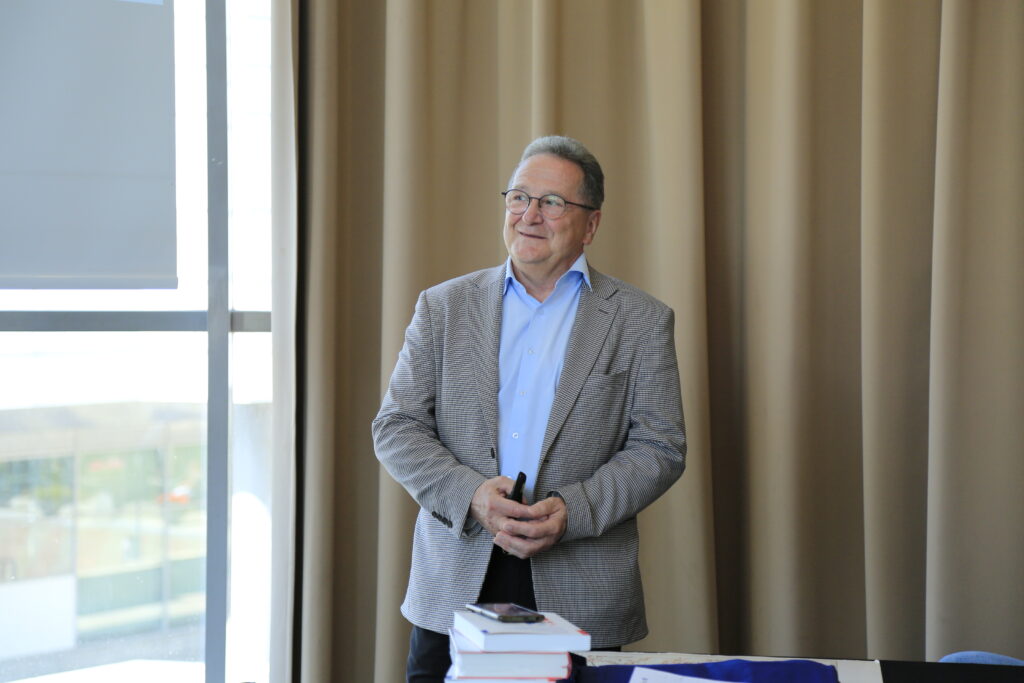
The spine of the route will be a railroad connecting key agglomerations. According to preliminary estimates, 15% of residents live within walking distance of the stops – up to 15 minutes. Another 80% will be able to get there by bicycle. Special parking lots are provided for them, where they can leave their two-wheeled vehicles. All stations are being built to be fully inclusive and have elevators for people with disabilities.
It is envisaged that there will be a single travel card for all modes of transport costing 250 zł per month (approximately $64). It includes the cost of traveling by rail, as well as by bus and other modes of transportation provided by the network. For comparison, gmina residents currently pay up to 300 zł (about $76) for a one-time trip to Szczecin.
This is an example of a project that was made possible only through partnership. Funding was found through a competition – the project cost 249 million zł.
The gminas are preparing for the implementation of the project and attracting other funds to create additional conditions for passengers. For example, the city of Goleniów bought and demolished the old train station building to build a new one. The city guards work there, there are lounges for travelers, and a cultural center was created in the adjacent building.
Regional association as a way of international partnership
According to Mr. Roman Walaszkowski, director of the association’s office, there was a “wall” between Poland and Germany before joining the EU. After the opening of borders, the poor German districts located near the border looked up to Szczecin. The association was already showing its effectiveness, so some of the Länder wanted to join the association. They even wrote letters to the leadership of the association and to the relevant ministries. Polish law does not allow such collaboration, as only Polish representatives can be members. Nevertheless, there are joint developments on both sides of the border. This practice is common in European countries. Often, the border area has joint problems, so there is no point in solving them alone when it is possible to implement projects together and attract large or small funding from the EU on both sides of the border. German Länder and Polish gminas implement projects together at the expense of the European Union. They also organize integration events: firefighters, nurses, kindergarten teachers, and other professionals share their experiences.
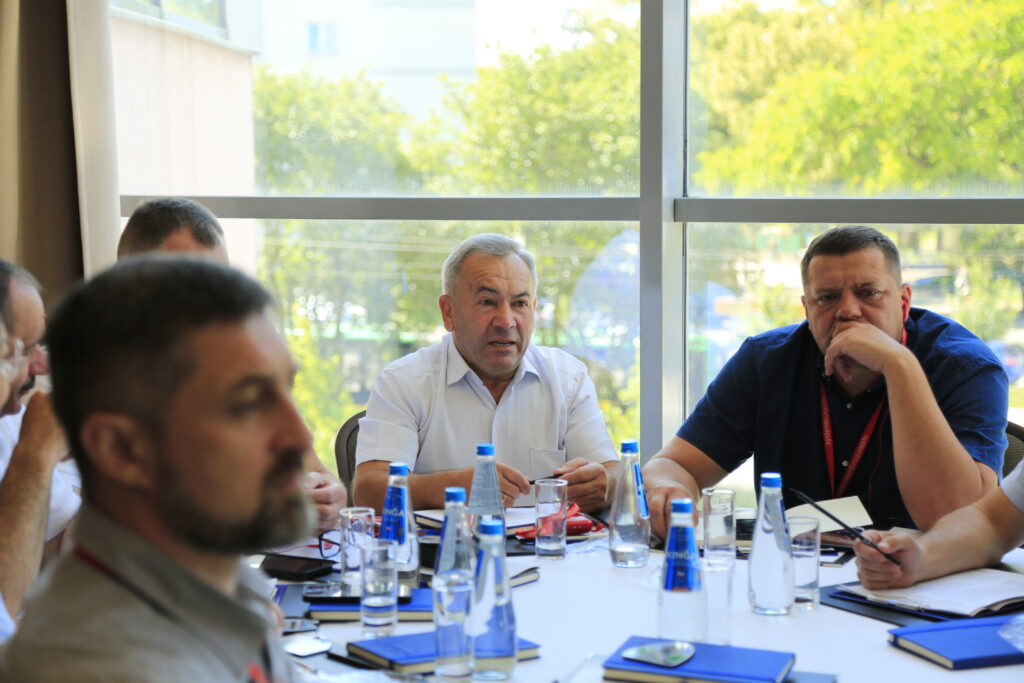
Mr. Roman Walaszkowski noted that such a partnership is also possible between the communities on the border of Poland and Ukraine:
“The EU is opening up further to other countries. There is already money allocated for the Polish-Ukrainian partnership. I believe a territorial cooperation group could be created for this purpose. It would be established by the two states and would help solve a common problem that has arisen for both sides.“
However, even before joining the EU, the association can help Ukrainian communities, for example, in finding partners. According to Mr. Roman Walaszkowski, for an effective partnership, a gmina and a community or city should be of the same size and have similar challenges and opportunities. It is local government associations in Poland that operate with the most detailed “live” information about gminas and cities. Therefore, if the Ukrainian community wants to find a partner in Poland, it is worth contacting associations rather than official channels. The Union of Polish Metropolitan Areas can help large cities, while different types of communities can turn to regional associations, including the Association of the Szczecin Metropolitan Area.
Goleniów gmina and the industrial park
The Goleniów gmina is located in the northwestern part of Poland. About 37 thousand people live here, including many Ukrainians. A few years ago, the population reached 34 thousand. The gmina stretches over 443 square kilometers, half of which is forest. Goleniów is looking for ways to improve its residents’ comfort so that they do not leave. One of the tools is benefits for locals. For example, public transportation is free for residents. The local authorities take care of quality utilities, build bicycle paths, and renovate public transport stops. In preparation for implementing a large-scale project to build a joint public transport network with neighboring gminas, a new railway station and infrastructure were built. The gmina is also attracting investors to increase the number of jobs. Goleniów Mayor Mr. Krzysztof Sypień says that the municipality’s investment attractiveness is high and is second only to Szczecin and Stargard in the voivodeship. But this was not always the case.
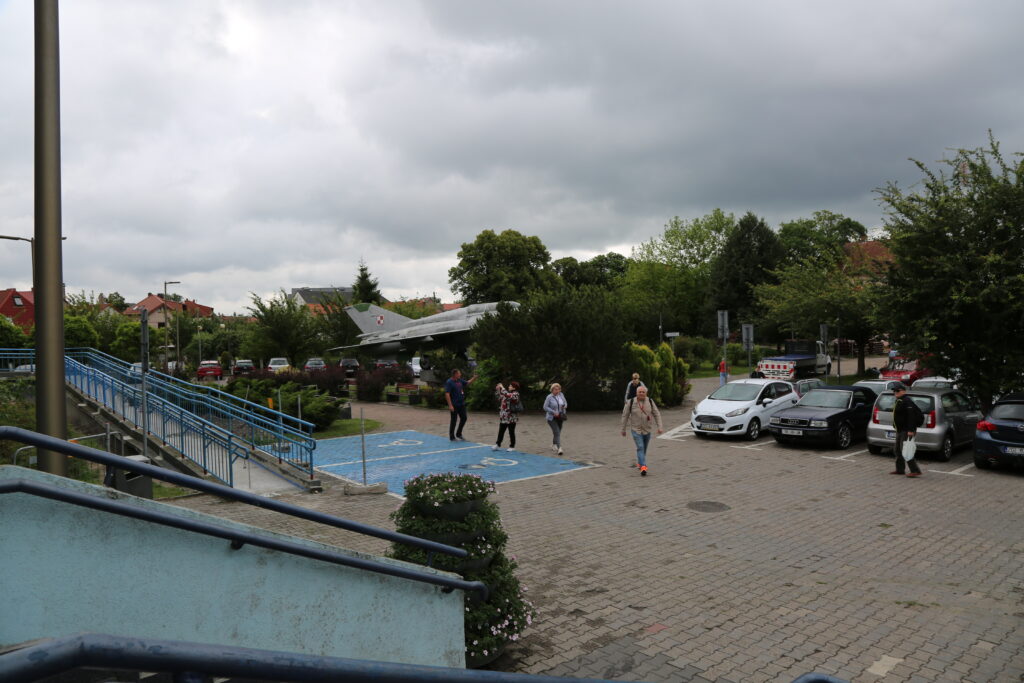
How does Goleniów use its investment attractiveness?
It is 35 kilometers to Szczecin from Goleniów, and two hours by highway to the capital of neighboring Germany. This opens up a quick route to the intercontinental airport – you can fly from here to any destination worldwide. However, Goleniów also has its own international airport, which is used by half a million people annually. The gmina also has a railroad connection, a river port, and a ferry crossing on the Ina River nearby. Highways from the commune stretch to the four corners of Poland. All this makes the area attractive for business, and the community is actively using this opportunity.
As a result, the profit indicator, as well as the payment of local tax, are the best in the region. A few numbers about the gmina. There are 6000 registered entrepreneurs in the gmina. The employment of one resident brings about one thousand zlotys (around $250) to the gmina budget. The average income per capita is over 7500 zł (about $1900). And the community’s total budget reaches 282 million zł (almost $70 mln).
Mayor Krzysztof Sypień notes that the gmina maintains its stability thanks to business. The local authorities have used various improvements to win competition with other gminas. The industrial park has played an important role in attracting foreign investors. By the way, the EU helped to build it when Poland was just preparing to join the EU, as Ukraine is doing now.
“We could use various privileges. Thanks to the status of an economic zone, we can cancel the national tax when starting a business. EU funding also helped. What makes us stand out from other gminas is that investors receive open professional support from our office. I hope this will help us be even more successful and visible.”
In the gmina, they say that local authorities help to create a “family” in the industrial park’s operations – since an investor gets acquainted with the territory to a reliable family partnership. For this purpose, they have a team of specialists who accompany the investor.
Now, there is very little free space left in the park, and its cost has increased significantly. Even those companies that want to expand on nearby plots do not have room for it now. So it’s not the local authorities who are thinking about competition, but the businesses that want to come to Goleniów.
How the industrial park began
The Goleniów Industrial Park is located on 405 hectares. Sixty investors from Germany, France, Denmark, Norway, Sweden, Poland, and other countries have built their businesses here. The industries are diverse: workwear, aluminum platforms, luxury yachts, and wind turbines for power plants.
The area where the park was built used to be empty. Part of it was a field where cattle were grazing. But for the most part, the land was simply not used. There were no roads or communications. And they didn’t know exactly what was hidden underground either. The local authorities decided to take a chance: they invested their own money and infrastructure and attracted support from European Union funds.
They developed a vital document for the industrial park – a spatial planning blueprint. It helps calculate resources and capacities to use the territory efficiently. The document needs to be worked out in detail and with a long-term perspective so that it does not require changes. Planning also allows you to anticipate challenges. For example, when you need to calculate the scale of enterprises entering the territory. Mr. Jerzy Wysocki, Director of Investments, said that a large investor wanted to come to Goleniów: he had a lot of money and was ready to create 23,000 jobs. The gmina had to refuse this offer because of the huge risk. If something had gone wrong, the loss for the gmina would have been significant.
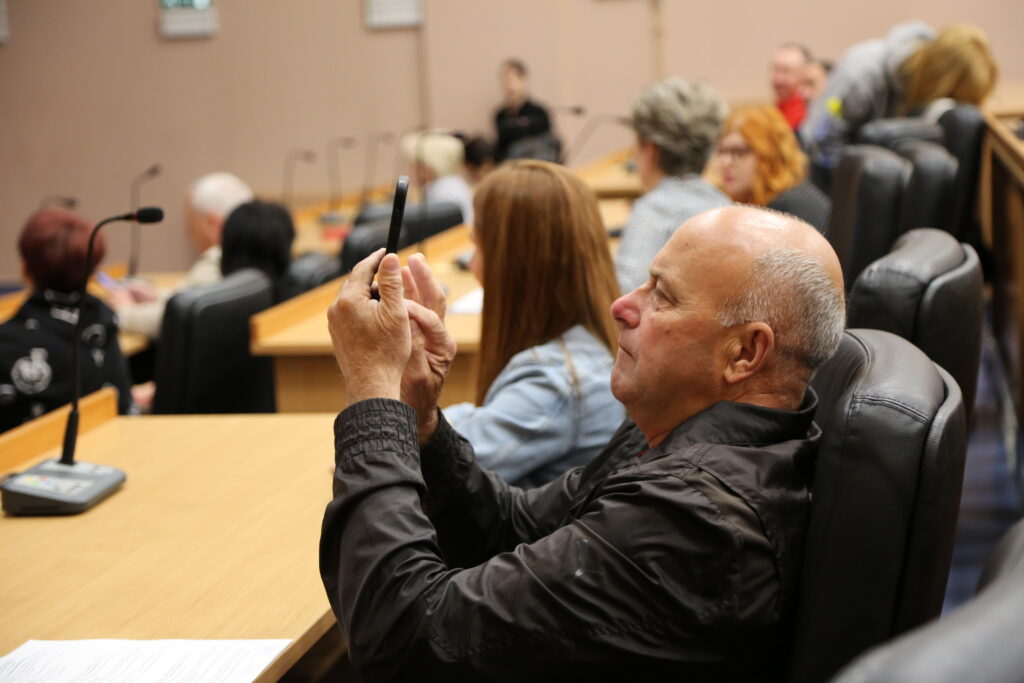
The local authorities also began to investigate the land. They needed to know whether it was safe, whether there were any explosives, and whether there would be any landslides from large-scale construction. Then, they started organizing the plots, building roads, and connecting electricity, water, and sewage. The challenge was laying the power lines, as the investor could not get electricity until he signed the contract. And until the investor wins the tender for the site, he cannot be sure that he will win and will not pay for the electricity. So, the purchase of a certain amount of electricity fell on the shoulders of local authorities. According to Mr. Jerzy Wysocki, the site had to be prepared for investment:
“When there is a road and infrastructure, the territory appears on the investment map. And when a large investor comes, he ensures the territory is safe, free of harmful elements, remnants of war, archaeological values, etc. It is very important for international investors to know this, so our task is to collect this information in advance.“
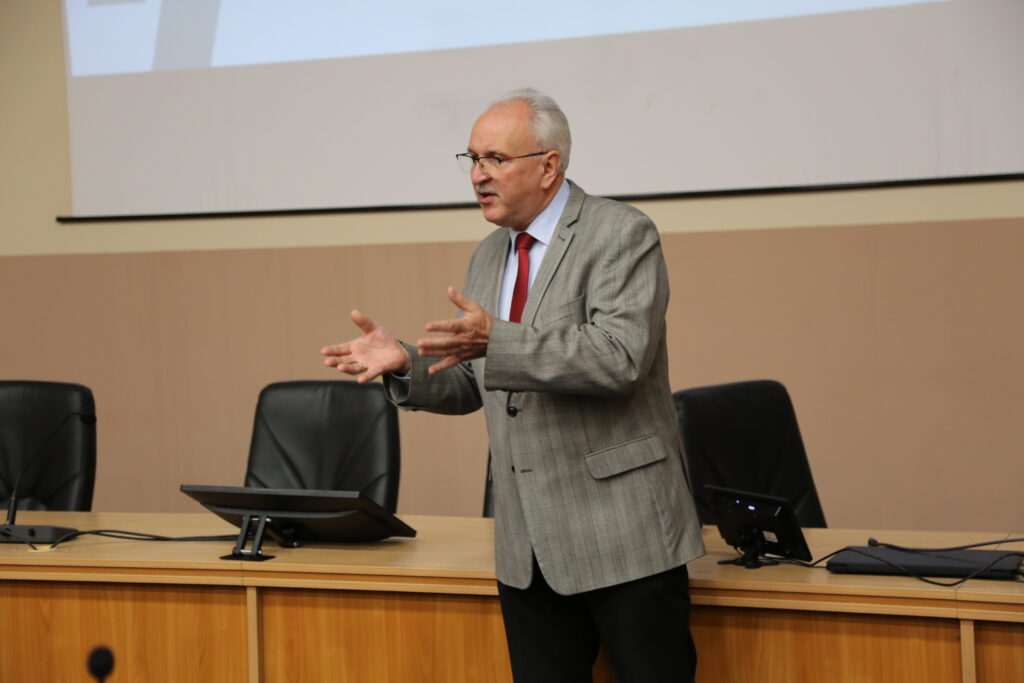
After preparing the territory, it was important to quickly find the first investor. Goleniów Industrial Park was the first in the county, so it was a bold decision to invest here. Mr. Jerzy Wysocki recalls one investor who initially offered a price of one euro for the site. He said that he would bring production, create jobs, and provoke a big business start in the area. The negotiations lasted for several days, but the gmina did not agree to such a “tempting offer.” Mr. Jerzy Wysocki believes that if an entrepreneur has the money to invest, he can also pay a fair price for the purchase of the territory. The cost of land at the start should at least cover the cost of communications.
At the beginning of the establishment, the local authorities offered preferential taxation conditions to potential investors. This attracted new entrepreneurs but produced a challenge for local businesses that did not enjoy the benefits and also had competitors in the area. However, for some companies, the site in the industrial park became an impetus for development: a local courier company, having established partnerships with businesses, grew into a large logistics company.
Constant guidance is an important argument in favor of Goleniow
An important advantage of Goleniów over other industrial parks has been and remains the constant support of a specialist from the local authorities. He or she acts as a guide for the investor advising on obtaining permits at the local level, guiding them in finding employees, and providing step-by-step support for launching a business. In fact, investors do not understand local laws, and it is difficult for them to find answers to their questions on their own – all this can be done by someone who knows all the intricacies of the local situation. Such a specialist advises the investor on how to form an opinion about the gmina, can quickly respond to doubts, convince them to invest, and ultimately shows that the gmina is waiting for this investor and is interested in cooperation. According to Mr. Jerzy Wysocki, investors should feel that they can come to the gmina, tell it about their concerns or questions, and the specialist must understand his land to provide an answer. After all, investors are looking for stability. And with the support of local authorities, they can be sure of it.
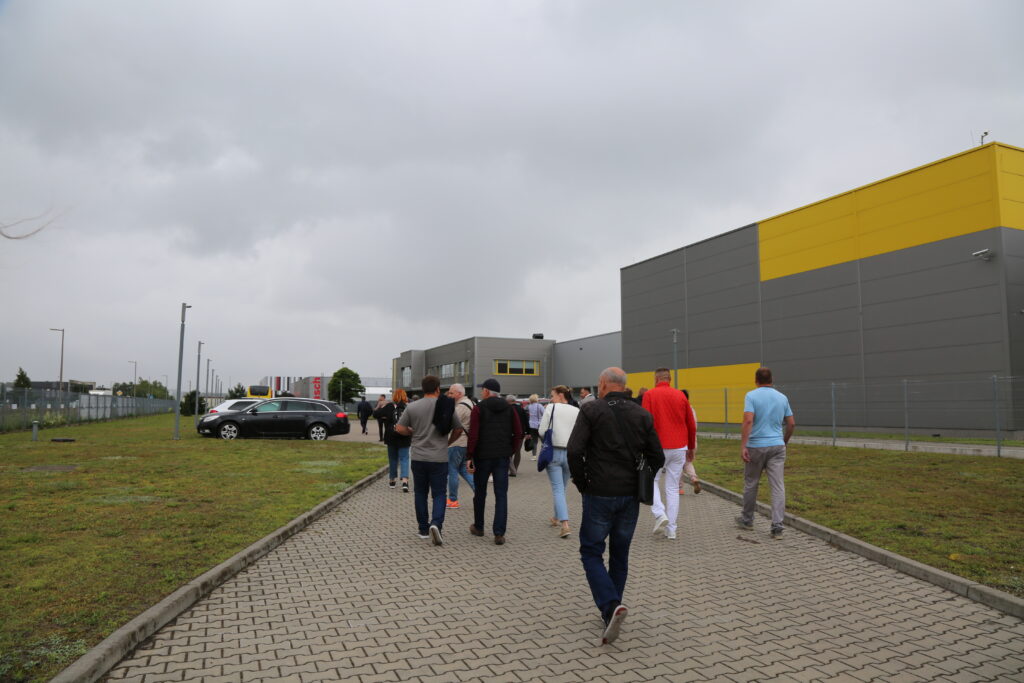
The openness of the authorities and constant support became convincing arguments for the German manufacturer of electro-mechanical industrial and household appliances BOSCH. In 2016, the company received land and began building its first plant the following year. In 2019, it expanded to mass production, partially relocated from Switzerland, and plans to expand. By the end of the year, it will begin constructing another new-generation building.
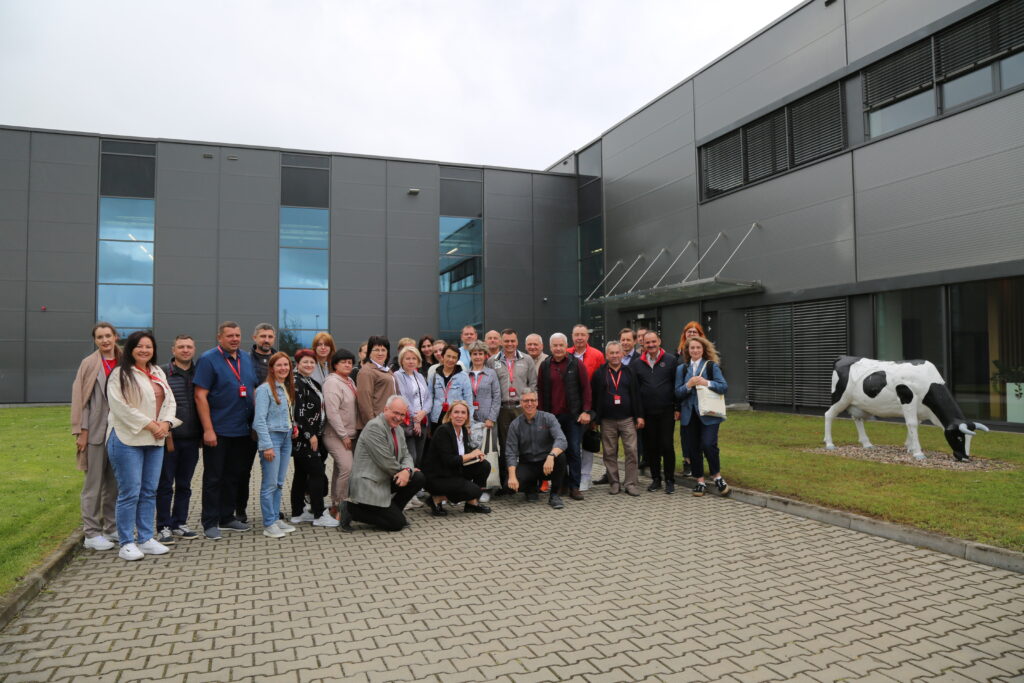
Initially, the company was choosing a country to set up a business in – checking the territory and specifics of the legislation. When it was decided that it would be Poland, the question arose as to where exactly. The availability of a transportation network and access to human resources, in particular, due to the proximity of universities and educational institutions for personnel training, played an important role. However, according to the BOSCH representative office in Goleniów, the decisive argument was the openness of the local authorities and specifics in the training processes. The previous agreement on another option for business location did not work out precisely because the representatives could not provide clear counseling and say how much time was needed for documentation. It was important for BOSCH to plan its actions and have an understanding of the time of the production launch. This showed the company that the registration process would not be complicated and that the gmina was interested in cooperation.
How to create an industrial park: challenges and tips
Mayor Krzysztof Sypień says that the current successful industrial park began with a risky idea: to effectively manage unused territories. However, this required serious work.
Every investor pays attention to the peculiarities of the territory, which can be profitable and convenient. However, some several general rules and actions will help attract investment in an industrial park and may be useful to Ukrainian communities:
- Carry out spatial planning of the territory to have a clear plan of action and understand which investors may be interested in the area.
- Examine the territory to ensure that there is no dangerous groundwater, remnants of explosives, etc.
- Create infrastructure for the business: electricity (autonomy will be an advantage), water supply and sewerage, roads, etc. By the way, the Goleniów gmina went further and even organized public transportation to the park with free employee travel.
- Train specialists in the local government who will accompany the investor at all stages of preparation and registration.
- Give the investor confidence in your gmina. Internal conflicts should remain behind the scenes; in the external context, unity must be maintained.
- Take care of promotion. Goleniów created a website for the industrial park, which was used as a business card and where detailed information about the territory, planning, etc. could be found. Now the site is used to inform people about news and as a catalog of the industrial park’s life.
The presence of such a park and business infrastructure will stabilize the economy for centuries. No matter how the government changes, the residents of the gmina will have jobs, and the local budget will receive taxes.
The first to arrive gets the best deal
Another example of successful cooperation is the Danish distribution center Bestseller and CEVA Logistics. The municipality receives property taxes from the company, as well as employee income taxes. The company processes online orders and sorts them into four destinations to more than 10 countries, including Ukraine. After the start of the full-scale invasion, deliveries to Ukraine did not stop, although there were fewer orders.
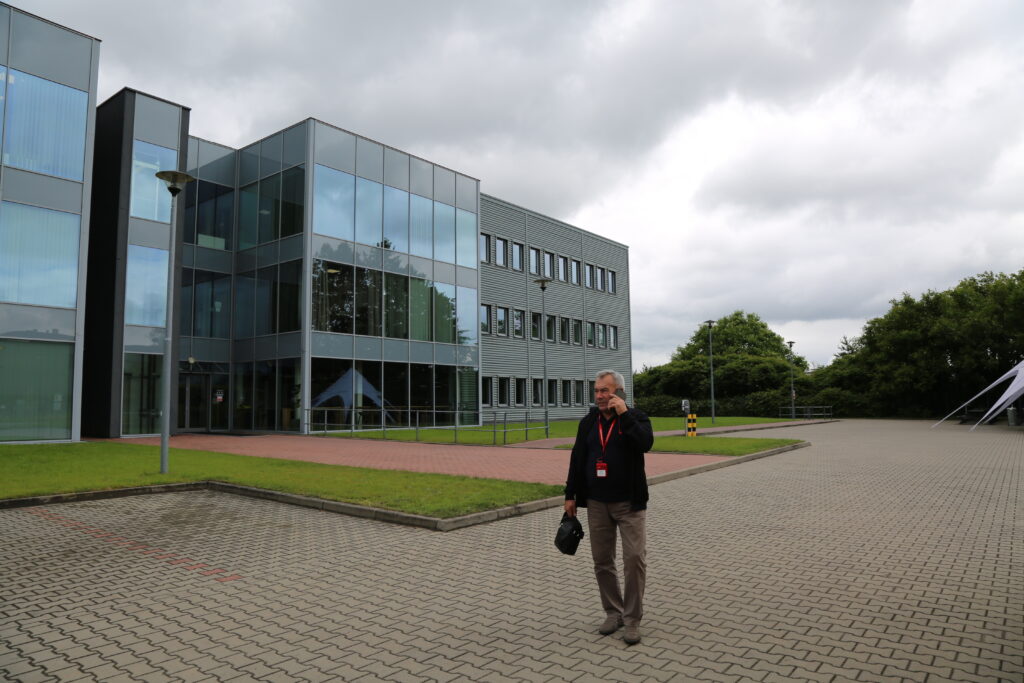
Mr. Jacek Friedrich, director of the Goleniów office, says that the company thought about relocating to the Netherlands because of the proximity of the war. However, this decision was abandoned, and in the future, they are considering expansion in Goleniów. They even have an area in an industrial park for this purpose. Even at the start, the company realized that the first to buy would be able to get a better deal, and the price would rise. They purchased the land in reserve and built up part of the territory. Now, at the ground level, the company occupies 1.2 hectares, and the total area of the enterprise with all floors is 3.6 hectares. They do not plan to sell the free space but offer it for rent until they have a development plan.
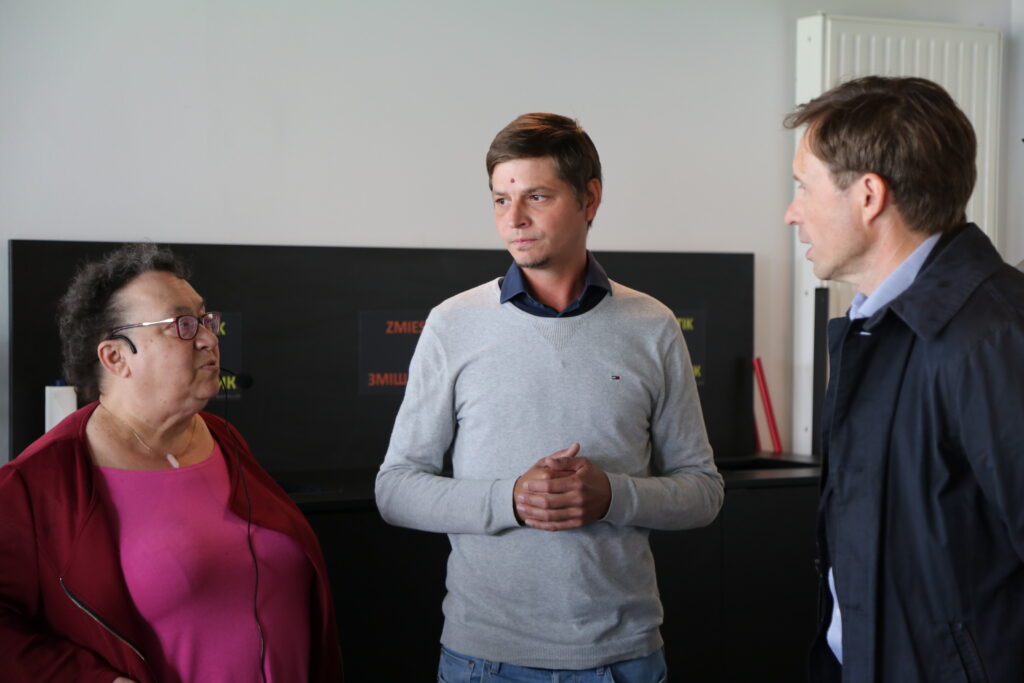
Bestseller believes that Goleniów Industrial Park is a good place for business development. Here, the company has access to transportation thanks to convenient connections and infrastructure. They also have access to human resources: they cooperate with recruitment firms. During the peak gift-giving period, like the Christmas holidays, the company needs up to 1200 employees. During the off-season, it employs about 600 people from 17 countries. According to Mr. Jacek Friedrich, the strongest team is the team of Ukrainians because they always work in a coordinated manner and are focused on results. To support the morale of Ukrainians, they even organize Ukrainian cuisine days, and after the outbreak of a full-scale war, the company helped organize a kindergarten for the children of Ukrainians working in the park.
Employees are obliged to do their work quickly and efficiently: within 24 hours of ordering, the goods are sent to the buyer, and the order must reach the addressee within 48 hours. Delays are not allowed. Every day, 50 thousand parcels are packed and shipped, and about a million in a month. To meet the strict requirements for shipping times, the work must be done by motivated and competent employees. Therefore, the company takes care of its team: insurance, a gym, a swimming pool, food, fruit, coffee, tea – all this is provided by the employer. For temporary accommodation, there is an inexpensive hostel that people can rent. Within a radius of 50 kilometers from the office, company vehicles pick up and drop off employees.
The company gives space for suggestions. Employees can write their comments on the organization of work or even meals. Mr. Jacek Friedrich says that thanks to honest feedback, the management sees what needs to be changed, what mistakes are made, and how the company can become better. Of course, they also take care of the salary, which is not the minimum.
“If you want to have good employees, you have to pay well. Otherwise, people will simply go to work elsewhere, where the conditions are better. We try to encourage people to express their opinions because we want to see our mistakes, and this is the only way we can grow,” added Mr. Jacek Friedrich.
Center for professional activity for people with disabilities
The Goleniów Industrial Park also has a vocational activity center that deals with the social adaptation of people with disabilities and employs them according to their capabilities. The institution covers about 150 people with various types of disabilities, from physical to mental disorders. The center was founded by the gmina, but the local government’s responsibility ended with the construction of the building. The center is self-sufficient. It receives electricity from its solar stations, saving on utilities. The building is completely inclusive: it has no stairs or thresholds, signs are duplicated in Braille, and the restrooms are adapted for people with disabilities. All doors are wide for easy movement in wheelchairs. There is a reception and a dining room. There is a gym for various types of exercises, a physiotherapy room, and a rehabilitation therapist for exercise selection and support. A nurse also works at the center to respond promptly to any requests.
Mr. Karol Lament, the director of the center, says that the peculiarity of the vocational activity center is that they teach people with disabilities the basic rules of life in society. For example, how to behave in a store, how to buy a movie ticket, go to the doctor, make tea or a sandwich. The institution cooperates with the theater: professional actors help people learn to express their emotions. Those with psychological disorders work with a psychologist. They also conduct financial pieces of training, for example, giving people a task to think about and buy a lunch for two people for 20 zł. In addition, they organize various excursions, entertainment outings, yachting, equine-assisted therapy, dog-assisted therapy, workshops, and even parachute jumping for all employees.
“We teach them how to work and how to adapt to life. We have exercise equipment and a rehabilitation therapist. For their general development, they dance Zumba,” said Mr. Karol Lament.
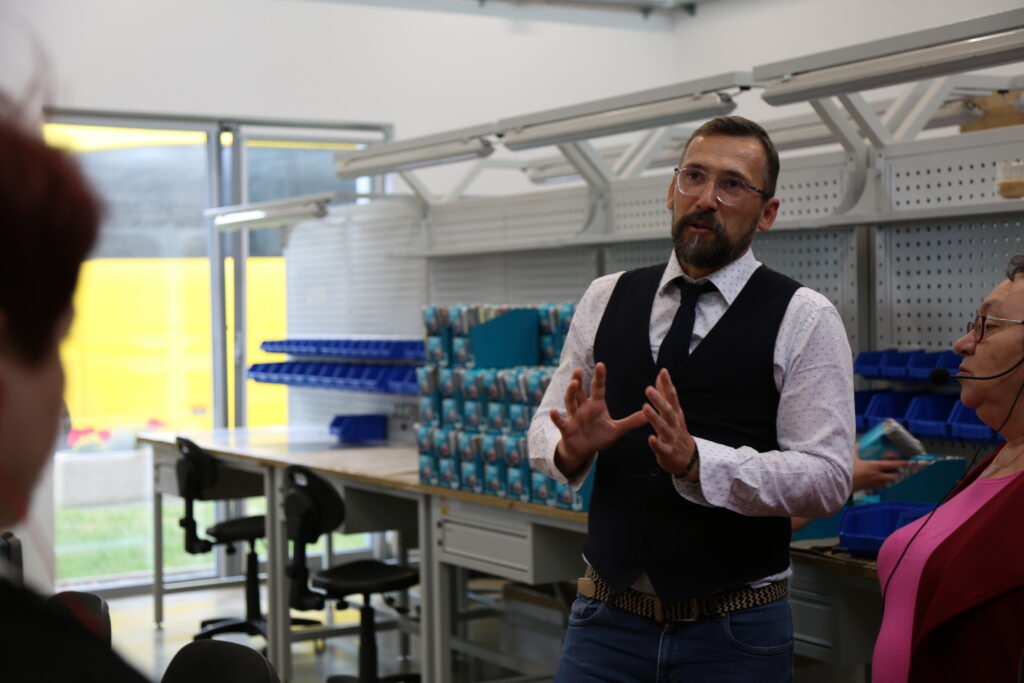
All of this is financed from the institution’s own earnings, which come from cooperation with companies in the industrial park and in the municipality. In Poland, there is a law requiring that 6% of positions in an enterprise be held by people with disabilities. Mr. Karol Lament said that businesses do not like this requirement because they consider such people unreliable as they are often sick or may avoid work. And if the indicator is not met, the business pays a fine. In Goleniów, entrepreneurs can sign a contract with the vocational activity center for a specific type of service, which fulfills the law’s requirement. The center, in turn, guarantees the performance of the service, because there will always be employees to work.
Of course, the center’s employees will not be assigned work that is too difficult or traumatic. The departments and services are determined based on two criteria: the entrepreneurs’ requests and the employees’ capabilities. The areas of service are diverse: printing, sewing vests and work uniforms, applying embroidery and branding to clothing, cleaning, cooking, and laying out things before the start of a shift at the enterprise. Post-transportation quality control service: the center’s employees check the goods using a checklist. There is also a laundry shop that washes bedding for hotels and children’s hospitals. The shop has a capacity of 150 kilograms per hour. The space is organized so that employees do not have contact with the chemicals and they do not accidentally get on their skin or eyes. Anyone can operate the equipment. Services are gradually being updated and expanded, and people are taught to work with new modern equipment in the areas that the industrial park needs.
Employees are paid the minimum wage so that they do not lose their social benefits. However, for some people, the salary from the facility is the only source of income.
“We give jobs to people who have never worked because they have a disability from birth. For a customer, it would be cheaper to buy a service from us, but these prices are enough for us, because people have jobs and money for their personal needs. People can earn money for themselves at home. This is also where they spend their money – at the hairdresser, in the store, etc. Money circulates in the gmina. “Giving a job is better than giving a benefit and forgetting about a person,” says Mr. Karol Lament. “In addition, we select jobs according to the diagnosis and characteristics of the person. For example, women with clinical depression feel better working in holiday catering. They need something to happen around them, and quick praise for simple tasks helps them psychologically. Instead, people diagnosed with autism are comfortable doing calm and monotonous work; they don’t like change, even a different color of a product or a new label is stressful for them. These people sew sponges for us.”
The sewing shop produces 40,000 dishwashing sponges every month. They are supplied to shops and restaurants. A supervisor and a quality controller oversee the work because sometimes people need to be reminded how things are made.
“You can’t drive people with disabilities away. They just want to work, and they don’t need to be disturbed. We don’t admire them, we don’t pity them, we don’t help them out. We teach them and give them the opportunity to socialize and work. There is no need to say ‘Let me help you’ – that’s the worst thing you can do. We have equality for everyone,” said the director of the institution.
Like all the enterprises in the industrial park, the Vocational Activity Center pays real estate tax and salaries to its employees. In fact, it is an autonomous enterprise operating on a market basis. The vocational activity center is called Polish know-how – the gmina has introduced a socially responsible business that also employs people with disabilities, and entrepreneurs do not think about how to fill the required 6%.
Złocieniec gmina, its culture, and volunteer firefighters
The Złocieniec gmina is located on the Drawa River, in the Drawian lakes region of northwestern Poland. More than 15 thousand people live in an area of less than 200 square kilometers. The incredibly charming nature encourages the development of tourism. In addition, there is a landscape park nearby that attracts travelers not only from Poland. There is a potential for the development of hiking and biking tourism, as well as an overnight accommodation center and rest homes.
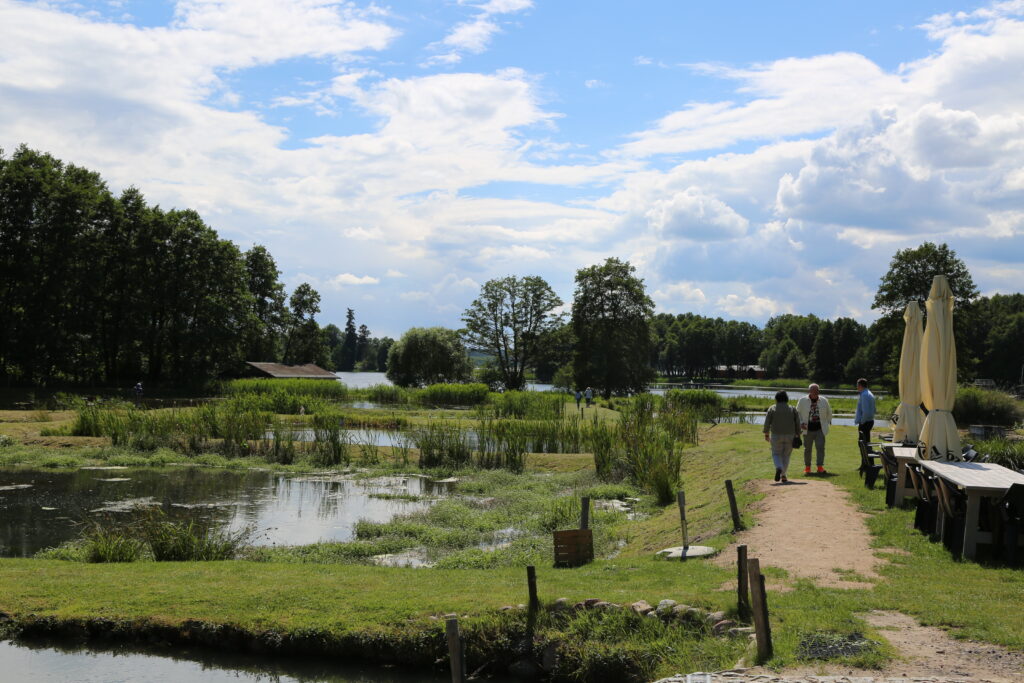
The gmina has three memoranda of cooperation with Ukrainian communities in Dnipropetrovsk Oblast: Novooleksandrivska, Solonyanska, and Hrechanopodivska. The Poles sent humanitarian aid to the latter. They also hosted internally displaced persons from Ukraine at a recreation center on the lake.
Culture is about strengthening local identity
The development of culture is considered a priority in the gmina, and funding is attracted for this area to create conditions for a comfortable life. “Miasto z klimatem,” which means ‘city with atmosphere,’ is written on their souvenirs and promoted to external audiences. The Złocieniec gmina believes culture is about identity, unity, and responsibility for one’s home. Speaking about the culture, any activity of the gmina makes a person the center of attention. However, there is a nuance: people are given the opportunity to create the culture they want to see by themselves.
There are 26 cultural institutions in the gmina. One of them is the House of culture in Złocieniec. It not only organizes concerts and workshops. They have a modern cinema and their own libraries, are engaged in cultural and environmental education, organize festivals, and encourage people to unite.
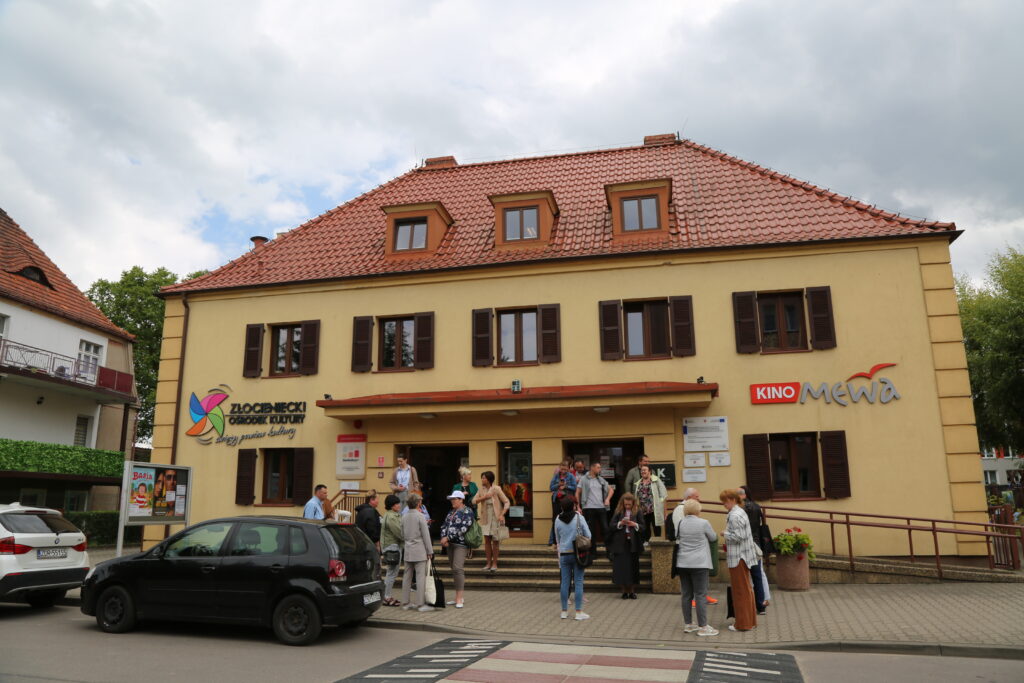
“We don’t work for people; we work with people,” says Ms. Jolanta Smulska, director of the House of culture.
To encourage people to join cultural initiatives and joint events, there are so-called ‘cultural animators’ — people who coordinate the industry’s activities in specific projects, manage events, and communicate with people. The main goal is to motivate people to join the movement, make culture active, and promote people’s initiative. The animators work, in particular, in the rural offices of the House of culture, where there is less activity than in the city.
In Złocieniec, they want culture to unite people and create a sense of being together. At events, they meet people with the same interests, socialize, and keep in touch on social media. When they have strong ties, they build a local-type identity.
“Why do we need culture? We have houses, banks, roads-what else do we need? We want culture to build relationships between people. We want to be a space where people can meet, communicate, discuss, and exchange ideas. Then, relationships and social ties emerge. When we have such connections, we build a local identity. After all, this is my place, my people, I like to come here, we are developing. Thanks to such a community, we rapidly develop our consciousness with various elements that affect our overall development. Each of us has his or her own specialty, and when we are together, our joint competence grows. Then we are able to do more,” says Ms. Jolanta Smulska.
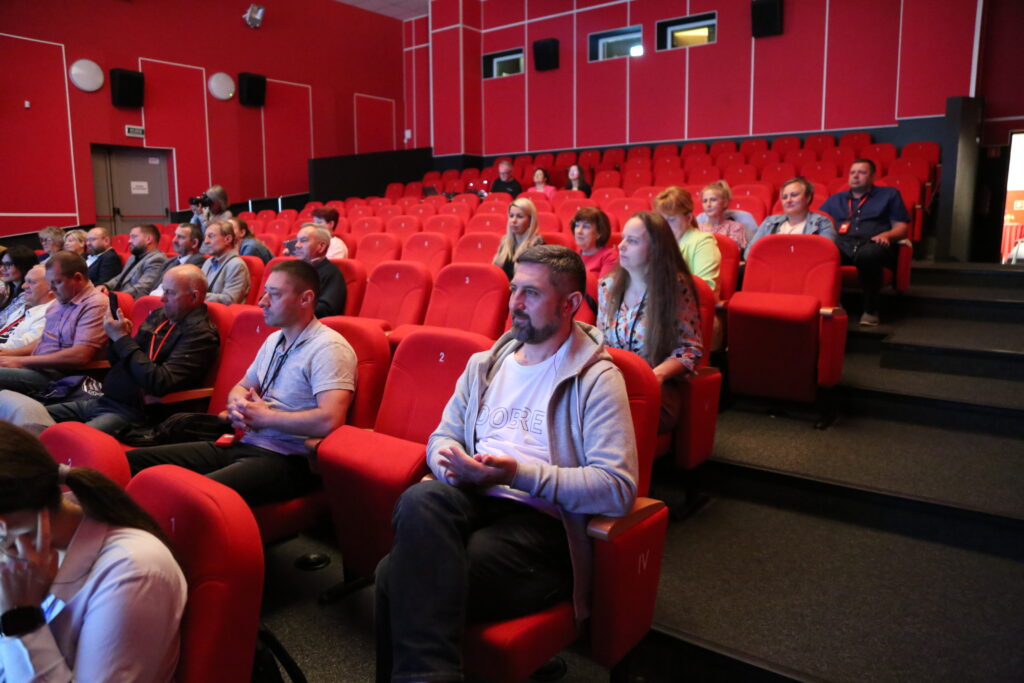
Working on a common cause reconciles warring neighbors
One example of joint effectiveness is a competition organized by a cultural center using its budget. By the way, this budget is partially subsidized, but the community’s own earnings make up a considerable share. According to Ms. Jolanta Smulska, the competition is not about expensive projects, but interesting initiatives people want. The budget of the competition varies every year; it depends on the initiative of people and the capabilities of the organization. The House of culture helps to prepare the application and describe the project, but does not interfere with the idea, because the point is that it should be exclusively a people’s initiative. And the commission for selecting the winners is the candidates themselves. However, you cannot vote for your own idea. Candidates present the project at a meeting and then choose the winners who will implement their ideas.
The gmina says that the common cause even manages to reconcile neighbors who have disliked each other for years. One street came up with the idea of a mural. Helping each other to outflank their competitors, the neighbors reconciled despite their personal relationships.
“It’s all about quality of life. This is my life; I have influence. People unite and develop their homes,” added Ms. Jolanta Smulska.
Uniting people is the principal mission of the cultural sector in Złocieniec. To achieve this goal, the gmina created a new tradition. Since 2016, the Drawa Festival has been held here. This is a large costume performance that takes place in a round dance through the entire town so that every resident and visitor can see Queen Drawa and come out to celebrate.
Queen Drawa is a woman wearing an elegant dress who is a symbol of the holiday and the city. All the guests jointly represent the river and perform a traditional dance for the holiday.
“The most important thing is the local character of the holiday and the partnership. We want as many people as possible to develop and create the holiday. And this holiday is exclusively about us – we symbolically revive our river with fish. All our motto has an axis: “I invite you, this is your city. You can create it with us.” Many tourists come to us, and together we make the city look festive and share the creativity of our people,” said the director of the House of culture.
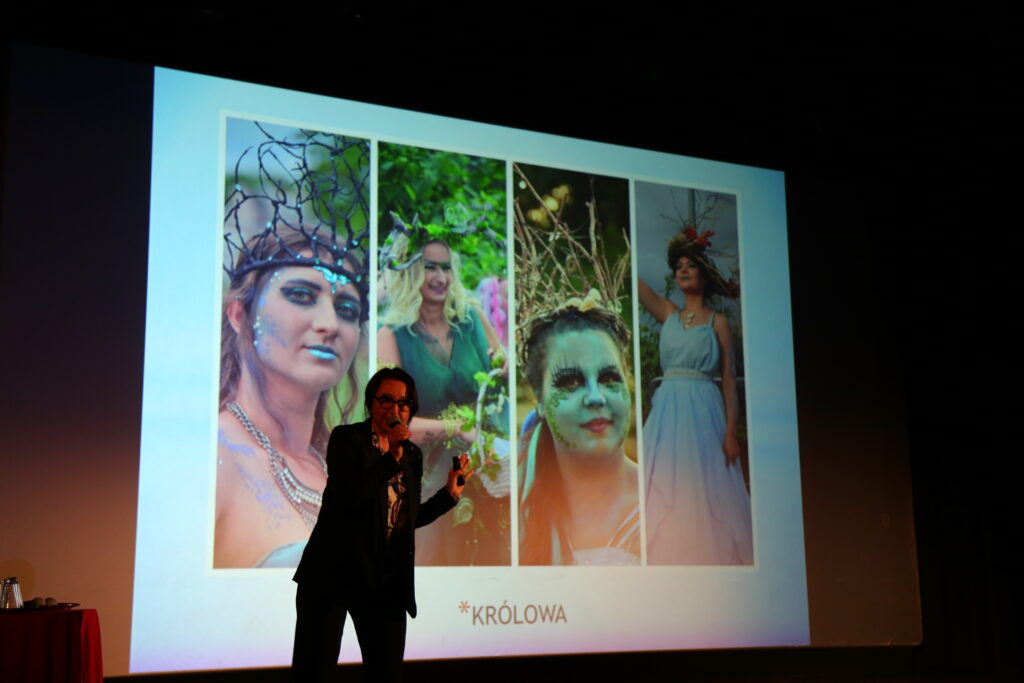
Locations with master classes and exhibitions featuring the works of local people are being set up around the city. Dressing up in themed costumes and painting faces has become a tradition. A round dance goes through the city and invites people to join in. The holiday ends with all the guests singing the holiday anthem together.
The tradition of protecting your people
Although culture was the main topic of the Ukrainian community’s visit to Złocieniec, the gmina could not ignore the volunteer fire brigade, of which it is very proud. This team is one of the largest in the county, consisting of seven units and a total of 140 volunteers. The team from Złocieniec also has the largest number of visits in the province – about 300 per year.
As a member of the association, firefighters have the right to attract EU funds, but maintenance, fees, costs of competitions or educational events, and basic stable funding comes from the gmina budget.
“The uniform is always pleasing to the eye, especially since they do everything to protect people and their property. Our volunteer firefighters are highly respected in the gmina. The tradition of being a volunteer has been passed down for generations,” said Ms. Małgorzata Głodek, Mayor of Złocieniec.
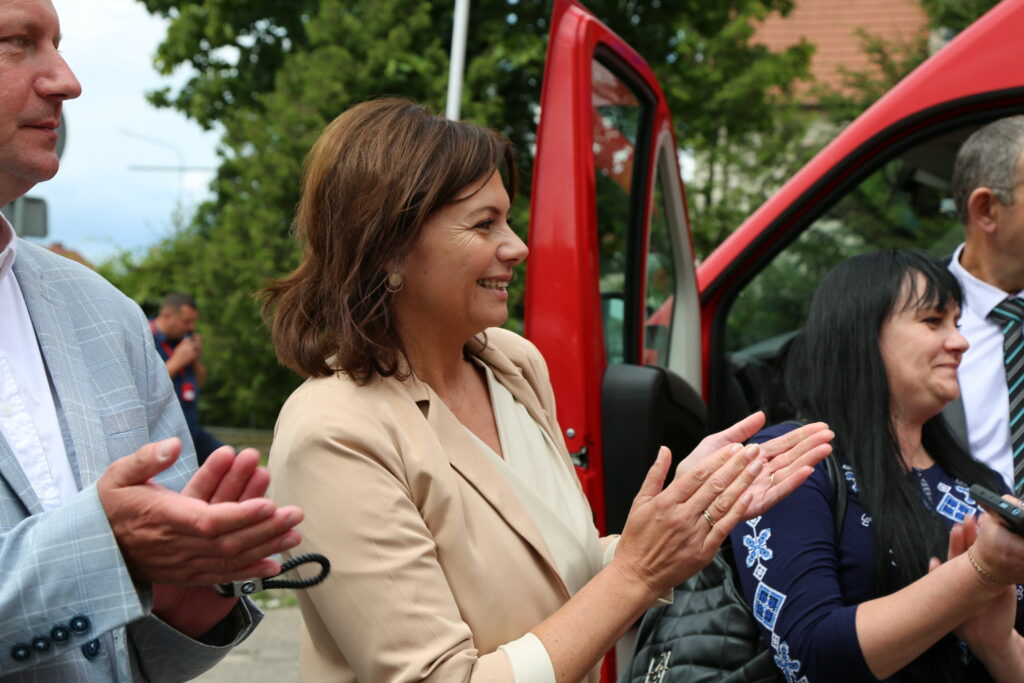
That is why there is no need to invent motivations or promotional campaigns to attract people. The tradition is supported and nurtured in families from an early age and is considered a vocation. The gmina also provides an opportunity to prepare for voluntary duty. There is a youth fire brigade of 20 people. Of course, they don’t go out to extinguish severe fires, but they do receive training and basic education.
How the work of a volunteer fire brigade is organized
Volunteer fire brigades have been operating in Poland for over 120 years, while the public service was established only 30 years ago. Now, they work together and in coordination, and the volunteers are connected to the general fire protection system, so they can go to any territory if necessary.
According to Mr. Mateusz Waszczyk, the gmina custodian, the local team is located closer and always arrives faster. While the state team takes longer to get there, and they respond to more complicated cases where the local team needs reinforcement. Any of the volunteers can respond to basic calls: extinguish a fire, rescue an animal, or help in an accident. They are trained for this because they have undergone mandatory training in government departments, even practicing in smoke chambers. Only those who have undergone the appropriate training are assigned to specialized tasks (chemical hazards, rubble removal, water and ice rescue). This unit has vehicles with hydraulic lifts, boats, ATVs, and equipment for such calls.
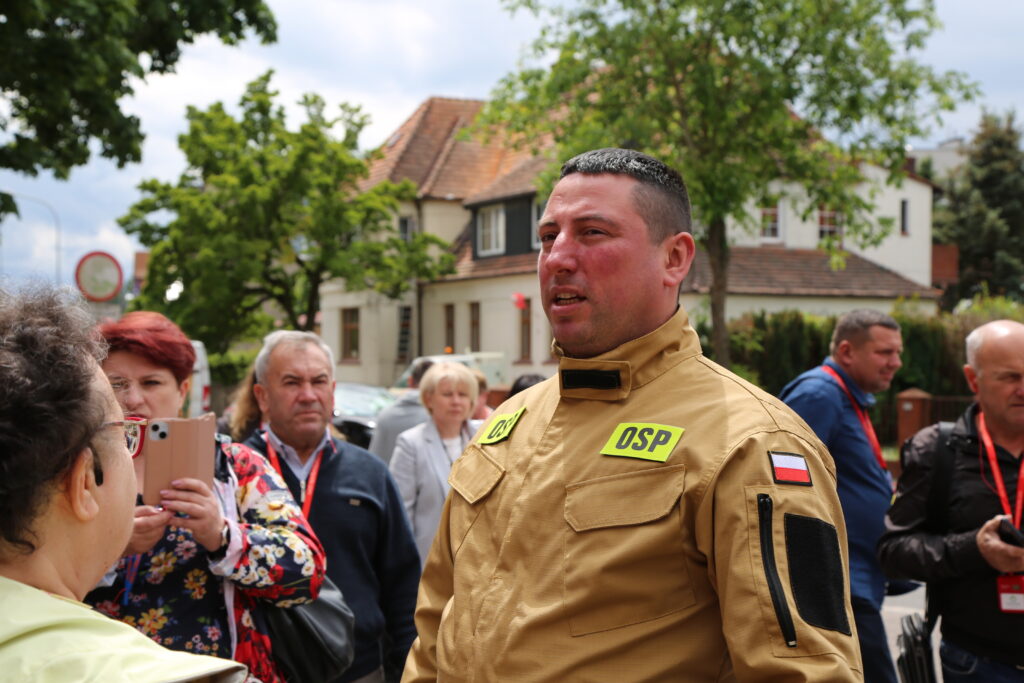
The headquarters has offices for the operational officer and the custodian. But only drivers are on duty at the site. They receive a minimum wage, while rescuers are paid an hourly rate for a call, which is 44 zł (about $11). Firefighters are not on duty at the headquarters but live their own lives, go to their own jobs, and respond to calls only when notified. By the way, the employer is legally obliged to let a volunteer firefighter leave work. If this is impossible because no one can replace the person during the working time, the employer will pay a fine. And at least 4 people must always respond to the signal promptly. So if there is a big holiday coming up or a wedding for one of their colleagues, the firefighters agree in advance who will be sober and ready to go.
All calls go to the 112 common emergency line. The dispatcher then transmits the information to the county office, which notifies the unit by radio and sends notifications to volunteers. Each firefighter has an app on their phone where they learn about calls and confirm their readiness to go. It should take no more than five minutes from the time of the call to the time the vehicle leaves the headquarters.
At the time the Ukrainian community representatives were at the fire department, a call had just come in about an apartment fire. One of the volunteers cycled home from work to join the team. The firefighters quickly gathered, and within four minutes the truck was on its way. Mr. Mateusz Waszczyk added that teams from two other departments also left at the same time. A short time later, a public service vehicle also rushed down the street.
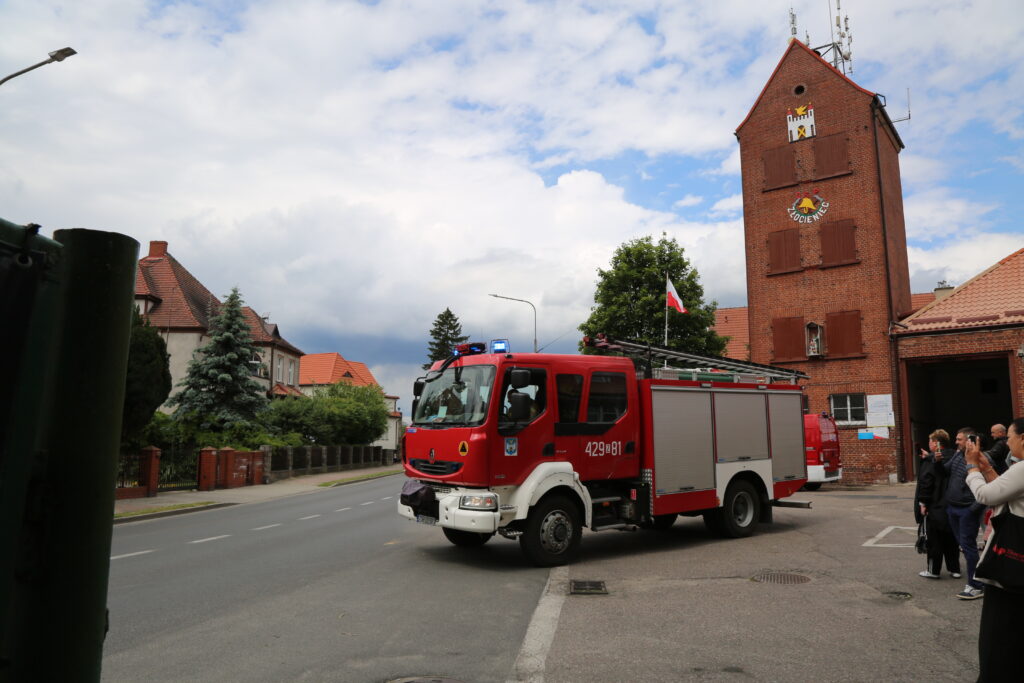
The tourist island gmina of Międzyzdroje (Misdroy) and its communal services
The Międzyzdroje gmina (historically known as Misdroy in English) is located on the largest Polish island of Wolin. The gmina is surrounded by different water: sea, bay, river, and lake. The first bathing beaches on the island appeared in the 19th century, and after the railroad was laid here, the town became an actual resort. There is a park with bison nearby. Thanks to the large flow of tourists, the gmina is financially strong, but it also faces some challenges, particularly in communal affairs. Międzyzdroje actively uses the opportunity to raise funds for development through associations, cooperates with other gminas along the coast, neighbors from less maritime areas. Thanks to this cooperation, it is possible to balance joint development between tourist and less attractive gminas, as well as to build joint routes for tourists so that people can see more and stay longer.
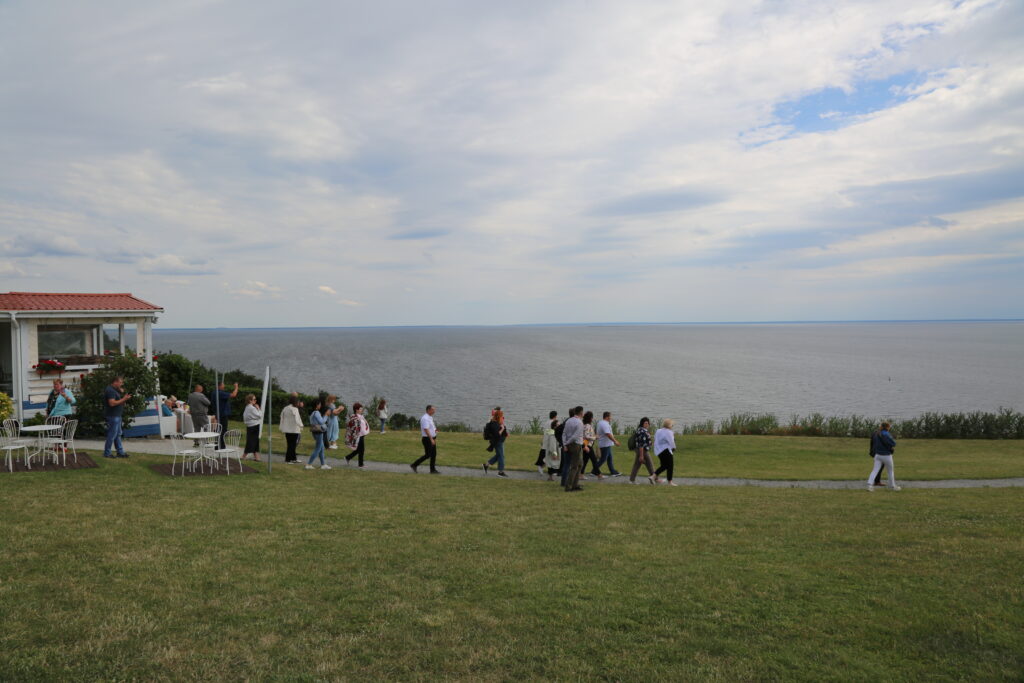
A gmina with sea and forest
The total area of the gmina is 117 square kilometers, and its large part is covered with woodland. The commune has a total population of 6,000 people. However, there are about 40 thousand people here during the holiday season.
The Międzyzdroje gmina calls itself an ideal place for sports, tourism, and active recreation. Tourists are attracted by the clear waters of the Pomeranian Bay, wildlife, therapeutic climate, and picturesque landscapes. Connoisseurs of peace and relaxation are invited to visit museums and numerous natural attractions, observation decks with a panorama of the delta, a demonstration farm of bison and natural lakes, and a historic settlement of the 10-12th centuries in Lubin.
The city of Międzyzdroje has dense development to the north of the sea coast: there are hotels, recreation centers, and houses. However, there are no private beaches, as the law does not allow this. All beaches are public, and a hotel can only rent the territory. In this case, it will own the sunbeds, but other people can use the beach freely.
There are restaurants and entertainment options on the seashore. A dense and diverse forest grows above the coast: oaks, maples, cherries, etc. A long wooden path runs through the green zone, connecting almost the entire coast. So beachgoers can walk to any sea area or restaurant not on the sand, but along a comfortable path through the trees.
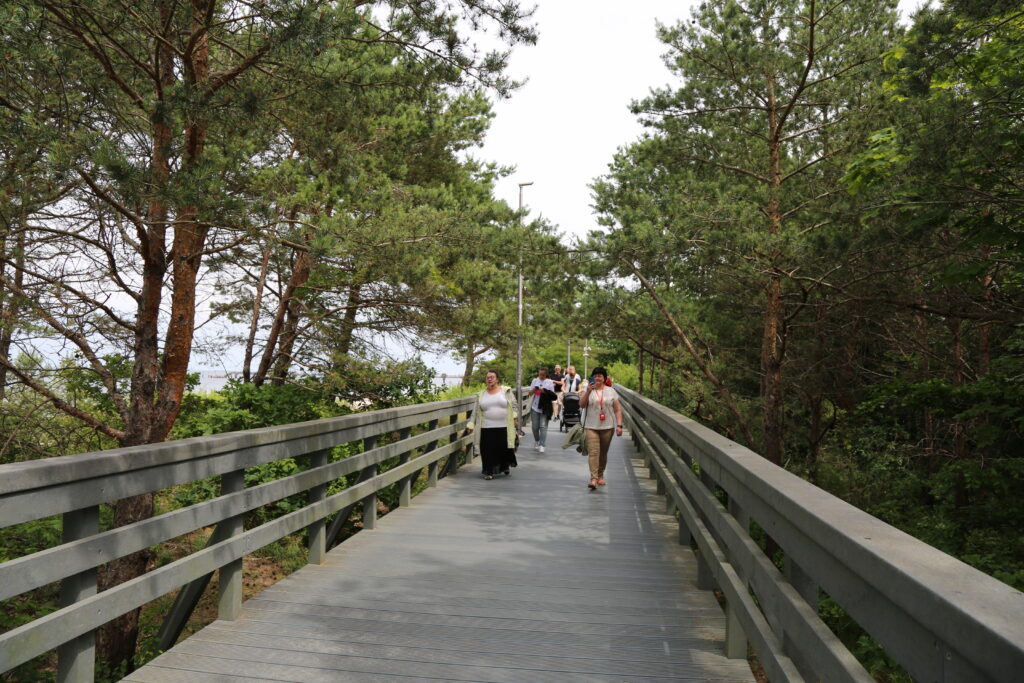
How the gmina utilized its tourism potential
The promenade, a pedestrian street with modern and historic Prussian-era buildings, leads to the seashore. They have been restored, but the original architecture has been preserved. The local authorities leased the land and vacant premises on the promenade for 30 years to develop the tourist center. However, there was a condition: the tenants had to pay 30% of the money immediately. The rest of the money was used to rebuild and decorate the tourist center. Now, there are 8 gastronomic and more than 50 retail outlets on the promenade, and a tourist train runs here. The gmina still has vacant buildings and plots to offer to investors. However, it also leaves room for its own projects. They plan to create an activity park on one of the sites.
The motto of the gmina is “miasto gwiazd!”, which literally translates to “city of stars”. The promenade leads tourists to the Alley of stars. Since 1995, 250 prominent personalities have left their handprints here, making Poland proud. Every year, a three-day festival of the same name is held here, which is another attraction for tourists.
The Międzyzdroje gmina has thoughtfully developed its tourist infrastructure. Cozy streets where you can rent a house or enjoy a coffee in peace. A promenade where tourist life is in full swing. The seashore with its elegant hotels and a wooden path for a comfortable walk among the trees. A green park with a seagull whose beak tourists rub wishing to come back here again. There are underground parking lots so that vehicles don’t spoil the overall view. It is also almost the only place in Poland with sparrows. These birds are a real rarity in the country because people are not allowed to feed any birds on the street because of the disease risk. And in Międzyzdroje, people joke that their sparrows are part of tourism and are trained to steal waffles professionally. The key tourist points of Międzyzdroje make up a large hiking route that can be followed from the city center to the seaside or vice versa.
How do people live in a tourist community?
“Our life is tourism, and we build our residents’ everyday life on this basis. But we try to make sure that the locals feel comfortable living here and do not leave us,” said Mr. Adam Szczodry, the gmina secretary.
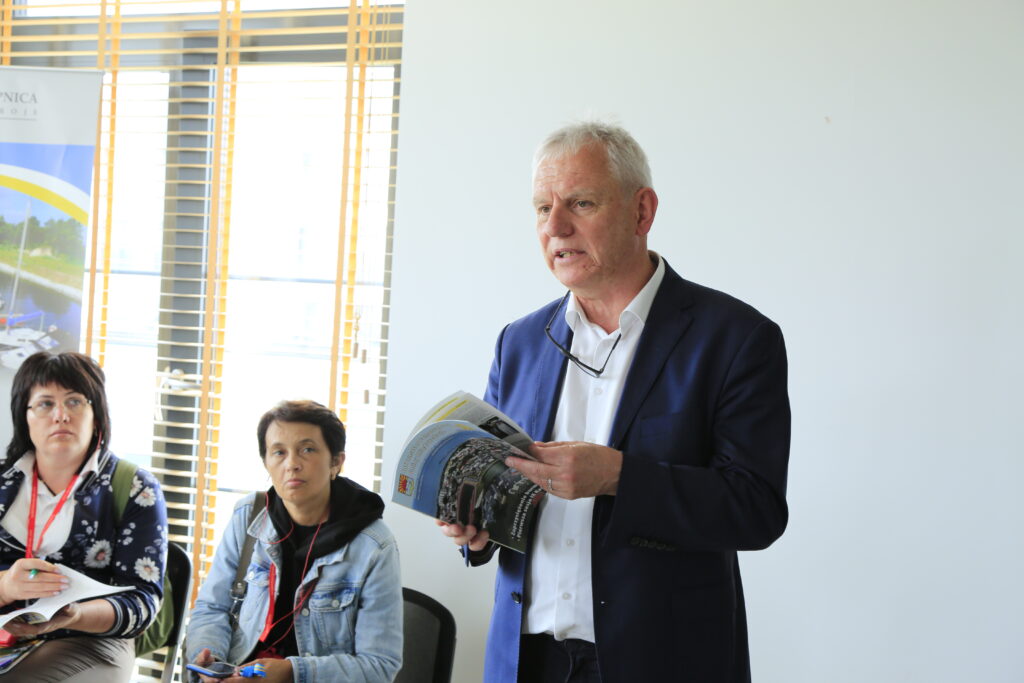
Creating conditions for people to stay here is one of the priorities of the development strategy. Local residents who work here and pay taxes are granted preferences. For example, a resident card for preferential transportation and other services. They also receive a substantial allowance for the birth of children.
For the comfort of the people, the gmina has rebuilt the city center. Previously, there was a city hall, a library, and a social welfare center, all of which were in a state of disrepair. Twelve years ago, they decided to create a new modern, inclusive, and energy-efficient building. To do this, they changed the spatial planning plan and provided for the creation of a central town hall and polyclinics nearby. Today, both public and private doctors work in the clinics and rent the premises.
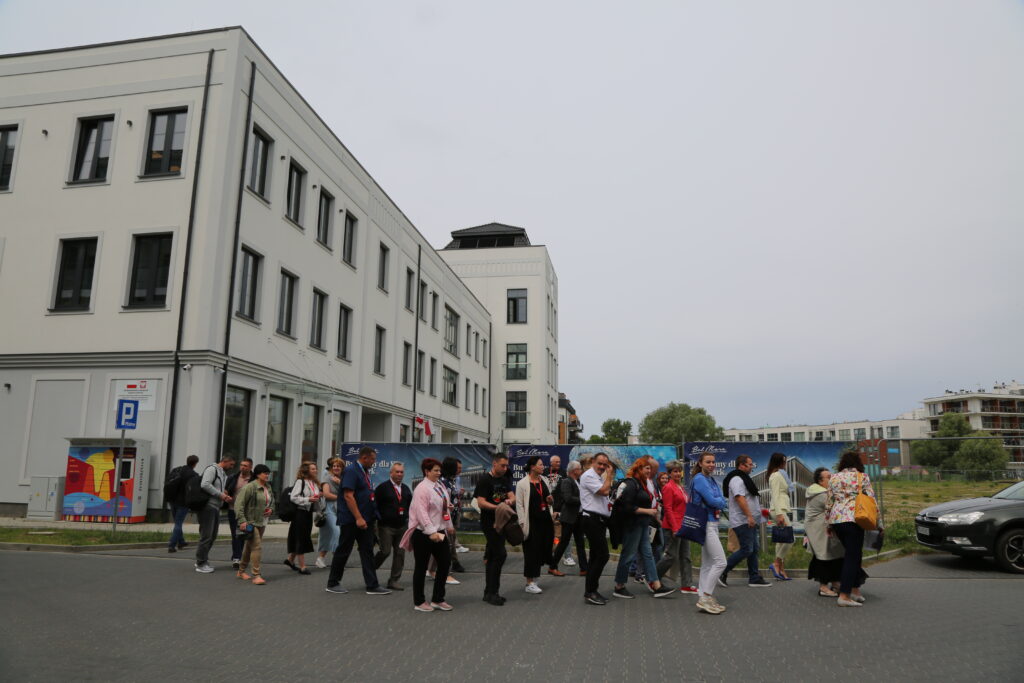
The four-story town hall had to be built on pillars due to the peculiarities of the soil. The new building houses local authorities, a social welfare center, a library, and a cultural space to promote local artists. The library in Międzyzdroje Town Hall is fully inclusive. The collection includes 55 thousand books. All of them are digitized for reading on a tablet and are dubbed so you can listen. There is an auto-lecturer for reading scanned documents. To borrow a book from the library, you don’t have to look for it yourself – you can choose it online and pick it up at a convenient time at the reception desk or at a book post office. The reading rooms host meetings with authors or just interesting events related to reading. There is also a place for workshops, where, among other things, you can immerse yourself in virtual reality.
To communicate with people, the gmina publishes a color magazine with key government decisions, announcements, and news from the life of the gmina. Mr. Adam Szczodry says that this tool is important to them because the gmina is aging, and paper news is convenient for people. The magazine is printed in 2,500 copies and distributed free of charge in public places: libraries, shops, etc. According to editor Ms. Anetta Czyżak, three people work on the gmina’s news. They receive messages from various departments, associations, organizations of the gmina, and beyond. Everything that meets the requirements and is considered useful to the residents is published in the magazine.
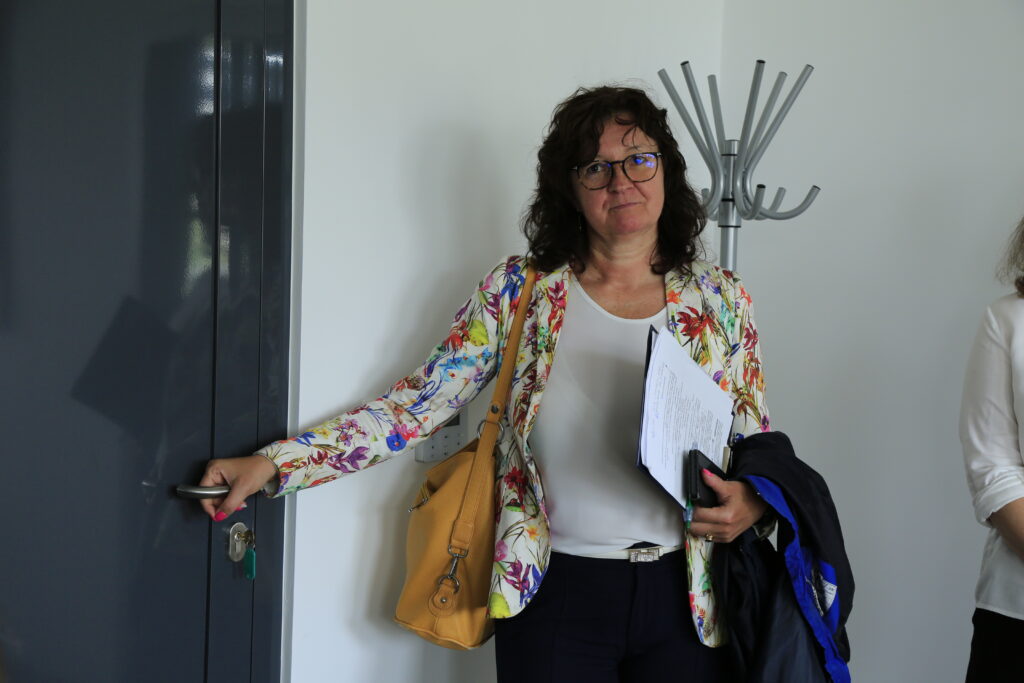
How do municipal services cope with the flow of tourists?
During the holiday season, the population of Międzyzdroje increases by more than six times. The capacity of utility systems must be designed for the peak number of people.
The gmina has its own sewage treatment plant. It is part of a water and wastewater company. The company was built on the site of an old German one. In the 90s, two biological treatment tanks were added. However, the capacity was barely enough, which blocked tourism development because the local authorities could not give permits for the construction of new hotels. In addition, the commune risked being fined by an EU inspection for polluting the ecosystem. According to Mr. Tomasz Topolski, the head of the company, some communes paid fines of millions of dollars. Such measurements are carried out regularly, and the treated sewage water that enters the water body and the soil must meet the standards.
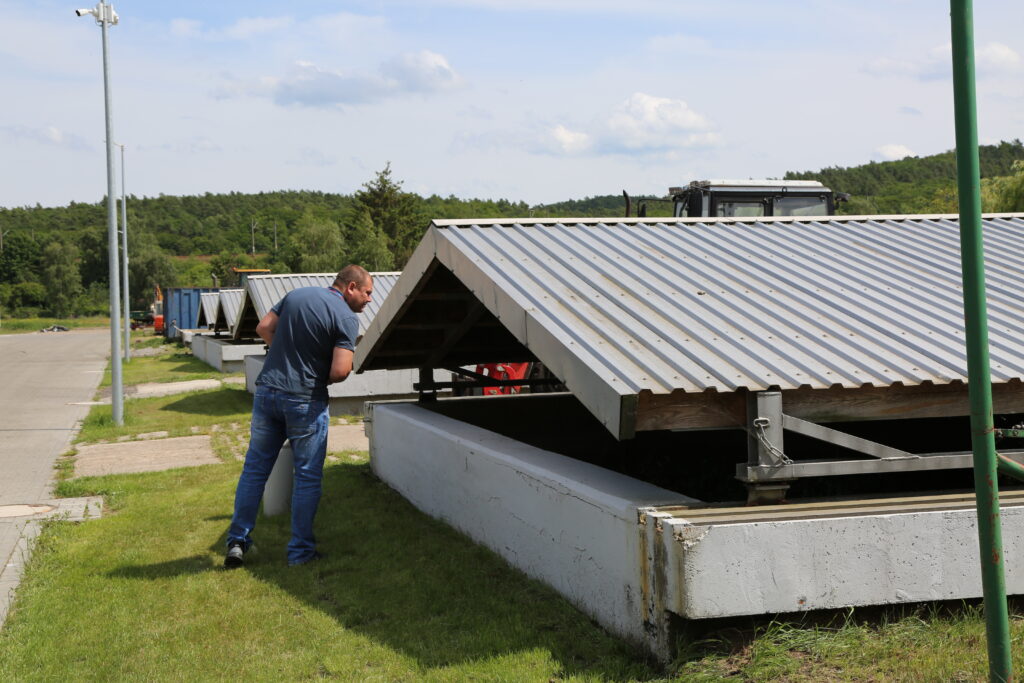
In 2015, an investment project was developed – the gmina paid for it, and the document cost about 500 thousand zlotys (equivalent to 5 million hryvnias). The modernization lasted four years and cost 58 million zlotys (580 million hryvnias). Of this amount, 40 million zlotys was non-refundable co-financing, seven million zlotys was a 5% loan, and the rest was a loan. These funds were used to completely upgrade the equipment – only the concrete walls of the building remained of the old one. As a result, the company doubled its capacity. And thanks to the improved system, the sewage water is now suitable even for watering lawns. Before the modernization, the company was a municipal enterprise. Now it is an LLC. The gmina is the founder, and the old equipment is documented as an in-kind contribution.
“The company’s old facilities could not cope with the increased load during the season. Now we are able to cope with any load. Even though we are now a limited liability company, we do not have the task of making money, so the profit of the company in the tariff cannot be too high. We have to be self-sufficient and provide quality services to people: water supply and sewage treatment. Our tariff also includes depreciation costs, so that when something breaks down, we don’t have to raise the tariff for people,” said Mr. Tomasz Topolski.
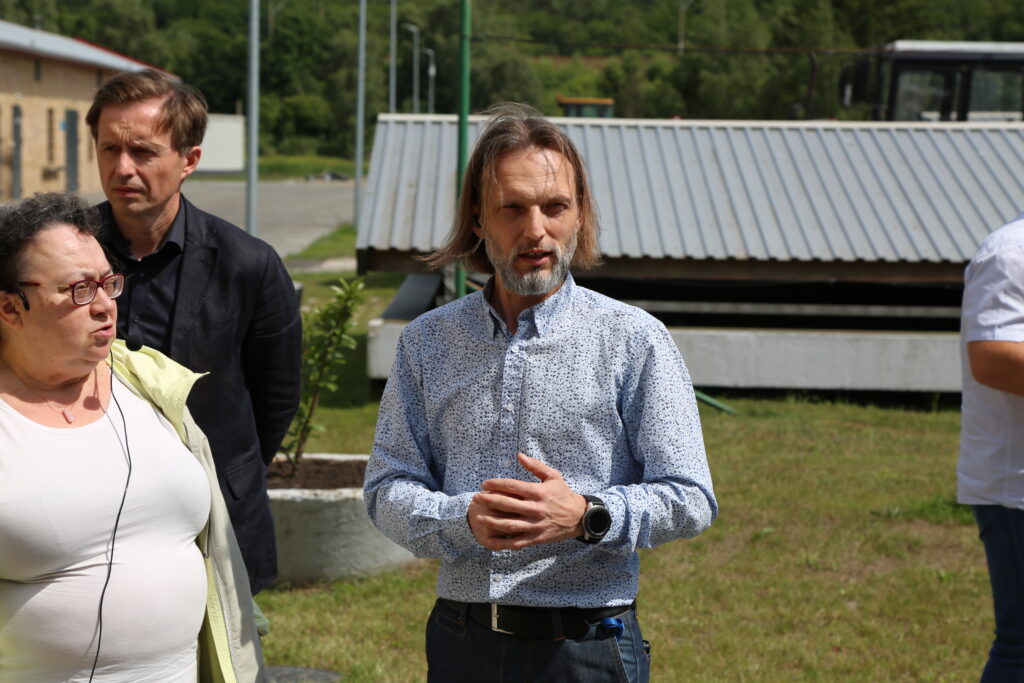
Sewage is turned into products for sale
Only 2% of dwellings are not connected to the centralized sewage system. They have to have septic tanks, sign a sewage disposal contract, and provide proof of timely treatment. The regularity of inspections depends on the amount of water consumed and the volume of the septic tank. A utility company or a private company hired by people brings the septic tank’s contents to a treatment plant. Here, they check the contents and issue a treatment invoice. Centralized sewerage covers 98% of homes. All this waste is treated here.
How sewage is treated at the plant:
- Solid fragments (rags, etc.) are separated, cut up, and removed at the mechanical stage.
- The next stage of treatment separates the sludge. Special components are added to it to improve its quality and dehydrated to remove excess moisture. After that, it is transported for composting and industrial fertilizer production.
- Sand is separated in a special separator. There is plenty of it because the territory is maritime, and rainwater enters the sewer system. After purification, the sand is used for road construction.
- A hypobaric air exchange system at the plant ensures that there is no odor. According to Mr. Tomasz Topolski, people are moving closer and closer to the plant and do not feel any discomfort. After all, the smell can be felt only on the days when the filtered elements are removed.
- At the final stage, a suspension is collected from the water and treated with ultraviolet light. This is not an obligatory step, but it makes the water perfectly suitable even for watering lawns. The head of the company says that they were the first to use this technology in Poland.
- There is no industrial waste here, because there is no production in the gmina. But, according to Mr. Tomasz Topolski, the system could handle it. Hazardous waste is treated on a separate route.
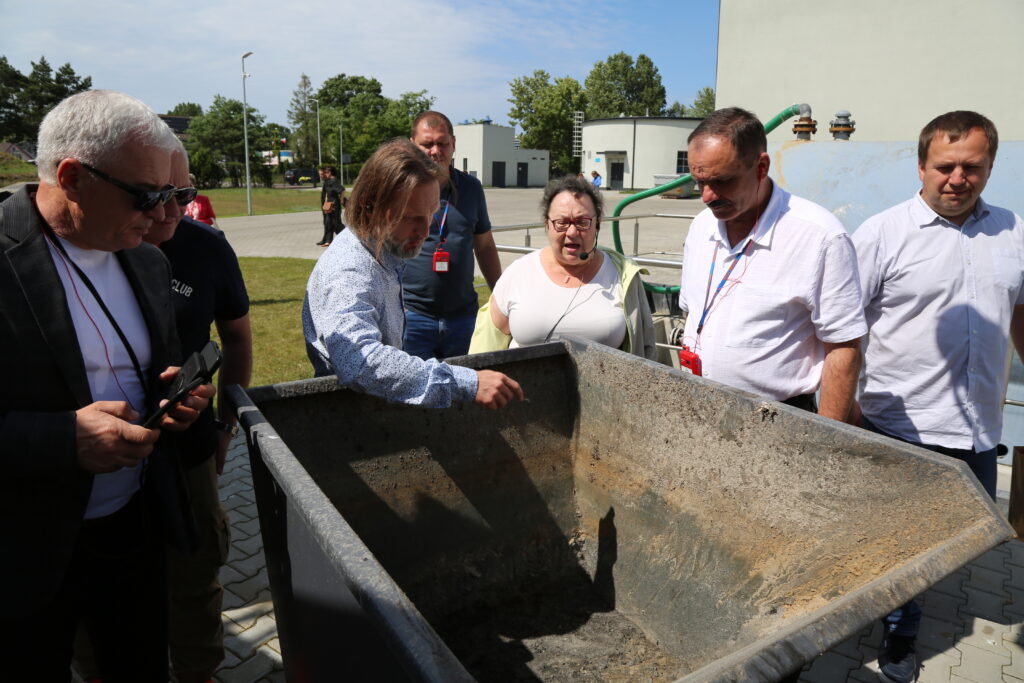
The station has 10 employees in total. Although the salaries here are above average, education is not important. Only two of the staff have a secondary education, and one has a university degree. According to the manager, education is not important for performing the duties of drivers or operators because the necessary skills are taught here.
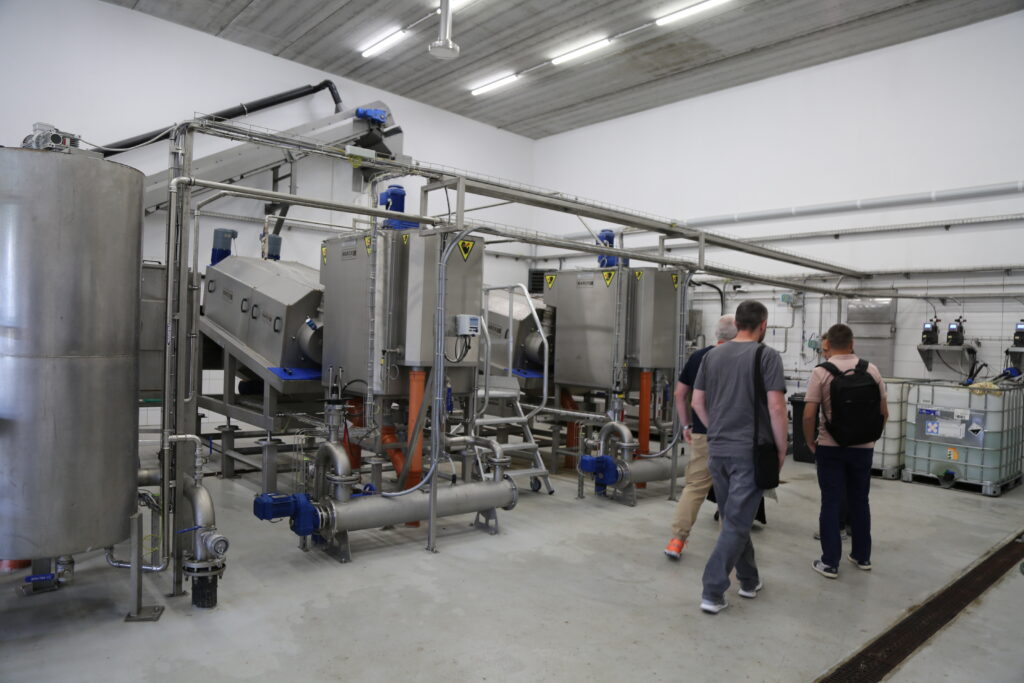
What did the representatives of Ukrainian communities bring home?
Mr. Vyacheslav Myroshnychenko, head of the military administration of the Chaplynska community, Kherson Oblast:
“I saw an interesting experience of a European state. Unfortunately, the war has made its own adjustments in our country. If we had seen all this when planning our development in a peaceful life, we would have adopted many practices and approaches to culture, tourism, etc. However, our priorities are different now, so I primarily paid attention to approaches to energy supply, water supply, and sewage. We know the experience of other communities in the Kherson region, where ruins remained after the withdrawal of Russian troops. The towns were without electricity, water, and gas supply. That is why I am bringing the experience of the local water utility to our community, because water is life. A significant part of the company’s facilities is located underground. This is very important for us because we will have to dig and build underground. Even though the community is now occupied, we work remotely: we provide services to people, and our lyceum operates online. We are also providing assistance to our military and, of course, preparing to rebuild the community.“
Mr. Vitaliy Sayapin, manager of the executive committee of the Kupiansk Сity Сouncil, Kharkiv Oblast
“Our community is located very close to the frontline, so we are not talking about a quick recovery yet. However, we should already understand how an integrated approach works because that is what we will need. Before the war, we had a powerful logistics and transportation hub with railroad tracks going in five directions, two of which were toward Russia. Now, we need to reorient ourselves and look for new areas of development. Our industrial center, along with all the enterprises, was completely destroyed. We have agricultural potential, and we can consider creating an industrial park related to agricultural product processing. We also have great recreational potential for the construction of recreation and rehabilitation areas. There is a lot of destruction in our community and everything will need to be rebuilt. In Poland, I was impressed by the approach of efficient and barrier-free planning in administrative buildings-everything is open and accessible, energy efficient, in light colors, with room to breathe. There is also infrastructure around the buildings – a parking area, recreation, and an entertainment cluster. We have to rebuild everything, and we can take into account the European experience to do it effectively.“
Mr. Maksym Burdavitsyn, Deputy Chief of Party, USAID DOBRE:
“One of the important approaches we have seen in gminas is the very common practice of associations. Almost every gmina is part of one or several associations, which, in turn, also cooperate with each other. There are partnerships between counties and voivodeships. There are joint ventures, projects, and associations of NGOs and alliances. This practice is very widely used, in particular to receive EU funding. Seeing the practice of implementing large-scale projects in partnership to solve common problems is very useful for our communities because Ukraine has legislation on intermunicipal cooperation.
We believe that we will win, and the next challenge for us will be to restore our country. Although the full-scale war is still ongoing, we already need to think about how we will rebuild our communities. Some communities need to be rebuilt from scratch because repairing them will be inefficient or impossible. Ukrainian communities will have a historic chance to make Ukraine better than it was before. We had the opportunity to see how to do this following European standards in Poland and learn about their way.
These visits are also important to pull our communities out of the challenging reality of air raids, power outages, and shelling so that people can reboot and simultaneously see new experiences with benefits. Sometimes, it is essential for them to have such a break as they are recharged, have gained experience, and will return to their communities and start working with renewed energy.“
***
The USAID Program, “Decentralization Offering Better Results and Efficiency” (DOBRE), is a nine-year program, implemented by Global Communities and funded by the United States Agency for International Development. DOBRE has worked closely with 100 consolidated communities (CCs) in ten Oblasts of Ukraine to help them realize the benefits and meet the challenges brought by decentralization. DOBRE provides technical and material assistance to CCs to help them govern openly and accountably and meet the needs of their citizens; and supports citizens’ active engagement in decision-making and policy making. DOBRE’s support encompasses strategic planning; spatial planning; financial management; public service delivery; local economic development; capacity building; good governance practices; and gender- and youth-responsive policies.
In the period 2022 – 2025, DOBRE will be working directly with at least 60 CCs of Ukraine to help them cope with the consequences of the war, recover and rebuild, and resume their trajectory of positive, sustainable development. Partners with Global Communities in the DOBRE Program Consortium include the Ukrainian Crisis Media Center; the Foundation in Support of Local Democracy, and the Malopolska School of Public Administration at the Krakow University of Economics, Poland.

